
Why do we need jet Fighters? Peter Garrison: The Impossible Turn Jim Davis: What makes a good Instructor? CAA Poppy Khoza - onto the world stage FlightCm Afr ican Commercial Aviation Edition 322 December / January 2022/23 Cover: Aeronautical Aviation SAA John Lamola – is SAA making money? AERONAUTICAL AVIATION - QUALITY WITH EXPERIENCE The Rooivalk! – full story and Flight Review Hugh Pryor: - First flight fright!
T he world’s first Super Versatile Jet takes off! Don’t be limited to pristine, lengthy runways with hours of driving after you land. Go where no jet has gone before! The PC-24’s short and unpaved runway capability gets you to your ultimate destination faster than ever before. With this jet, you call the shots. Explore more with a PC-24 – contact us now!
pilatus-aircraft.com
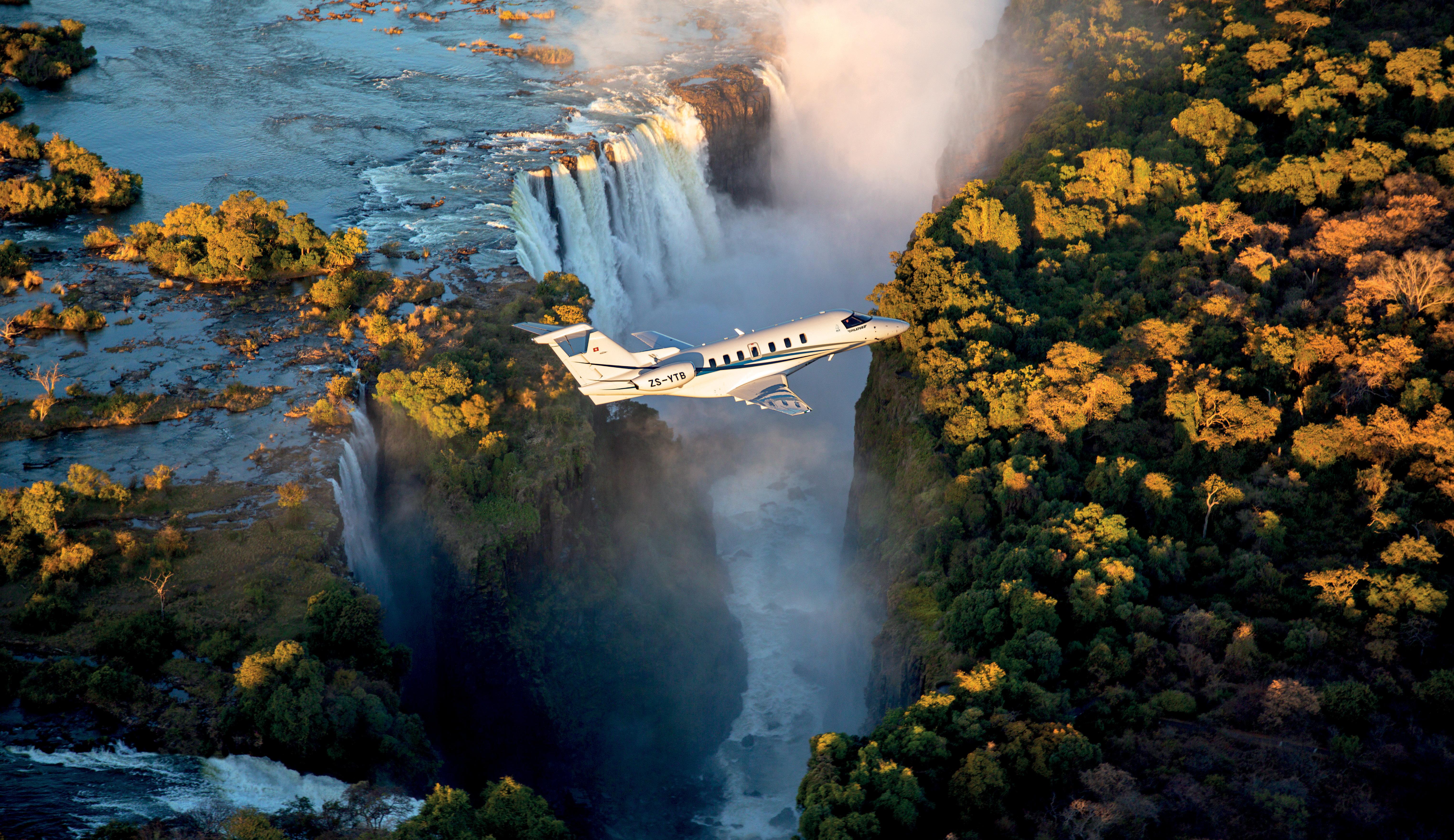
Contact Pilatus PC-12 Centre Southern Africa, your nearest Authorised Pilatus PC-24 Sales Centre for further information on Tel: +27 11 383 0800, Cell +27 82 511 7312 or Email: aircraftsales@pilatuscentre.co.za
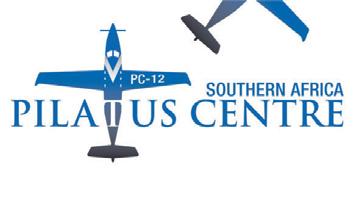
p IS THERE A CLOSER AIRPORT? YES, BUT ONLY YOU CAN ACCESS IT!




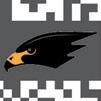











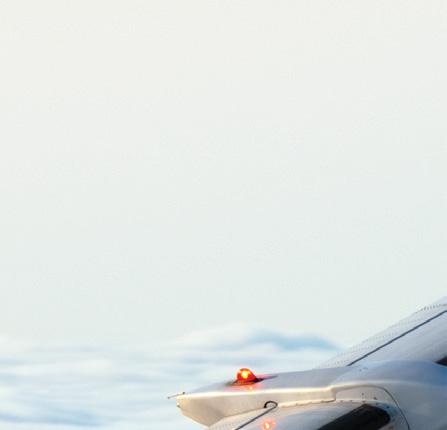
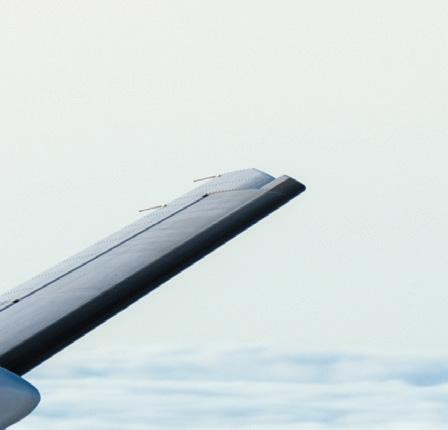




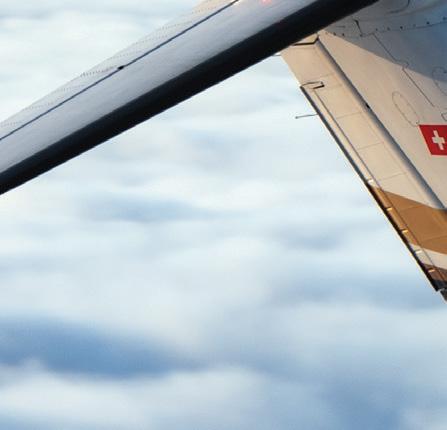

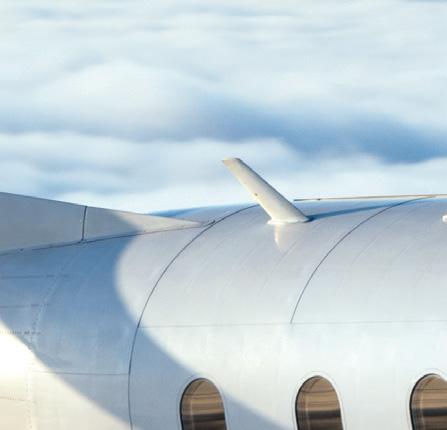

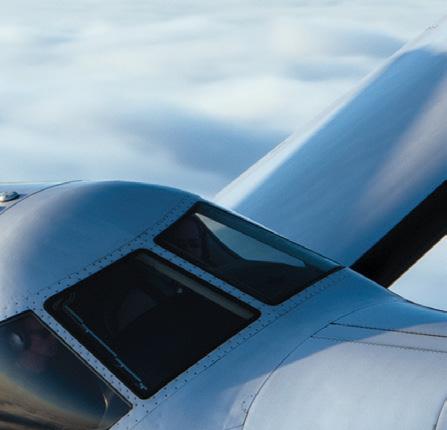
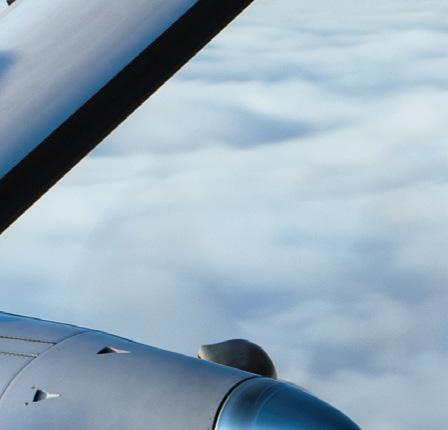


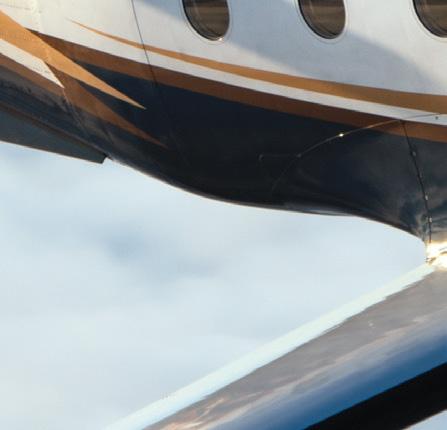

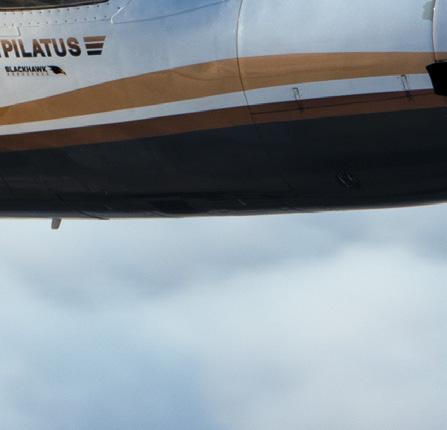
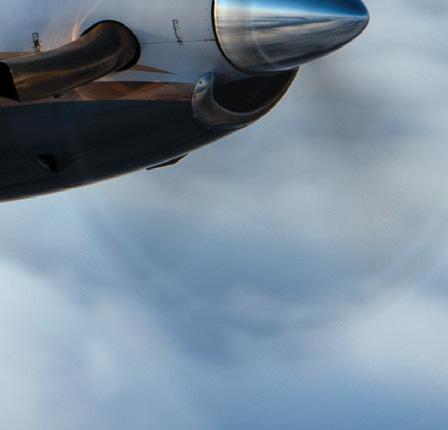


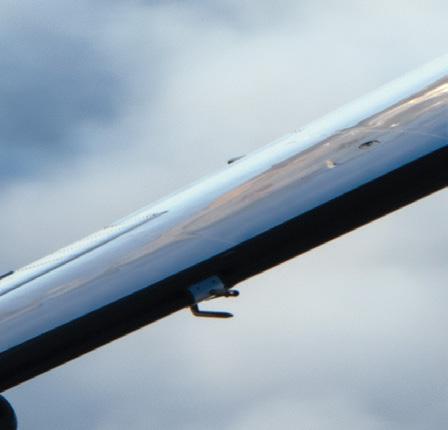
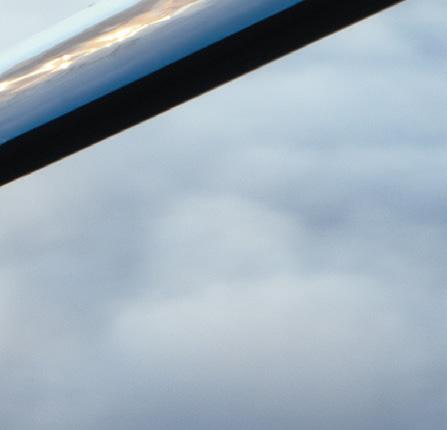


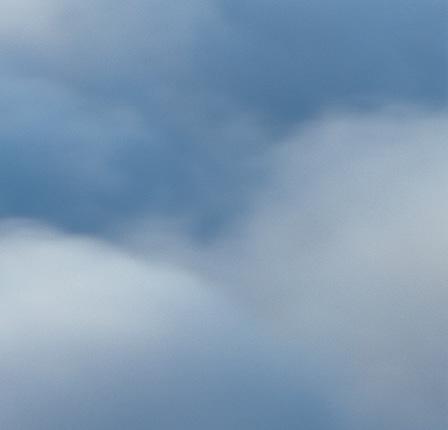
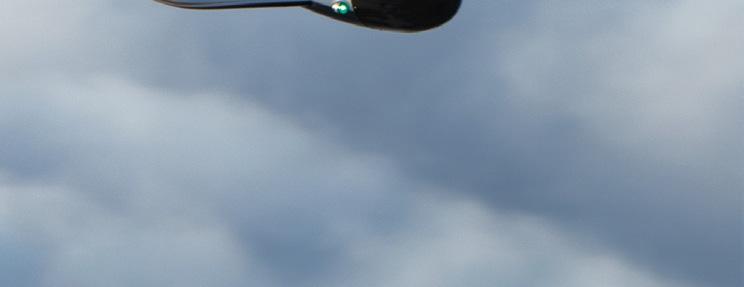
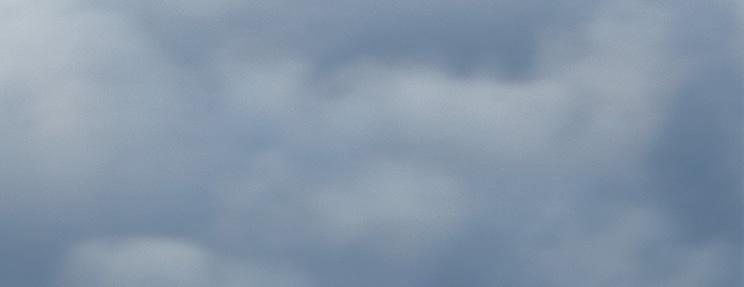
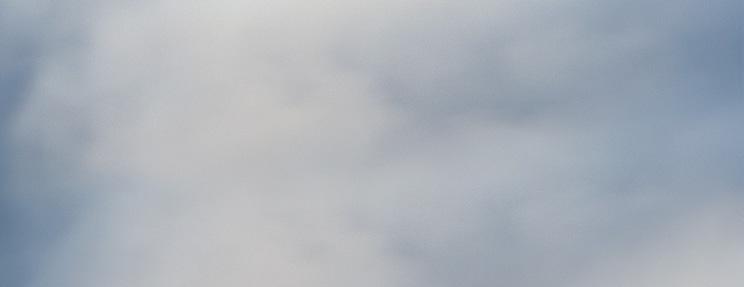





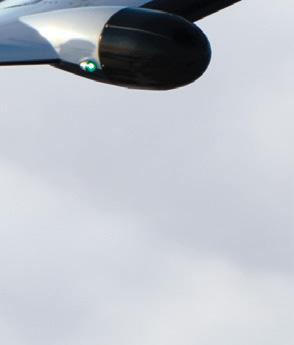




POSITION REPORT
ADVERTISING REVENUES are the lifeblood of publications such as this and post-Covid, they have been slow to recover. This has accelerated the natural move away from print and into the digital-only space. There have been unexpected benefits – most notably the circulation of SA Flyer has increased almost ten times as people around the world are accessing our unique and original content via our website, through search engine optimisation.
Thanks to a partnership with quality video producer Robin Rabec, we are also able to benefit from the swing to a digital publication platform by including specifically commissioned interviews on the website and to market these via our market-leading Facebook page. Thanks to Google and other search engines, and the reach of our Facebook page, we are driving new readers to SA Flyer and FlightCom.
But no matter how much better we have become at delivering value to our advertisers, the heart of any publication is always its content. Despite the sea change in the publishing industry, we remain true to our foundational value – of making sure we produce a publication people want to read, one that fulfils our key objective of entertaining and informing our readers.
entertaining and informing our readers
But we haven’t forgotten our loyal core of long-time followers and subscribers. We are still reaching thousands of our long-standing readership base through ‘pushing’ a downloadable pdf version of the magazine to them by email – for free.
The digital version of the magazine has had other great spin-offs, especially for advertisers. Most notably –we are able to include links to their marketing video material and have live website links to take readers directly to the advertiser’s website. In this way the reach and effectiveness of the clients’ adspend is vastly more efficient.
Fortunately, we have been blessed to have developed a core of contributors that make SA Flyer unique. I am most grateful to Jim Davis, who 15 years ago approached me as he was unhappy with the aviation magazine he was at. I am thrilled that despite the continuing weakness of the Rand, we continue to have the incomparable Peter Garrison’s regular thoughtprovoking columns. For the past five years we have been privileged to have Darren Olivier’s expert analysis on African defence.
I am honoured too to have excellent access to the key leaders and decision makers in the aviation industry. I am grateful to all airline CEOs who always take my calls at any time of the day, no matter how busy they are. I find the insights provided by these industry leaders fascinating and wonderfully informative. And I trust our readers do too. Which makes SA Flyer and FlightCom a key source of reliable industry intelligence.
From the low point of Covid, the industry will boom as it makes up for lost ground. I wish all our readers and loyal advertisers a wonderful festive season and a happy and prosperous new year.
j
Guy Leitch
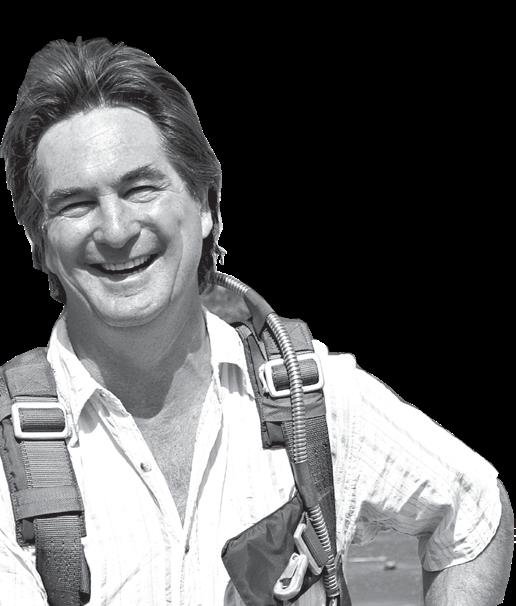

Like a greatest hits album for the garage.
The Cayenne Platinum Edition.
Composed with passion, the perfect mixture of the best-loved features and exclusive design highlights. Fascination down to the smallest detail. The Cayenne Platinum Edition leaves nothing to be desired and is ready to fully inspire you. Discover more: www.porsche.com/cayenneplatinumedition

Porsche Centre Johannesburg Corner Witkoppen and Wroxham Road, Paulshof Telephone 011 540 5000 www.porschejohannesburg.com
Porsche Centre Cape Town Corner Century Avenue and Summer Greens Drive, Century City Telephone 021 555 6800 www.porschecapetown.com
Porsche Centre Umhlanga 49 Meridian Drive, Umhlanga Ridge Town Centre, Umhlanga Ridge Telephone 031 514 3000 www.porscheumhlanga.com
Porsche Centre Pretoria 452 Botterklapper Street, Off Lynnwood Road, The Willows Telephone 012 816 7600 www.porschepretoria.com
Cayenne S Platinum Edition: Combined fuel consumption: 9.7 l/100 km; Power: 342 kW (440 hp); Torque: 550 Nm; 0-100 km/h: 4.9 seconds



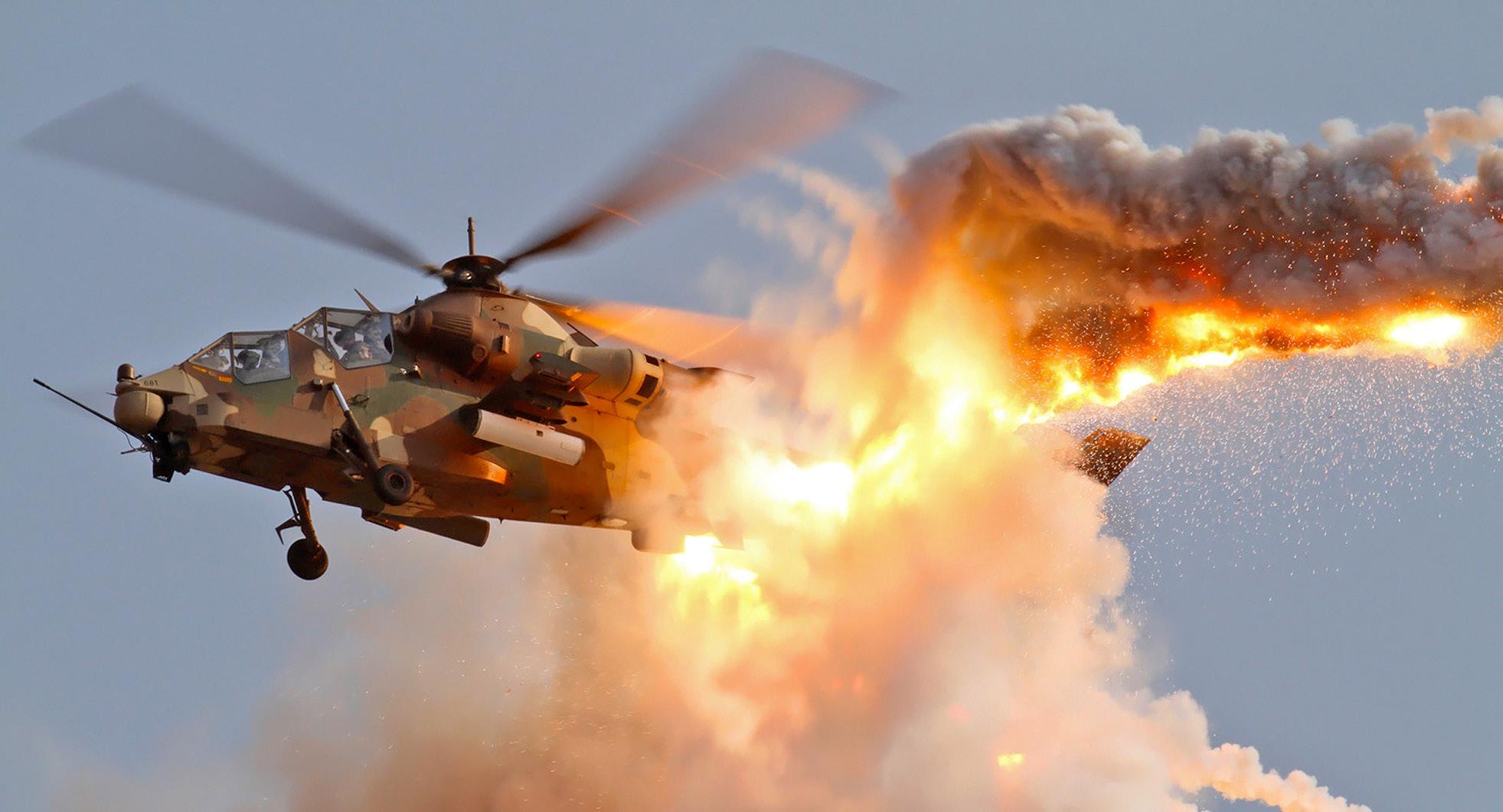
COLUMNISTS CONTENTS FLIGHTCOM 06 Bush Pilot - HUGH PRYOR 16 Pilots - LAURA MCDERMID Edition 322 FLIGHT TEST REVIEW: FC 06 ROOIVALK – THE FLYING TANK! SA FLYER 16 Guy Leitch - ATTITUDE FOR ALTITUDE 24 Peter Garrison - PC-12 CRASH 34 Jim Davis - PLANE TALK 74 Jim Davis - ACCIDENT REPORT 82 Ray Watts - REGISTER REVIEW




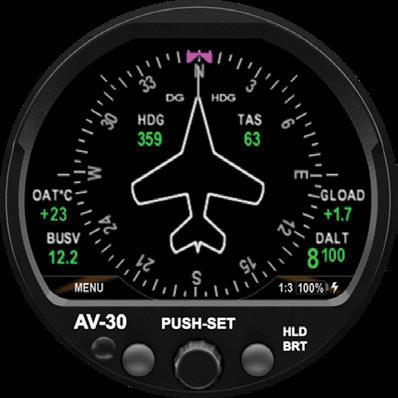
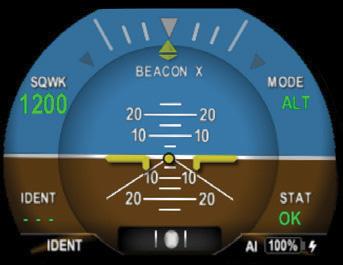

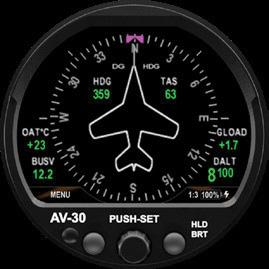
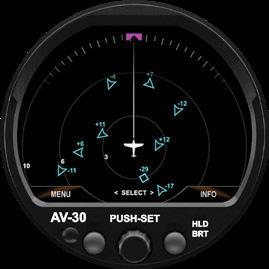
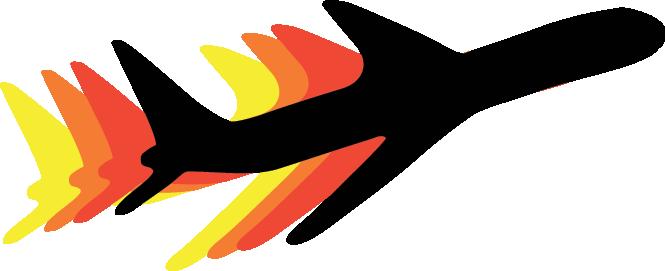
December 2022 AV LINK • WIFI/TRAFFIC AV MAG • EXT MAGNETOMETER AV-30 ADDONS: uAvionix.com/tbx EASA Approved and Now Shipping tailBeaconX combined with the AV-30 or supported third-party EFIS elevates your cockpit functionality while future-proofing your ADS-B transponder to meet US, Canadian, and future ADS-B requirements. tailBeaconX replaces your existing transponder while upgrading your rear position light. tailBeaconX CONTROLLED WITH AV-30 tailBeaconX REDEFINING THE ADS-B TRANSPONDER AV-30 HIGHLIGHTS: • PRIMARY AI • PRIMARY DG • PRIMARY SLIP • G-METER • PROBELESS AOA • LIVE ADS-B TRAFFIC Wishing you a Happy Holidays and a wonderful New Year. FATAL LOSS OF CONTROL IN THE CIRCUIT 4 Source & Supply Aircraft parts & consumables for Fixed Wing / Beechcraft / King Air / Dornier 328 / Citation / Embraers / Learjet & Home Build Aircraft. All parts come with Approved Release Certificates. 4 Locate “Hard to Find” Aircraft Parts & consumables 4 Handle Component Repairs & Exchanges 4 Distributor for Professional Tooling 4 Agent for Aircraft Spruce 4 Based next to Century Avionics, Lanseria International Airport “We Keep you Flying” Contact: Daniella Mawson Mobile no: 082 576 8853 E-mail: daniellamawson@telkomsa.net / dmaviationspares@gmail.com HANGAR 44, GATE 6 LANSERIA INTERNATIONAL AIRPORT Wehavemoved! Bestwishesfor theNewYear!

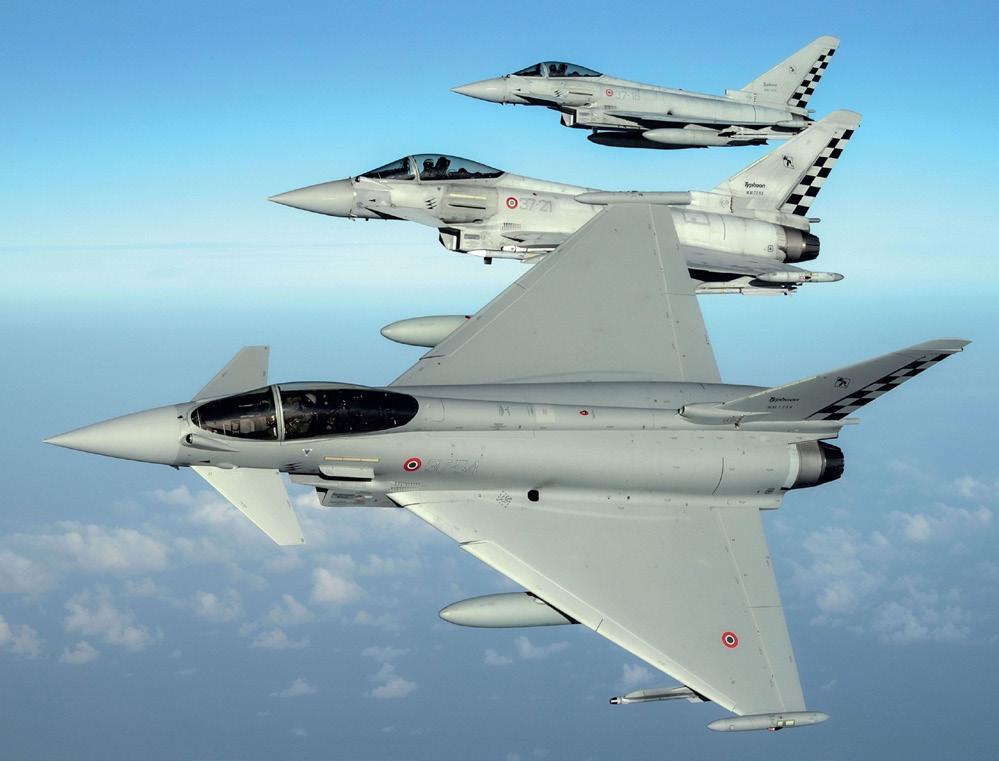
December 2022 10 14 Opening Shot 86 M & N Acoustic Register Review 94 SV Aviation Fuel Table 112 Executive Aircraft Refurbishment Events Calender FLIGHTCOM 10 AME Directory 42 ALPI Flight School Listing 43 Merchant West Charter Directory 44 AVES Technics AMO Listing 46 Aviation Directory CONTENTS Edition 322 REGULARS FEATURES SA FLYER 21 QUOTE OF THE MONTH 28 AVIONICS - AERONAUTICAL AVIATION 42 FAA NEWS 46 FLIGHT TEST REVIEW - ROOIVALK 80 BLACKHAWK SPECIALISTS - 208 AVIATION 90 NEWS - THE AEROTEL'S B727 96 WORLD RALLY FLYING CHAMPIONSHIPS 102 NEWS - AZRIEL'S NEW PARTNERSHIP 104 BILL HARROP’S CELEBRATES 108 HELI OLYMPICS FLIGHTCOM 12 Defence - Darren Olivier 22 COVID Adventure - John Bassi 26 FACE to FACE - Ms Poppy Khoza 32 FACE to FACE - Mr John Lamola 36 SANSA launches Space Weather Centre

December 2022 11 KIMBERLEY SISHEN HOEDSPRUIT MARGATE DURBAN MAPUTO (Code share with LAM) (Code share with Air Botswana) PORT ELIZABETH GEORGE BLOEMFONTEIN CAPE TOWN PLETTENBERG BAY JHB GABORONE EAST LONDON *Coming Soon TO LUSAKA TO LUANDA www.flycemair.co.za 0861 236 247
Exhilaration at first sight. Bentayga S.


Discover seductive style and addictive performance at BentleyMotors.com/BentaygaS. Contact Bentley South Africa on 010 020 4000.

December
12
2022
The name ‘Bentley’ and the ‘B’ in wings device are registered trademarks. © 2022 Bentley Motors Limited.
BENTLEY SOUTH AFRICA
Power: 404 kW (550 hp); Torque: 770 Nm; 0-100 km/h: 4.5 seconds; Maximum speed: 290 km/h. Priced from R4 875 000 including a 3 year/100,000 km Driveplan

S
Model shown: Bentayga
NIC SOUTHON is a sport pilot based at Morningstar in Cape Town. A few years ago we featured his Christen Eagle biplane – now he has a single-seat DR107, One Design aircraft which he regularly uses for aerobatic thrills.
Nic mounted a Gopro 360 camera on his left wingtip and captured this dynamic wide-angle image over Bloubergstrand with the iconic Table Mountain behind.

December 2022 14
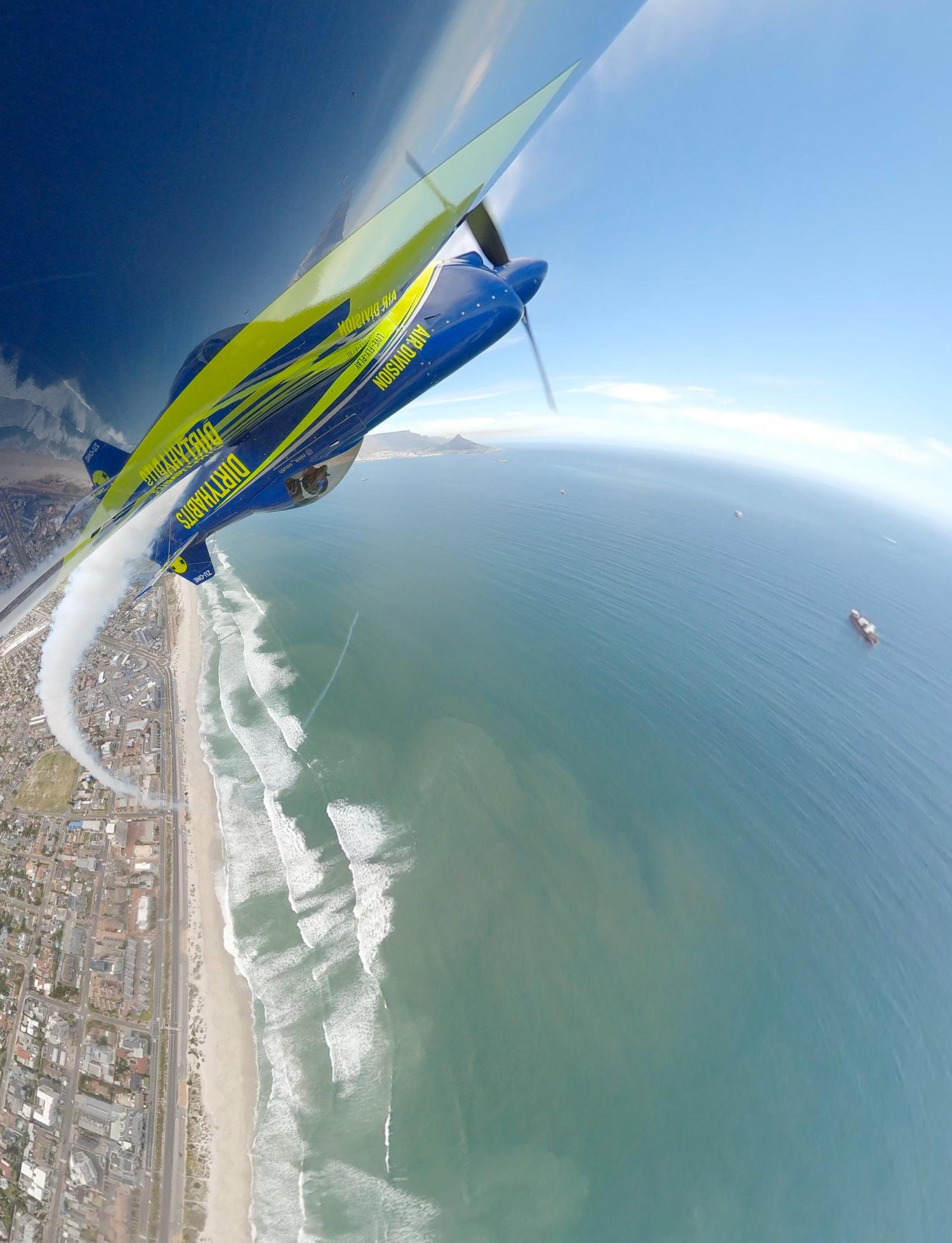
December 2022 15 Send your submissions to guy@saflyermag.co.za
2022 Winners and losers
General Aviation’s Winners and Losers.
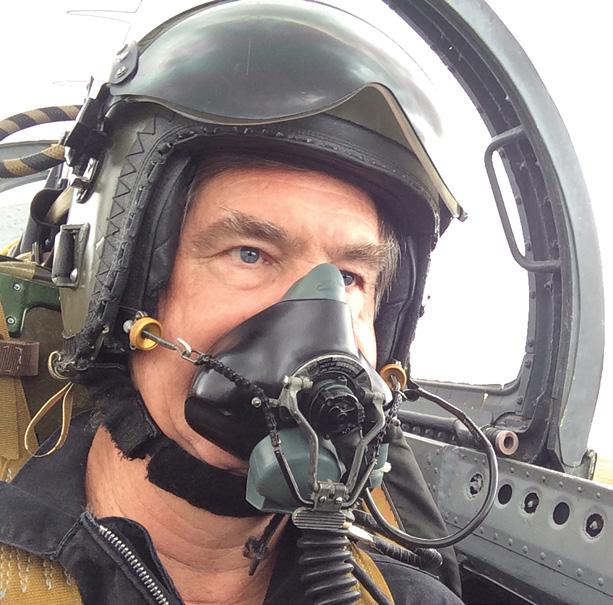
Big winners have been general aviation aircraft owners. One of the surprises for me has been the huge increase in the value of our ancient general aviation fleet. It’s now possible to sell a clapped-out old Cessna 172 for well over R1 million, and I was astounded to see a secondhand RV-8 going for almost R5 million.
The good news for pilots and flight schools is that the longawaited pilot shortage seems to have finally arrived. The most immediate beneficiaries are those pilots at airlines that are already experiencing pilot shortages. Those pilots are demanding massive wage increases and are going out on strike if they don't get them. The pilot shortage, coupled with the general lack of ground support staff, has constrained much of the airlines’ recovery.
A big win for Cessna is its new twin turboprop cargo hauler, the SkyCourier, which received its FAA type certificate - after 2,100 hours of flight testing.
After it's long gestation, the Beechcraft Denali is flying. I’ll chalk it up as a qualified win for Textron. The second prototype first flew in June, yet progress for the all-new aircraft and engine is painfully slow. At the NBAA BACE key industry expo, Beechcraft still only sent a fuselage mockup of their hoped-for Pilatus PC12 beater.
The race between Bombardier and Gulfstream stepped up a notch when Gulfstream launched their biggest bizjet, the Gulfstream 800, which first flew in June. The size of the market demand for these U$80 million jets will never cease to surprise me.
A big loss to general aviation was the construction of the last Learjet, which rolled off the production line in June.
At the other end of the scale Sling Aircraft are once again big winners: in November Sling Aircraft celebrated its 1000th sale. (This milestone actually happened in March 2022).
The Sling Aircraft Factory boys yet again got away with their death-defying exploits. They flew not just one, but three, Sling High Wings to
December 2022 16
ATTITUDE FOR ALTITUDE: GUY LEITCH
pilot shortage seems to have finally arrived.
It has been a surprisingly full year in aviation. Both in the humble corridors of general aviation and at the airline industry level.
Oshkosh Airventure. The odds of a fatal disaster were obviously 3 times greater, yet all the flights went off without a hitch. Full credit to Sling, and to the Rotax 915iS engine, although luck was required as the complex and hardworking 915iS engine has had more than its share of failures.
demand in the unlikeliest GA country; Iran. Europe is suffering a plague of Rotax 912 engines being stolen off planes and then sold to Iran to power their ‘kamikaze drones’, spreading death and destruction across the Ukraine.
Down The Toilet – and Into The Swamp?
Helicopters And Drones
The world lost a giant when Frank Robinson, the founder of Robinson Helicopters, died aged 92.
Earlier in the year the tough economic conditions took their toll and Enstrom Helicopters finally folded after 62 years.
The development of the passenger carrying drone dream continues apace, with them regularly making headlines, but in reality, nothing actually seems to happen. They are still far from ever being approved for manned flight, especially in VFR airspace. Talking about drones, it seems that the Rotax engine is in
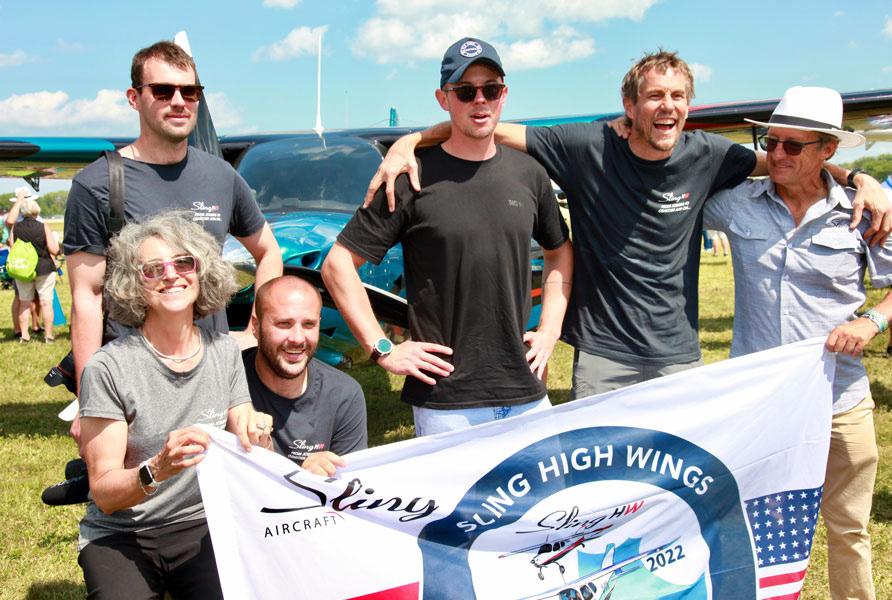
Given that the rest of South Africa seems to be steadily heading down the toilet to become one of Donald Trump’s infamous ‘shitholes’ with endless loadshedding and now water supply failures, plus the downgrade of our credit status to that of junk and the looming threat of a grey listing for investment security, it’s a small ray of light that the SACAA continues to be world-class in terms of its ICAO score, and most recently, in an FAA audit.
While we all love to hate our CAA as the regulator and traffic cop, there can be no denying that Ms Poppy Khoza is a big winner on the world stage. Being unanimously elected
December 2022 17
Sling returned to epic flights with 3 High Wings flying to Oshkosh.
President of the latest ICAO General Assembly and having South Africa re-elected to the Governing Council is a real accomplishment. Despite the naysayers, she and her team are doing a great job in not just maintaining, but improving South Africa's standing in terms of aviation regulation. It’s just a pity her actual organisation is overstaffed and yet painfully slow, to the extent it stifles growth, particularly in the drone and charter industry. And let’s forget the disaster of ZS-CAR crash at George; the CAA’s own huge compliance failure.
The Airline Industry
Globally, the airline industry has almost recovered from the Covid pandemic with airlines reporting seat sales above 80% of 2019's level. Even more impressive are the yields, which are producing such big profits that some airlines, particularly domestic South African carriers, should recover all their losses in a single year.

However, Africa is once again the laggard in that its bounce back from Covid has been far slower, partly due to restrictions imposed by African governments to protect their own airlines. Will any government, other than South Africa, ever take open skies and liberalisation seriously?

December 2022 18
Textron's Denali is moving slowly towards certification.
Cessna's Sky Courier 'twin Caravan' is a certified game-changer.
South Africa’s Airline Battleground
Under pressure from government and the bottom line, SAA played dice with the lives of its trusting passengers when it made safety negotiable by flying an Airbus A330-300 with a load of 209 passengers and crew back from Abuja, despite having water in the fuel. There must have been white knuckles in the cockpit when, on a dark and stormy night over the Kalahari, an engine started surging due to the water contamination. Coming barely a year after the infamous alpha-floor vaccine flight incident, SAA was a big loser.
The biggest casualty of the long running airline war in South Africa was Comair, which could not survive long enough to benefit from the massive post-Covid boom. The other big loser was Mango, which despite being a fundamentally sound business proposition, was quietly allowed to die, presumably in favour of Lift, the Takatso Consortium's own airline.
Talking about SAA, the Takatso Consortium deal is claimed to be still happening. Contracts were signed in February and all that we are
waiting for is regulatory approval. However, this is extremely unlikely to happen before the promised deadline of end of March 2023. I have to wonder whether these unrealistic deadlines are simply not part of a massive smoke and mirrors conjob of the public.
Gidon Novick, the CEO of the Takatso consortium, resigned from the Harith Board and threw the whole Strategic Equity Partner privatisation of SAA into question. If it falls apart, the loser will once again be us - the longsuffering taxpayer.
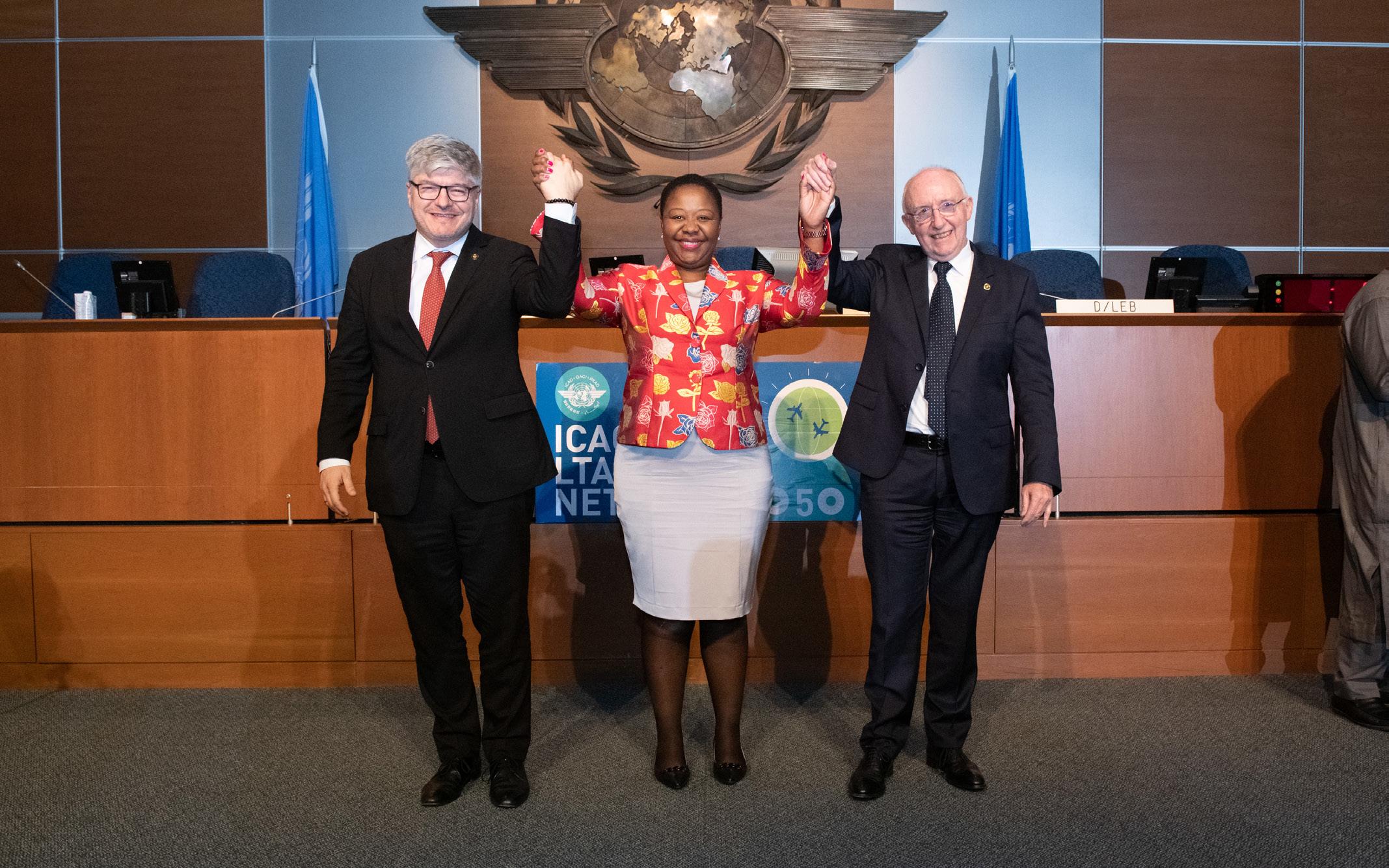
Southern Africa travellers and tourism is a big loser. Travellers lost three key airlines: Comair with its two brands: British Airways and kulula. com. Also, Mango as the ‘no-frills’ low-cost carrier of SAA, was liquidated, and earlier, SA Express, which was mismanaged all the way into an early grave.
The loss of these three airlines took 50% of the available seat capacity out of the market and is a key reason behind the sky-high ticket prices we are enduring in South Africa. Losers are the travel and tourism industry as hotels and guest
December 2022 19
SACAA Director Ms Poppy Khoza as President of the ICAO General Assembly. Image - ICAO.
A colossal loss - but the An225 may yet re-emerge.
houses are still frantically discounting to lure travellers.

The big problem for the airlines, apart from a shortage of planes, is the spike in the oil price. This has given airlines the excuse to double their ticket prices and then redouble them for the sake of recovering their losses over Covid. A ticket between Johannesburg and Cape Town that used to cost R700 now costs around R3500.
A colossal loss of a different kind was that of the huge Antonov 225 Mriya which was destroyed in its hangar by the Russia-Ukraine war. There is hope that an even better one may emerge from the ashes.
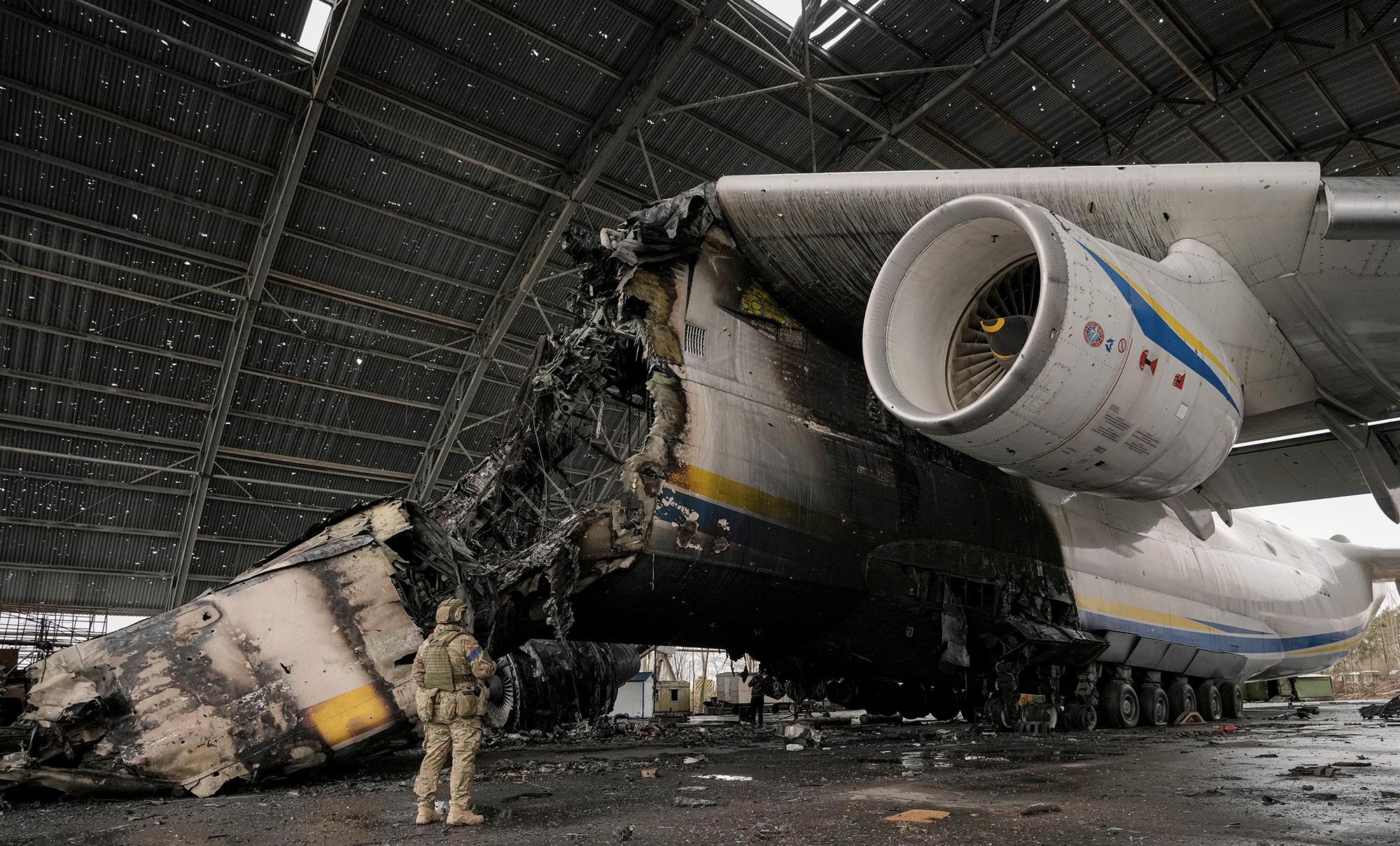
In March the world closed its airspace to all Russian aircraft. The pictures coming out of Russia of Aeroflot flying airliners with far too many systems inoperable due to the inability to provide parts maintenance is truly scary. Minimum Equipment Lists have been relegated to the shelf of quaint old-fashioned standards in Russia.
Airbus Wins – Boeing Loses
The Airbus A321XLR first flight in June raised the single-aisle bar ever-higher beyond the much-diminished Boeing’s reach. After its troubles with the 737 Max and 777X, Boeing has now given up on its long-needed response to the market conquering Airbus A321. For a long while it was called Boeing’s MOM (for ‘middle of the market’). Now they’ve shelved the whole idea and left this huge sector of market all to Airbus.
The sideshow award must go to American Airlines which surprised the world by placing an order for 20 Boom Overture supersonic airliners. However, the lack of any likely engines for this supersonic transport suggests that this is order is not much more than an elaborate publicity stunt.
From this very mixed bag of winners and losers it will be fascinating to see how 2023 unfolds. I wish you all the best in this exciting industry. j
December 2022 20
guy@saflyermag.co.za



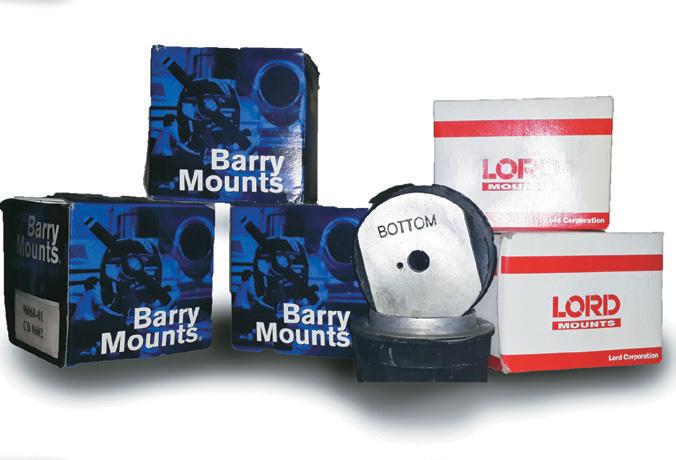

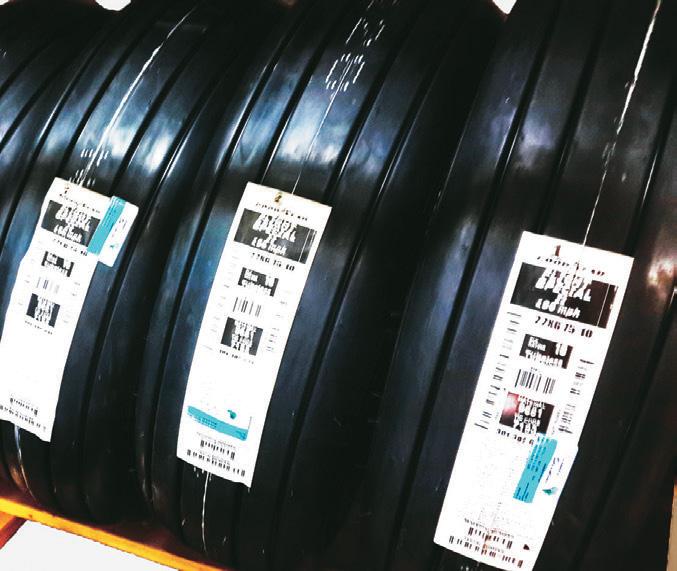
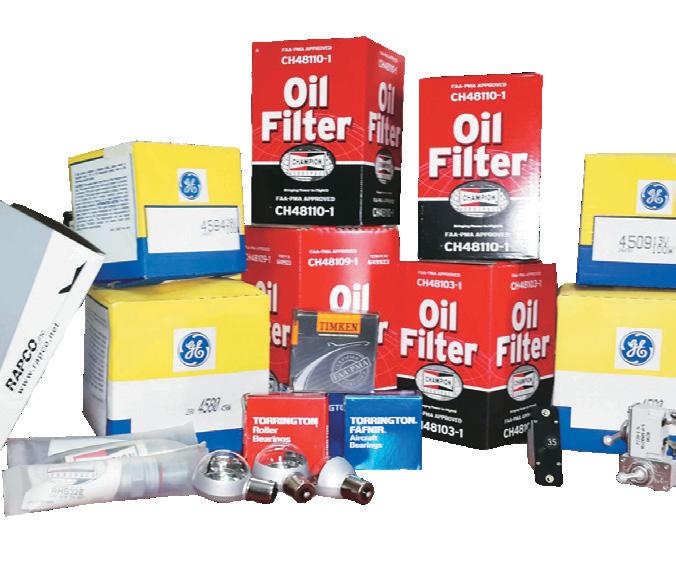

For
God
us to fly,
to get to the airport.” Jonathan Winters QUOTE THE MONTH collin@velocityaviation.co.za Visit us on: www.velocityaviation.co.za Contact us and get your quote today! AIRCRAFT PARTS We have moved to Gate 9 B Lanseria International Airport Velocity Aviation Building Best wishes for the holidays!
all the frustrated Christmas travellers struggling to and through airports, Jonathan Winters wrote; “If
had intended
He would have made it easier
The new Urus Performante is the extreme evolution of its predecessor. The most exclusive model in the Urus family raises the bar and sets a new benchmark with elevated levels of performance, lightweight, aerodynamic design and sportier driving dynamics. Lower, wider and lighter by 47 kg, thanks to extensive use of lightweight carbon-fibre components, the Urus Performante’s performance is unyielding: 490 kW (666 PS) of power, acceleration from 0-100 km/h in just 3.3 seconds and a top speed of 306 km/h. For bar raises only.

Sold with a 3 year/100,000 km Driveplan at no additional cost.



LAMBORGHINI JOHANNESBURG Authorised Dealer Cnr Melrose Boulevard & Corlett Drive, Melrose Arch, Johannesburg Phone 010 020 3680 / 082 907 0222 www.johannesburg.lamborghini LAMBORGHINI CAPE TOWN Authorised Dealer 14 Dreyer Street, Claremont, Cape Town Phone 021 419 0595 / 076 611 2437 www.capetown.lamborghini
Bonanza
MUCH OF MY DISCUSSION centred on a paper about “turnbacks,” as these often illfated attempts are called, written in 1982 by a midshipman at the US Naval Academy, the dashingly named Brent Jett.
Jett, who went on to become a captain and a multi-mission astronaut and retired from NASA in 2013, attempted, on the basis of calculations and simulator tests using pilots of various skill levels, to determine the best technique for turning back and to understand when and why a turnback is likely to succeed or fail. It was an unorthodox project, given that the FAA’s advice, repeated by many other authorities, is to land more or less straight ahead regardless of terrain. Any landing in control, however unfavourable the ground, is thought to be better than a stall-spin.
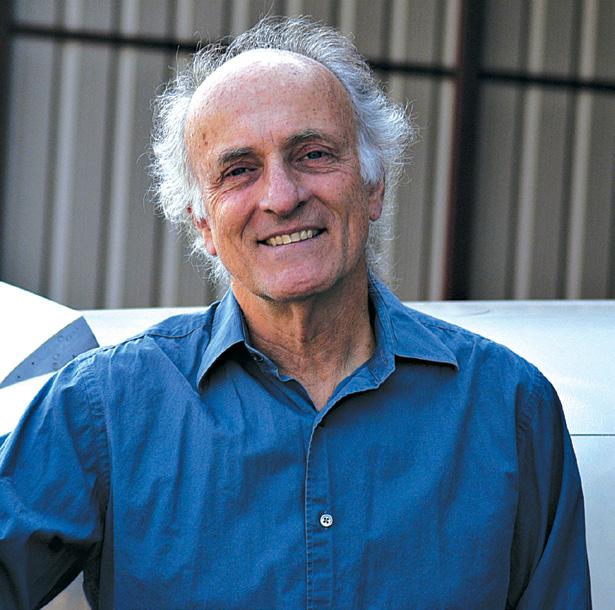
a separate online posting, had “rather muddied the waters.” A copy of this screed tumbled out of one of my file cabinets the other day and, since the topic of turnbacks is ever fresh, I thought I should give it its belated due.
the dashingly named Brent Jett
The gist of Jett’s paper, which can still be found on line (search for “Jett turnback”), was that average pilots could turn back successfully most of the time, given sufficient altitude to start with. No surprise there, although, tellingly, "sufficient altitude" was not defined. More concretely, the best bank angle to use was 45 degrees and the best speed “just above the stall.”
I wondered what “just above the stall” meant. “Since most stall warning horns are set between 5 and 10 kts above stall,” Rogers replied, “practically this means with the stall warning horn blaring or the stall warning light bright.”
After my article was published, David F. Rogers, Ph.D., an instructor at the Naval Academy, sent a long letter with “corrections, comments and additions” to my article, which he said, in
I had written that Jett’s simulator turns were conducted with full rudder “in recognition of the fact that a desperate pilot might try to hurry
December 2022 24
I once wrote an article about a high-time
pilot who tried to return to the runway after a loss of power after takeoff. As too commonly happens in such cases, he stalled and crashed.
PETER GARRISON
his ... turn with extra rudder.” No, Rogers said, this was not the reason; it was to bring the nose around faster. This seemed to me to be a distinction without a difference, and in any case not a very good idea. Rogers acknowledged that this technique might result in a spin.
I said that minimum sink rate, not maximum L/D ratio, was the main consideration. That was incorrect, Rogers said; the real issue was energy management. I guess I should have said that the target speed was not the “best glide speed,” as you might suppose, but instead something closer to the “minimum sink speed” (but even lower).
I reported that Jett’s experimental subjects had a 75% success rate with 45-degree banked turns and a 95% success rate for 30-degree banked turns on the first try. “What Garrison failed to mention,” Rogers complained, is that when pilots were given two additional opportunities to try the 45-degree turn their success rate rose above 90%. You don’t get second chances in real life, but Rogers’ point, that if pilots practiced this manoeuvre their chances of successfully completing it would be improved, was well taken.
The Possible ‘Impossible’ Turn
I wondered whether an angle of attack indicator would be helpful. Rogers objected that angle of attack indicators may give faulty indications in uncoordinated flight. Be that as it may, I cannot see how the absence of an angle of attack indicator would be preferable to the presence of one.
In 1995 Rogers published a paper of his own, entitled “The Possible ‘Impossible’ Turn”, in which he studied the turnback question from a mathematical standpoint. He modelled the turn under various conditions of wind, runway length and starting altitude, and plotted results as a “footprint” of points on the ground that could be reached by the gliding aeroplane.
Given a sufficiently high starting altitude –Rogers used 650 feet for his example aircraft, a Model 33 Bonanza - to permit either a teardrop-
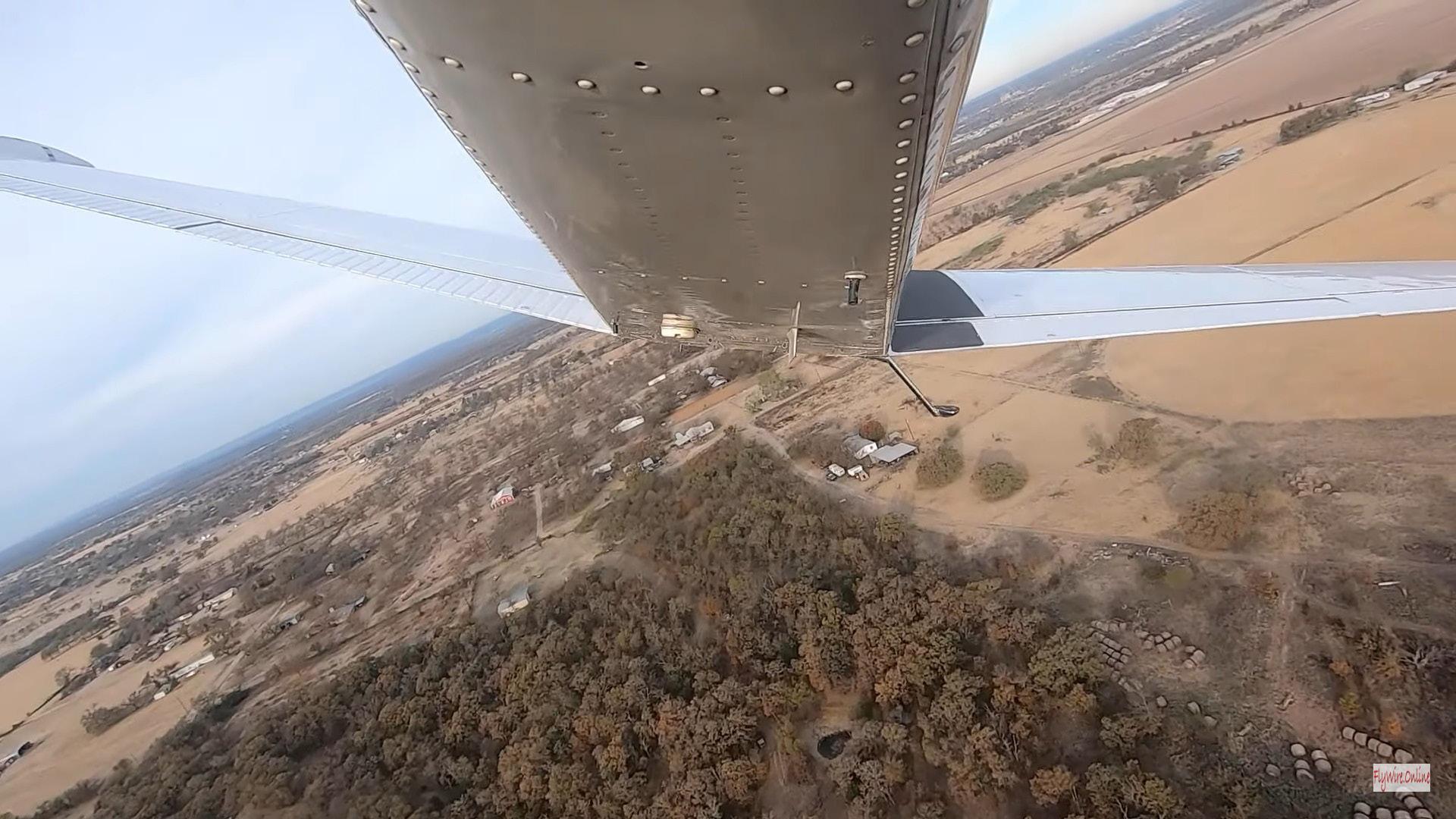
December 2022 25
Testing in Bonanzas showed the 'impossible turn' is possible if practiced.
shaped turnback and downwind arrival or a 360-degree turn, it is the wind that determines whether the aeroplane can land back on the runway. In fact, it may undershoot or overshoot, depending on wind conditions, pilot technique, and the distance from the runway at which the power loss occurs.
a
The recommended technique is the same as the one in the Jett paper: a 45-degree bank and a speed, for the purposes of the simulation, five percent above the banked stalling speed. Since the stalling speed in a coordinated 45-degree bank is about 1.2 times the level stalling speed, the target speed in the turn is actually 1.2 x 1.05, or about 25 percent higher than the level-flight stalling speed. Rogers recommended a teardrop turn of 210 degrees in one direction followed by a 30-degree turn in the other. As a precaution, he would have you climb initially at the best angle, not best rate of climb, speed, in order to

gain as much altitude as close to the airport as possible.
banked turn with the stall horn blaring
Rogers compared his results with those obtained using a different technique –270/90 turns in a 35-degree bank at 1.3 times stalling speed - recommended by another writer, John Eckalbar, in a 1992 edition of the newsletter of the American Bonanza Society. Rogers concluded that, using his recommendation rather than Eckalbar's, “the required runway length for successful completion is reduced by approximately a factor of eight.”
Rogers took Eckalbar to mean 1.3 times the banked stalling speed, which would be nearly 1.5 times the level stalling speed. Since speed is the principal determinant of success in Rogers’ calculus, that interpretation is very prejudicial to Eckalbar’s case. I take Eckalbar to have meant
December 2022 26
Is the impossible turn really possible?
steeply
1.3 times the level stalling speed, which translates to a fat speed cushion in a 35-degree bank.
All of this is obviously quite academic, compared with the likely performance of a pilot whose engine has gone startlingly silent just as he was climbing out. In practice, fatal outcomes are not usually due to a faulty choice of glide speed or bank angle. They are due to loss of control.
The problem is the execution, not the method. The transition from a climb to a steeply banked descent at minimum flying speed is difficult to execute – particularly in a low-power, draggy aeroplane, which will lose speed quickly, and doubly so when the pilot is taken by surprise. Rogers suggested, however, that we may underestimate the number of turnback attempts that end successfully because those don’t turn up in the accident statistics. A well-trained pilot, he said, is capable of performing the technically optimal turnback manoeuvre that his analysis identified.
A turnback in case of a tow-rope failure, he noted, is part of every glider pilot’s training; and what is a powered aeroplane but a very lowperformance glider?
The important elements here – apart from the unpredictable variations in the time and nature of an engine failure and in the pilot’s delay in understanding and reacting to it – are training and practice. Even exploring the manoeuvre is not without hazard, however, and pilots wanting to do so should begin in the company of someone familiar with upset and spin recovery.
Having experimented myself in a Cherokee
Arrow, I can testify that it is much easier to achieve precise bank angles, speeds and headings in a computer than in an aeroplane.
What is missing from both Jett's and Rogers' treatments is clarification of the influence of errors. How much worse is a 40-degree bank than a 45-degree one? What about speed? How is the altitude from which the turnback can be effected influenced by excess speed? After all, let's get real; a steeply banked turn with the stall horn blaring is a recipe for disaster. Furthermore, there's the problem of running out of runway if you make a teardrop turn and land downwind, especially if you've gotten a little faster than you intended. What about flaps? Throttle? Propeller? All of these are bound to affect the height at which a turnback becomes possible.
A pilot who has practiced the manoeuvre at a safe altitude, who has ascertained the altitude required to perform it in his particular aeroplane, and who thinks about it before each takeoff, clearly has a better chance of executing it successfully should the need ever arise. It probably never will, but chance favours the prepared. j

December 2022 27
There are many variables to get right to make it possible.
AERONAUTICAL AVIATION – THE ONE SHOP FOR ALL AVIONICS
Guy Leitch
SINCE ITS FOUNDING 17 years ago by founder and CEO Clinton Carroll, Aeronautical Aviation has developed a stellar reputation for providing superior, reliable and cost-effective avionics for the whole general aviation industry.
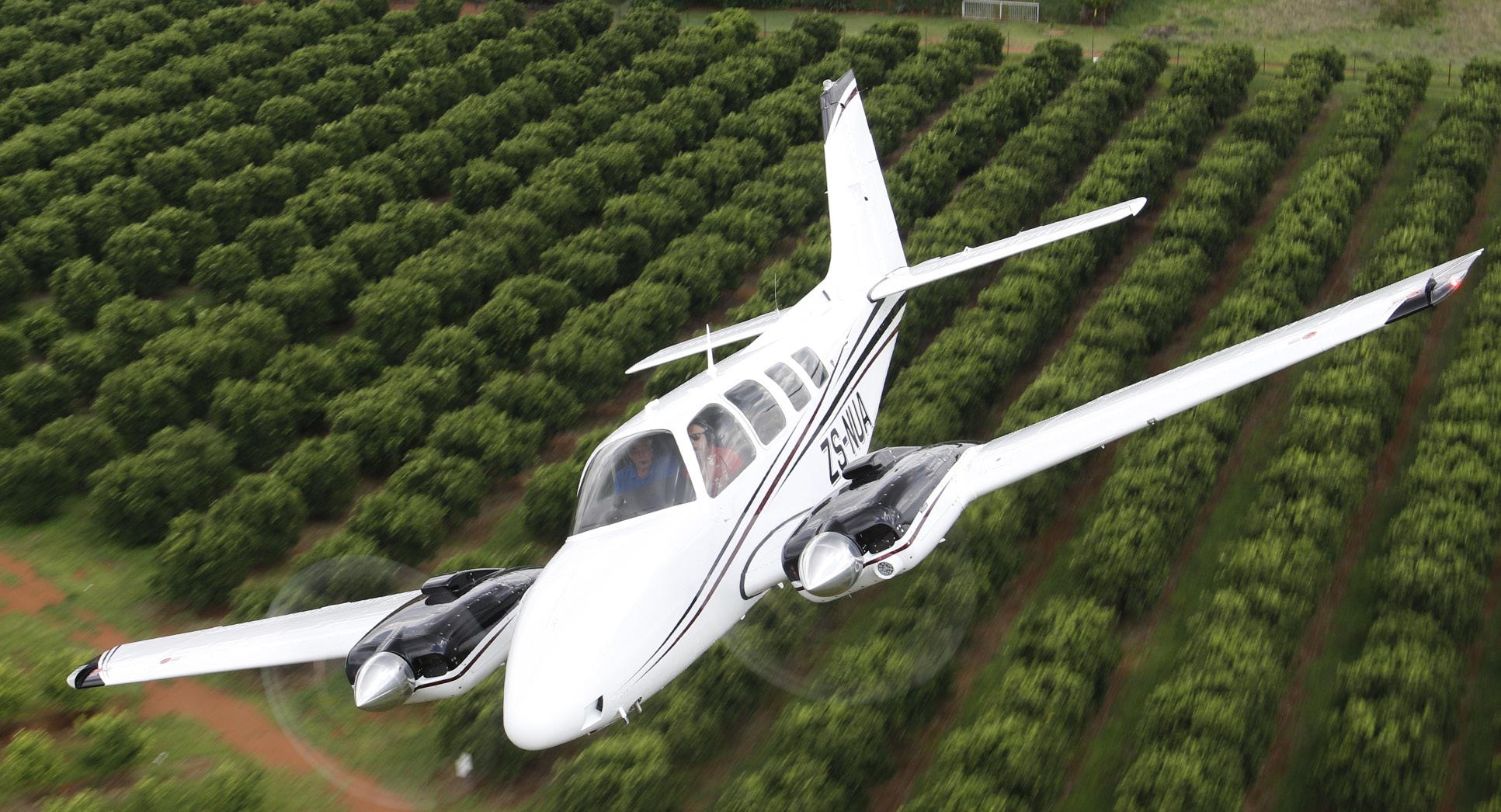
Clinton Carroll points out that “Our company was built on integrity, honesty and excellence in
every aspect of the services we have to offer. We also believe in keeping the cost reasonable while maintaining exceptional quality that either meets or exceeds Original Aircraft Manufacturer (OEM) specifications. At Aeronautical Aviation, our dedicated professional team understands the importance of exceptional customer service and will provide the solution to your aircraft avionics and accessory needs.”
December 2022 28
AVIONICS
Aeronautical Aviation CEO Clinton Carroll uses their Baron 58 to reach distant customers.
Aeronautical Aviation is an African leader in the repair, installation and overhaul of aircraft instrumentation, avionics, electrical, autopilots and accessories.
As key company values that infuse everything it does, Aeronautical Aviation is committed to providing its customers with outstanding quality and service, as well has to ensure minimum ‘aircraft on the ground’ downtime by carrying a large inventory of parts.
As part of its comprehensive range of carefully selected avionics brands, Aeronautical Aviation are dealers for Garmin, (from which they have won the award as the biggest dealer in Africa), Collins Aerospace, Avidyne, Spider Tracks, Kannad, JP Instruments, Sandel Avionics, S-TEC / Genesys AeroSystems, ACK Avionics, Flight Display Systems, Century Flight Systems, Cobham Satcom, Dynon Avionics, DAC International, Sandia Aerospace, L-3 Communications and Electronics as well as Electroair Ignition Systems plus many more.
First-hand experience
As a pilot and aircraft owner, Clinton Carroll understands the challenges in the cockpit, the regulatory requirements, certification, and costs associated with the operation of an aircraft. This enables him to offer informed advice on upgrading equipment, repairs, and installations from a technical aspect, as well as from a pilot’s point of view without compromise to quality.
Aeronautical Aviation’s team of qualified technicians has extensive knowledge and training on all the products they supply. Great emphasis is placed on training both the technicians and the pilots on equipment installed into an aircraft. This is a pivotal part to ensuring their clients are armed with the knowledge to get the full benefits from their usually large investment in avionics equipment fully, epitomising the value-add that comes from entrusting avionics work to Aeronautical Aviation.
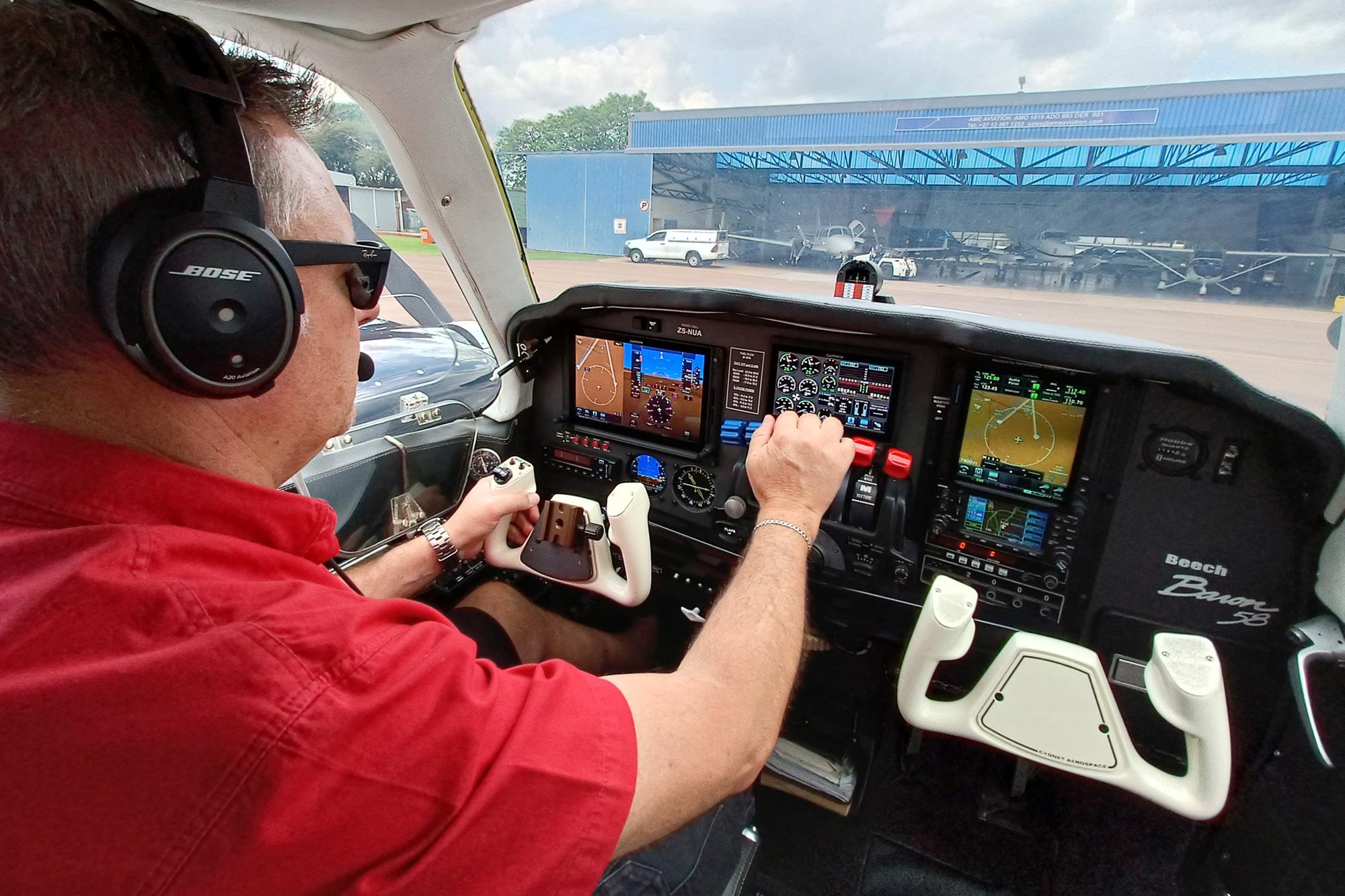
December 2022 29
Clinton Carroll sets up his Garmin G500 EFIS in his Baron 58.
Located at the general aviation hub of Lanseria International Airport, Aeronautical Aviation has been supporting and offering specialised services within the General Aviation industry with the repair, overhaul, and installation of aircraft instrumentation, avionics, electrical and pilot accessories.
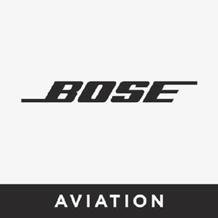



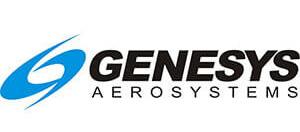

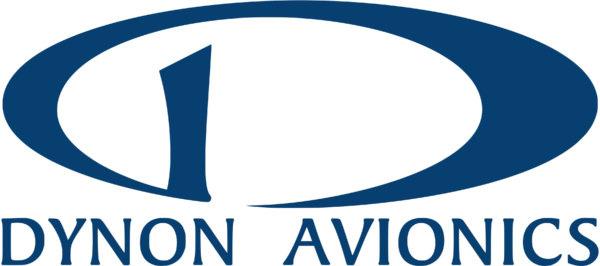
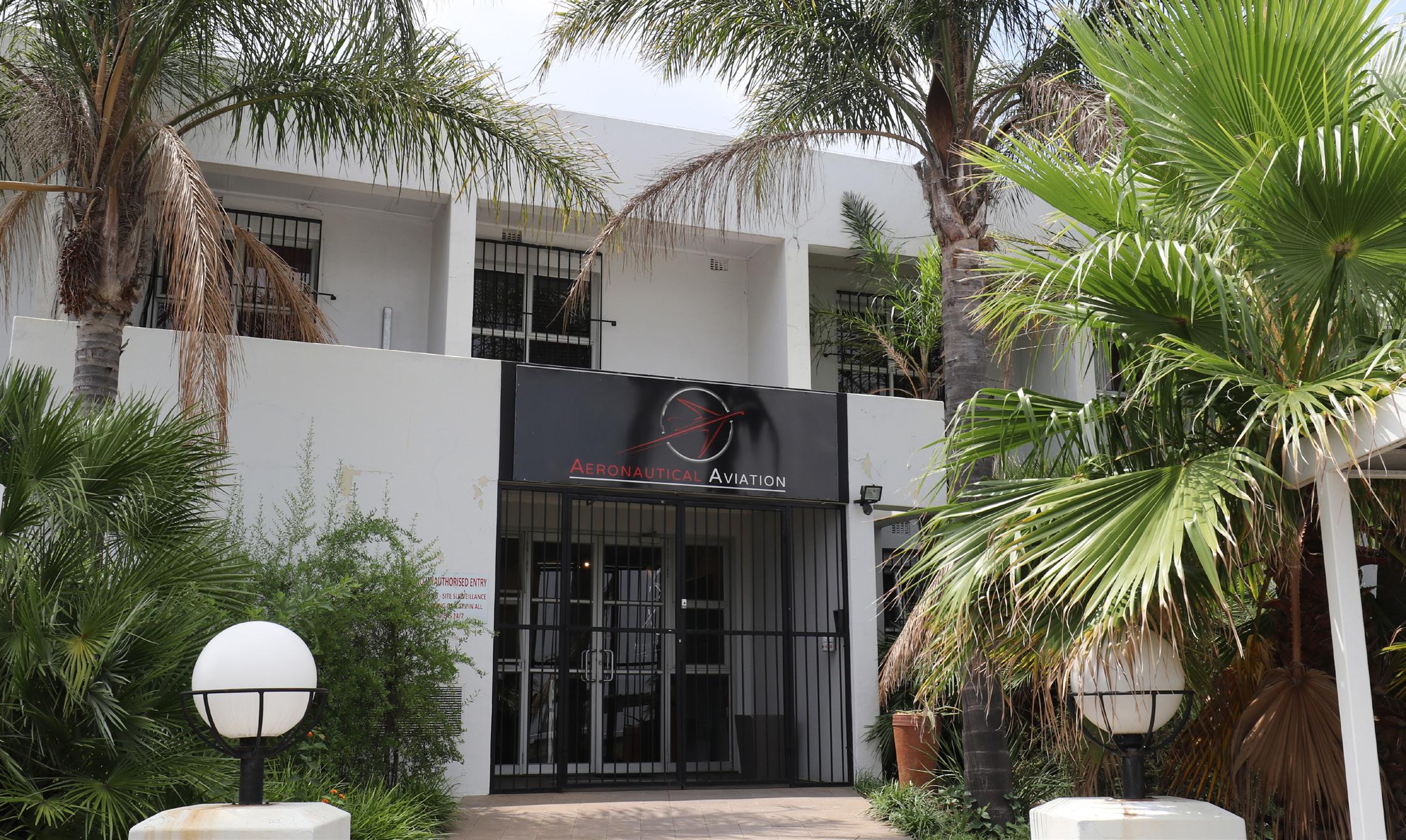
Typical of the Aeronautical Aviation’s ability to optimise its added value proposition the company has a specialist capability with its laser cutting equipment for the refurbishment of backlighting switch and circuit breaker panels, transforming old, outdated panels to look as new as the equipment being installed.
Clinton Carroll says, “We are extremely proud to be Garmin’s largest accredited dealer and distributor in Africa. Furthermore, we have a large dealer base and this enables us to provide our clients with a variety of options to suit their budget and operational needs. Our technicians are Garmin and Collins Aerospace Factory trained and we pride ourselves on service excellence. We are committed to providing our customers with outstanding service and exceptional quality.”
December 2022 30
Aeronautical Aviation is based at Lanseria.
Aeronautical Aviation is Garmin's top African dealer and carry most other key brands.
THE VALUE OF REALWORLD EXPERIENCE.
Aeronautical Aviation owns and operates its own Baron 58, which it uses to gain first hand experience of the installation and operation of modern avionics in older airframes. This gives the company a unique advantage in that it doesn’t just ‘talk the talk’ of avionics upgrades but it ‘walks the walk’ of actually owning and operating this level of sophisticated equipment. In this way Clinton Carroll is able to share first hand experiences of how to get best use and value for money from an investment in modern avionics.
back of a twin, plus it has VNAV and IAS hold.”
As the CEO, Clinton puts his aircraft to good use servicing his customers in distant locations. On one of these trips he had an engine failure. From his first-hand experience in the Baron he tells his clients what equipment may not just be a nice to have, but which may become a real life saver when the need arises – as it did on the flight to the customer in Mossel Bay, when the Garmin GFC600 autopilot made his flight immeasurably safer.
committed to
Clinton writes, “I departed off Runway 09, straight towards the coastline. George Tower routed me out to sea due to other IFR arrivals. They kept me at 2500ft and once I was at least 15nm out over the bay they cleared me direct to OKSOP, an RNAV intersection, and cleared me for the climb to FL115.
its customers with outstanding quality
From his experiences in operating his Baron 58 Clinton reports that, “We bought our Baron 58 with the vision of having an aircraft to demonstrate Garmin's latest technology. It's one thing playing with a screen on a test bench or seeing a video on how the new autopilot works, but to fly and experience it in real life is something else. Never did we imagine we would get to see how it saves lives in real life.
“One of the most important factors for me, being the pilot of this aircraft, was to have accurate engine information, situational awareness, good IFR capability as well as a reliable autopilot. Especially considering we were going to use the aircraft as a "we come to you" value added service. We opted for the Garmin GFC 600 Autopilot during this process as it has a yaw damper which is essential for passengers in the
I had the autopilot engaged with the yaw damper, so I pressed NAV to couple to the GPS route and pre-selected FL115 for the climb. I selected an IAS hold of 138 kts as this is the Baron’s best cruise climb speed. The aircraft obediently rolled its wings left onto heading, pulled its nose up and started the climb. Monitoring the precision of how the GFC 600 flies is always a thrill.
As I stretched across to pick up my flight planning paperwork from the right-hand seat, I heard a sudden change to the sound of the engines and felt the swing from an abrupt loss of power. This is where training kicks in. Having only around 50 hours on twins, I was not highly experienced in this type of situation. After test flying various aircraft post maintenance in my career and having my fair share of emergencies, this was my first one, on my own, in my own aircraft.
December 2022 31
providing
I followed the drill; gear up, flaps up, identify: dead leg - dead engine, wait, what..... well this was different. I confirmed the gear and flaps were up but the rudder pedals were not fighting me at all. No dead leg to identify the dead engine. The GFC 600 yaw damper took the yaw in its stride and held the aircraft straight on its own. A little disconcerting, considering this is not what I had been taught.
On checking the Engine Management system (EMS) I could see immediately I had no fuel flow or fuel pressure on the left engine. So that must be my problem. I disconnected the autopilot to confirm this, and the aircraft yawed to the left as I was expecting. A quick engagement of the autopilot took care of the yaw again and I selected IAS HOLD at Blue line +10kts. Now I knew the aircraft would not stall, it was flying straight and undistracted, I could apply myself to diagnosing the engine issue.
I tried the electric fuel pump and the engine came back to life, but it was very rough. I confirmed on the EGTs that two cylinders were not firing. It was so rough that I decided to rather shut it down completely and feather the prop.
The Baron was still climbing on one, getting me valuable height, and flying straight, so I decided to declare the emergency with George and route back to Mossel Bay.
Everything went smoothly from there and I landed without incident.
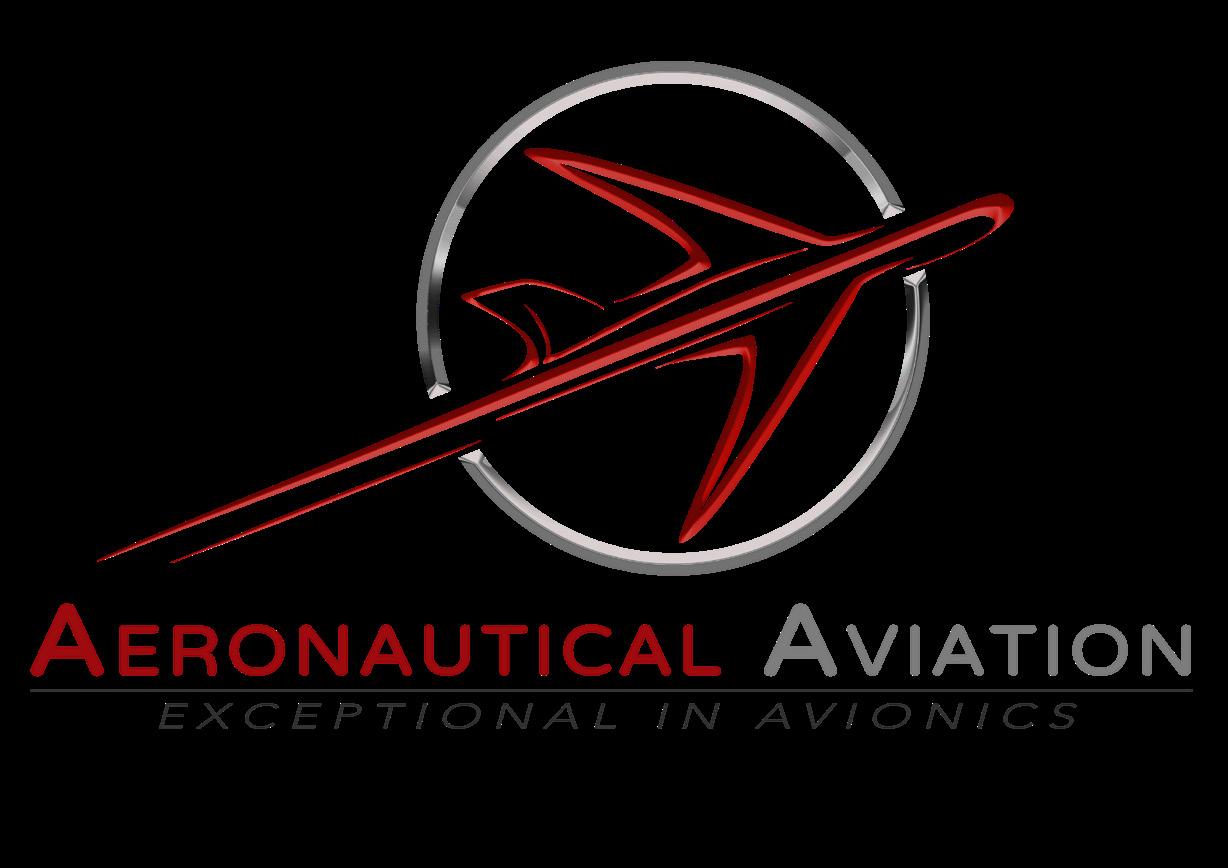
On reflection of what had happened, I realised what an asset it was to have those avionics, especially a very capable autopilot, during this sequence of events. The GFC 600 took care of the massive yaw from the asymmetric thrust, it maintained the speed above blue line and with the right side engine at full power, controlled the speed to
allow me to climb, gaining valuable altitude in an emergency, especially over water.
The Engine Management System helped in a huge way in diagnosing and giving me the essential information I needed to make an informed decision to feather and land. The rest of the equipment was brilliant in helping me with my situational awareness and getting me back to Mossel Bay in the shortest time possible, considering I had never flown there before today.
I had woken up at 5 am, driven to Lanseria, fuelled the plane, flown 3h30 to Mossel Bay, worked in the scorching sun for at least two hours, fuelled again, had a quick bite to eat and taken off again for another 3h30 hrs home.
I was tired and fatigued from the sun, so to have the avionics look after the flying like that was a welcome relief. I am 100% convinced things would have ended differently if I did not have all the information at hand to make my decisions. The GFC 600 was a co-pilot like no other and kept me safe the entire time and ensured I was home with my family that night. j
December 2022 32
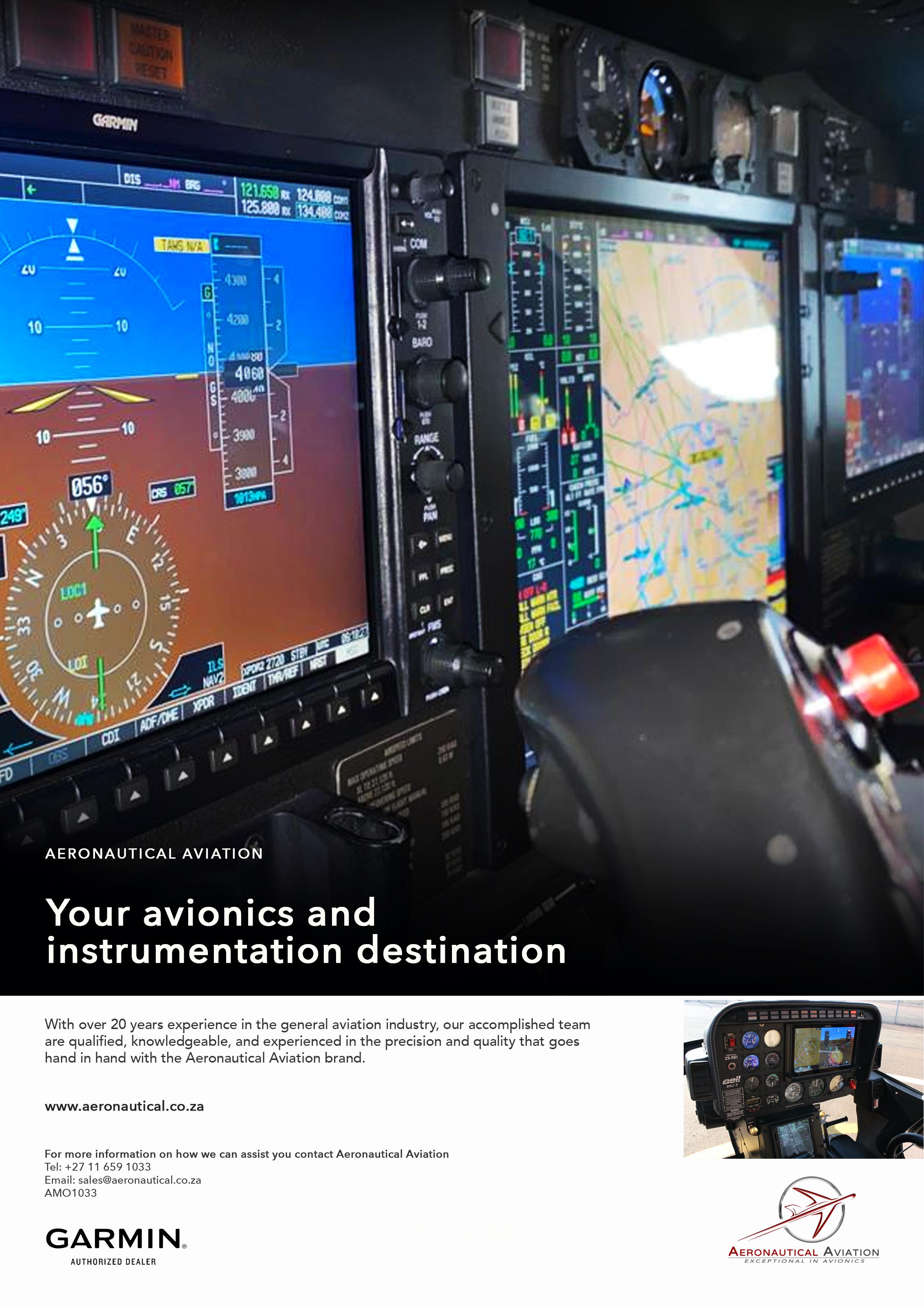
INSTRUCTORS HAVING FUN
GENETICALLY, I AM EXTREMELY LAZY, easily bored, and strongly resistant to being a team player. This means that when scanning the world for a career I saw aviation as an excellent prospect. I also come from a line of teachers so it seems the philosophers are right – I really did have no choice in my selection of a career.
So YAY for genes and history. I can’t think of a more rewarding, and enjoyable way to be paid for having fun.
This article is going to be Chapter 1 of a book about stuff I have learned while trying to be the best instructor I can. It’s going to be a mishmash of flying stories and hints and tips for all pilots – and particularly instructors.
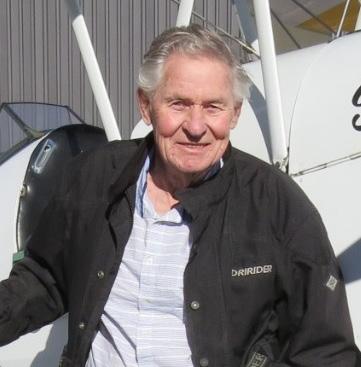
Instructors – yours is the highest calling in aviation – so give it a full go and be worthy of it. Here’s your first hint and tip: Did your instructor ever tell you how to judge when another aircraft is above or below you? If it’s above the horizon it’s above you, and if it’s below the horizon it’s below you.
It’s the same with cloud tops and cloud bases, and birds, and hill tops and radio masts, and even power lines. ANYTHING above the horizon is above you and anything below the horizon is below you.
Strangely this doesn’t quite work at airliner altitudes, but I’m not sure why. Anyhow, whether you are looking for an instructor, or whether you want to be a really good instructor yourself, here are the qualities that make up The Ideal Instructor:
Enthusiasm for all things aviation.
A love of teaching. Great teachers get huge pleasure from their pupils’ successes.
A sense of humour. The occasional joke or bit of leg-pulling makes everyone relax and enriches learning.
Patience. A great instructor enjoys even the baby steps of slow learning.
Professionalism. Professional instructors dress smartly, stick to the rules, don’t cut corners and always treat their pupils with respect and dignity.
December 2022 34 PLANE TALK - JIM DAVIS
Some philosophers hold that we have no free will – we are propelled through life by our genes and our experiences. If that is the case, then I had no choice but to be a flying instructor.
a good instructor’s flying is smooth
Experience. The more experience they have the more he can pass on. New, young instructors can make up for their lack of experience by embracing other qualities –particularly enthusiasm and a desire to learn from every flight.
Integrity. The pupil must know that you will be honest with her. She’ll respect your criticism, and believe your praise is sincere. She’ll quickly spot any deception.
Smooth handling. A good instructor’s flying is smooth, polished, and accurate.
A spirited attitude. This doesn’t mean cowboying – it means enjoying tough conditions like gusty crosswinds, spin training and aerobatics.
Role model qualities - both in the air and on the ground. Top instructors never do anything they would not be proud to see their pupils do
A good instructor encourages, not admonishes.
Initiative. Good instructors find new and interesting ways to explain things.
Airmanship. Their airmanship is immaculate.
Insight. Great instructors get into pupils’ heads. They understand pupil thinking, and can judge rates of learning, attention spans and why pupes do certain things.
Resist talking too much. New instructors tend to chatter in flight. Most of the talking should have been done on the ground. In flight, a good instructor will remind – not teach.
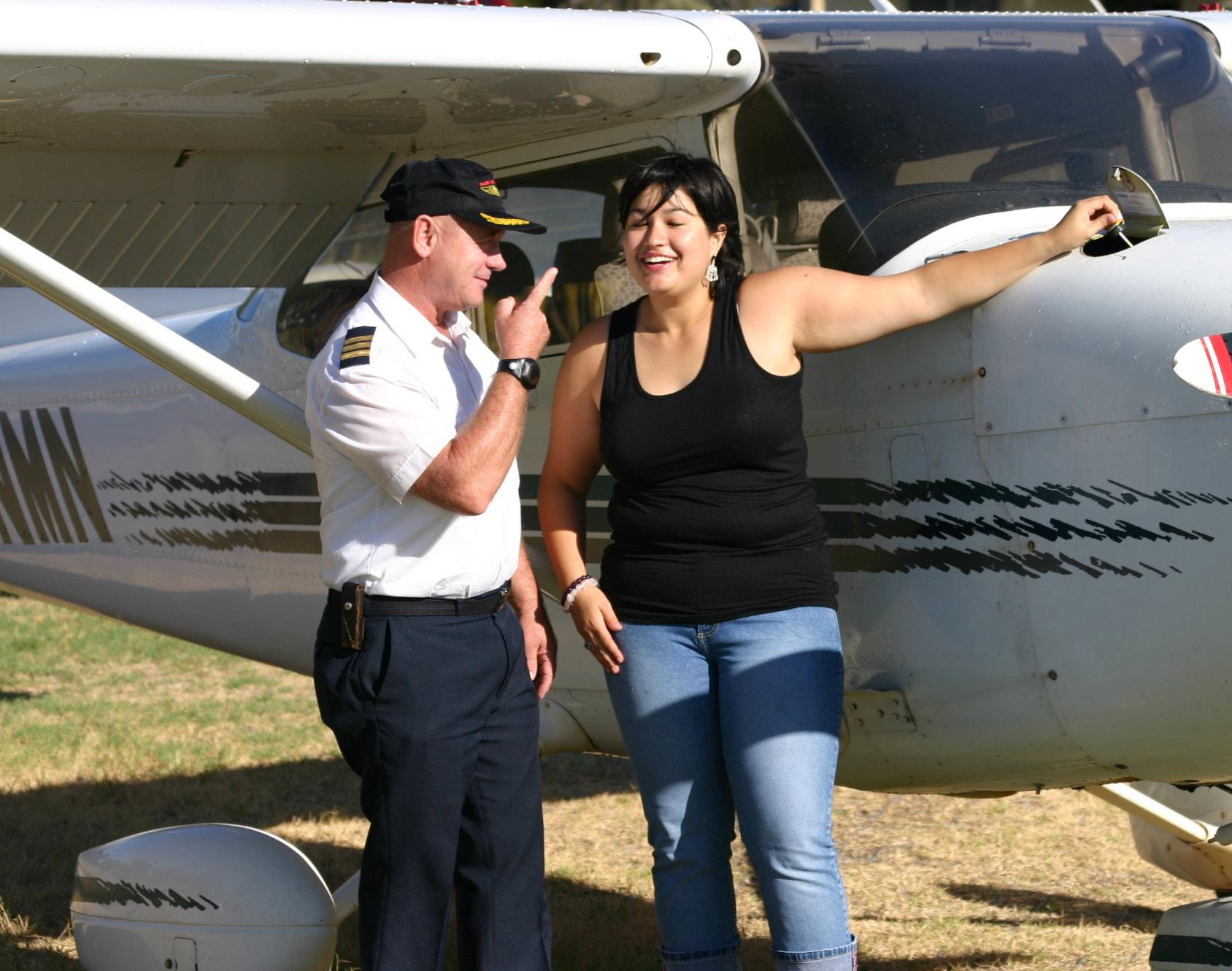
Embrace mistakes. Pupils learn best by making mistakes, recognising them and correcting them.
Is analytical. He looks for root causes, not the symptoms.
Makes things memorable. Lessons must remarkable and unforgettable.
December 2022 35
Makes accurate statements. Top instructors pick their words carefully, and avoid ambiguity. Airspeed doesn’t go ‘up’ or ‘down’ – It increases and decreases.
Is consistent. Procedures and standards must be dependable.
Punctuality is vital. A late pilot is likely to become the late pilot.
Is positive and generous with praise and encouragement. He or she ends every lesson on a constructive note.
Respects your time. They don’t cancel a lesson due to weather. They brief their pupils, or sit in the aircraft with them and go through checks and procedures.
Okay, let’s get on with it –exercise by exercise.
TRIAL FLIGHT
she has got to enjoy the flight. If you do it right you may find her in the front office of a Boeing you board in five years time.
Let that be your aim.
She doesn’t want to know how smart you are – she thinks all pilots are gods, so confirm this belief, and be the most professional pilot you can.
Show her how safe flying is. Walk her slowly round the preflight and explain things she asks about. Don’t hurry.
Sit her in the pilot’s seat and show her the most important controls and instruments. If it takes 30 mins that’s fine. It’s the most important flight of her life. And yours.
she thinks all pilots are gods
Instructors, this is your chance to excel. It’s the most important flight you will ever make – so don’t stuff it up.
Actually you should feel honoured if the CFI gives it to you – ideally it’s so important he should do it himself. It has two aims:
• To set the standard
• To attract a pedestrian into becoming a pilot
Setting the standard. This flight shows her, your potential pilot, how to behave around aeroplanes. If you show off like an immature cowboy, you can ruin her life. I am serious. You can either terrify her so she never comes back. Or you can be a role model by behaving as if you were being tested by a CAA examiner.
Drawing in a new pilot. You can transform this stranger’s life – but you only get one shot at it. So make sure you do fly in decent weather –
Explain about the radio and who you are talking to.
Don’t do anything unexpected –always tell her what you are going to do before you do it.
Show her how to taxi and then let her try.
Briefly explain your pre-takeoff vital actions and runup.
Tell her what the takeoff will feel, and sound, like. Show her the rev-counter and ASI and tell her what speed you will lift off, and your climb speed.
Only do gentle turns – 25º of bank or less. Get her to help lookout of other traffic.
Show her the altimeter and explain the difference between height above sea-level and above the ground.
Point out prominent features on the ground. Ask her where she would like to go – probably over her home. See if she can find her way there.
December 2022 36
Doing an introductory flight is an honour to be taken seriously.
Point out the horizon and explain its importance. Show her the basic effects of the aileron and elevator and let her have a go at straight and level flight, and gentle turns.
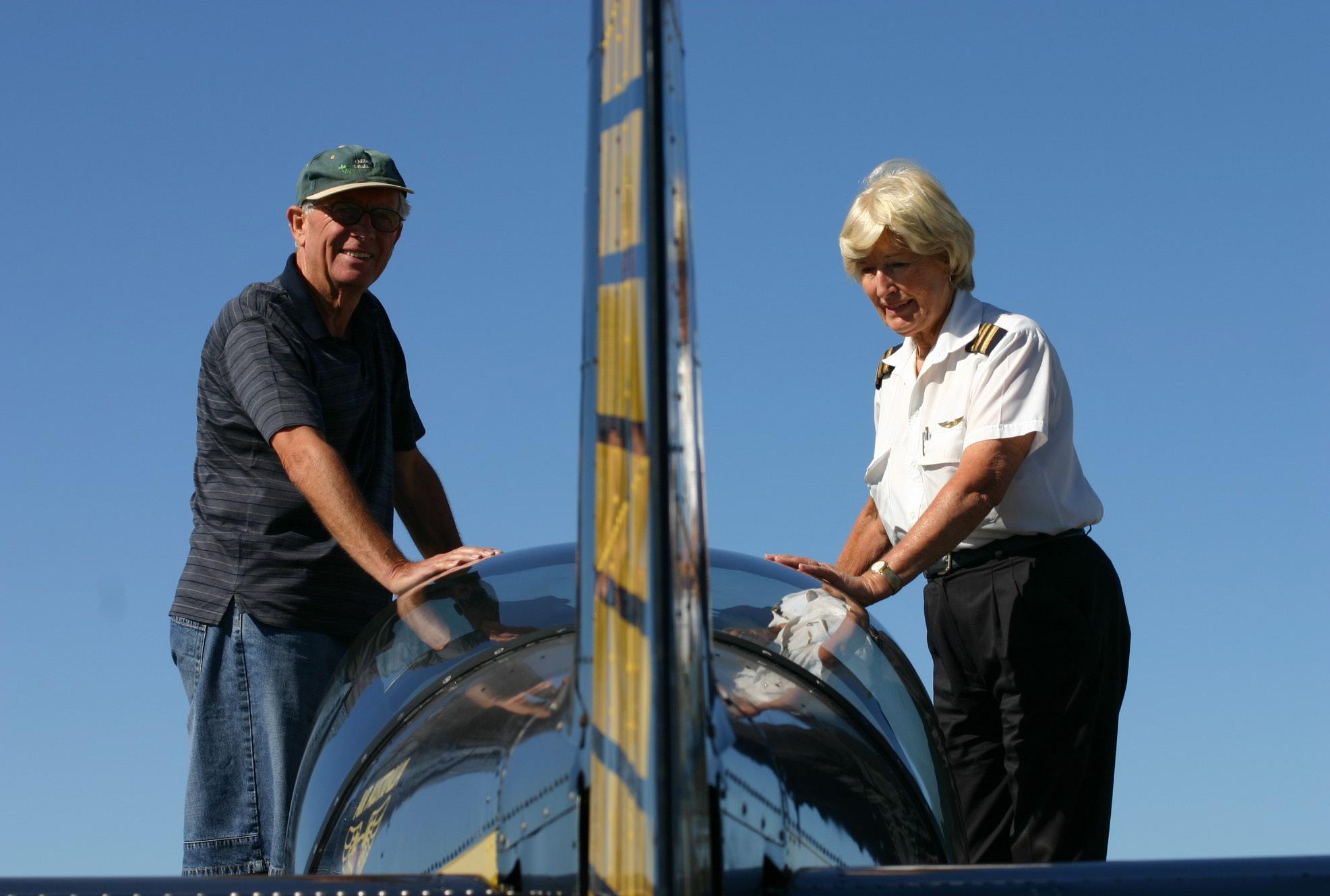
Tell her if she is doing well, and make allowances if she is not. For her, there’s a lot of strange stuff happening – she is not going to get everything right first time.
Make this flight the best thing that’s ever happened to her.
If you stuff this up I will hear about it and get the CAA to put your license through their confetti machine.
Your words have immense impact – never underestimate their power for good, or for harm.
We have all heard the saying that the word [or pen] is mightier than the sword – take this very seriously indeed. Let me give you an example of how a single word inadvertently killed 583 people in the worst disaster in aviation history.
Remember the Tenerife airport disaster in 1977 when Two Boeing 747s collided on the runway? The captain of KLM 4805 thought he had takeoff clearance, when he only had AFTER takeoff clearance. His aircraft smashed into Pan Am 1736, which was backtracking on the same runway in thick mist. The crash killed everyone on the KLM flight, and all but 61 on the Pan Am flight.
THE POWER OF WORDS
Instructors, your job is to use words wisely. They are your main teaching tool. You are not there to push and pull things in the cockpit.
The critical word behind this disaster was ‘takeoff’. Briefly, on an instrument flight you will get three clearances:
• Your normal taxi clearance.
• Your ‘departure’ clearance which specifies
December 2022 37
the initial route to follow. It will be something like this, “Alpha Bravo Charlie, after departure runway 28, climb on runway track to 5000’ and then turn right to…”
• Your takeoff clearance. “Alpha Bravo Charlie you are cleared to takeoff on runway 28, the wind is 270/15."
Notice that the word takeoff is not used at any time except when ATC are clearing you for the actual takeoff.
Previously, at the time of the Tenerife crash, ATC departure clearance was allowed to include the term “…after takeoff on runway…”. So when Captain Van Zanten, who was pilot flying on the KLM flight, heard the word takeoff he advanced the four thrust levers and accelerated down the runway towards the Pan Am 747.
The situation was further confused by a double
Instructors must take time on the ground to explain things - before the flight.

transmission and some other non-standard terminology, plus the words “…not cleared for takeoff.”
Van Zanten desperately wanted to get into the air. His was one of many flights that had been delayed by a bomb scare. He was worried about running out of flight and duty time. His whole being was orientated towards this takeoff, so when he heard that word, there was no holding him back.
After this crash the term “Hold your position” was mandated. Had it been used at the time, this horrendous disaster would never have happened.
I am trying to emphasise that your words give you a terrifying amount of power. It’s all about finding the exact ones that will get the job done effectively and safely. Here’s another example of the power of words.
December 2022 38
When I did a flight test I could use a few words, while we taxied out, to make or break the pilot’s chances of passing.
I could say, man, I really like your radio procedures, and that would set the tone for my enthusiast to do everything right – and comfortably pass the test.
On the other hand, if I said something like, do you always taxi like this? while making a note on the test form, he would perform so badly that he was almost guaranteed to fail.
Of course I never did that, but for many years the CAA employed a flying inspector called Swanepoel – I don’t think he had a first name. He loved to intimidate pilots before takeoff. He would loosen his seat belt after you had checked it. He would unlatch the baggage door after you had latched it. He would tell you to hurry, and then mark you down for doing so. You had almost no chance of passing a flight test with Swannie.
Push the stick forward so the airspeed goes up.
Does it sound okayish? Actually there’s so much wrong with it that it’s hard to know where to start. Let’s kick off with the first word – Push
Do you really want someone pushing and pulling stuff in the cockpit? It sounds more like the way you might handle the controls of a railway engine.
In aeroplanes you want a pilot to handle all the controls smoothly. My very first instructor, an RAF pilot, told me that I should always fly as if my grandmother was in the back with a basket of eggs on her lap. Passengers should not be able to feel it when you do things – particularly changing flap, or power, settings – it should all be smooth and gentle
find new and interesting ways to explain things
Naturally, we got fed up with this tyrant. Occasionally someone would take revenge. They would land at distant farm strip and tell him to get out, claiming he was endangering the flight.
Brilliant, because this was in the days before cell phones, so Swannie would have to walk to the nearest farm house to phone his boss, Carel Sembach, and ask for a car to come and collect him.
In this series I am going to give you plenty of examples of using the right words.
Instructors, and others, here’s something to think about. Have a look at this simple instruction and see how many things you can find wrong with it:
So don’t ask your pupil to push of pull anything. They might just do exactly what you say, and have you floating out of your seat as they push the stick forward.
This is common with stall recovery. Ask half a dozen pilots how they recover from a stall. The standard answer will be, I push the stick forward. Some actually do this in the aeroplane and frighten themselves to the extent they are scared to practice stalls again.
The proper answer is, I ease the stick forward until the wings are unstalled. And, of course, if you actually do that, then stalls and recoveries are fun things.
Actually stall and spin recoveries are amongst the very few occasions when you should tell pupils what to do with the stick.
December 2022 39
On most occasions the Golden Rule is: As far as possible, never tell a pupil what to do with the stick – tell him what to do with the aeroplane.

So going back to the example I gave you, we want the pupil to ease the nose down, but we didn’t tell them how far. Vertically? Perhaps not. It sounds silly because we know what we mean, but we are not giving the pupil a clear instruction. We want them to ease the nose slightly below the horizon.
do want to be the best instructor
And while we are on the subject, a new and dubious, term is creeping into what instructors say. They tell people to apply pressure to the controls. Applying pressure does nothing – every control has to move before you get a result. Applying pressure to the flap lever on a Cherokee isn’t going to do a damn thing.
Applying pressure to the throttle may or may not work depending on how tight the friction nut is. Applying pressure to the left rudder in the climb is probably not what you really want – you probably want them to reduce pressure in the right rudder. Rather tell them what result you want, use enough rudder to get the ball in the middle.
Besides, it makes no sense telling a pilot to apply forward or back pressure to the elevator unless you know the state of the trim.
And – we still haven’t finished with this terrible sentence. Do we really want to muddy the waters by having things like airspeed, revs, oil pressure and amps, going up or down? Absolutely not. We want them to increase or decrease. so don’t confuse things with up or down
So the original instruction to
Push the stick forward so the airspeed goes up,
should really be:
Ease the nose slightly below the horizon so the airspeed increases.
Who said instructing was easy. Ha ha ha – it isn’t, but it’s a hell of a lot of fun – and hugely rewarding when everything clicks smoothly into place.
j
Next issue Jim has a story about planning ahead.
December 2022 40
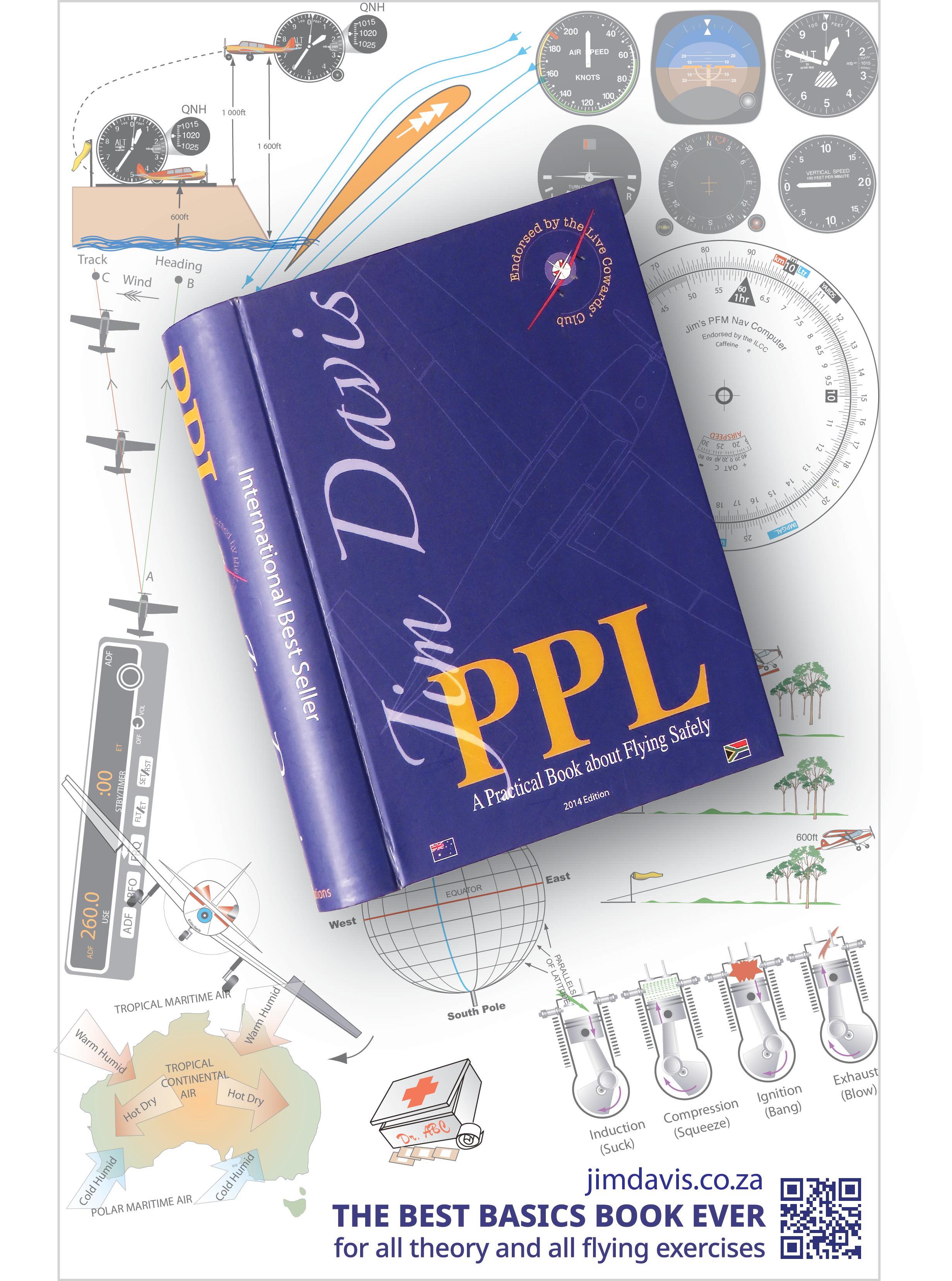
FAA PUBLISHES DRAFT VTOL RULES
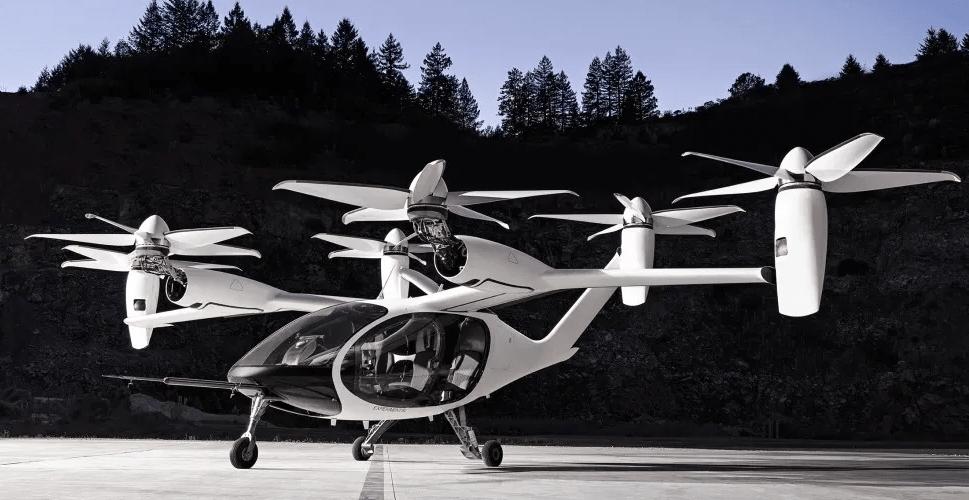
THE FAA HAS PUBLISHED draft rules for all new makes and models offering point-to-point air taxi services outside the traditional aeronautical ecosystem. This has been a daunting regulatory challenge for the administration, adding entirely new types of traditional fixed and rotary-wing aircraft.
This change will only be the first bit of regulatory tidying-up the FAA does before the new guests arrive, codifying the definition of ‘Air Carriers’ to include operators of eVTOL aircraft. In addition to this change, the FAA is hard at work developing pilot requirements for the new aircraft. Those standards are likely to be published sometime in the latter half of 2023, fortuitously released around the same time as the first type certification for an eVTOL aircraft.
The draft says that the rule is an ‘important step in the FAA’s integration of new entrant aircraft in the National Airspace System’, paving the way for the expected wave of eVTOL aircraft on the way.
Hybrid multirotor aircraft are expected to begin entry into commercial service by decade’s end, with most manufacturers hard at work developing their aircraft for certification within the next 3-5 years.
j
December 2022 42
NEWS
The FAA Has published Draft VTOL rules.
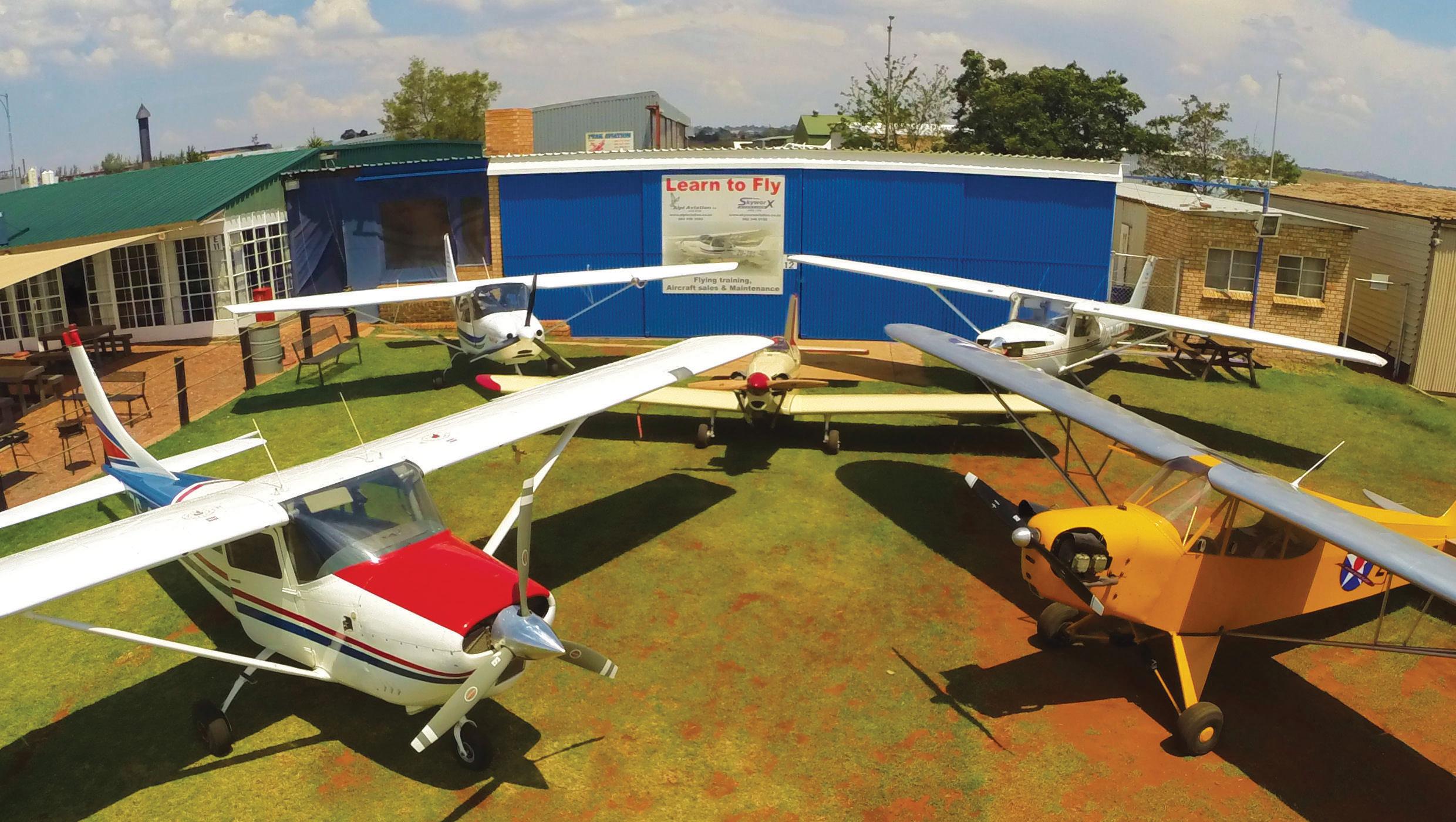
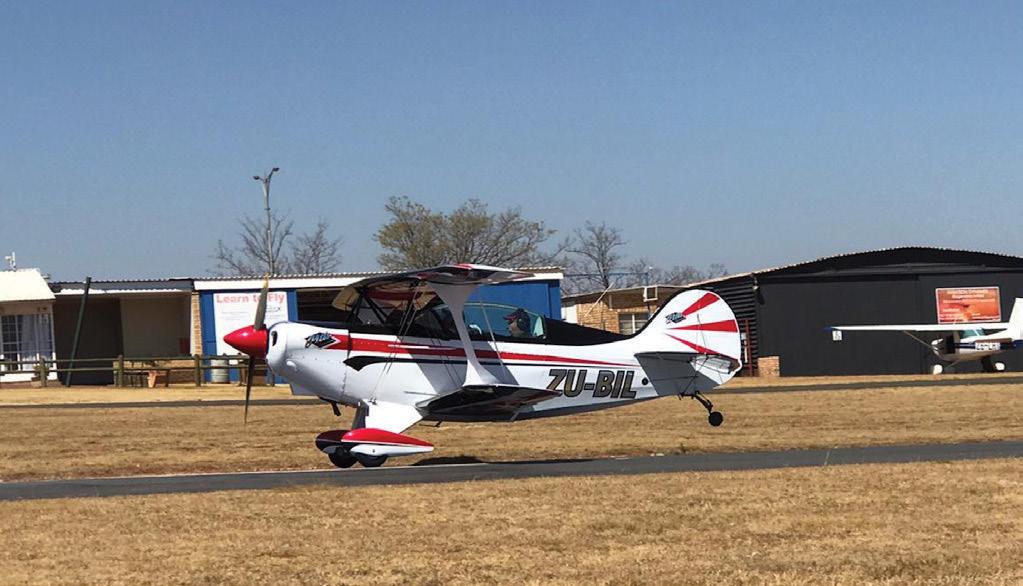


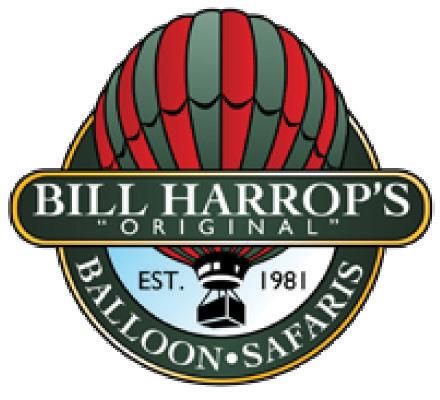

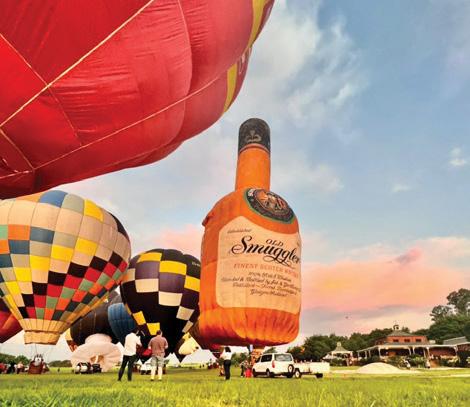
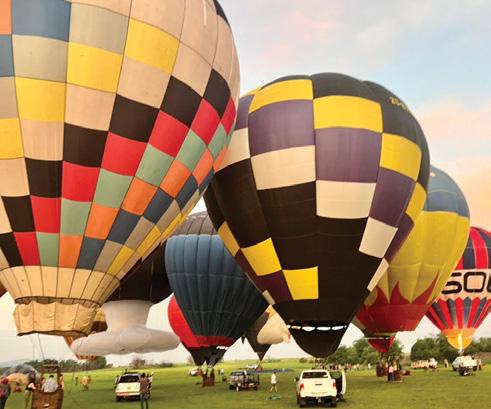
December 2022 43 WE NOW OFFER TAILWHEEL TRAINING www.alpiaviation.co.za Dale de Klerk Cell: +27825563592 Fax: 0866058948 Skype: dale_de_klerk Email: dale@alpiaviation.co.za FROM NPL THROUGH TO CPL LEARN TO FLY WITH US Bill Harrop’s ‘Original’ Balloon Safaris +27 83 457 3402 or +27 83 443 2661 / 2 • email: website@balloon.co.za • www.balloon.co.za Balloon Pilot Training Facility Wishing you all a fabulous and safe holiday and New Year! PACKAGES: • Magalies River Valley Scenic Balloon Safari • Game viewing at Mabula Private Game Reserve • Groups • Team Building • We fly from the beautiful Magalies River Valley in the Cradle of Humankind World Heritage Site. Do it in style!

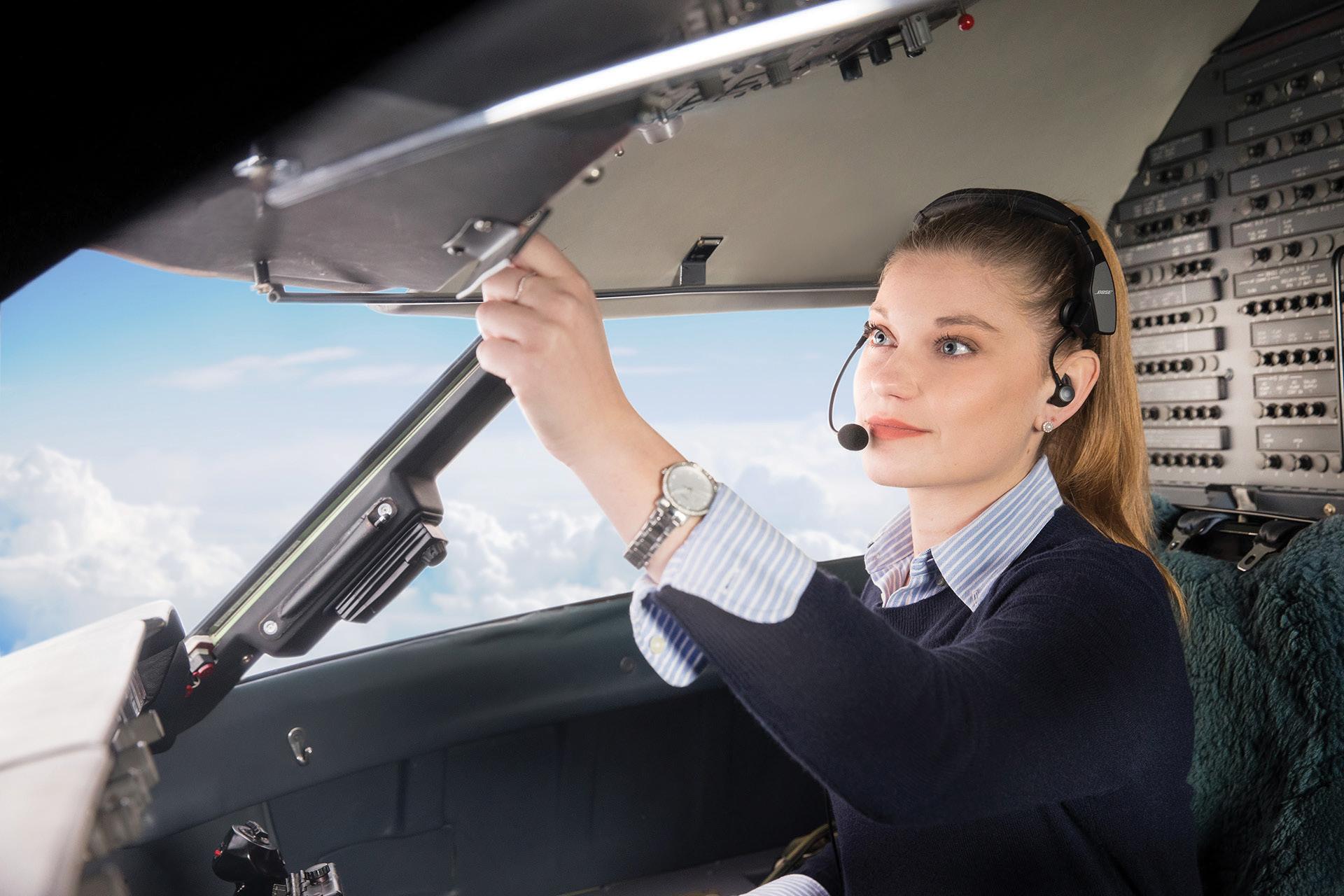


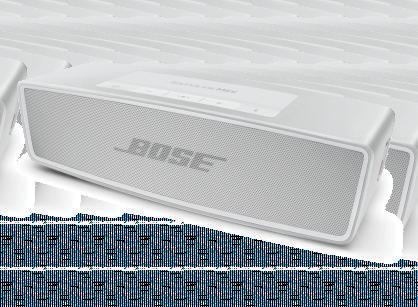




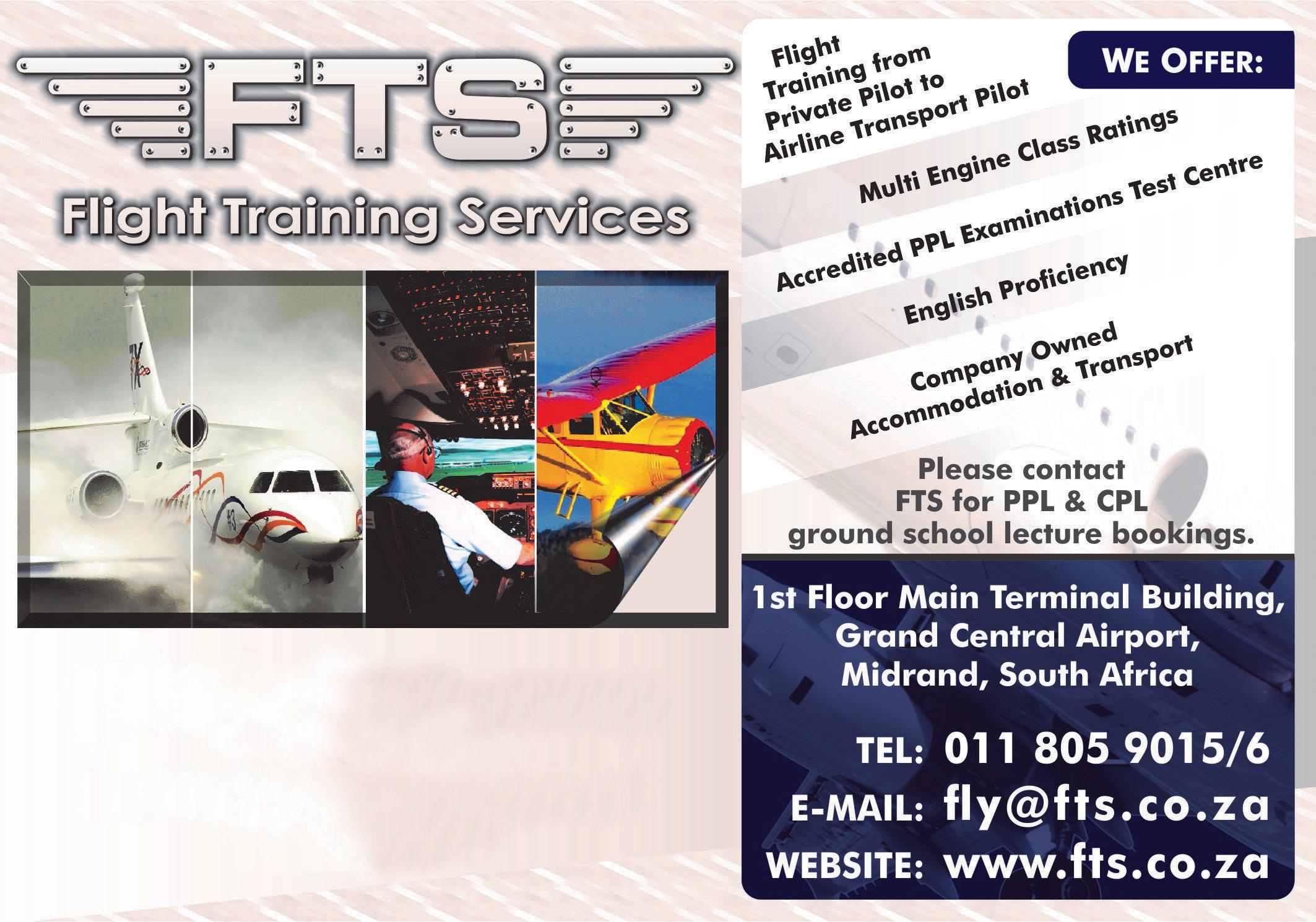
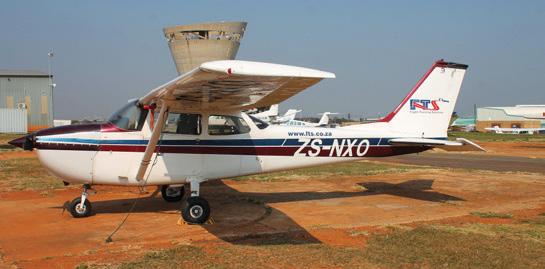
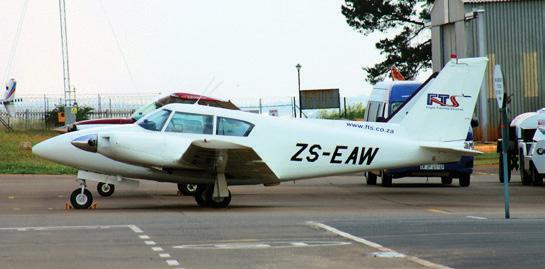
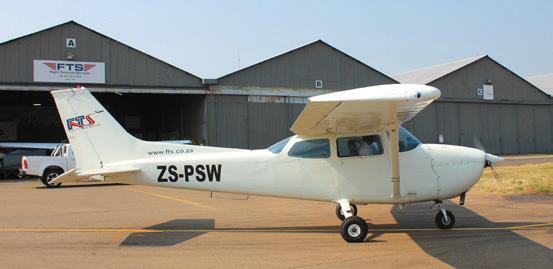

December 2022 44 PLACE YOUR ORDERS ONLINE NOW AT www.pilotsnplanes.co.za OR EMAIL ORDERS TO orders@pilotsnplanes.co.za SA Flyer 2022 | 12 Pil t Planes nPlanes n Contact: +27 12 567 6775, E-Mail: pilotshop@pilotsnplanes.co.za Contact: +27 11 824 3339, E-Mail: rand@pilotsnplanes.co.za BOSE PRO FLIGHT SERIES 2 The Industries smallest, quietest and most comfortable active noise reduction headset. Engineered by Bose. Refined by Pilots Wishingyouahappyfestiveseason and a wonderful New Year! THE NEXT GENERATION OF PILOT & FLIGHT CREW TRAINING SACAA/1061/ATO

December 2022 45
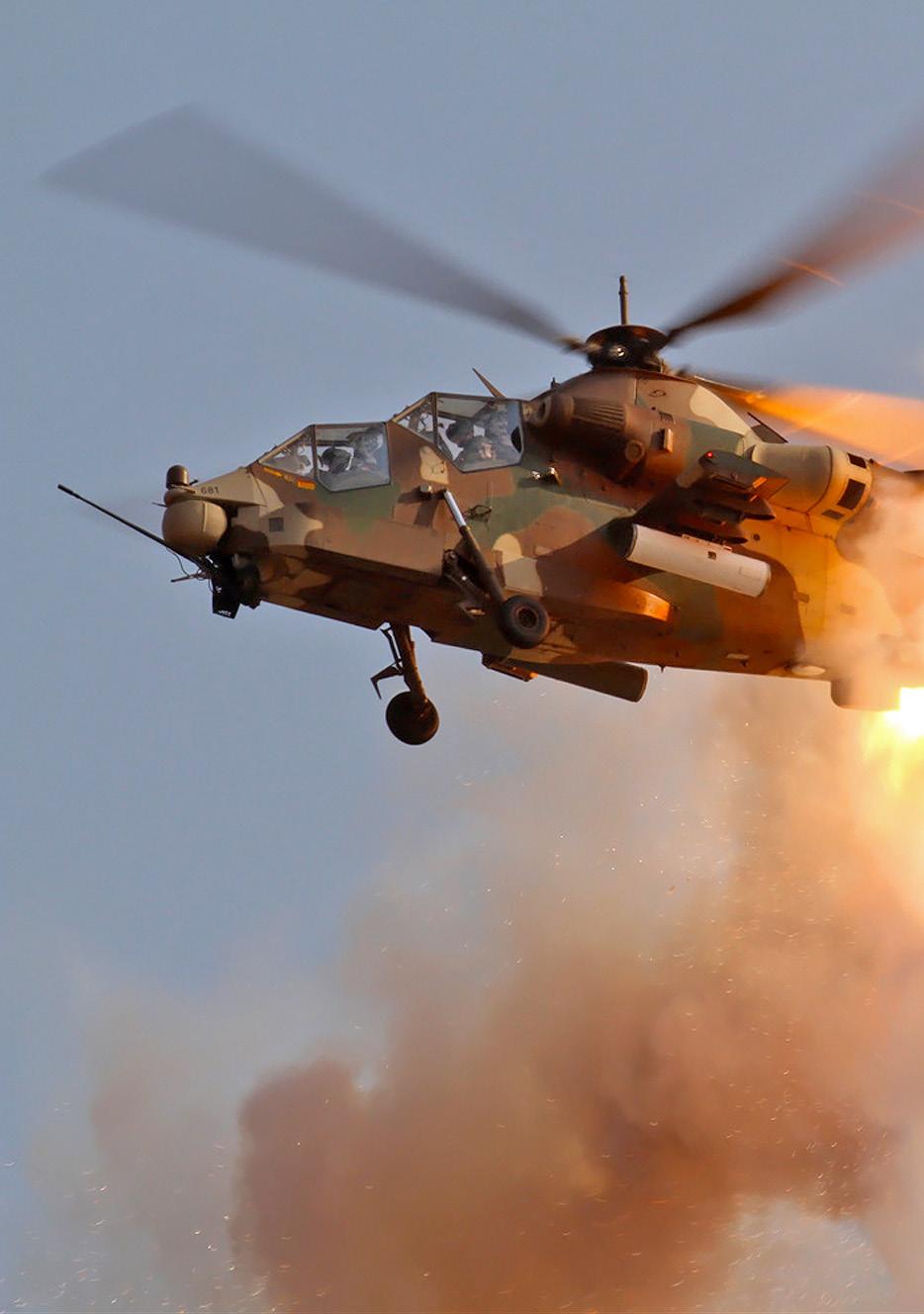
December 2022 46 FLIGHT TEST REVIEW : GUY LEITCH WITH CHARLIE MARAIS AND DEWALD VENTER ROOIVALK – THE FLYING TANK!
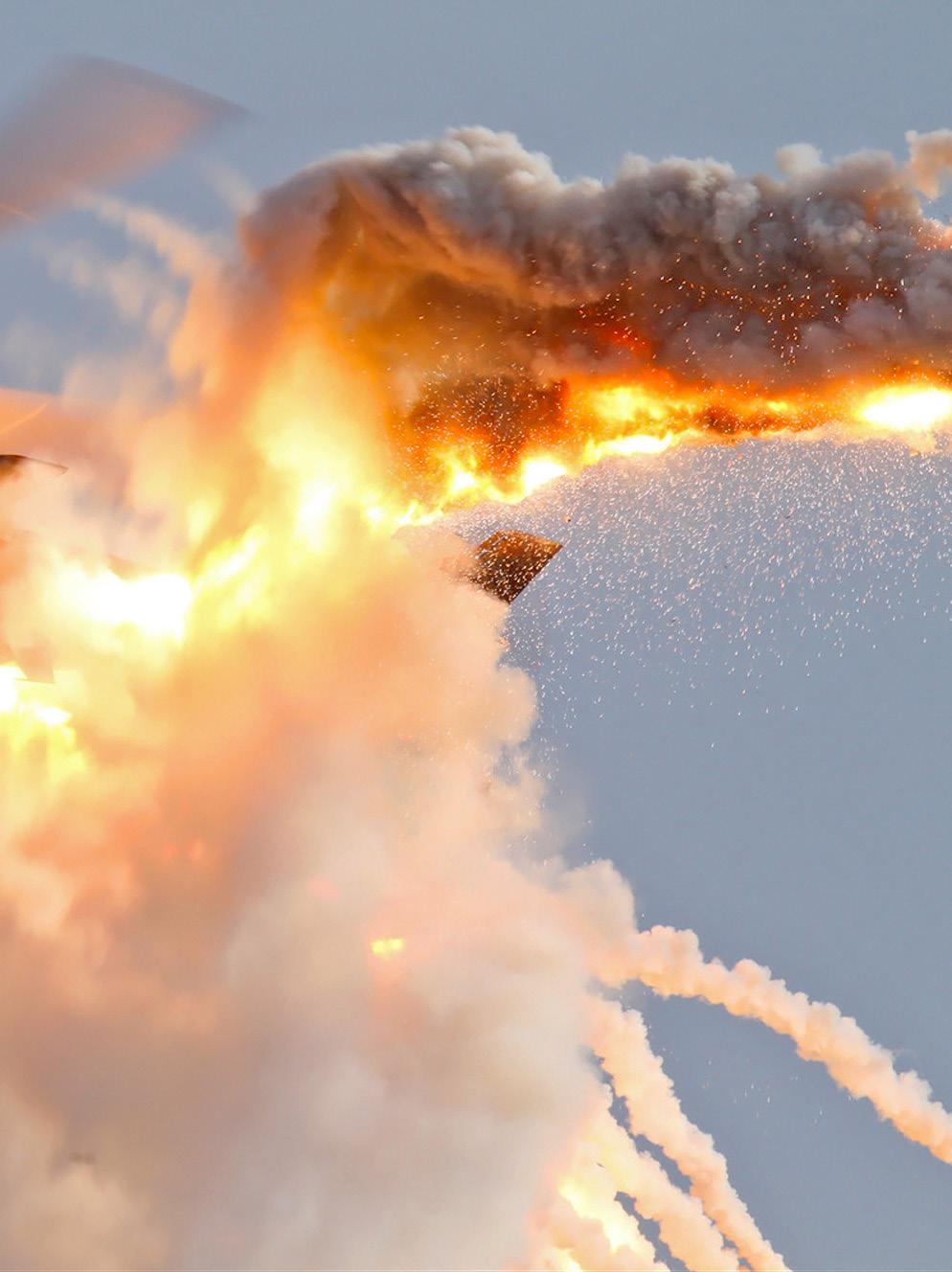
December 2022 47
The Rooivalk is a proven world-class attack helicopter. Garth Calitz.
AT THE BEGINNING of the Border War there were few confrontations against armoured vehicles, but in then Angola received Cuban and Soviet support. This included the formidable T-55 main battle tank, and so South African ground troops, clandestinely far inside Angola, were outgunned and vulnerable.
It was clear that South Africa urgently needed a tank-busting attack helicopter and it was also expected that a large combat helicopter would double as ‘as artillery piece in the air.’
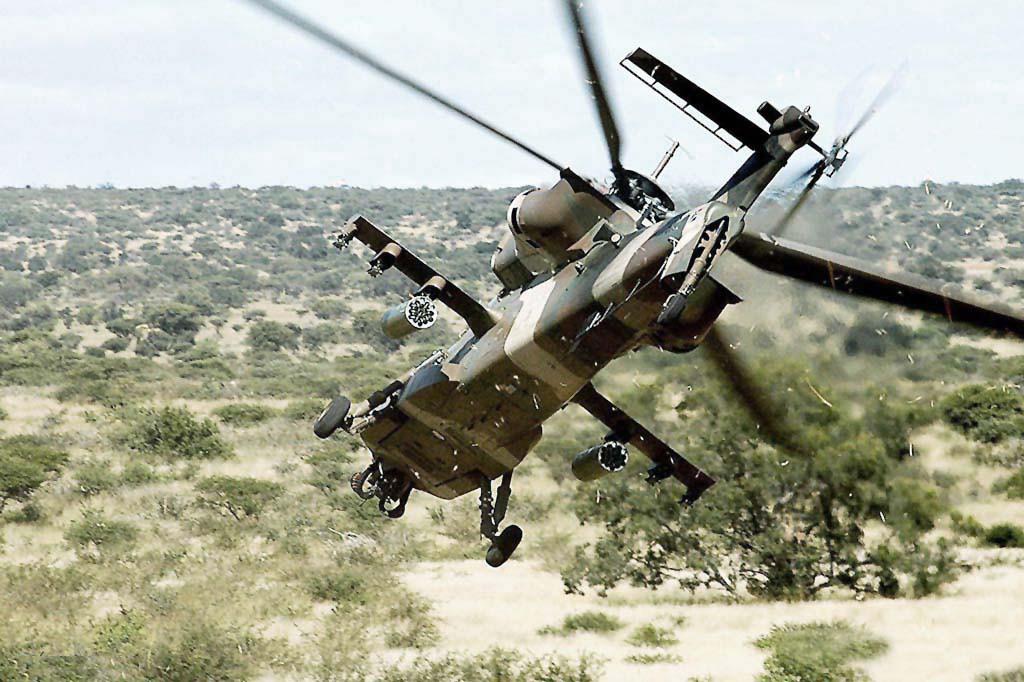
THE WALK-ROUND
The Rooivalk has an imposing bulk, yet despite its size, preflight access is reasonably easy. The airframe has many large access panels which make inspection simple, and no tools are needed. The stub-wings and cowlings can be stood on, and no ground support equipment is needed.
To improve the pilot’s field of view the engines are further back than on the Oryx which formed the base for the Rooivalk design. This new engine position forced a transmission redesign.
Rooivalk was designed for close air support nap of the earth fliying.
December 2022 48
In the late 1970s South Africa’s war with Angola became increasingly heated and casualties mounted. South Africa urgently needed attack helicopters, however the arms embargo meant that they could not just be bought on the arms market. So South Africa had to design and build its own.
(South Africa was learning from the world: the American Apache suffered from flameouts due to rocket blast, so the Rooivalk engine location eliminated this problem.)
The Rooivalk uses two Turbomeca Makila 1K2 turboshaft engines which produce 1845 shp. The engines are manually controlled without the benefit of FADEC (Full Authority Digital Engine Control). Heat diffusors directed into the main rotor disk minimise its infrared signature.
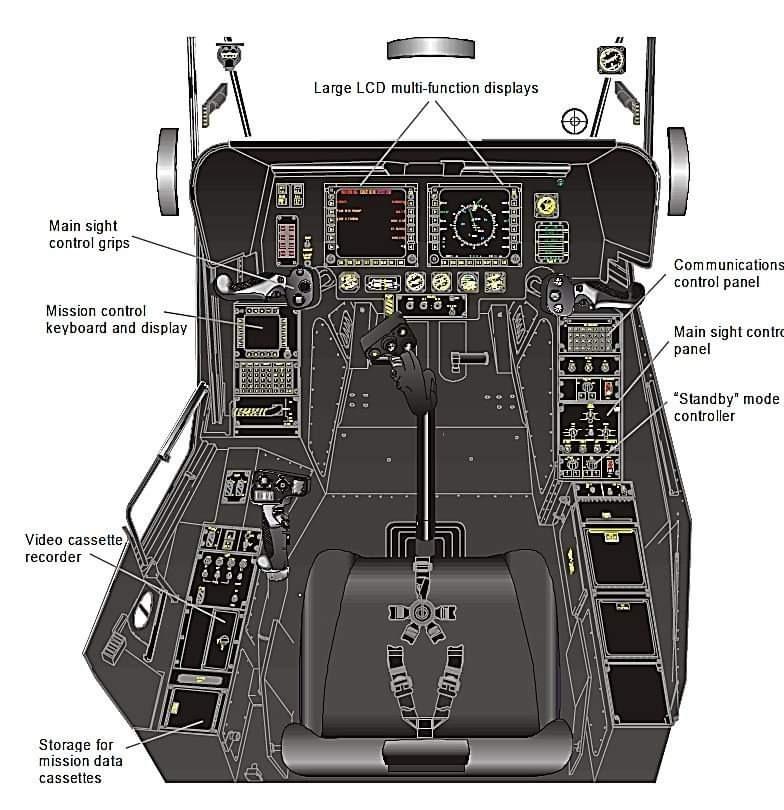
A seldom noticed feature is that it can carry two external seats fixed to the fuselage to be able to pick up the crew of a downed helicopter or two ‘brown-job’ troops if necessary.
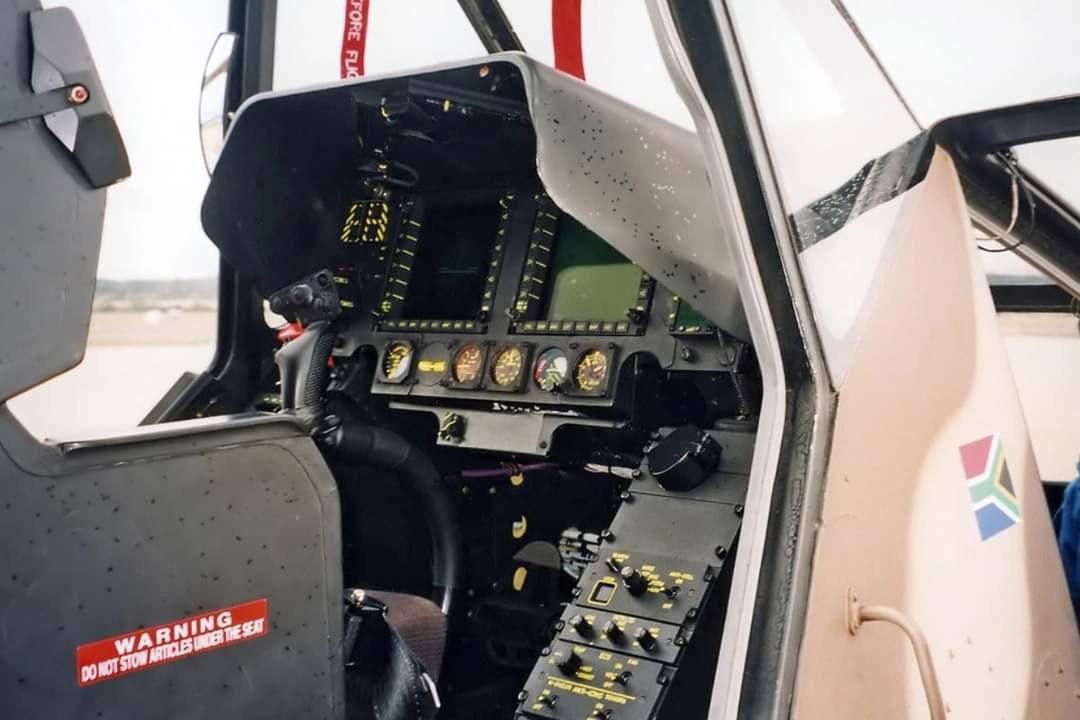
December 2022 49
The cockpit uses Multi Function Displays to control helicopter and weapons systems. The seat is bullet resistant.
The complex cockpit layout.
Other than the daily preflight, the Rooivalk requires a periodic inspection every 10 flight hours. Maintenance is to the military ‘on condition’ standards, especially considering the many harsh environments the Rooivalk is designed to operate in. The Rooivalk is designed to operate with little logistical support for long periods, with just 5 or 6 mechanics supported by an Oryx. The ground crew’s task is made easier with onboard test functions and line replacement units.
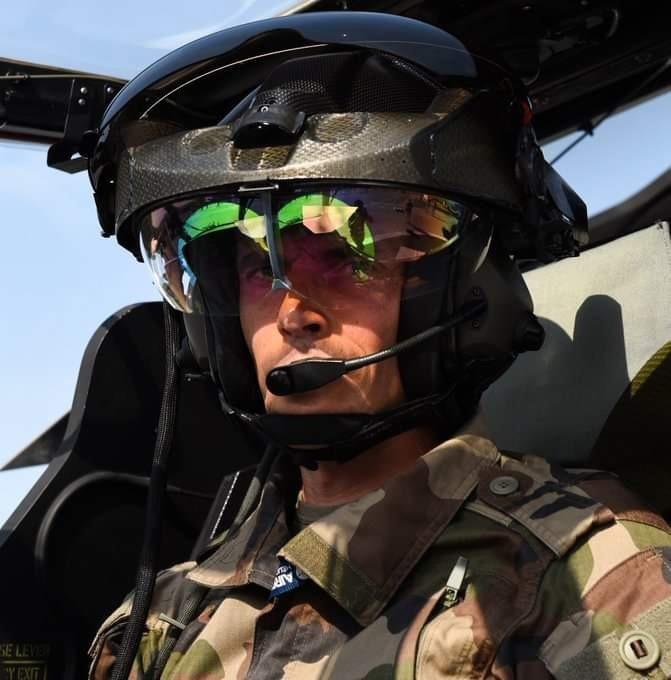
The landing gear is non-retractable and uses
long trailing arms. It was designed to be strong enough for high vertical speed arrivals of up to 10 m/s (36 km/h). A cable cutter has been installed in front of each gear leg, as well as above the cockpit.
This is an attack helicopter so it is all about its weapons carrying and using ability. The stub wings have six pylons under for a maximum of 2,032 kg of missiles, rockets and bombs. The huge array of arms carried depends on the mission. Missiles may be the wingtip mounted MBDA Mistral (air-to-air) or the Mokopa ZT-6
December 2022 50
The very advanced - and heavy - helmet mounted sight is the key to the weapons systems.
long range anti-tank guided missiles. Rockets include the 70mm FZ-90, FFAR (folding fin aerial rockets). Unmissable is the huge 20mm cannon under the nose, which aims where the pilot looks. (We have a picture of it aimed directly at our meek Cessna C182, ZS-FPI, while flying in formo with the Rooivalk back from AAD in Cape Town).
a tankbusting battlefield dominator was being hatched
THE COCKPIT
Unlike two-seat fighters, the pilot sits behind the weapons systems officer. Both cockpits are completely separate and have their own environmental control as the cockpits are designed to stop poison
chemical entry.
The cockpits are not bullet proof. For crew protection the cockpits have armoured and crashworthy seats made of ceramic material. The seats have armour plated shoulder protection as well as bottom of pilot protection from small arms fire). The doors for both crew have an emergency opening system using explosive cords.
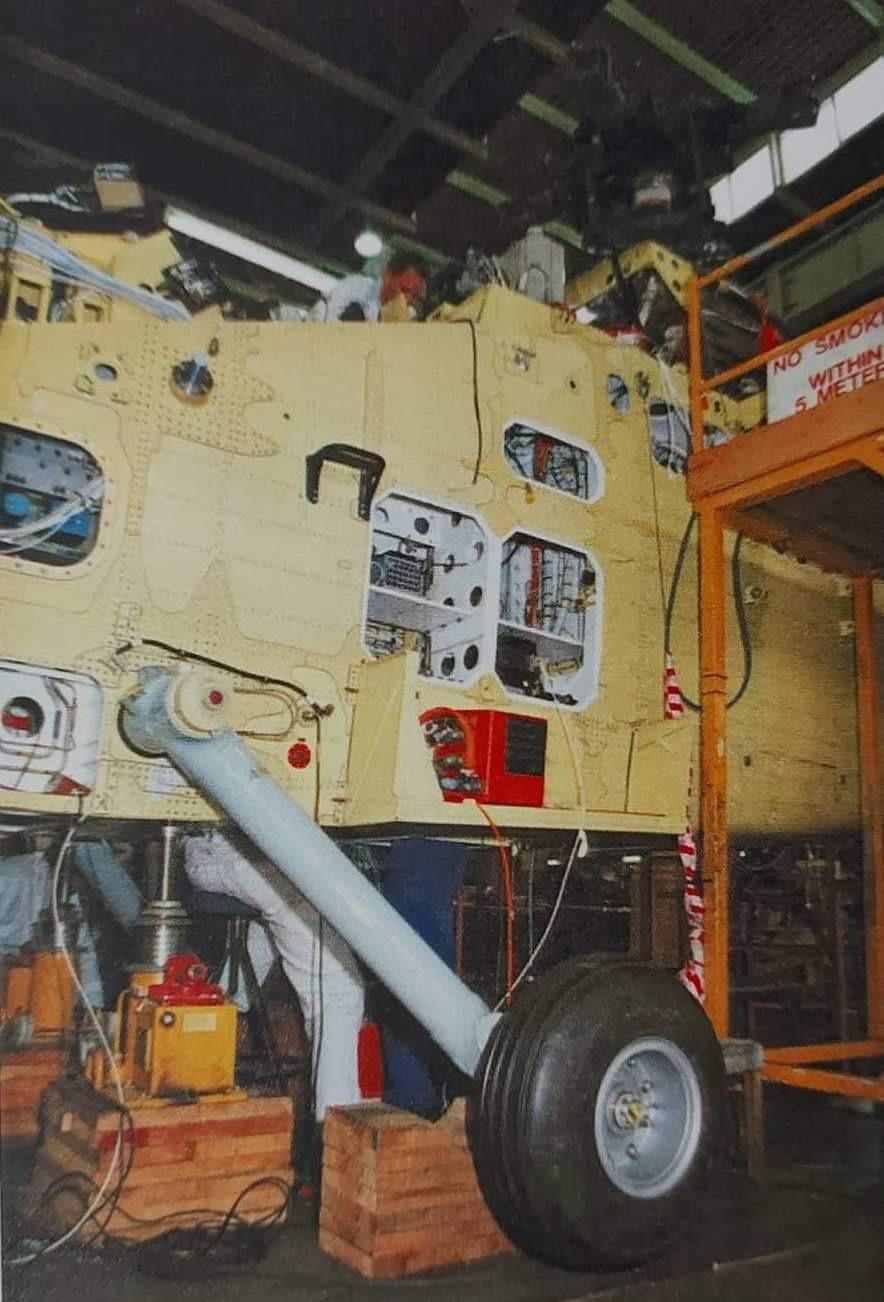
Both crew get a helmet mounted sight display (HMSD) that provides flight information and allows them to aim the 20mm gun and air-to-air
The underlying philosophy for the flight control design is that of HOCAS – Hands On Collective And Stick (the cyclic). Since the Rooivalk does not have the overhead roof panel with space for switchgear that the Oryx has, much of the switchgear has been integrated into the multifunction display (MFD). To enable the pilot to operate the systems without taking his (her too – there is a woman Rooivalk pilot) hands off
December 2022 51
Massively strong landing gear can absorb 10 ms impacts.
missiles just by turning their heads to look at the target. There is a computerised fire control system and a mission control computer for each crew member.
the controls, required having many switches placed on the Collective and Cyclic. This is so complex that a ‘switchology simulator’ was built to train pilots on what switches are where, as quick response to changing situations demands precise selection without looking down inside the cockpit.
The Rooivalk was specially designed to perform low altitude flying – between 5 and 15 metres agl. In particular, ‘nap of the earth’ flight, which is below 5 metres and uses ground features to conceal them when stalking a prey. For this, it has a groundtracking Doppler radar. There are also electronic counter-measures (ECMs) coupled to chaff and flare dispensers.
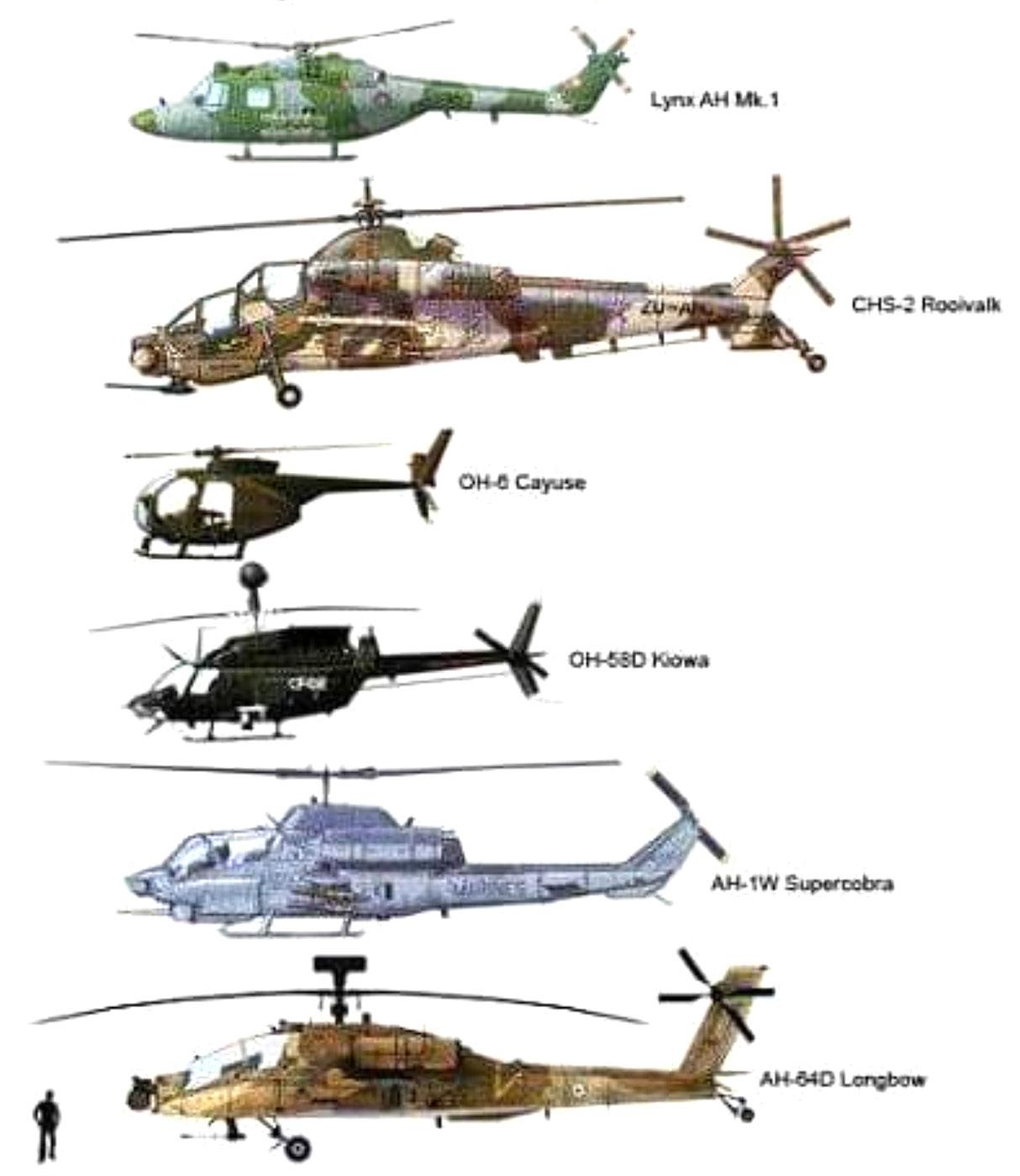
The avionics are fully digital and incorporate night vision goggles. In an article on Rooivalk development, test pilot Charlie Marais points out that South Africa was at the forefront of developing binocular NVGs – by mounting the cameras on the sides of the helmet. The multi-function displays allow the aircrew
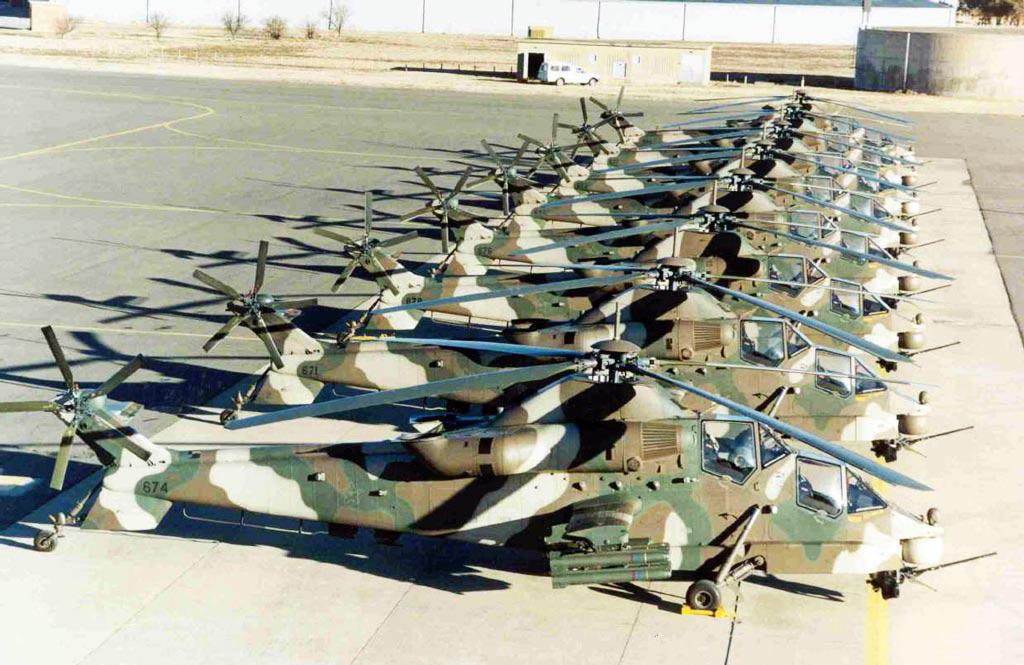
December 2022 52
The Rooivalk may be the biggest attack helicopter.
Eight of the 12 Rooivalks finally delivered.
PRE-FLIGHT
Rooivalk Mk1 with full traditional weapons loadout. Visible is the MISTRAL ATAM launcher, M159 rocket launcher pod, ZT-6 Mokopa ATGM and GIAT 20.
to switch between navigation, flight control, weapons control, threat warning and imagery from the sensors.
There is a four-axis digital automatic flight control system (the fourth ‘axis’ being the power control). The autopilot uses both GPS and inertial navigation and is coupled to ring laser gyros with navigation and position input from: a radar altimeter, eight-channel GPS, Doppler velocity sensor, magnetometer heading sensor, air data unit and an omnidirectional airspeed sensor.
All of these systems are linked to a dual redundant navigational computer and autopilot. The one-touch feature for auto-hover, altitude hold, navigation to target and target orientation is based on the main sighting system. As an added safety feature, these systems allow the aircrew to recover from vertigo which could occur during night time low-level tactical operations or poor weather.
For such a large and complex helicopter, the preflight is surprisingly straightforward. The glass windows for the engine oil and hydraulic fluid levels are easily accessible. The steps for mountaineering to inspect the rotor hub and blades are sturdy and well positioned. Showing its age in terms of helicopter rotor design, the main rotor has four blades on a semi-rigid head.
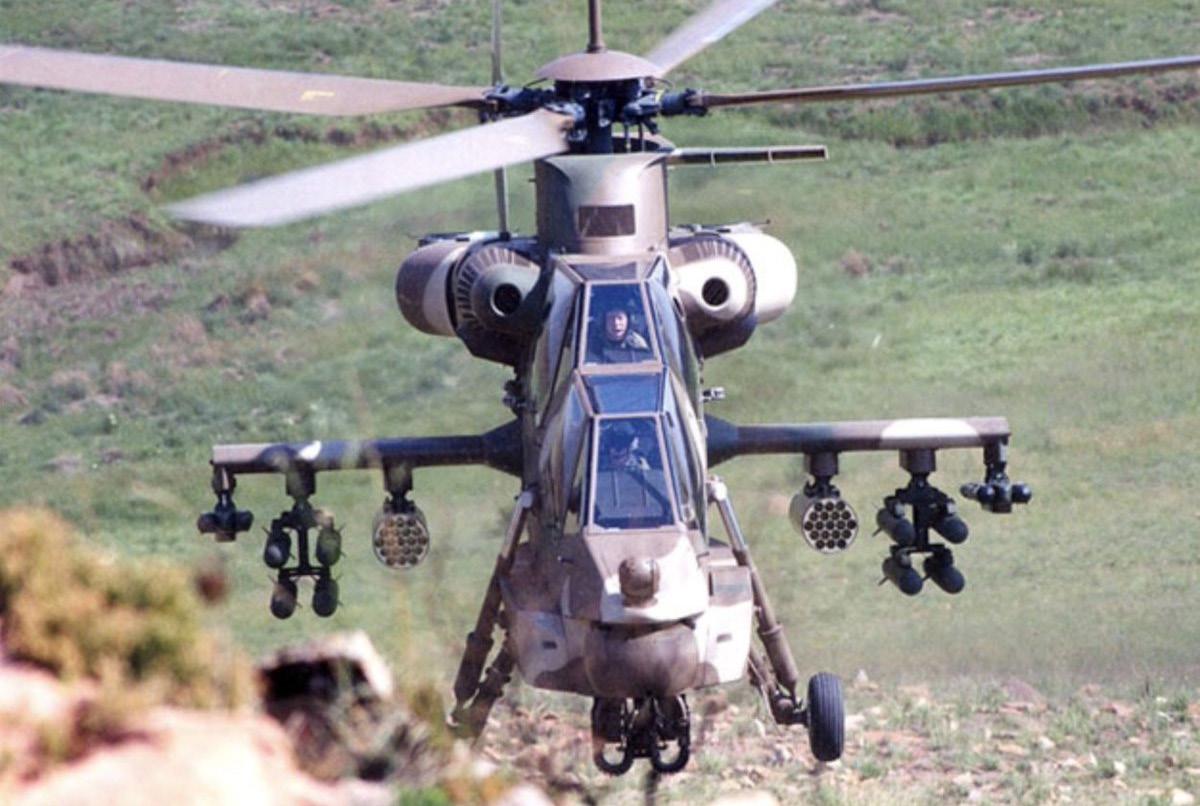
the helicopter would be an artillery piece in the air
Perhaps surprisingly, although there is double redundancy for almost every system, in the Rooivalk the pilot (and the main and tail rotors) are a single point of failure. WSOs are not trained to fly or land the helicopter in the event
December 2022 53
of pilot incapacitation. This is reportedly because the helicopter is so demanding to fly that the WSOs would need to attend a full pupil pilot training course.
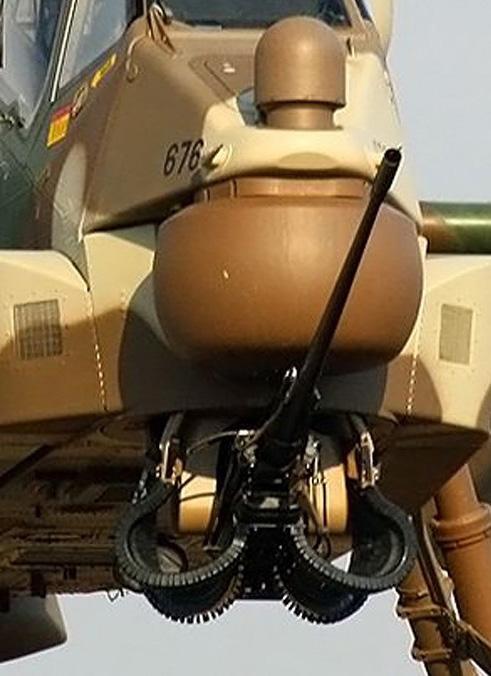
FLYING THE ROOIVALK
Standard pre-start checks require: switches off; instruments: check volts, check fuel flow levers closed, and then move through the rest of the checklist.
With the cyclic in the neutral position and the collective locked down, you are ready to start the first engine. For those familiar with the bigger French helicopters, starting the Rooivalk will hold no surprises: Engage the starter while moving the fuel lever slowly forward to the Start position. Watch the needles rising while listening to the turbine spool up.
Engine One generally starts a little hotter than Engine Two, and the turbine inlet temperature, or T4, rises quickly. A slight adjustment on the fuel lever ensures that the engine starts within limits. As the gas turbine rpm reaches 40%, the starter can be released, and once the engine oil reaches operating temperature, switch to flight idle; there’s no need to warm up the engine at ground idle.
Repeat for the second engine – but with a helmet on and Engine One engine already turning and burning you can’t hear the second engine and have to rely on the gauges to monitor the start up.
With both engines running, and all temps and pressures in the green, you are ready to lift. Raising the collective slowly, you get light on the undercarriage. The Rooivalk hovers slightly right
side low, as can be expected with the clockwise rotating rotor. At Bloemfontein’s 4500 ft, with an outside temperature of 25 degrees C, two hours fuel and no armaments, there is more than plenty of power to spare.
All the controls are powered by a dual hydraulic system and with the loads trimmed off the cyclic, control inputs are responsive and light. Flying straight and level you pick up speed but with a noticeable increase in vibration and noise.
For normal ops the Rooivalk cruises at about 120 KTAS at 5000 ft. At mission weight it has a high-speed cruise of 150 KTAS (278 km/h) and a top speed of 167 KTAS (309 km/h). It can fly sideways at 59 knots and backwards at a very impressive 86 knots. In his handling notes
December 2022 54
The business end features a 20 mm helmet armed cannon that fires 700 rounds a minute.
Charlie Marais observes that; “actually no one knows the backwards limit. We sometimes overshot the targets, but this had no effect on the structural stability of the machine.” Flying backwards fast in likened to throwing a dart backwards as the tendency to weathercock is so strong. When you induce a side slip due to not flying exactly neutral with the tail section, the aircraft will weathercock around and there is nothing the pilot can do, but hold on. Fortunately the tail section of the Rooivalk was engineered to take serious sideways punishment, and when the designs were changed to more realistic flight parameters, the decision was made not to decrease the design rigidity as; “one never knows what the pilot may subject the machine to in operational conditions. I was part of the discussion and opted for these reasons to leave the design as is, with a relatively small penalty in weight.”
The Rooivalk’s two Turbomeca Makila 1K2 engines produce a combined 3690 shp, giving the helicopter a huge load carrying ability and climb and hover performance – as well as fuel carrying capacity for long rage operations. It has a standard endurance of 3h 25 minutes and 6h 50minutes with external drop tanks, allowing it to ferry 1260 km. Its combat radius (when fully armed) is 740 km with reserve fuel.
The empty weight of 5910 kg and a max takeoff weight of 8750 kg yields a useful load of 2840 kg. Typical mission weight is 7500 kg. The airframe is rated at +3.5/-0.5 G. This tolerance for negative -G is exceptional for a helicopter, particularly one as large as the Rooivalk, and
contributes to its surprising agility. Although full loops were performed in early testing, the preferred airshow display now uses a 15 degree off vertical incline to reduce stress on the blade control rods. From the side this incline is not visible to airshow spectators.
In theory, using performance data based on the Oryx with less powerful engines, at typical operating weights the Rooivalk can climb at 2000 fpm, and at light weights 4,000 -5,000 fpm is possible. However, because the Rooivalk
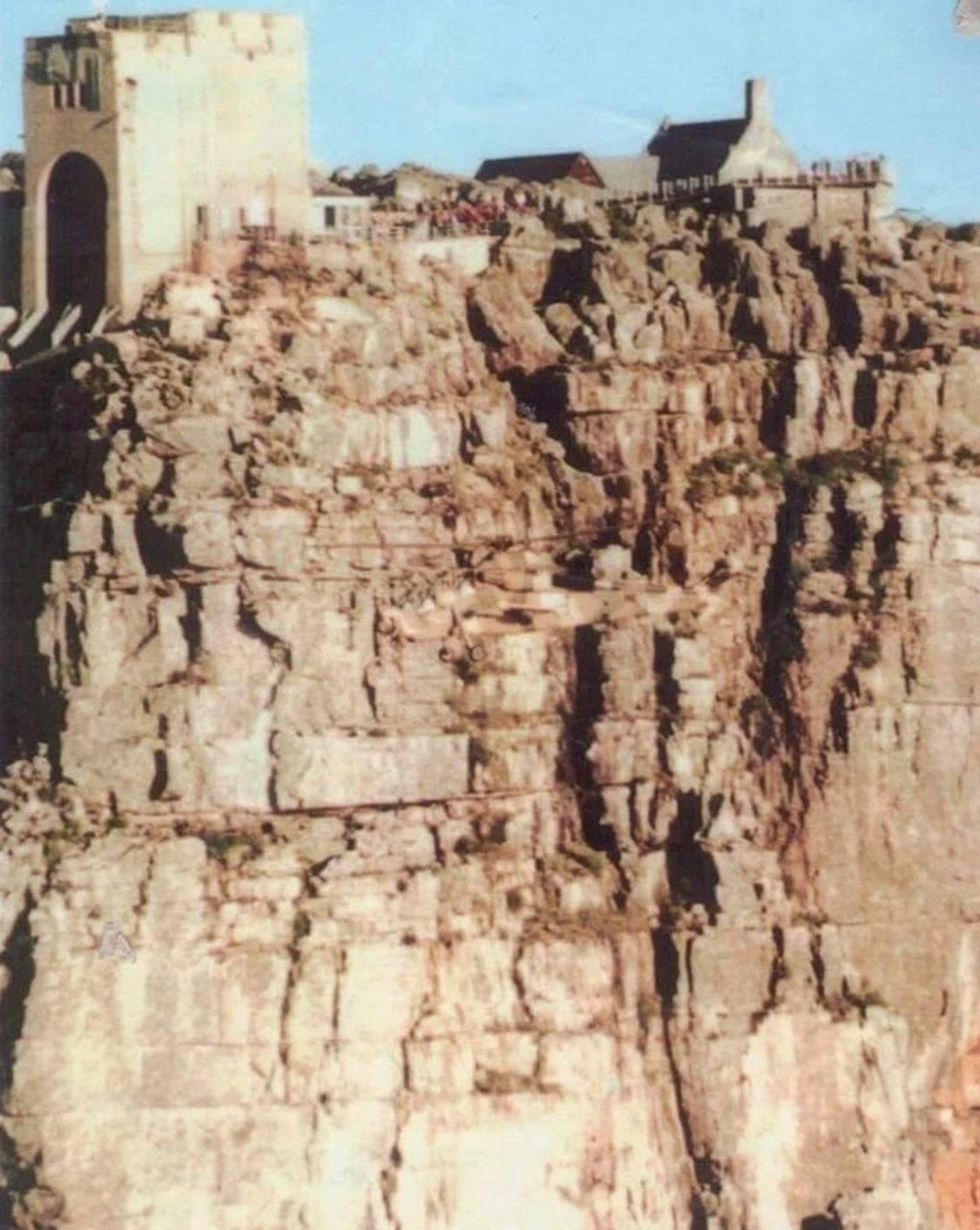
December 2022 55
so complex that a ‘switchology simulator’ was built
A famous image showing the Rooivalk blending into Table Mountain.
was never intended to fly higher than a few metres agl, rate of climb was never tested. Charlie Marais recalls how this theoretical rate of climb led to a contest between Oryx pilots and Cheetah ‘vlamgatte’.
The race was to 10,000 ft. The Cheetah had to start from brake release and the Oryx from a hover in ground effect. The Oryx got to 9,500 ft first, but then the Cheetah rocketed past, doing more 40,000 fpm by trading speed for height.
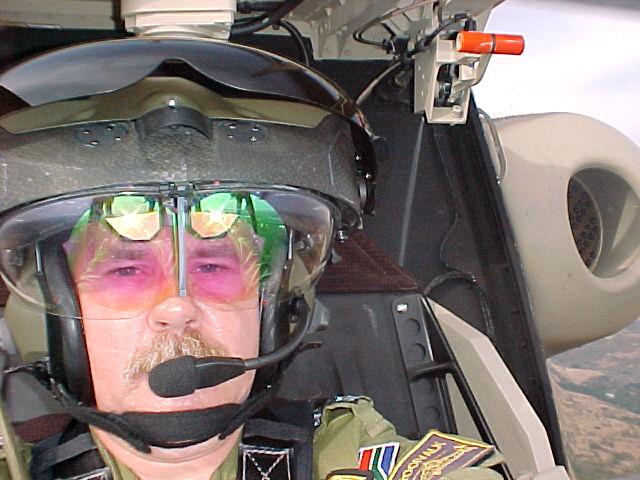
at typical operating weights the Rooivalk can climb at 2000 fpm
Hover out of ground effect (OGE) is very much weight dependent and again, is academic, as Rooivalk doesn’t carry oxygen, so pilots were limited to 12 000 ft. this service ceiling is however purely academic as Charlie Marais is adamant that
Autorotations are flown at 60-70 knots and there is plenty of energy in the rotor system for a soft landing. The long travel trailing arm undercarriage with shock absorbers and big wheels make run-on landings a pleasure. Forward pressure on the cyclic allows for a smooth taxi towards the hangars.
Shut down doesn’t take long. Park brake is applied and the fuel flow levers set to ground idle. All other electronics are switched off, and the two big Turbomecca engines only need a minute’s cooling before shut down.
December 2022 56
Rooivalk pilots suffer from nose-bleeds and altitude sickness above 200 ft!
j
Charlie Marais in the Rooivalk - he has 650 hours on type.
Specifications and Performance
Denel CH-1 Rooivalk
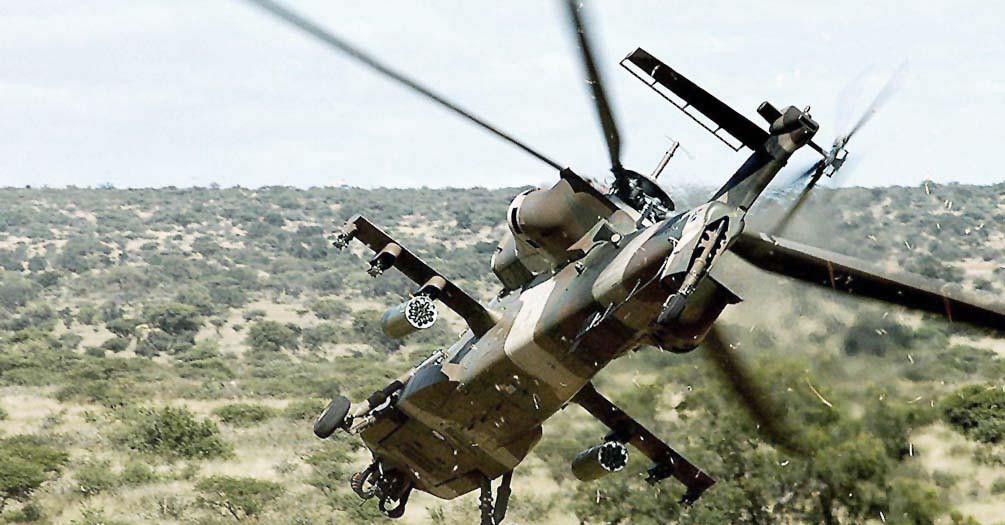
Specifications
Crew: 2 (pilot & weapon systems officer)
Length: 16.39 m (54 ft) fuselage only
Height: 5.19 m (17 ft 0 in)
Empty weight: 5,730 kg (12,632 lb)
Gross weight: 7,500 kg (16,535 lb)
Max takeoff weight: 8,750 kg (19,290 lb)
Fuel capacity: 1,854 l (490 US gall)
Powerplant: 2 × Turbomeca Makila 1K2 1,420 kW (1,900 hp) each
Main rotor diameter: 15.58 m (51 ft 1 in)
Main rotor area: 190.6 m2 (2,052 sq ft)
Blade section: NACA 0015[30]
Performance
Cruise speed: 278 km/h (173 mph, 150 kn) at sea level (max cruise)
Never exceed speed: 309 km/h (192 mph, 167 kn)
Range: 740 km (460 mi, 400 nmi) at sea level (max cruise)
Service ceiling: 6,100 m (20,000 ft)
Rate of climb: 13.3 m/s (2,620 ft/min) Armament
1 × F2 20 mm
700 rounds 8 or 16 × Mokopa ZT-6 long-range anti-tank guided missiles 4 × MBDA Mistral air-to-air missiles, 38 or 76 × 70 mm rockets folding fin aerial rockets (FFAR) or Wrap-Around (WA) FZ275 LGR Laser Guid+A15:B29ed Rocket
cannon,




Forms will be accessible 24/7
the world Improved response time to customer queries Faster retrieval time for records
turnaround time online applications. seamless service www.caa.co.za
from anywhere around
Faster
ROOIVALK GOES TO WAR
- AND PROVES ITS METTLE
WRITING FOR THE African Defence Review, our Defence columnist Darren Olivier says, “On 4 November 2017 at around 17h00 Congolese time, two South African Air Force Rooivalk Mark 1 helicopters attached to the UN’s Force Intervention Brigade flew the Rooivalk’s first ever combat mission. The helicopters fired multiple 70 mm rocket salvos against M23 bunkers near Chanzu in a mountainous region close to the Rwandan border.”
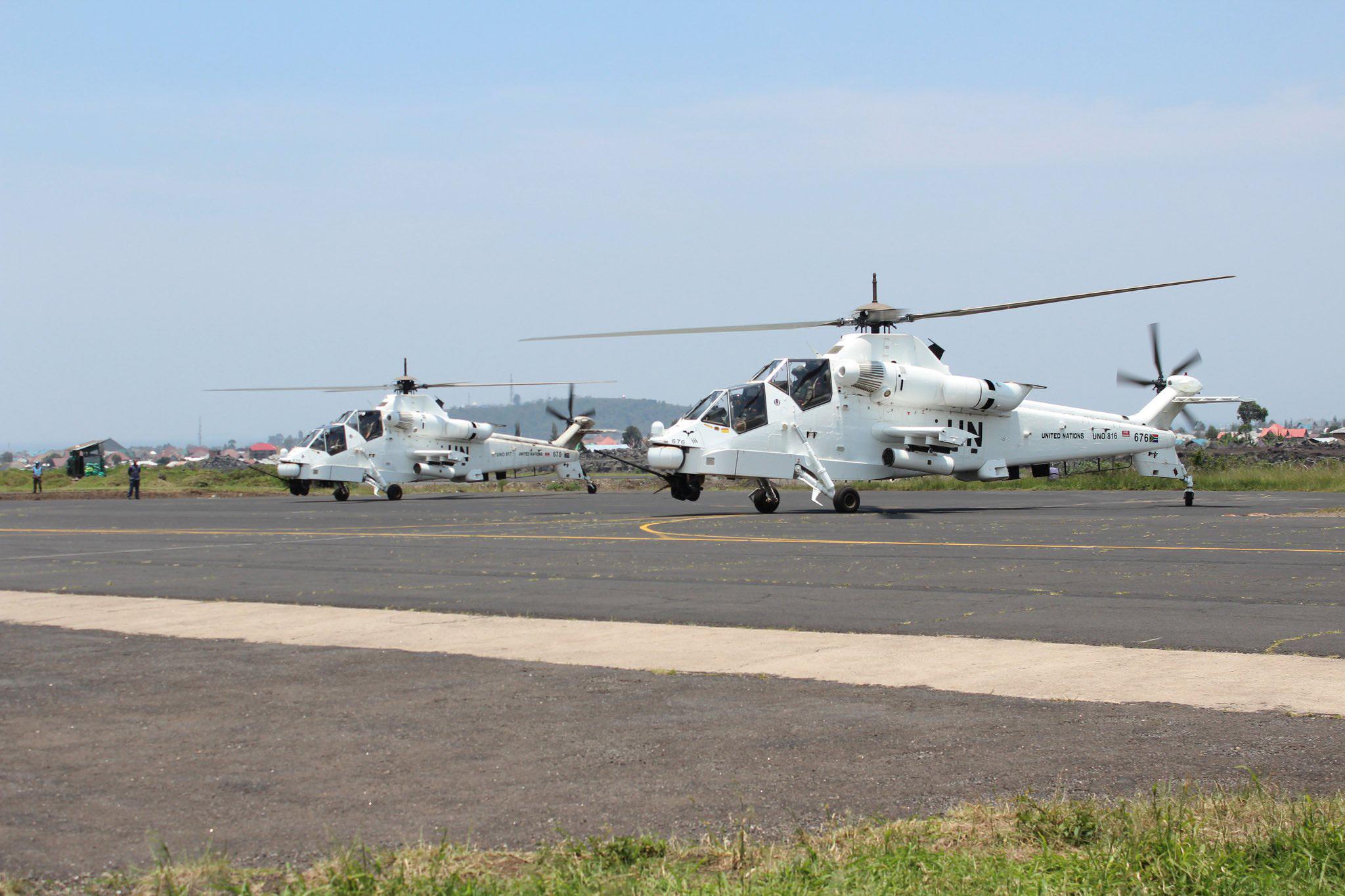
This was first time the Rooivalk had been used in anger in a hostile war situation.
“Early reports from sources in the area indicate that the action was successful, with the Rooivalks’ tactical approach through the clouds taking the M23 defenders by surprise and their rocket fire being accurate enough to disperse them and destroy one of the 14.5 mm antiaircraft guns that had been previously used to fire at the Rooivalks and other helicopters.
December 2022 60 DARREN OLIVIER
A pair of Rooivalk helicopters in the DRC at North Kivu for Search and Rescue, and airstrikes missions.
“The attack was combined with a renewed FARDC assault and subsequent claims by the DRC government that the remaining M23 senior commanders have now fled across the border into Rwanda. However this could not be independently verified.
This is the first time Rooivalk helicopters have engaged in combat since the prototype’s first flight 23 years ago. The Rooivalk's ability to fly different flight profiles and to better handle night flying and bad weather conditions owing to its FLIR sensors means they complement rather than replace the Ukrainian Mi-24P Hinds that were already in use against M23.
FIB ground troops including SANDF soldiers engaged M23 in and around Kiwanja earlier on in the rout of M23 and their presence as a blocking force on two of the three fronts established was crucial in closing off routes to M23 and in freeing up FARDC soldiers to go on the offensive.
“The next group to be targeted is likely to be the FDLR. They're a considerable threat: Thousands strong, with some senior commanders who have been fighting continuously since being part of the Interhamwe who committed the Rwandan genocide in 1994. FARDC and the FIB still have a very difficult task ahead of them as they continue to fulfil the UNSC Resolution 2098-authorised mandate to neutralise all illegal armed groups in the eastern DRC.
“Although MONUSCO has just less than 20 000 troops in total, very few of those are available for direct combat in the Kivus as they're needed elsewhere for ongoing operations to stabilise other parts of the eastern DRC.
On 5 November Reuters reported that "M23 have decided to lay down their arms and continue forward with dialogue only" and that the group would willingly submit to disarmament.
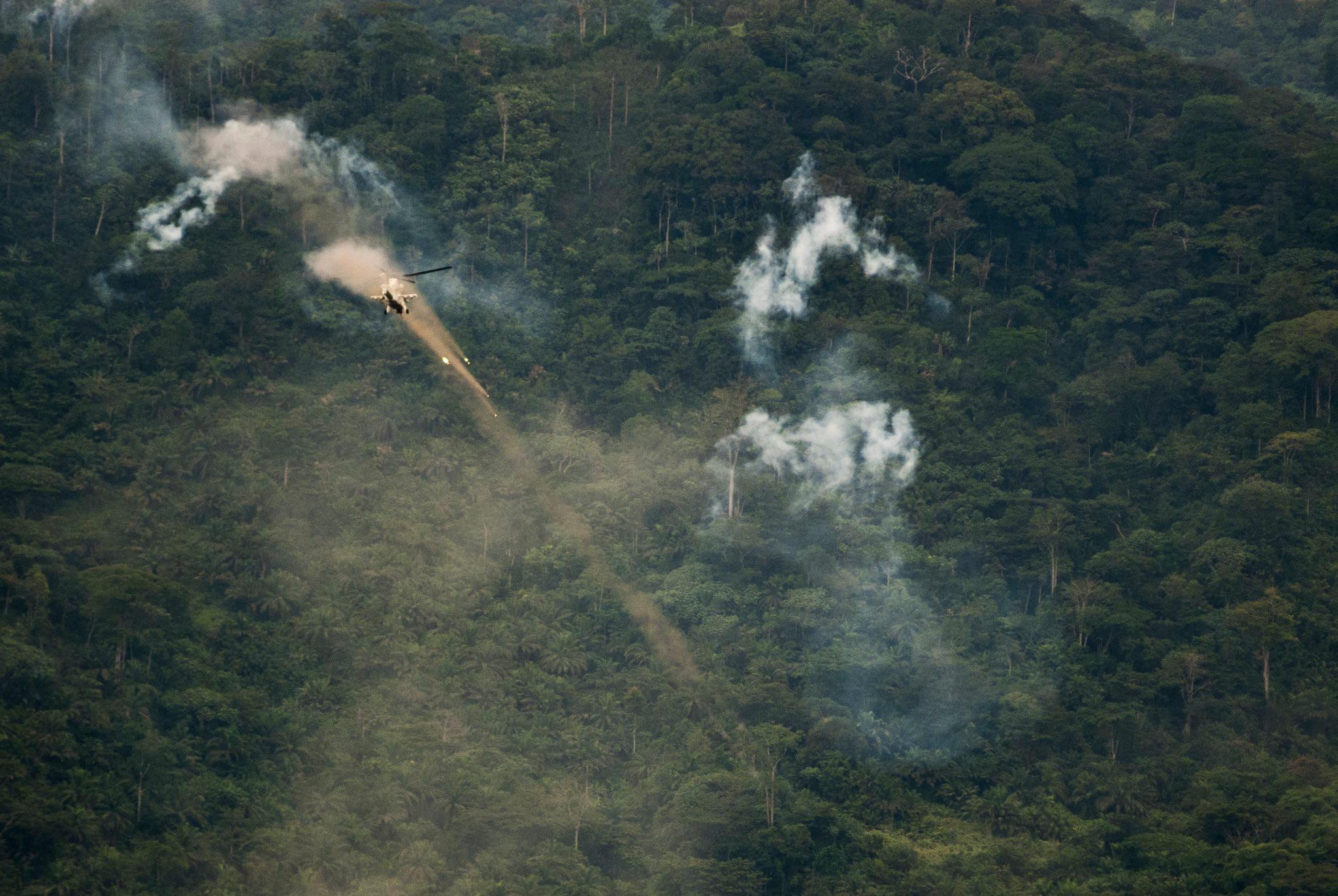
December 2022 61
j
A Rooivalk unleashes a salvo of rockets in the eastern DRC.
ROOIVALK’S LONG DEVELOPMENT
THE REQUIREMENT
In 1984 the then SA government decided to manufacture its own attack helicopter. This home-grown helicopter’s mission included the very long and demanding list of:

• Survival in a high-threat regime.
• Commonality with the existing Oryx helicopter fleet.
• Quick response.
• Day and night operability.
• Low pilot workload.
• A precision navigation suite.
• Simple “in-the-field” maintenance.
• An operational lifespan of 30 years.
• The ability to come quickly under existing army command, control and communications systems.
• Fly 5-15 m above the ground for 95% of its lifetime.
• Ferry long distances.
• And to be built using the existing industrial capability of South Africa.
December 2022 62 GUY LEITCH
A rare photo of the Atlas XH-1 Alpha in flight.
Based on all those requirements, the new helicopter’s design philosophy centred around four pillars, namely: 1) Be hard to see; 2) if seen not to be hit; 3) if hit to sustain flight; and 4) if the flight could not be maintained, the pilots had to survive the crash.
In February 1985 a prototype built on the well proven Aérospatiale Alouette III ‘draadkar’ was rolled out. This was called the Atlas XH-1 Alpha. Using the Alo III’s dynamic components including; engine, main rotor gearbox, and blades, as well as the tail rotor assembly, the prototype featured a cockpit with the pilot and gunner in stepped tandem cockpits – just like a real attack chopper.
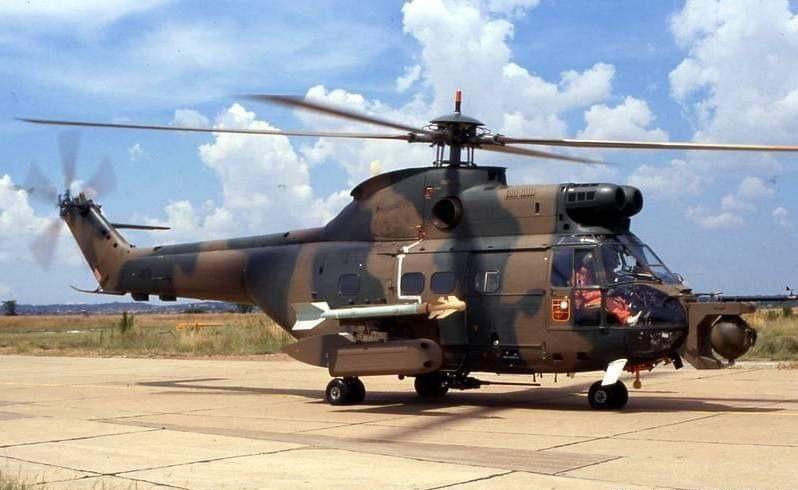
Unlike the Alo III, the prototype had a semimonocoque airframe. It featured a GAI Rattler 20 mm cannon on a steerable turret under the
belly, controlled by the weapons system officer’s (WSO) Kukri helmet-mounted sight.
In an article on Rooivalk development, test pilot Charlie Marais, who has more than 650 hours on the Rooivalk, notes that the Alpha was designed as a capability demonstrator and not a test bed for a helicopter to be built.
The Alpha XH-1 flew for the first time in a tethered hover on 2 February 1985 and then only a few more times within a very limited flight envelope. Although it looked like an unprepossessing mash-up, it was sufficient to prove the concept and thus convinced the powers that be that it was possible for Atlas Aviation to design and build a world class attack helicopter. Notably, in the end, none of the XH-1 components were used for the Rooivalk.
Atlas Aircraft Corporation had by then gained
December 2022 63
The Puma with stub wing missile, a chin turret and ventral cannon.
– just like a real attack chopper.
much institutional knowledge converting its French Aérospatiale SA330 Pumas to the Oryx, similar to the Super Puma. The Oryx provided the key components of the new helicopter’s dynamic systems such as the main rotor gearbox, main and tail rotors, and engines. Using commercially available components by-passed the arms embargo and meant that the SAAF saved massive development costs. Furthermore, maintenance and support would be much easier than having unique components.

as the intermediate gearboxes, were produced locally. Notably too for the rotor blades and tail rotor blades, South Africa could also produce these critical components.)
surpassed the minimum standards by far.
Crucially, South Africa had domestically produced the Oryx engines, called the Topaz, but the Rooivalk had the even more enhanced Makila engines. The main gearbox and tail as well as intermediate gearboxes were already manufactured in SA and any new parts, such
Charlie Marais writes, “To my best of my knowledge we had between 75% and 85% local content, meaning we manufactured, under contract, but we had the ability, and our manufacturing surpassed the minimum standards by far. As far as the intellectual property and engineering capability, probably 95% to 98% was purely South African. At that stage we were one of the world leaders when it came to technological and computing vision and talent. Our virtual development and drone development was first world.”
December 2022 64
The AS330 Puma showing the forward location of the engines which was changed for the Rooivalk.
The development of systems such as avionics and weapons required testing. This resulted in the purchase of two Puma 330Js to serve as testbeds. The first of these, Experimental Test Platform 1 (XTP-1), also known as Puma J1, flew in 1986. It was revealed to the public in 1987.
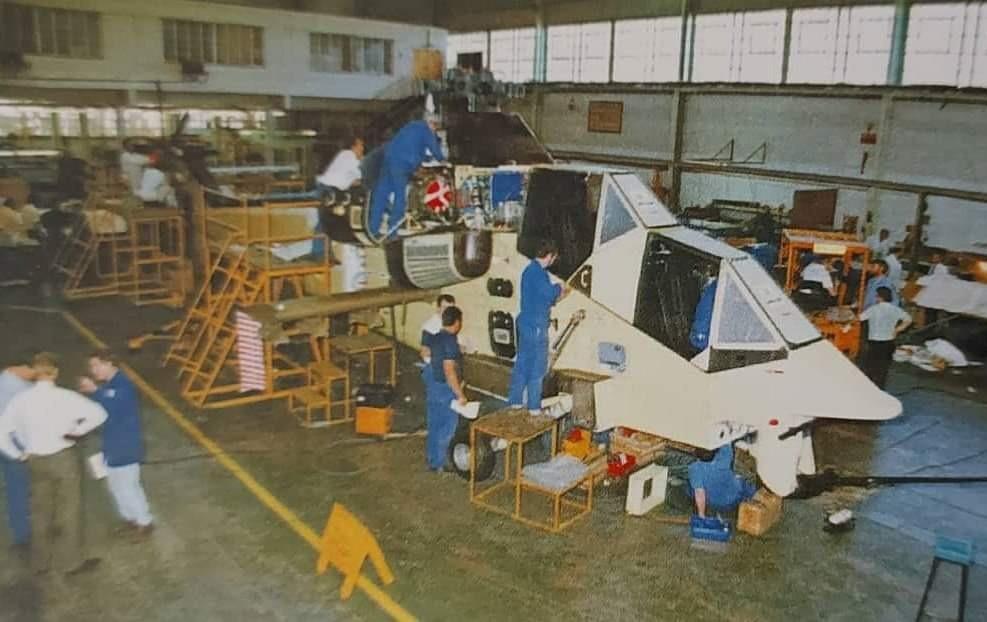
The second Puma, J2, was used to test the weapon systems with actual weapons firing. The results were impressive. Extensive testing was carried out on the blast effect of the ZT3 anti-tank missile and the recoil effects of firing the 20 mm cannon.
68 mm, rocket pods and two, four-tube, ZT3 ATGM launchers.
And then there was the ventral mounted turret with a 20 mm GA-1 cannon linked to a helmetmounted sight. The combined fire power was fearsome – indeed a tankbusting battlefield dominator was being hatched.
test the weapon systems with actual weapons
Both Puma Js featured stub-wings mounted, seemingly ludicrously, on the cabin doors – but in reality the doors were fixed closed and there was a massive carry through spar across the cabin. These stub wings carried two 18-round,
Two missile tests were conducted. The first, in December 1988, was to determine the blast effect of the ZT3 anti-tank missile on the helicopter’s tail boom and the accuracy of the weapon. The ZT3 missile hit a stationary target 5km away; just 450 mm off the target centre. The second test involved a combination of the 20 mm cannon, 68 mm rockets, and ZT3 missiles in determining the post-launch manoeuvres and different types of operations. The results were more than pleasing and the
December 2022 65
Puma testbeds
An early Rooivalk being built at Denel.
new helicopter was given the name ‘Rooivalk’, (Red Kestrel – or more accurately Rock Kestrel), and the prototype was rolled out in February 1990.
helicopter to fly with an MFD glass cockpit. The instruments used three multi-function displays (MFD), and the avionics system reduced pilot workload significantly.
THE FIRST ROOIVALK- THE EDM
The Engineering Development Model (EDM) was developed as a platform to incorporate lessons learned from the XDM and ADM. Design and development began in March 1993. The completed aircraft rolled out on 17 November 1996 and first flight was on 17 February 1997.
avionics system reduced pilot workload significantly
The purpose of the EDM was to qualify the avionics, weapon systems, airframe, and airborne systems before serial production could commence. With the EDM, the ammunition bins were moved to each side of the cockpit and the infra-red suppressor exhaust was directed upwards into the main rotor blades to dissipate the heat more efficiently.
Additionally, the EDM saw many structural changes, as well as weight reduction. It represented the beginning of the Rooivalk assembly line.
THE ADM
The contract for the Advanced Development Model (ADM) was placed in 1988 with its first flight on 22 May 1992. The ADM was used to verify the avionics design and implementation, weapons development, and integration platform.
The Rooivalk ADM would be the first-ever attack
Development inevitably took longer than hoped and by the time it was finished the Border War was all but over. Despite budget cuts and declining interest, the development of the CSH2 Rooivalk continued, with the paradoxical situation that it was the South African Army that now viewed the arrival of the new helicopter with greater interest than the SAAF. The Army had realised that the Rooivalk could replace expensive battle tanks so they provided the huge investment of funds necessary to save the Rooivalk programme.
The ADM made its international debut at the Dubai air show in 1993, followed by the Malaysia air show in 1993. In 1994 the ADM was displayed at the Farnborough Air show in England. With potential international exports in mind, the Rooivalk was developed according to US military requirements and standards, which would only require small adjustments to make it compatible with US weapons systems such as the Hellfire ATGM. Meanwhile, the SAAF was contemplating an order of 16 Rooivalks with an updated User Requirement Specification which specified a more powerful cannon and longerrange missiles.
In January 1999 the SAAF received the first AH-2A Rooivalk, as it was officially designated. In total only 12 helicopters were ordered, although the budget planning had been for 36 units. j
December 2022 66
ARMAMENTS – AND AIMING

THE ROOIVALK ORIGINS may be thirty years old, but it has a thoroughly modern weapons system. The aircrew’s helmet displays both flight and weapon data and can both cue the turret-mounted GI2 20 mm cannon and other armaments.
The stub wings have six pylons for a maximum of 2,032 kg of missiles, rockets and bombs.
For those keen to know the technical details of this immensely complicated and impressive weapon aiming system, the helmet-mounted sight display (HMSD), or TopOwl, incorporates an integrated measurement system to control the weapons.
The helmet makes use of electromagnetic tracking which allows the pilot or WSO to look
at a target, thereby directing the weapons on the target. The helmet has an integrated image intensifier and FLIR capability which can be switched over with the push of a button. Both helmets have two monocular display modules with integrated CRT which can project HeadsUp Display (HUD) information as well as video images into the crew member’s line of sight. This allows them to retain access to their HMDS information even when using NVGs. The pilot can access real-time imagery while flying nap of the earth.
Helmets of this capability must of necessity be huge and heavy. Charlie Marais says that all the Rooivalk pilots and wizzos (Weapon System Operator – WSO, but pronounced wizzo) had to go to France to have their heads precisely measured – including their hair length. The
December 2022 67 GUY LEITCH
The Rooivalk launching a salvo of rockets.
resultant fit is so accurate that the helmet literally fitted the pilots head with a light and even weight that felt more like a hand resting on the head.
The missile armament includes the wingtip mounted MBDA Mistral (air-to-air) and the Mokopa ZT-6 long range anti-tank guided missiles. Rockets include the 70mm FZ-90, FFAR (folding fin aerial rockets) and WA (wraparound) types. The 20mm dual feed gas operated gun in the chin turret can fire 740 rounds per minute and carries 700 rounds. The ammunition is high velocity with a muzzle velocity of 1,100 m/s.
The gyro-stabilized chin turret includes an automatic target detection and tracking system (TDATS), a TV camera, a laser rangefinder, a laser designator and forward looking infra-red (FLIR).
The nose-mounted gyro-stabilised sensor turret housing with auto-tracking contains the target acquisition designation sight known as the NightOwl system. The system consists of 3-FOV FLIR with automatic tracking, LLTV and laser rangefinder and designator. The three fields of view, which include thermal and low light displays, have a recording function with playback facilities and sight cueing. This allows for pop-up missile engagements based on target location recorded during high threat situations.
All armaments can be used by either the pilot or WSO, although the aiming of the Mokopa missile can be laser designated by sight, or from an external source. Charlie Marais points out that the Makopa could only be operated from the front seat, so the pilot would be engaging with rockets and guns. Thus the pilot can use cannon and rockets to suppress enemy fire while the WSO fires the Mokopa. The pilot and WSO cue the primary sight via their helmet sight and can show the another helicopter a target of opportunity or imminent threat.
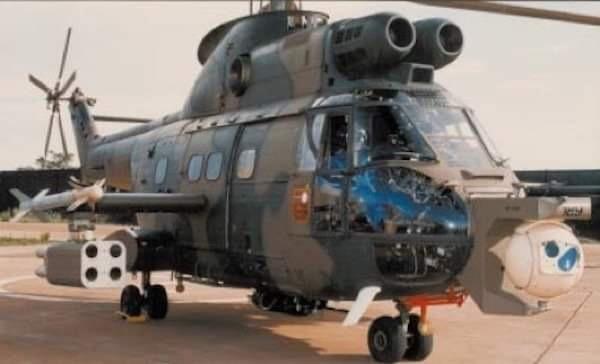

The fire control system (FCS) allows the flight crew to fly to the target ultra-low level, pop up, scan the surrounding area, drop back down and identify targets and attack or relay target information to another Rooivalk or ground forces via secure data link. Also, there is the muchliked fire and forget capability for targets up to 12 km away.
j
A rare lo-res image of testing the rocket pods on stub wings.
December 2022 68
Puma J with the odd stub wings for weapons testing.
WHY NO EXPORT SALES?
THE QUESTION MUST BE ASKED – if the Rooivalk is as good as the experts say it is –why did no other air forces buy it?
Denel (formerly Atlas) invested in a huge and expensive marketing campaign to secure export contracts for the Rooivalk, partly to amortise the huge investment made in the helicopter’s development.
Charlie Marais explains, “As we travelled the globe for sales, the Americans were there one to two days after we landed and after they met the client, we were screwed. Denel (and the government) expended billions on the development and testing of this product, they then gave the SAAF the helicopters at a ridiculous price; of around R80m. Yet the helicopter was already worth at least R200m. The SAAF had already invested money for fighter development, so when Denel gave these
machines away, the SAAF had no option but to take them.”
Politics and the role of industrial participation and offsets also plays the deciding role in arms acquisition programmes. Using various threats and incentives the USA pressured anyone interested in the Rooivalk to buy their AH-64 Apache instead.
The Rooivalk was invited to enter the competition for a “future generation attack helicopter” organized by the United Kingdom in 1994. Their test pilots, as did the Australian test pilots, rated the Rooivalk as the best and most stable platform. Further international flights were prescribed however loops and so on were not permitted as it was seen as an unfair advantage against the Americans which could not loop. And so America made deals with all our best prospects
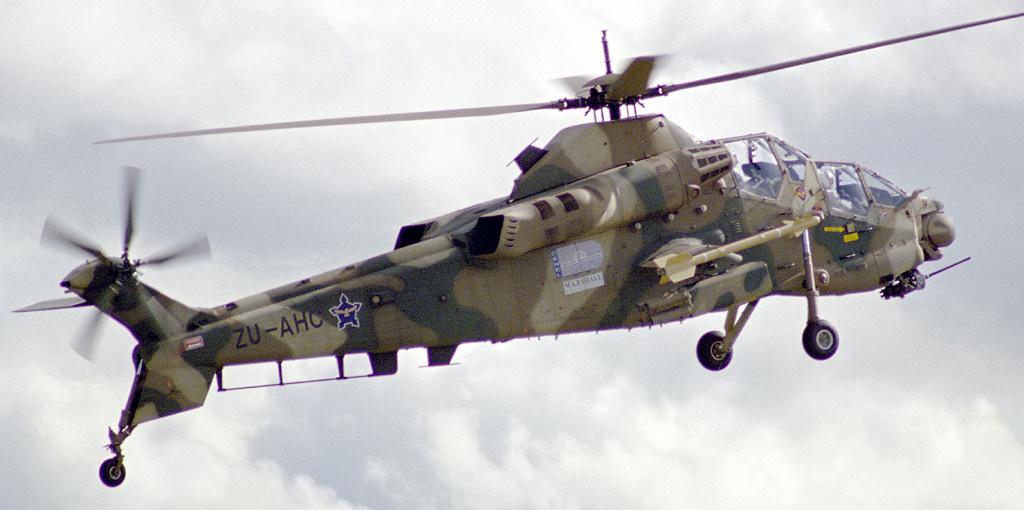
December 2022 69 GUY LEITCH
Rooivalk XH-2 on display at Farnborough in 1994.
In 1998 a maritime attack version equipped with Exocet missiles was offered to many countries, but always with a negative result.
The challenge was not just the Americans. Although of South African construction, many of the dynamic components are French and in the meanwhile the French had developed their own attack helicopter, the Eurocopter Tiger. This was a direct rival and so Eurocopter/Airbus Helicopters hinted that the components for the Rooivalk might not be available in the long term. This naturally deterred potential buyers of the South African helicopter.
The last big hope for the Rooivalk was a Turkish order – but that went to the Agusta A129 Mangusta. This despite Rooivalk having the lowest vibration footprint of all attack helicopters in the world due to a very clever locally designed vibration isolation system situated between the main gearbox and the fuselage.
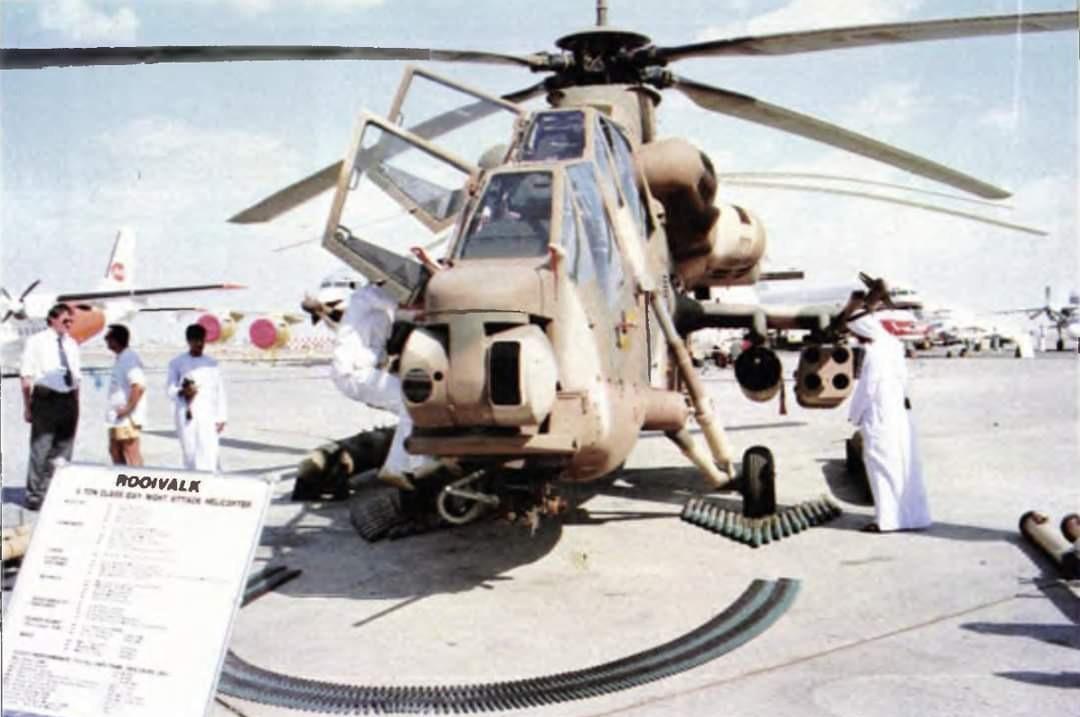
Marais avers, “The bottom line was that the French and Americans would rather sell their
helicopters at a loss than allow an African country to play on the international arms market. The Rooivalk sales had absolutely nothing to do with the standard of the equipment, the standard was internationally acknowledged and recognised, but not the business environment.”
In 2011, a programme to modernise and improve avionics and targeting systems was started to allow the use of guided missiles for the first time since their entry into service. In March 2013 the eleven remaining Rooivalk, (one had been written off in 2005 in a testing accident), were already modernized to the “Block 1F” variant. Three of these were deployed in a UN peacekeeping mission in the DRC in November of that year.
Denel is keen to restart production of a Rooivalk Mk.2, but would need at least 70 sales to make it economically viable. However, again there has been insufficient interest to generate any firm orders. Further – it is argued that Denel has lost too many key skills and experience to be able to update Rooivalk.
December 2022 70
Denel had a massive marketing campaign but it yielded no results. j
At Dynamic Propellers cc we overhaul and maintain all Hartzell, McCauley, MTPropeller, Hoffmann, Dowty, Sensenich, Whirl Wind and Hamilton standard propellers to include metal and composite blades. We do all maintenance procedures related to aircraft propeller overhauls as called for by the various propeller manufacturers including cadmium plating. Everything is performed in-house, including cold compression rolling on Hartzell propeller blades, as well as dynamic balancing of propellers in the field. Dynamic Propellers cc is an Authorised Service Centre for MT-Propeller and Whirl Wind.

Dynamic Propellers cc is also appointed as the sole McCauley Authorised Service Centre for the African continent. We carry a large stock holding of fast moving propellers, hubs, parts, de-icing parts, overhaul kits etc. in our inventory to cater for Hartzell, McCauley, MT – Propeller, Hoffman, Dowty, Sensenich, Whirl Wind and Hamilton standard propellers. We do a huge amount of travelling to local, domestic and neighbouring countries as well as abroad to cater for customer’s propeller requirements.

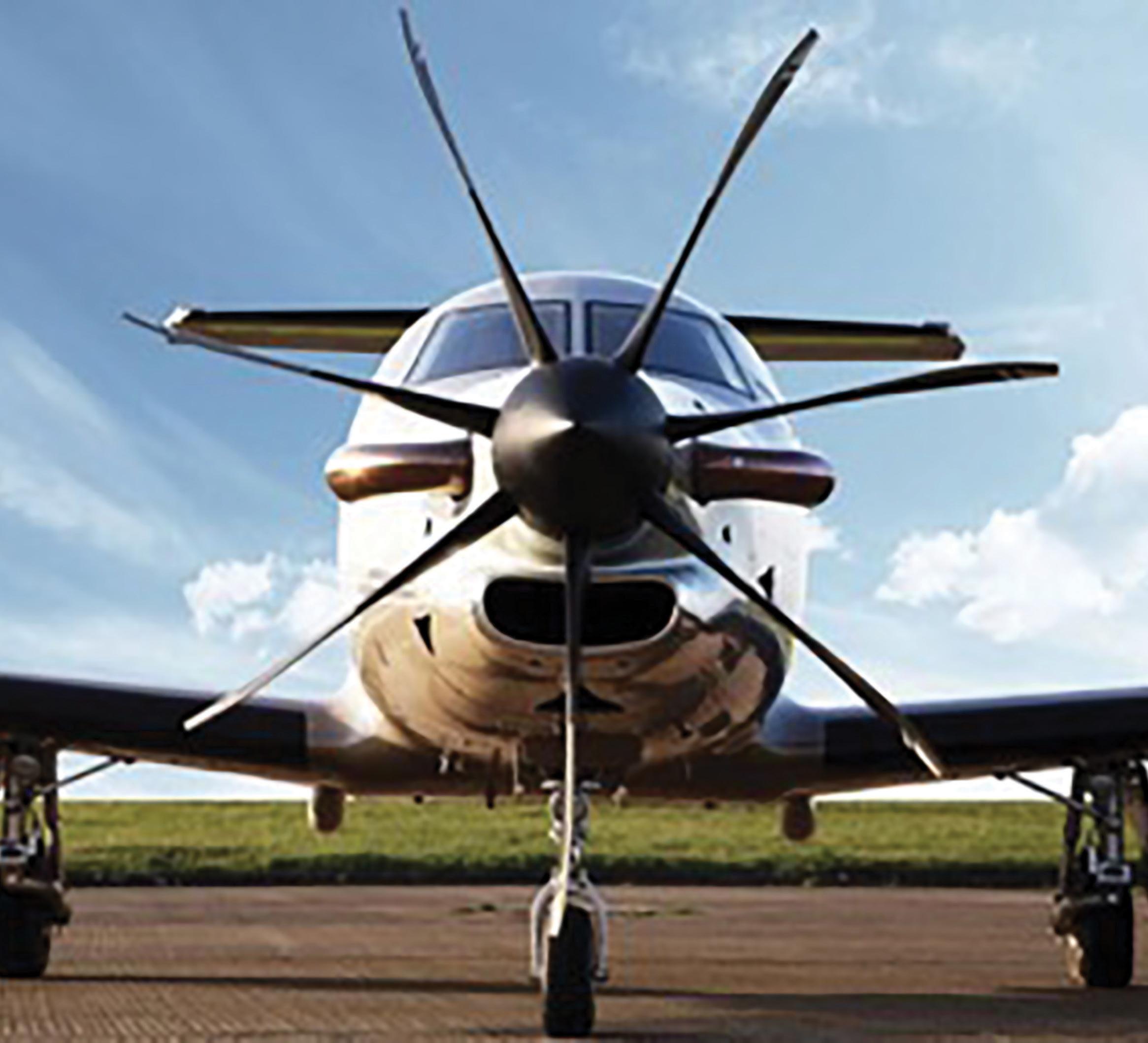
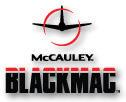
December 2022 71
www.dynamicpropellers.co.za • Tel: +27 11 824 5057 • Fax2mail: 086 548 2651 E-mail: andries@dynamicpropeller.co.za • Andries: 082 445 4496 0 5 25 75 95 100 Happy holidays and Best Wishes for 2023!
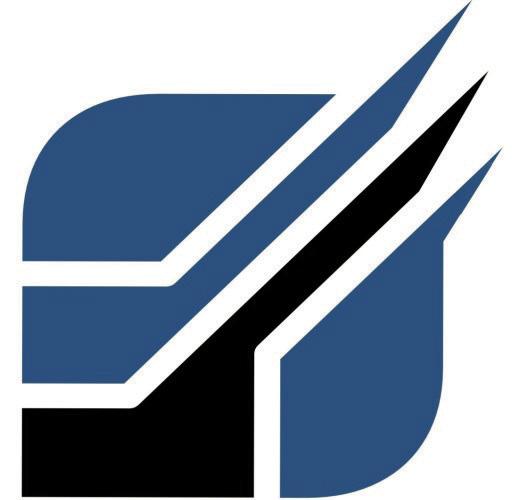
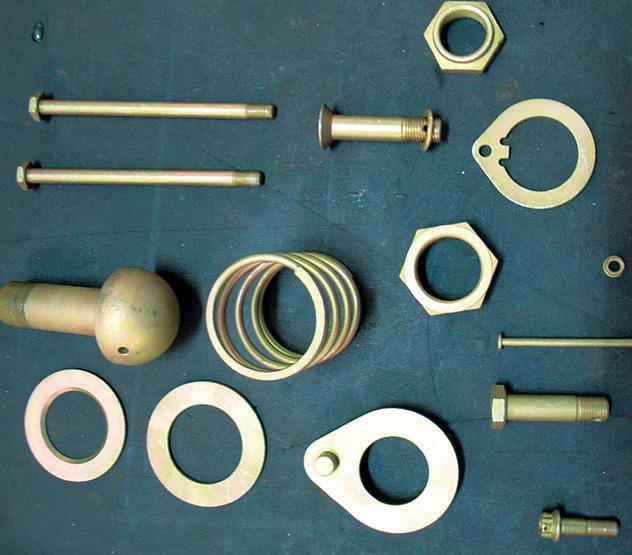
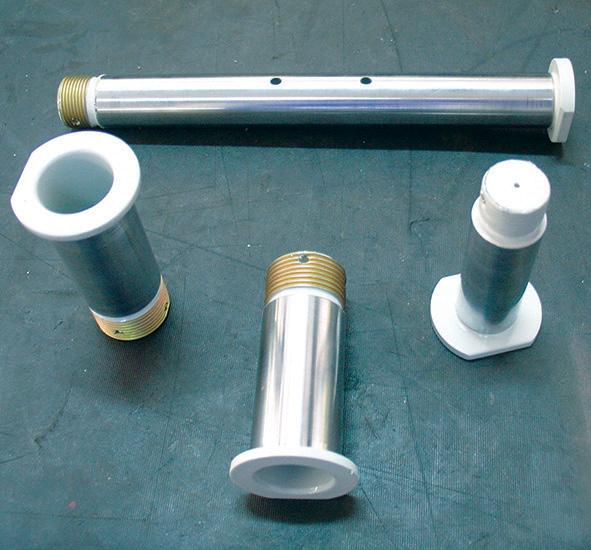
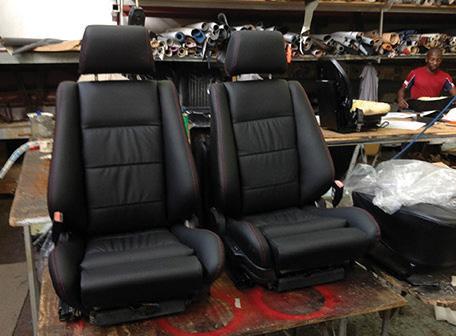



December 2022 72 AMO
506 For
all
your
SACAA
approved
We
are
situated
at
30B,
Building
Call
Des
on
011 827
7535
or
063 or
Peter
on
081 775
2434
or
083 For
all
your
Aircraft
and
Allied
Electroplating
AEROSPACE
ELECTROPLATING AMO
506 For
all
your
SACAA
approved
plating
requirements
We
are
situated
at
30B,
Building
98,
Rand
Airport.
Next
to
Fields
Airmotive. Call
Des
on
011 or
Peter
on
081 For
all
Cadmium Plate Clear Passivation Hard Chrome Hard Silver Plate Electroless Nickel Hard Copper Plate Anodising in Grey, Black Phosphating Phosphating AEROSPACE
ELECTROPLATING AMO
506 For
all
your
SACAA
approved
plating
requirements
We
are
situated
at
30B,
Building
98,
Rand
Airport.
Next
to
Fields
Airmotive. Call
Des
on
011 827
7535
or
063 r
Peter
on
081 775
2434
or
083 For
all
your
Aircraft
and
Allied
Electroplating
and
queries. Cadmium Plate in Gold, Silver or Clear Passivation Hard Chrome Hard Silver Plate Electroless Nickel Hard Copper Plate Anodising in Grey, Red or Black Black Phosphating For all your SACAA approved plating requirements Alodine Cadmium Plate in Gold or Silver Passivation Hard Chrome Hard Silver Plate Electroless Nickel Hard Copper Plate Anodising in Grey, Red or Black Black Phosphating Phosphating We are situated at 30B, Building 98, Rand Airport. Next to Fields Airmotive. Call Oliver on 011 827 7535 or Peter on 081 755 2534 or 083 208 7249 For all your Aircraft and Allied Electroplating requirements. SA Flyer 2022|12 May you enjoy a happy and prosperous New Year! Landline: 011 614 2471 Mr. Gomes: 082 412 6669 Carla: 083 602 5658 A Dynamic team to meet all your requirements. Refurbish your aircraft and / or helicopter. Best prices guaranteed Merry Christmas and Happy New Year!
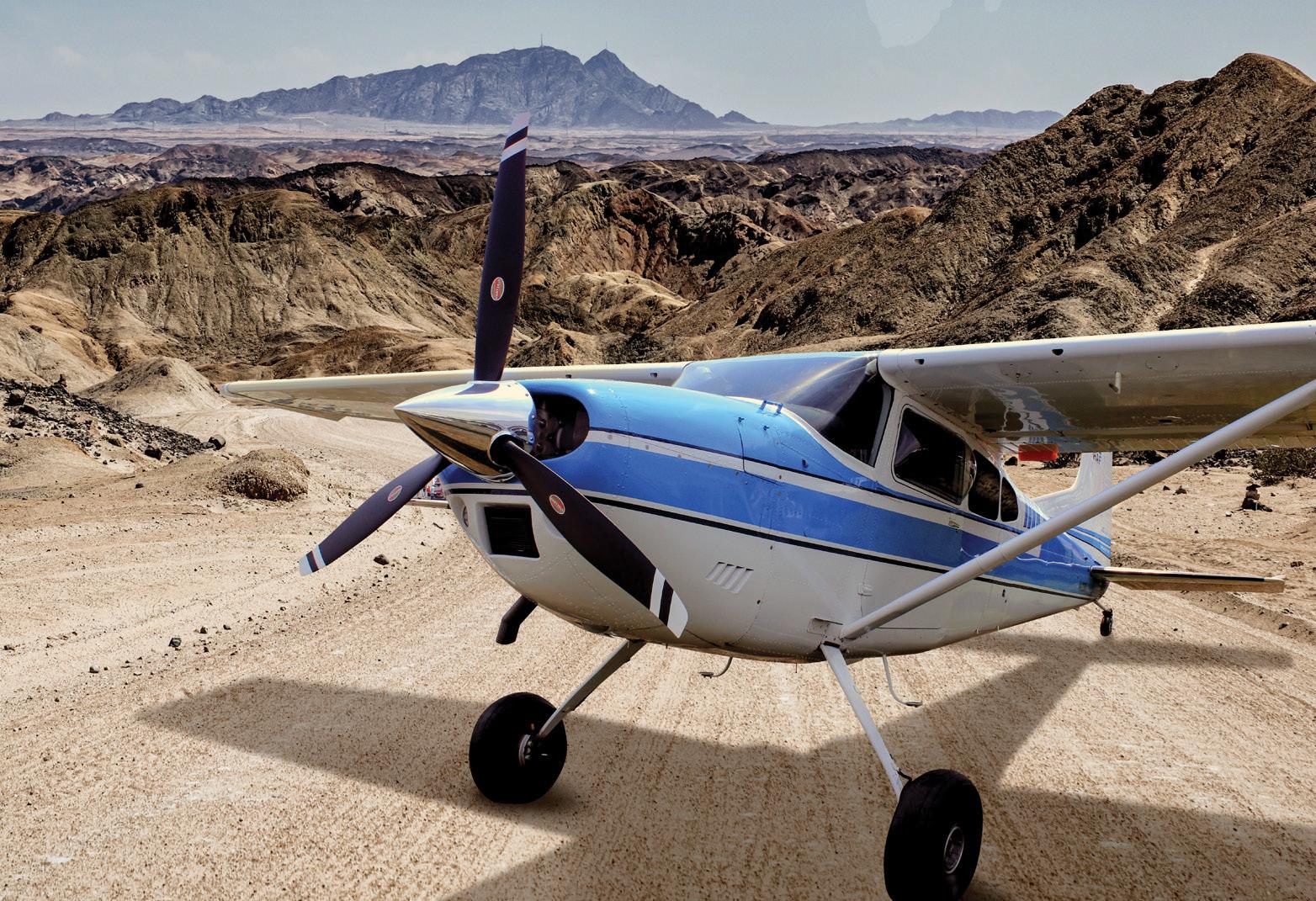
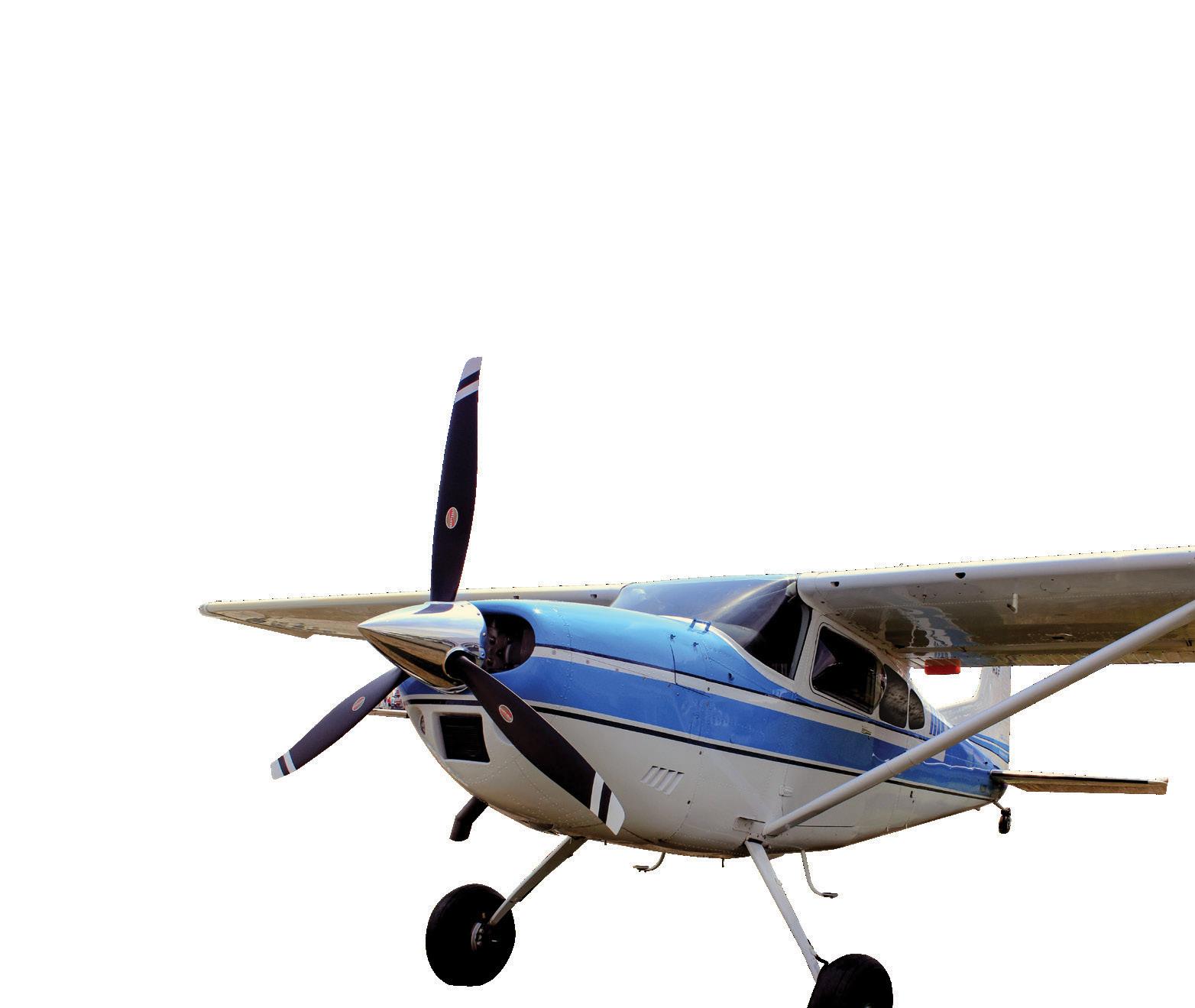




December 2022 73 +1 937-778-5726, Option 2 TopPropAfrica@HartzellProp.com HartzellProp.com/Cessna TOP PROP PERFORMANCE CONVERSION PROGRAM For Cessna 206, 208, and 210 Operating in Africa requires aircraft and products that are reliable and durable. Whether it’s an Air Safari to the remotest game preserve, or delivering critical medical supplies to an isolated village, you want a propeller that you can count on. Built on Honor for over 100 years, Hartzell propellers are backed by our industry-leading warranty through first overhaul up to 6 years/2,400 hrs. Our Top Prop program offers proven 2-, 3-, and 4-blade propeller conversions featuring the latest in blended airfoil scimitartechnology for all single engine Cessnas. MOST RELIABLE PROPELLER FOR CESSNA AIRCRAFT SA Flyer 2022 | 12 TRAIN ON THE MOST MODERN FLIGHT SIMULATOR AVAILABLE IN SOUTH AFRICA WITH NEW VFR LEVEL TERRAIN GRAPHICS • Now certified for TCAS training. • RNAV and GNSS Certified on all flight models from single engine to turbine. PPL TO ATPL TRAINING AND EVERYTHING IN BETWEEN CONTACT US OR VISIT OUR WEBSITE FOR MORE INFORMATION: Tel: 011 701 3862 E-mail: info@aeronav.co.za Website: www.aeronav.co.za SACAA ATO No: SACAA/1110/ATO
FATAL LOSS OF CONTROL IN THE CIRCUIT
Aircraft registration: ZS-PZT
Date and time of accident: 8 October 2018 at 0920Z
Type of aircraft: Cessna C172L
Type of operation: Training (Part 141)
PIC license type: Student Pilot
License valid: Yes
PIC age: 21
PIC total hours: 37.7
PIC hours on type 37.7
Last point of departure: Grand Central Aerodrome (FAGC), Gauteng
• This discussion is to promote safety and not to establish liability.
• The CAA’s report contains padding and repetition, so in the interest of clarity, I have paraphrased extensively.
History of Flight
Next point of intended landing: Grand Central Aerodrome (FAGC), Gauteng
Location of accident site: Residential property, Vorna Valley (S26°00’02” E028°06’25”)
Meteorological info: Temp 17°C; Dew Point: 02°C; Wind: 300°/6 kts; CAVOK; QNH: 1028 hPa
POB: 1+0
People injured: 0
People killed: 1 on board + 1 on the ground
At 0833Z the pilot took-off on a solo training flight to practise touch-and-go landings on runway 35. Following her fifth touch-and-go , while on the upwind leg, another Cessna 172, ZS-SCB, entered the left-hand circuit on an early downwind. The ATC requested the pilot flying the accident aircraft to enter the downwind leg behind ZS-SCB.
Once the accident aircraft was established on the downwind leg, ATC asked the pilot to do one orbit to the right to increase separation.
An eyewitness reported that the aircraft entered the right-hand orbit, but as the turn continued, the bank got steeper to a point at which the nose dropped and the aircraft entered a spiral dive.
A second eyewitness stated that the aircraft had banked abruptly to the right after it had entered the orbit. The aircraft continued to fly with a high bank angle until out of sight.
A third eyewitness, close to the accident site, stated that the aircraft had flown at a low level and had rapidly pitched up. He said it did a hammerhead turn, then impacted the ground.
December 2022 74 JIM DAVIS
At 0917Z, an unidentifiable sound was heard on the tower frequency. Immediately after this ATC tried multiple times to contact the accident aircraft, without success.
The pilot, and a person on the ground, sustained fatal injuries. The aircraft was destroyed.
On 1 October, she flew 0.8 hours solo. The instructor told her to correct and maintain the circuit altitude on downwind.
On 1 October, she flew an additional 0.8 hours solo, bringing her solo hours to 2.0.
On 2 October, she flew 0.6 hours dual but no solo due to weather.
On 7 October, she flew four dual circuits. The instructor noted in the training file that she tended to freeze at the controls.
The PIC had completed all required circuit training including orbiting.
The last solo flight carried out prior to the Accident flight was 25 days earlier, on 13 September.
The instructor was a grade 2, 21 year old male who had a total of 475 hours.
Previous flights
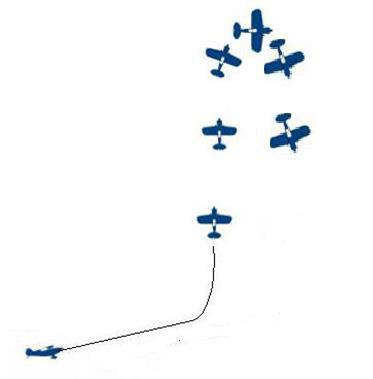
On 13 September, the pilot was signed off to fly solo. She had 29.9 hours of dual.
On 25 September, she flew one dual circuit but no solo due to the wind being too strong for solo.
On 26 September she flew five dual circuits, but again the wind was too strong for solo.
Additional Information
Time (Z) From To Message
The regulations say: “Each solo training flight must be personally supervised by the holder of a valid flight instructor rating, or a person appointed by the CFI.” This responsibility was carried out by another grade two instructor who was in the control tower at the time of the accident.
Tests and Research
The inspection did not reveal any pre-impact failures.
09:15:45 FAGC ZS-PZT And Papa Zulu Tango, confirm you’ve got the Sierra Charlie Bravo to you one ‘O’ clock in sight ma’am?
09:15:49 ZS-PZT FAGC Affirm sir 09:15:51 FAGC ZS-PZT Thank you Papa Zulu Tango, fit in behind the aircraft in front of you 09:15:55 ZS-PZT FAGC I’ll fit in behind, Papa Zulu Tango 09:15:58 FAGC ZS-PZT Thank you ma’am, I’ll give you an orbit for spacing shortly 09:16:04 FAGC ZS-SCB Sierra Charlie Bravo, report final approach runway 35, number one 09:16:07 ZS-SCB FAGC Final approach number one next and we will “gooi some mielies here” (to keep the speed up)
09:16:12 FAGC ZS-SCB Say again there 09:16:18 FAGC ZS-SCB Sierra Charlie Bravo, Central 09:16:19 ZS-SCB FAGC Go ahead 09:16:21 FAGC ZS-SCB Sorry just say again there 09:16:22 ZS-SCB FAGC We just want to “gooi some mielies” so we can get a bit of separation between us
December 2022 75
09:16:26 FAGC ZS-SCB Ok cool no worries, I will give a little more space 09:16:34 ZS-KKF FAGC Kilo Kilo Foxtrot is ready holding point runway 35 09:16:38 FAGC ZS-KKF Thank you, Kilo Kilo Foxtrot runway 35 clear take-off surface wind 320°/5 knots, report outbound to the north
09:16:45 ZS-KKF FAGC Cleared take-off runway 35, outbound to the north next, Kilo Kilo Foxtrot
09:16:50 ZS-PZT FAGC Papa Zulu Tango, left downwind runway 35
09:16:53 FAGC ZS-PZT Thank you, Papa Zulu Tango, one orbit to the right, report reestablished on the left downwind
09:16:57 ZS-PZT FAGC One orbit to the right, report re-established on the left downwind, Papa Zulu Tango
09:17:05 FAGC ZS-SPS Sierra Charlie correction Sierra Papa Sierra, Central 09:17:09 ZS-SPS FAGC Go ahead
09:17:10 FAGC ZS-SPS Sierra Papa Sierra, your squawk code is 5454 09:17:14 ZS-SPS FAGC Squawk 5454 09:17:44 Unknown FAGC scream
JIM’S COMMENTS
This is a very perplexing accident because we don’t really have enough information to say for certain what caused it. So let’s look at what we do know, and see what conclusions we can draw.
The student seemed to need rather a lot of dual before going on her first solo – 30 hours. This is not necessarily a bad thing but it points towards poor training, a weak student or a poor system –perhaps all three. I will come back to this shortly.
The student completely lost control of the aircraft while performing a routing orbit in the circuit.
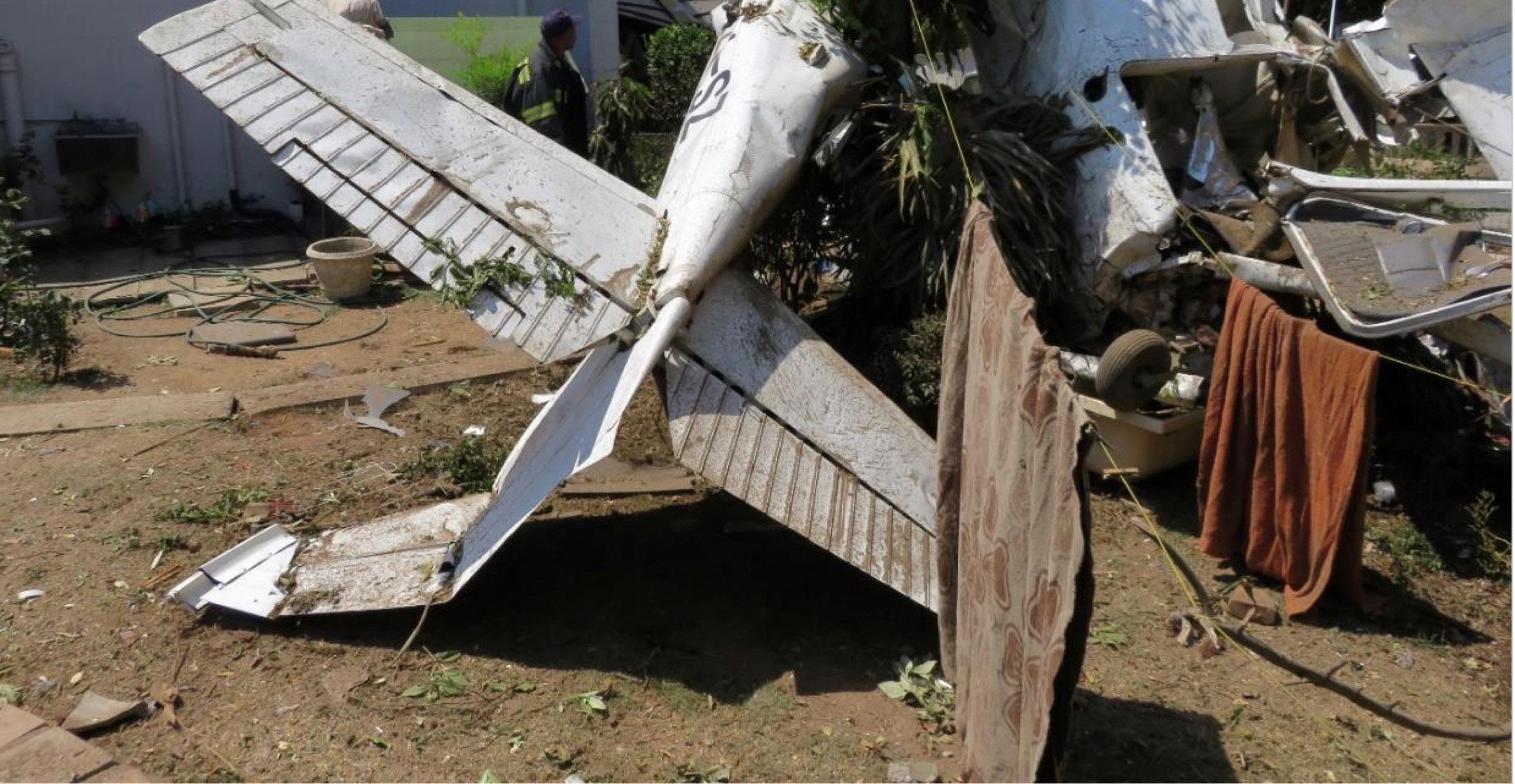
December 2022 76
Did the pupil recover - and then freeze on the controls?
eyewitness believes the pilot recovered from the spin.
There was a 25 day gap between her last solo flight and the accident flight.
On the last dual flight before the accident flight the instructor wrote in her training file that she tended to freeze at the controls. Really? And yet he is happy for her to fly solo.
So what’s going on here? I suspect the instructor was simply not thinking carefully about selecting the correct words. But this is an absolutely CRITICAL part of every instructor’s job. He should know, in his soul, that one wrong word can kill a pupil. When he used the word freeze, did he mean that she hesitates a bit when she should be easing the stick back during landing, or did he mean that she takes a vice like grip on the controls during spin training?
The report doesn’t state whether the instructor who next sent her solo was the same guy who made the remark about freezing, or whether it was another guy who possibly didn’t even read this frightening statement. Perhaps another instructor read that the student was likely to freeze and decided to send her solo anyhow.
This leads to the obvious question – was the accident caused by the student freezing or by something totally different – or perhaps a combination of both?
poor training and a weak student
There seem to be two possible scenarios. First, the student got into a spiral dive, which the report seems to believe; and second, is that she spun the aircraft, which I think is more likely. Let’s look at them both.

It was a very stupid word to use, and potentially did kill her. How is her next instructor to know what the first guy means? He didn’t say she was unfit for solo, so is the next guy meant to assume she can safely fly solo? We all know the dangers of assuming.
If she allowed the nose to move below the horizon and entered a spiral dive, while doing her orbit, she would have seen the nose low attitude, and heard the airspeed and the revs increasing – particularly if the dive was steep enough to lose 1000’ feet in a couple of minutes (500’/min). She needed no special skills to recover – it would have been a simple, and intuitive matter of levelling the wings.
December 2022 77
An
The accident killed the pupil pilot and a person on the ground. The crash was very close to the CAA offices.

I suspect she spun. She slowed down to maintain separation. Then, the 360 further depleted her airspeed, and then she very likely hit the vortices of the other aircraft. That could started her in the spin.
Take home stuff:
Students – for your own sakes, avoid the multiple instructor system. Refuse to accept it – you are the customer. It’s there for the convenience of the flying school, and it is always detrimental to your progress, your back pocket and your safety.
Instructors – your job is to use words to convert pedestrians into safe pilots, be extremely careful to always use the right words. Take a pride in your profession – yours is the highest calling in aviation.
She then managed exceptionally well – she recovered from a spin that started at circuit height. We know this because the last witness saw her flying, wings level, close to the ground. She then pulled up violently to avoid trees which caused the final hammerhead, wingover or incipient spin.
December 2022 78
she recovered from a spin that started at circuit height j
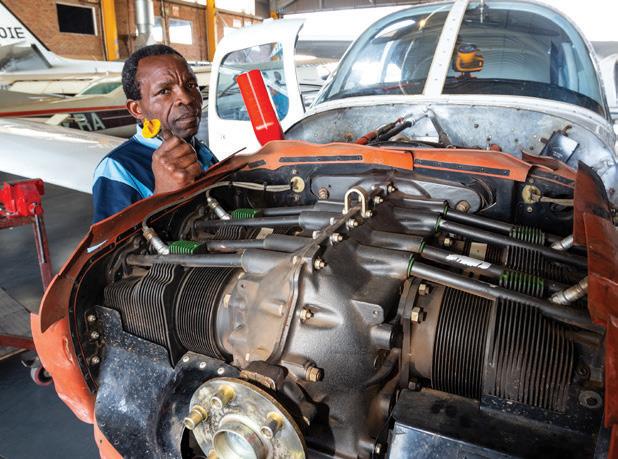
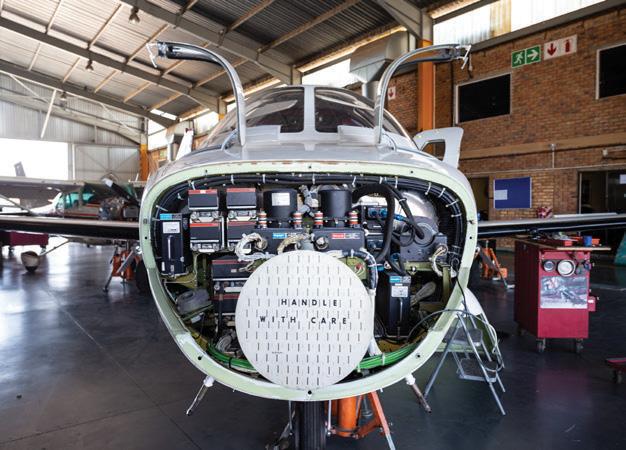

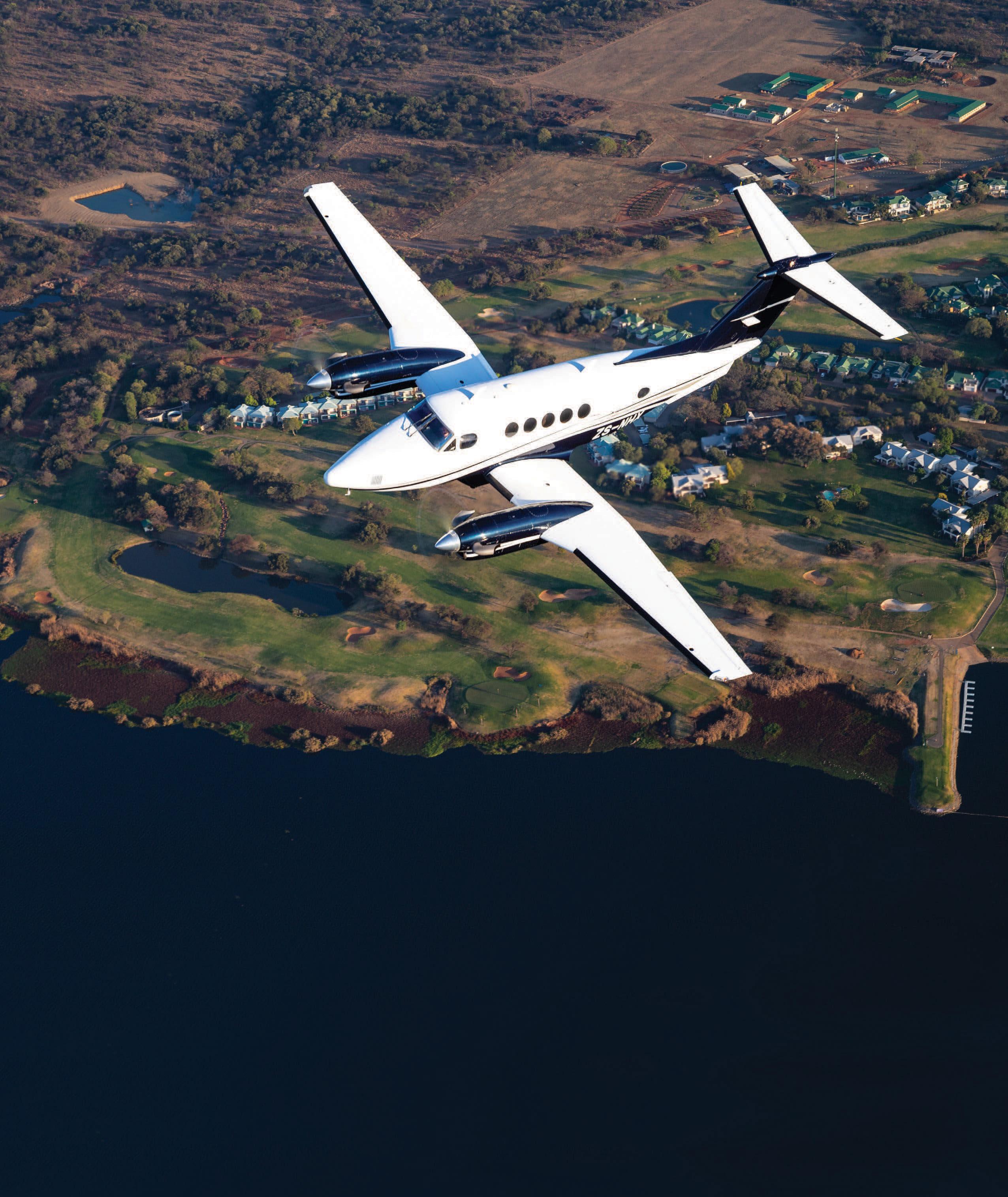



79 Gemair is an SACAA Approved Maintenance Organisation, AMO 1003 with 5 other African AMO Approvals and has a team of 9 full time engineers who together have a combined total of over 50 years aviation experience. Gemair are able to perform all aviation maintenance requirements on a variety of Non-Type certified aircraft, light singles and twins up to turbo propellers and light jets. YOUR PEACE OF MIND IN AVIATION MAINTENANCE WE ARE LOOKING FOR IMAGINE IT AND WE’LL GET YOU THERE OUT OF THE BLUE Air Safari’s CONTACT: Andries Venter (082) 905 5760 | Stan Nel (082) 552-8155 011 659 2965 | charters@gemair.co.za | andries@gemair.o.za | ootbas@global.co.za Charters • Cessna 210 • Cessna 402 • Cessna 206 • King Air B200 Happy holidays and .. ..best wishes for the New Year! AND EXTERIORS Tel: (011) 659-1962 Cell: 082 905 5760 Fax: (011) 659-1964 Email: info@aircraftcompletions.co.za Hangar 107 C and D Gate 13, Lanseria Airport CAA No AMO 620
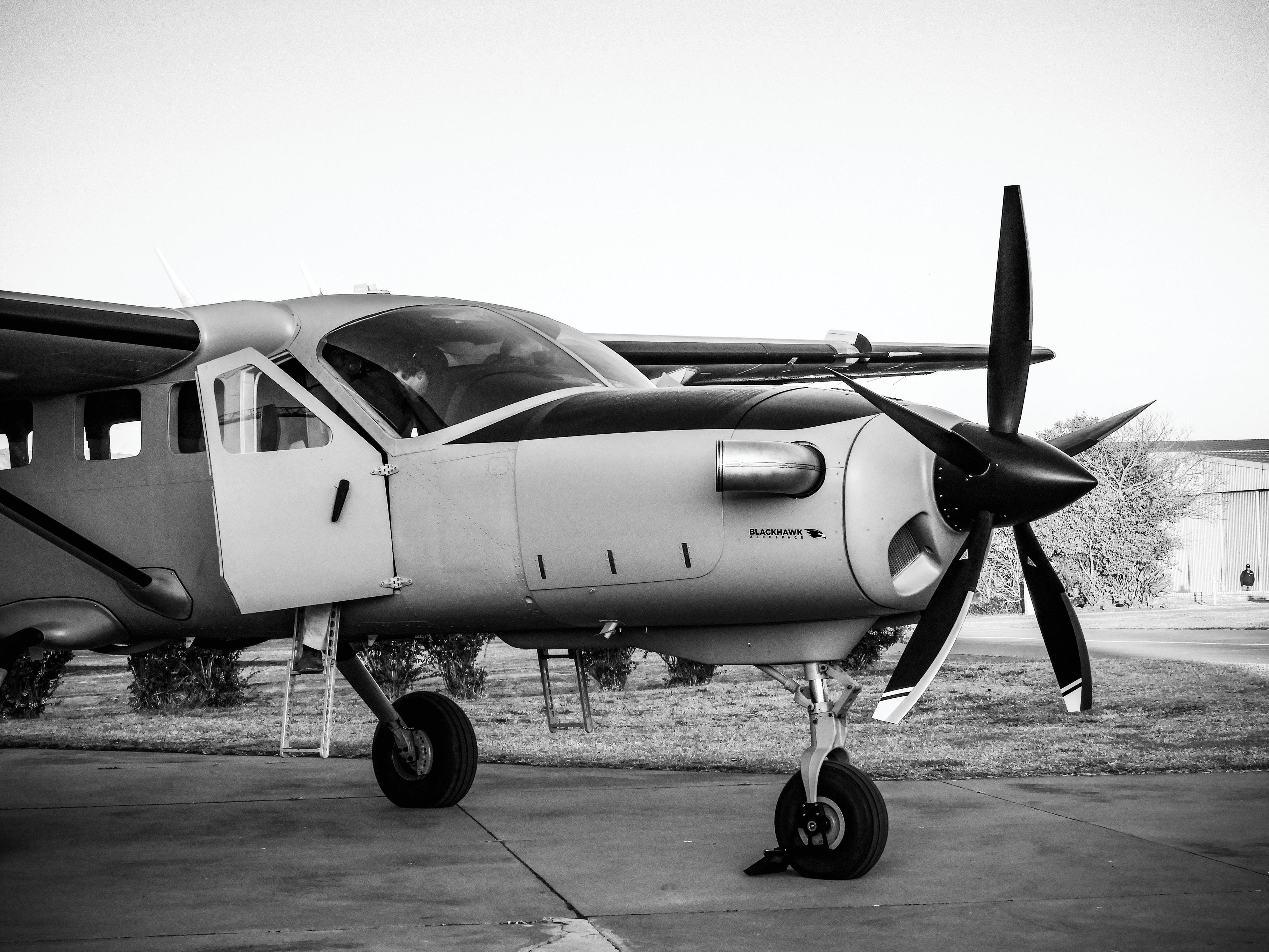
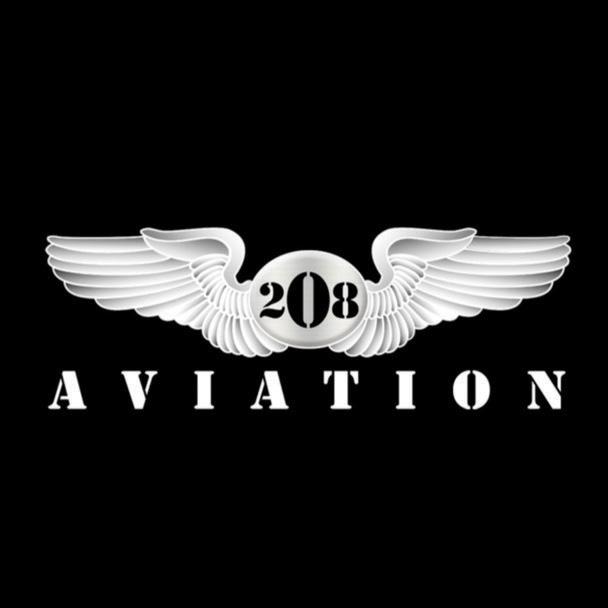

December 2022 80 2 0 8 A V I A T I O N H A N G A R 4 9 , W O N D E R B O O M A I R P O R T P R E T O R I A . S O U T H A F R I C A w w w . 2 0 8 a v i a t i o n . c o m + 2 7 8 3 7 4 4 3 4 1 2 W e a r e a n a p p r o v e d B l a c k h a w k D e a l e r a n d I n s t a l l a t i o n F a c i l i t y , 2 0 8 A v i a t i o n s p e c i a l i s e s i n B l a c k h a w k e n g i n e u p g r a d e s f o r B e e c h c r a f t K i n g A i r S e r i e s a n d C e s s n a C a r a v a n . AMO 1148
208 AVIATION
ESTABLISHED IN 2007, 208 Aviation is a South African privately-owned company that strives to provide a broad range of aircraft maintenance and inspection services. With 15 years of operation, we have become a key player in aviation operations on the African continent.
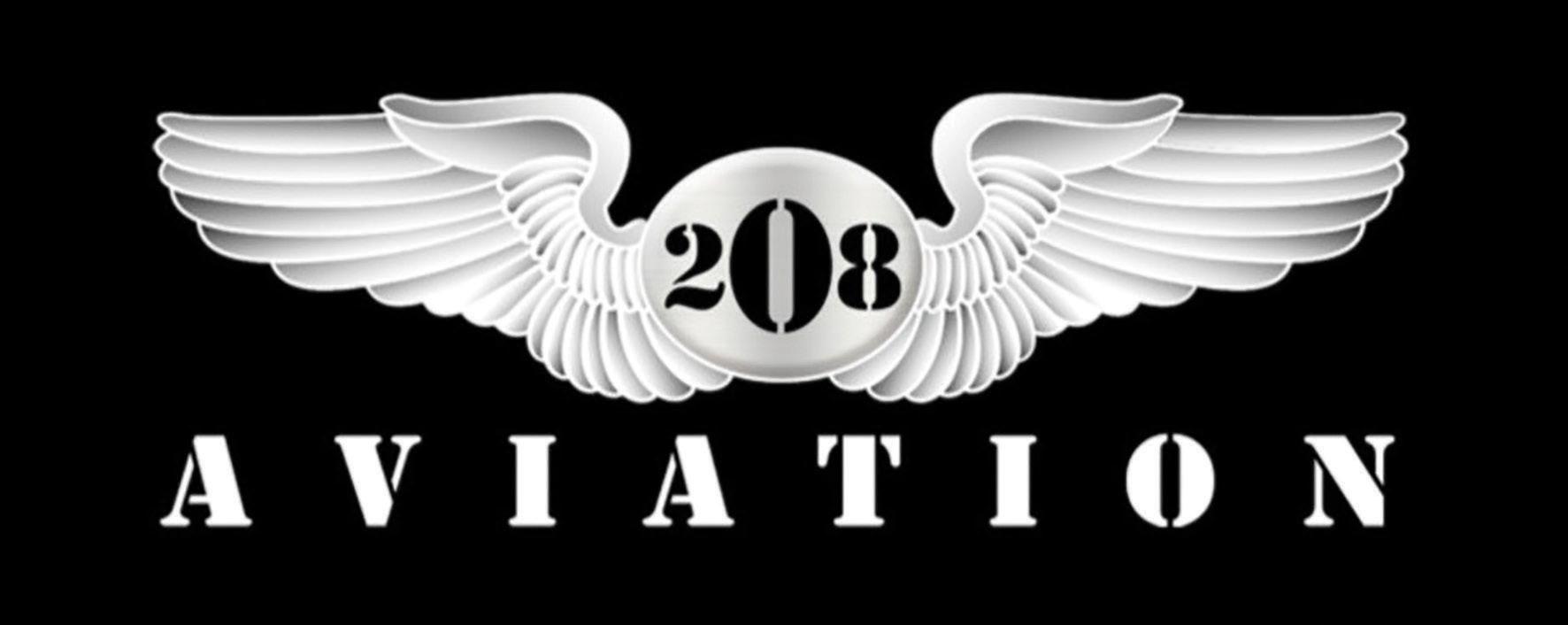
208 Aviation has a full SACAA Part 145 AMO (Aircraft Maintenance Organisation) approval with Category A and C ratings. We also hold CAA approvals for South Africa, Mozambique, Botswana, Zambia, Namibia, Uganda and Malawi.
Our speciality is Cessna 208 Caravan, Beechcraft King Air, Kodiak, TBM and Eclipse aircraft maintenance and technical support.

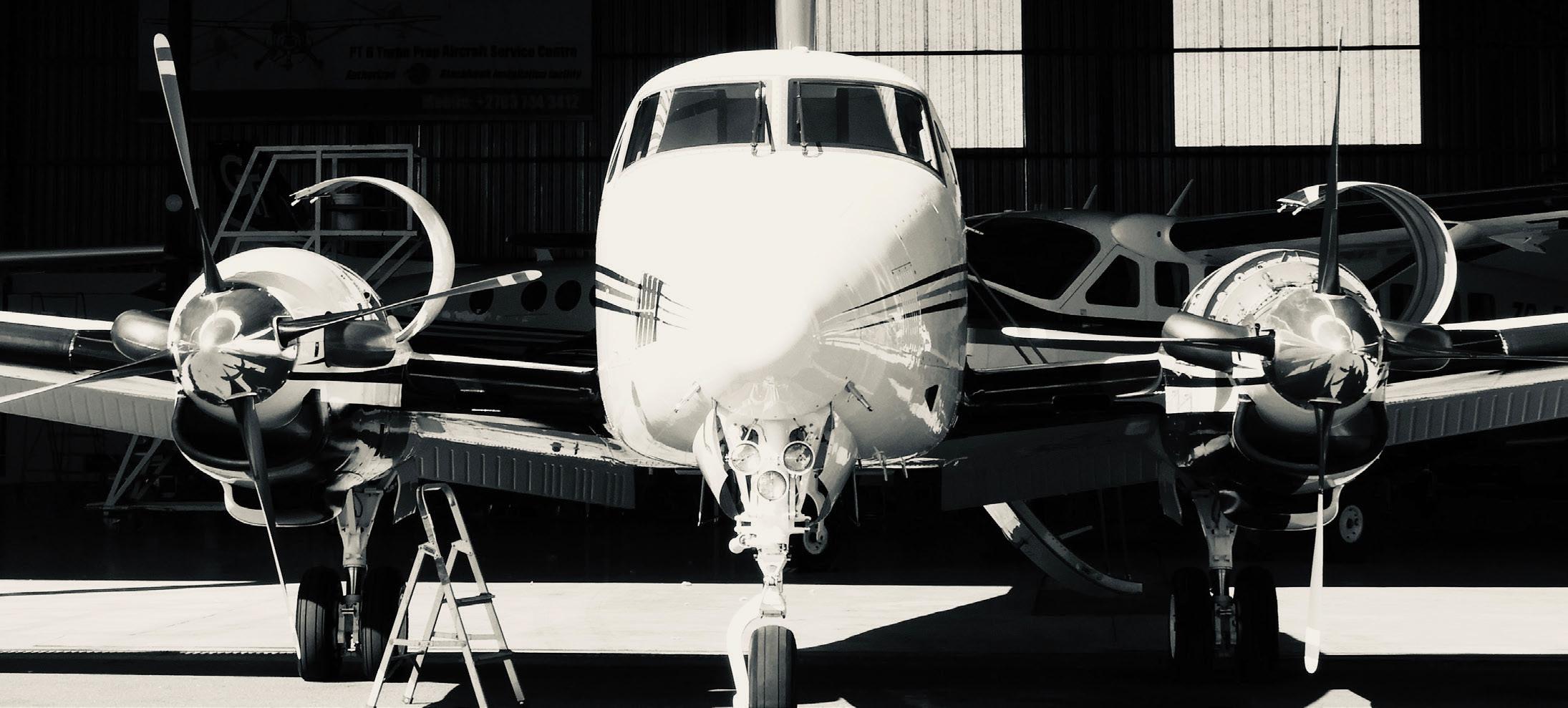
We are a very proud approved Blackhawk dealer and installation facility.
Over the years, we have earned a reputation for providing superior quality workmanship. Doing things right is how we do business. We consider it our responsibility to go above and beyond when it comes to aviation safety and customer satisfaction.
With sound growth and a proven track record, we welcome you to experience the advantage of a dedicated team that brings unprecedented commitment to our customers. Take a few minutes to discover what our expertise can do for you at www.208aviation.com
Call: +27 83 744 3412 Email: ben@208aviation.co.za Website: www.208aviation.com
December 2022 81
j
OCTOBER 2022
IN TOTAL, ELEVEN NEW REGISTRATIONS were issued in October, which include nine fixed wing, one helicopter and one glider.
Another Bombardier CRJ 900 for Cemair has been registered as ZS-CMM, bringing their fleet to four. This is the third time this registration has been used, the previous times on a Cessna 182 and a Piper Cheyenne III.
The Beechcraft King Air 100 ZS-JFO is a real veteran, having been built in 1977 and having spent most of her life in Madagascar. This registration was originally used on a Beech Sundowner which was written off in 1981.
ZS-KMA used to be a Beech C90 King Air which is now in the UAE. There is a new Embraer 505 Phenom registered as well as another PAC 750 which comes to us from Australia, even though it is built in New Zealand.
Airlink have added another Embraer 190 to their fleet. This one is also ex-Virgin Australia and brings their fleet of 190s to twenty-one in total.
One of SAA’s Airbus A320s ZS-SZD was exported to Austria on return to her lessors and was stored (in full SAA colours) at Ljubljana, Slovenia as OE-IPJ. She has now been returned
to South Africa, arriving back on 28 September. The aircraft hasn’t flown since her return so there has been speculation that she might the Lift fleet at Global Airways, but this seems unlikely. It is a great benefit to SAA that this A320 has still retained its SAA livery and twoclass configuration.
There’s a new Jonker Sailplane registered –these are world class gliders. This particular sailplane is the prototype for the long awaited Jonker JS-2 self-launcher which is currently under development. Noteworthy is that the JS-2 has been produced after the JS-5. For those who find this confusing, wiki shows the types as follows:
1. Jonker JS-1 Revelation 18m/21m flapped sailplane with optional jet sustainer – 2006.
2. Jonker JS-2 Revenant 18m/21m flapped self-launcher
3. Jonker JS-3 Rapture 15m/18m flapped with jet sustainer or electric propulsion
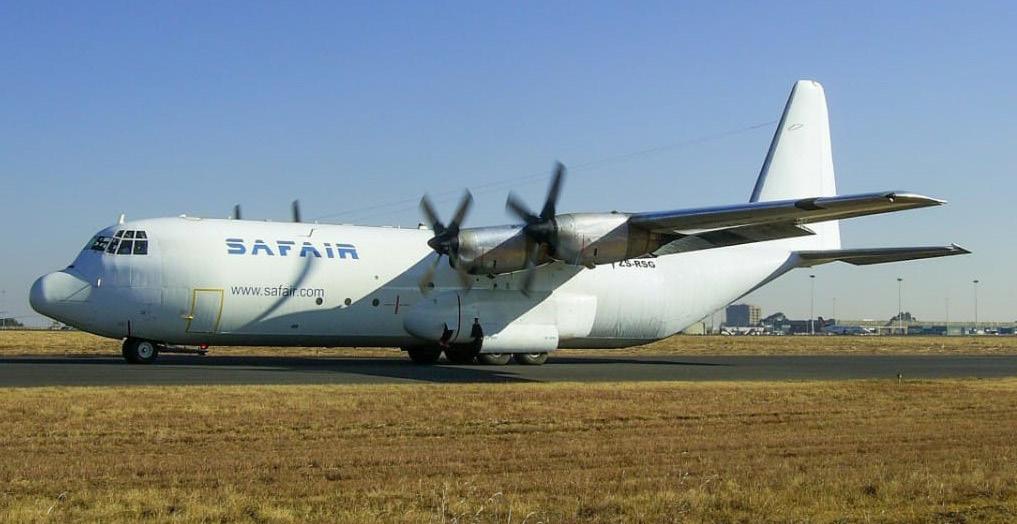
4. Jonker JS-4 Rengeti 15m/18m standard class sailplane with jet sustainer or electric propulsion
5. Jonker JS-5 Rey Open class sailplane with jet sustainer or self-launcher.
82 December 2022
REGISTER REVIEW: RAY WATTS
The last of Safair's L-100. ZS-RSG is a Lockheed L100-30 exported to the USA. Photo Michael Combrink.
This month’s amendments to the SA Civil Aircraft Register are, once again, very interesting.
ABOVE: ZS-HVO is a Hughes 369E (Hughes 500), exported to the USA as N915LY Photo Ray Watts.

BELOW: From Madagascar - 5R-MKY is a Beechcraft 100 which is now ZS-JFO.
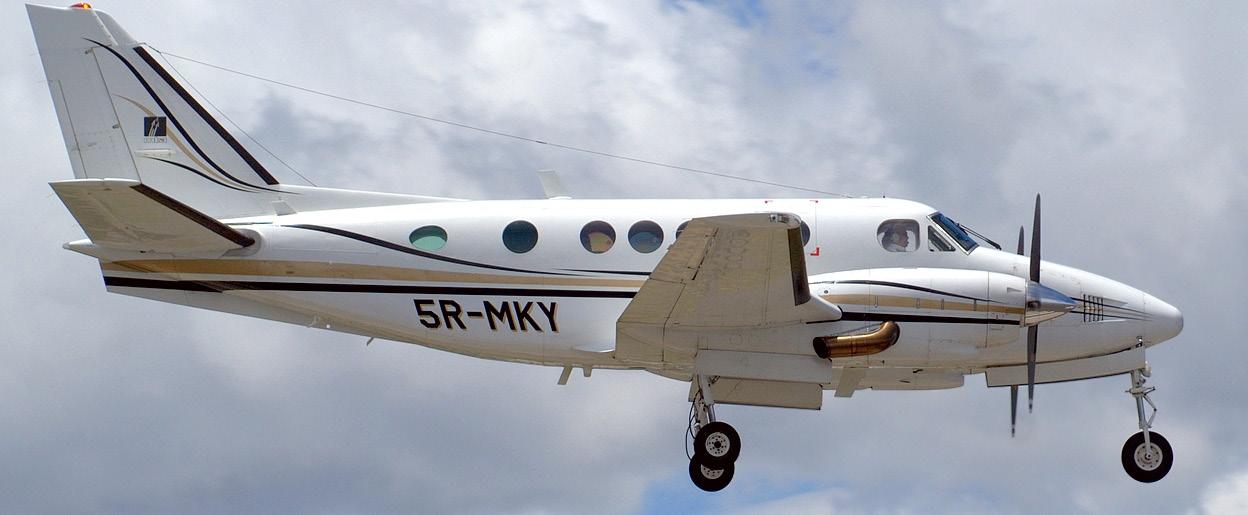
BELOW BOTTOM: ZS-MBA is a Phenom 300 seen here at Santa Maria in the Azores.
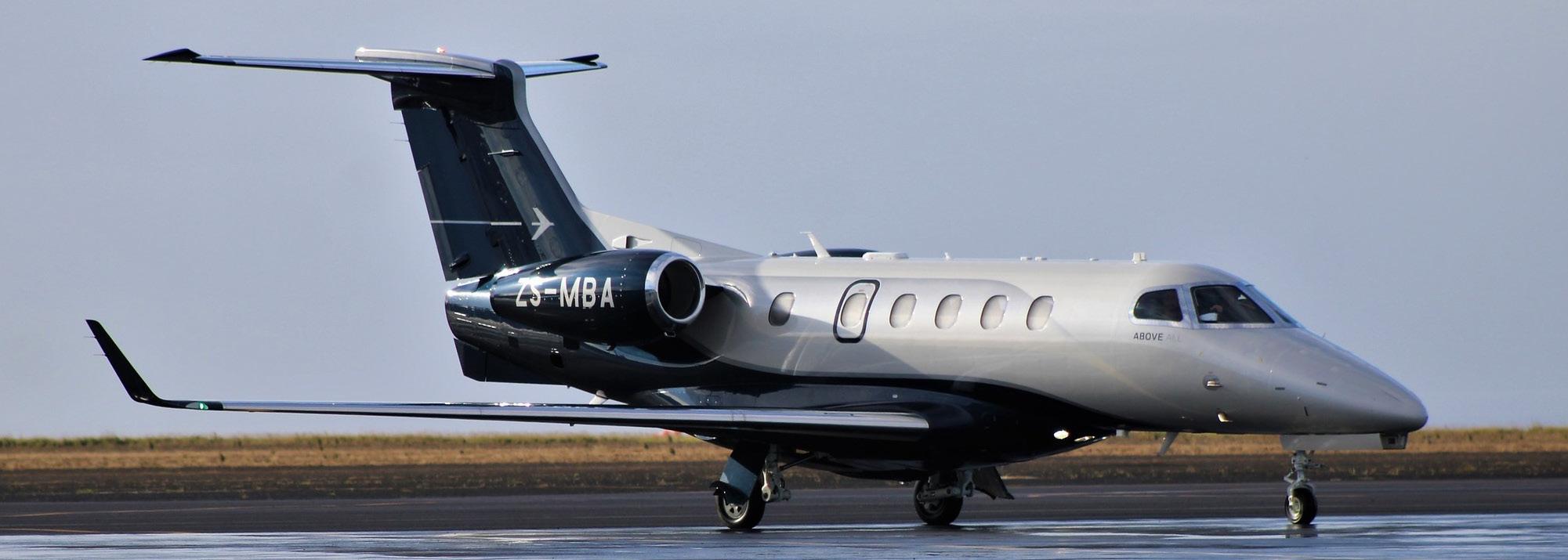
83 December 2022
ABOVE: Another CRJ900 for Cemiar - S5-AAO is now ZS-CMM.

BELOW: ZS-SJB is a B737-800 exported to France. Mango has no more aircraft. Photo Ray Watts.

BELOW BOTTOM: A rare arrival - VH-TEQ is a PAC 750XL - now ZS-XPA.

84 December 2022
A Eurocopter AS350 B3 has returned from a short stint in Ethiopia. This one has been operated in France, Spain and the UK as well.
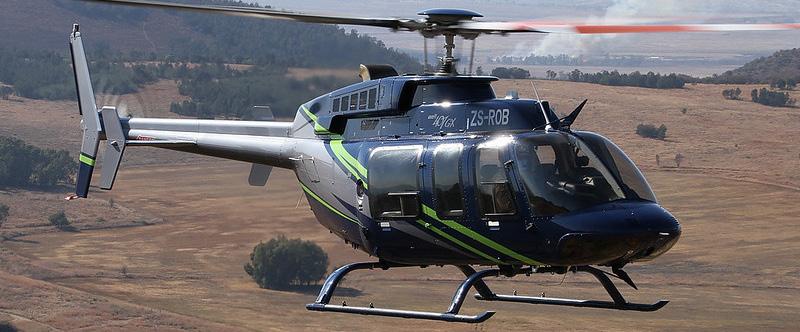
The number of Non Type Certified Aircraft (NTCA) continues to grow with another six registrations issued including the ever-popular Bat Hawk of which three have been added this month.
There is a PA-18/L-21A Super Cub added, ZU-IXK, but with the serial number 2013-061. This isn’t a Piper serial number which, if she’s a rebuilt Piper Super Cub, makes tracing her history impossible. If anybody knows her owner, please let me have his details.
The drone register has the usual high level of activity with quite a lot of changes this month. There have been thirty-one added and sixteen being withdrawn from use.
As usual there are quite a few TCA aircraft exported this month. These include Safair’s
last C130 ZS-RSG – she’s off to the USA as N424LC. She’s parked outside the Safair hangars at OR Tambo at the time of writing and should be leaving soon.
Two ex-Mango aircraft have also been returned to their owners overseas. Mango now have no aircraft left – ZS-SJE was recently towed to the scrapping area and I believe is to be chopped up. It shows the lack of demand for 20-year-old Boeing 737-800s
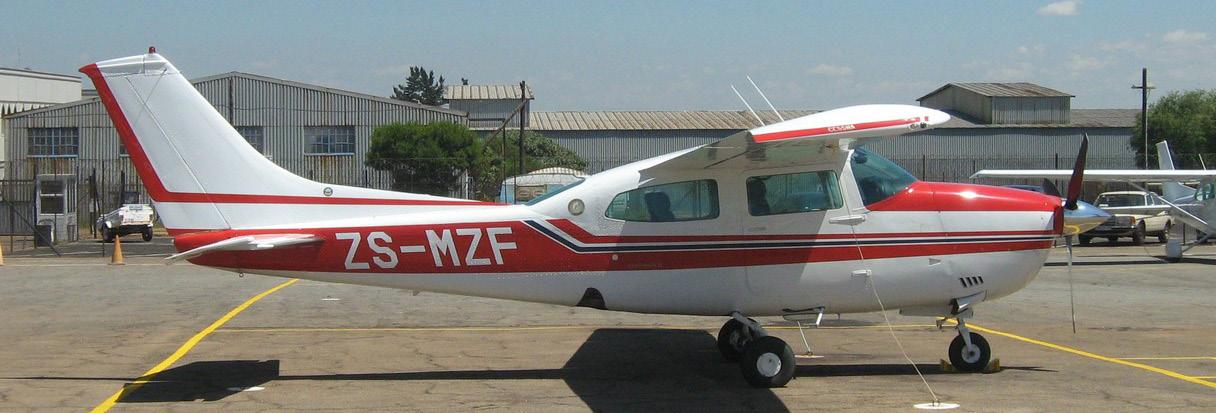
Other exports included a Beech 1900 and a Cessna 210 as well as four helicopters. A Bat Hawk was exported to Malawi.
Tail Piece
The first of the good old South African thunderstorms have arrived on the Highveld. These storms aren’t funny folks – stay away from them and stay safe. j
85 December 2022
The general aviation fleet continues to shrink; ZS-MZF is a Cessna 210 exported to Brazil. Photo Ray Watts
ZS-ROB is a Bell 407 exported to the USA.

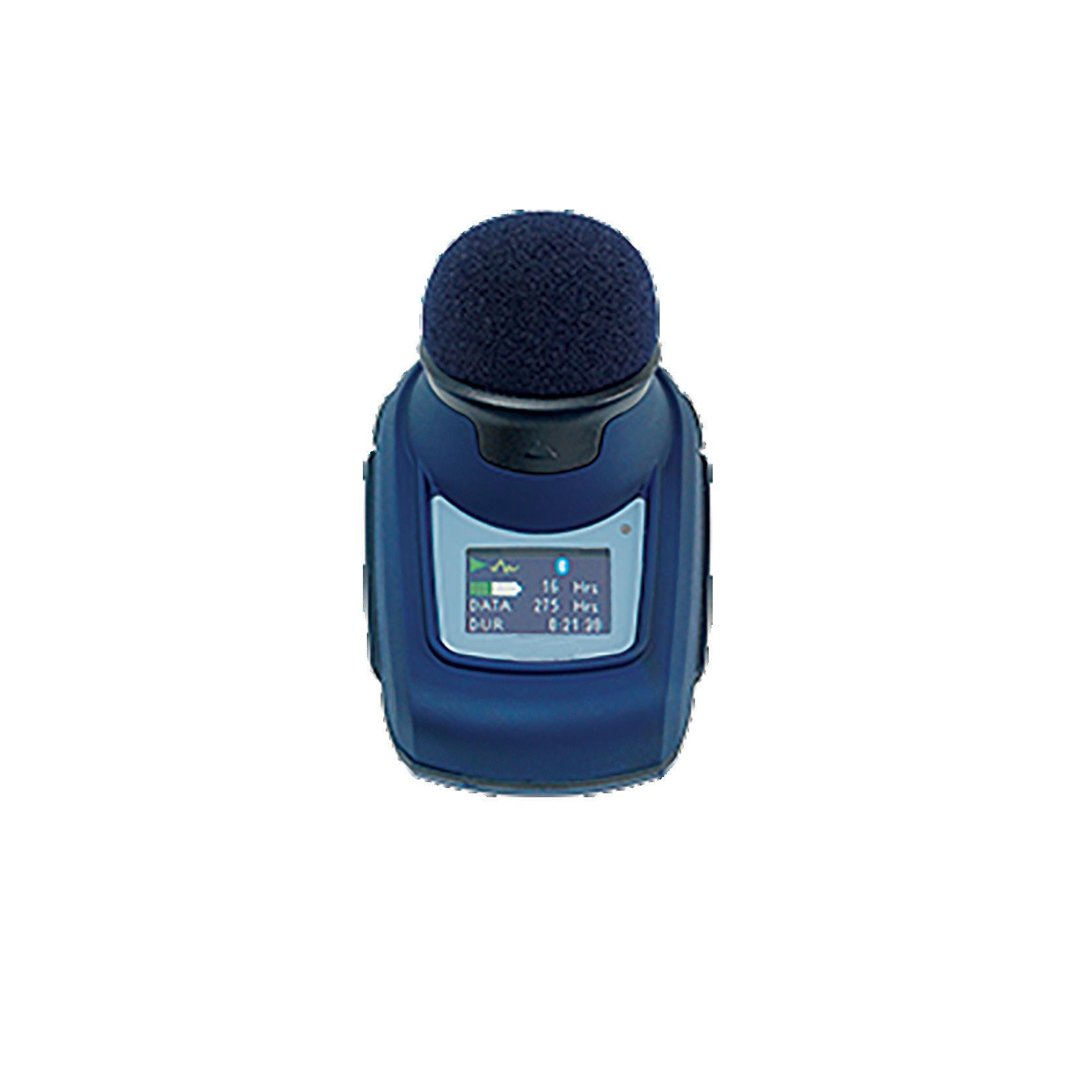

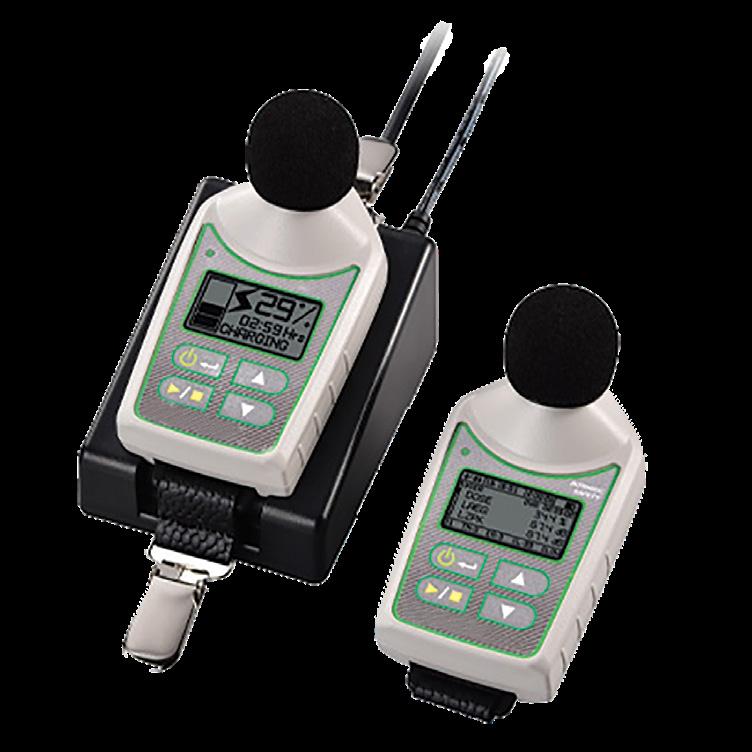
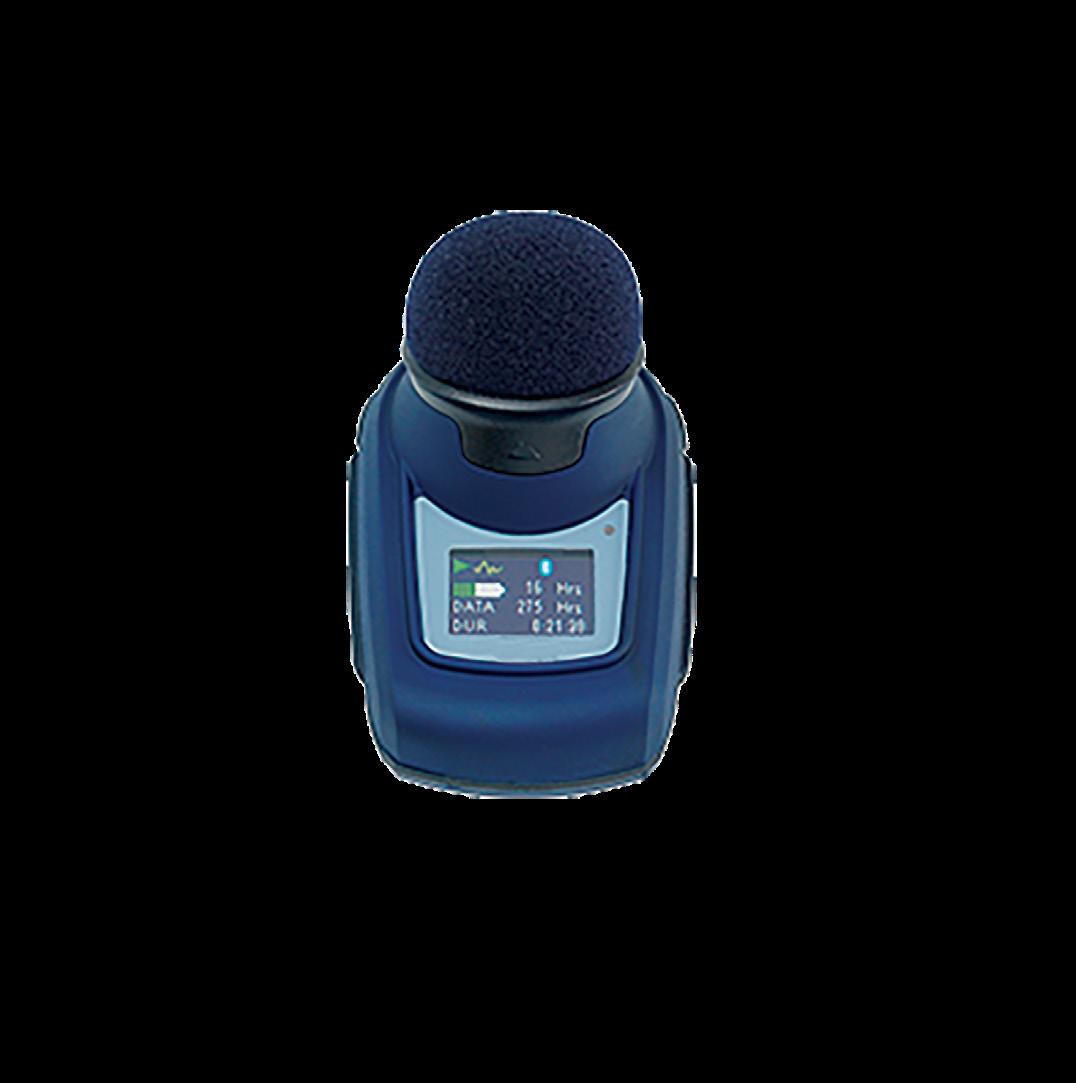
M & N Acoustic Services (Pty) Ltd REGISTER REVIEW OCTOBER 2022 Contact: Marianka Naude Tel: 012 689 2007 I Cell: 076 920 3070 Email: admin@mnacoustics.co.za We perform SANAS certifications on all your: Acoustics ( eg. CEL 350 ) Vibration ( eg. Rion VA -11) Human Vibration ( eg. Quest Hav Pro) Electrical DC/LF Equipment – inhouse or on site (eg. Fluke Multimeters, Insulation Testers) REG MANUFACTURER TYPE NAME SERIAL NUMBER PREVIOUS IDENTITY / EXPORT COUNTRY New Registrations ZSZS-CMM BOMBADIER INC CL-600-2D24 15215 N215H, PH-ADT, S5-AAO ZS-JFO BEECH AIRCRAFT CORPORATION B100 BE-20 5R-MKY, N443TC ZS-KMA CESSNA AIRCRAFT COMPANY 208B 208B-2393 N165SH ZS-LLF PILATUS AIRCRAFT LTD PC-12/47E 1489 A2-AAR, HB-FSK ZS-MBA EMBRAER EMB 505 50500691 ZS-SZD AIRBUS INDUSTRIE A320-232 6007 OE-IPJ, ZS-SZD, F-WWBD ZS-TLN CESSNA AIRCRAFT COMPANY 172M 172-64739 A2-PIG, ZS-PED (1) ZS-XPA PACIFIC AEROSPACE 750XL XL 147 VH-TEQ, N750LH, ZK-JHA ZS-YAX EMBRAER ERJ 190-100 IGW 19000312 2-HZPN, VH-ZPN, PT-TXA New Registrations ZT-G ZT-GAI JONKER SAILPLANES CC JS1 02-000 New Registrations ZT-R ZT-REY EUROCOPTER AS 350 B3 3587 ET-…, ZT-REY, G-EKRN, G-ORKI, EC-IHX. F-WQRN, F-WQDM New Registrations ZUZU-COC MICRO AVIATION SA BAT HAWK R 0104 ZU-IXG MICRO AVIATION SA BAT HAWK R 0106 ZU-IXH SAVANNAH AFRICA SAVANNAH S 21-10-54-0815 ZU-IXI MICRO AVIATION SA BAT HAWK R 0110 ZU-IXJ BERNHARD GOTTFRIED SEYFFERDT KFA BUSHBABY EXPLORER 169-02-15-EXP MK2 ZU-IXK NEAL ALFRED STEPHENSON PA-18/L-21A SUPERCUB 150HP 2013-061 Aircraft deleted ZSZS-HGM BELL HELICOPTER TEXTRON CANADA LTD 206B 4665 CANADA ZS-HVO MCDONNELL DOUGLAS HELICOPTER COMPANY 369E 0350E UNITED STATES OF AMERICA as N915LY ZS-MMJ BEECH AIRCRAFT CORPORATION 1900D UE-92 MAURITANIA ZS-MZF CESSNA AIRCRAFT COMPANY 210L 210-60951 BRAZIL ZS-OYK BEECH AIRCRAFT CORPORATION 1900D UE-318 ALGERIA ZS-ROB BELL HELICOPTER TEXTRON CANADA LTD 407 54444 UNITED STATES OF AMERICA as N407BU ZS-RSG LOCKHEED MARTIN CORPORATION 382G 4565 UNITED STATES OF AMERICA as N424LC ZS-SJB THE BOEING COMPANY 737-800 29429 FRANCE 737-800 30476 FRANCE 0763 ZAMBIA BAT HAWK R 0080 MALAWI SANAS Accredited Laboratory 1302 & 148


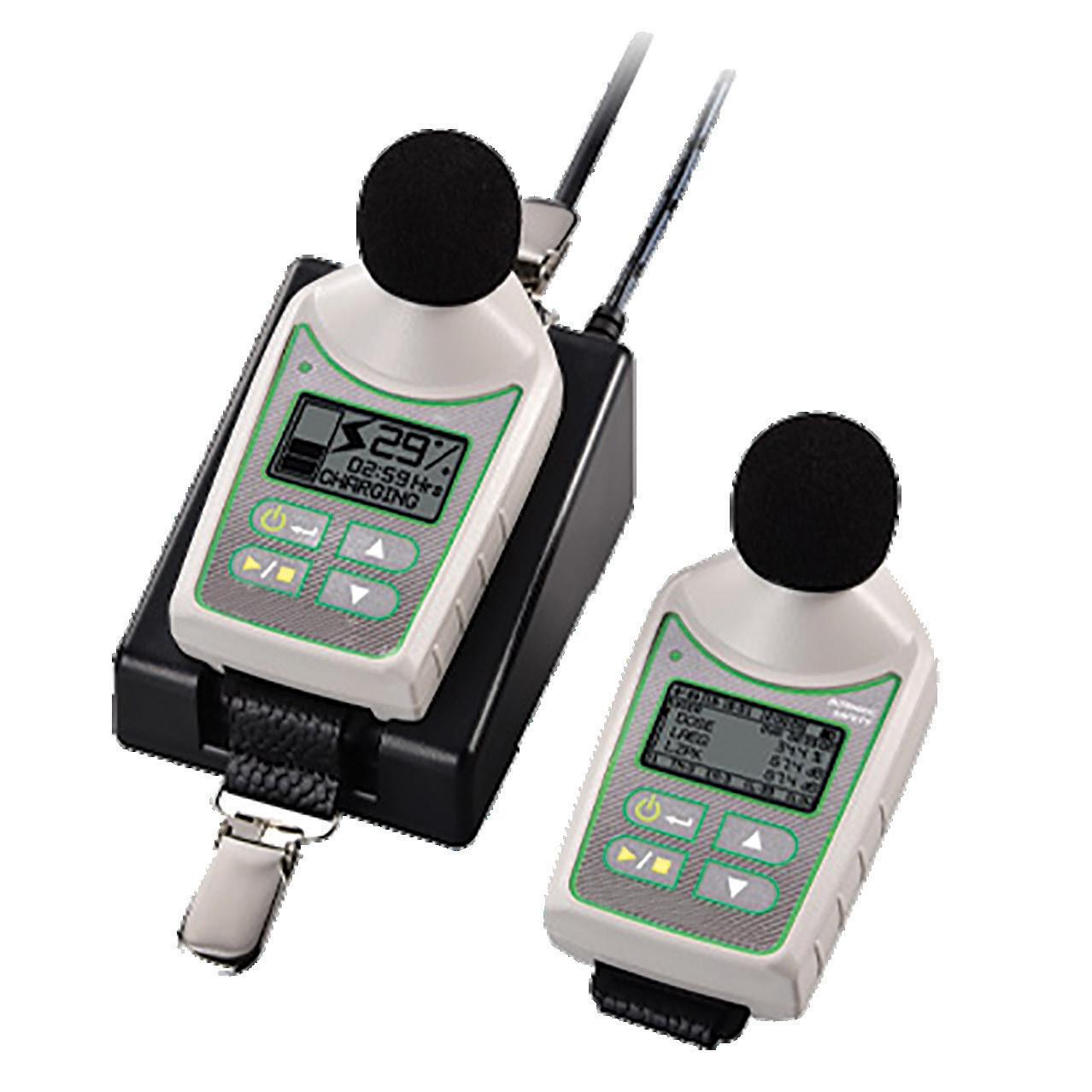


M & N Acoustic Services (Pty) Ltd QUOTATIONS ON REQUEST We perform SANAS certifications on all your: Acoustics ( eg. CEL 350 ) Vibration ( eg. Rion VA -11) Human Vibration ( eg. Quest Hav Pro) Electrical DC/LF Equipment – inhouse or on site (eg. Fluke Multimeters, Insulation Testers) Contact: Marianka Naude Tel: 012 689 2007 I Cell: 076 920 3070 Email: admin@mnacoustics.co.za SANAS Accredited Laboratory 1302 & 148 Wishing all our clients a wonderful festive season and a Happy New Year!
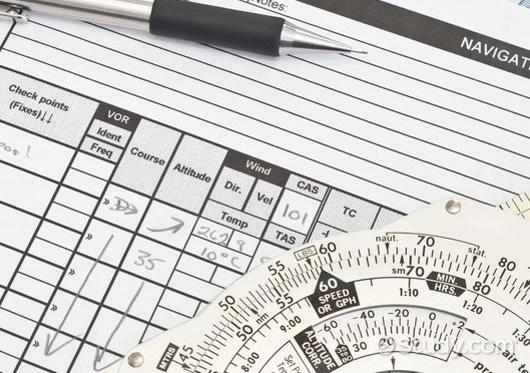



88 December 2022 C M Y CM MY CY CMY K EXPERIENCE THE THRILL OF FLIGHT LEARN TO FLY TRAINING FLEET: 1 x Sling 4 6 x Sling 2 (PPL , LSA) 1 x Bushcat Tailwheel SA Flyer 2021|12 PILOT TRAINING • National Pilot License • Private Pilot License • Commercial Pilot License • Night Rating • Instructors Rating • Tailwheel Rating • Conversion / Renewal • Hour Building • Owner Training • Foreign Validations CONTACT: Alan Stewart 083 702 3680 Email: info@jhbflying.co.za Website: www.jhbflying.co.za Panorama Airfield CAA 0055 SACAAACCREDITED CENTREEXAM WISHING YOU A HAPPY FESTIVE SEASON! Covid Restrictions have been minimised - International Travel is back to (sort of) normal All Tour Details can be accessed from this link > OSH23-THE-TOUR MAIN FEATURES OF THE TOUR Luxurious Accommodation at the Radisson Country Inn > Country Inn & Suites Large, extremely comfortable rooms, hot breakfasts The excellent Machine Shed is across the road > Machine_Shed_Bar Restaurant Five minute stroll - Fox River Mall & many restaurants > Fox River Mall Luxury coach transport by Kobussen Coach Services > Kobussen Coach Service Monday to Saturday, hourly 0800h - 2000h, to the Oshkosh Main Gate 20mins via a privileged bus road with no traffic jams. Sunday 23 and 30 July - from and back to Chicago O’Hare Features to ease the journey (costs included in the fare) Sunday 23 – Meet the group over Dinner, beers & wine Loan of a lightweight folding camp chair for the week A Pilot’s Cap – embroidered “Oshkosh” and an SA mini-flag MORE INFORMATION ABOUT THE TOUR The Detailed Tour Itinerary > Osh23-Itinerary References from previous years aviators > Oshkosh-References A Media Review by Dave Barker > Dave Barker Review of Our Tour Meeting in Chicago > Meeting-in-Chicago FOR THOSE OPTING TO INCLUDE WASHINGTON Dave’s Day – Stearman and T16 Flights > Oshkosh-Daves-day Washington > What to see and do ABOUT THE OSHKOSH AIRSHOW Oshkosh Statistics > Oshkosh-THE-Facts Oshkosh “the” Airshow > Oshkosh-THE-Airshow Oshkosh 23 You now have the opportunity to be at Oshkosh in Luxury












89 December 2022 TOWN & COUNTRY TOWN & COUNTRY *Optional equipment. © Robinson Helicopter Company. R66 and Robinson are registered trademarks of Robinson Helicopter Company • Glass Avionics & Autopilot* • Extended Range with Aux Fuel Tank* • Baggage Compartment www.robinsonheli.com R66 TURBINE
AEROTEL'S B727
– THE ICONIC NEW LANDMARK
THE CREATOR OF THE AEROTEL is
Hoedspruit developer Martin den Dunnen. As a pilot, he is passionate about property with an aviation theme.
Martin den Dunnen pioneered aero estates in South Africa with his Zandspruit Bush & Aero Estate development, featuring a 1000m long brick runway in an idyllic lowveld housing estate. With the Aerotel he has now taken specialist destination accommodation to a new level.

Launched just over two years ago; at 10.00 am
on 10 October 2000, with a Boeing 737-200, Martin has already expanded the Aerotel by acquiring a second Boeing – this time a B727 ‘3-holer’. Martin says he is surprised by how much bigger the 727 is than the 737. He notes that the 737 weighs 24 tons but the 727 weighs 38 tons.
The new B727 ‘Aero Villa’ is the perfect complement to the six rooms currently available from the B737. The key difference is that the new B727 has just three rooms with a large private lounge and so is let out as a whole unit –for families and friends.
90 December 2022
NEWS
The two Boeings that provide Aerotel's unique accommodation in Hoedspruit.
Aviation enthusiasts from around the world are making Hoedspruit’s Aerotel a must-see destination. the beautifully finished luxury interior is being fully preserved
A unique attraction is that the B727 provides guests with a genuine presidential experience as it was the State President of Djibouti’s executive transport and the beautifully finished luxury interior has been faithfully preserved. This retains the presidential cabin in the rear, a lounge and two additional suites, all with luxurious double beds. All suites have retained the original bathrooms with gold plated finishings, with just a shower having been added.
Martin and his wife Tracy den Dunnen have gone to great lengths to preserve the aircraft’s original systems. Thus, as an aircraft, the 737 runs on 115v 400 Hz electrical power. Initially Martin tried to retain this system by using an electric motor to drive the aircraft’s original APU generator. However the 400Hz frequency became a huge obstacle for lighting and air-conditioning and so he reluctantly had to convert key systems to South Africa’s 220v 50 Hz mains.
The Aerotel has fascinating themed common areas with a welcoming swimming pool. The B727 comes with its own airstair door at the rear, and for access to the front cabins Martin has a set of airport stairs. There is ground handling equipment to further authenticate the experience of boarding your own presidential jet.
For any aviation buff the new B727 is fascinating in its completeness and is in excellent condition. One of the tyres is still brand new due to the fact that it had completed its C-check at OR Tambo when the decision was made to dispose of the aircraft as its noisy JT-8D engines were banned from European airspace.
Even though it was a mid-size regional airliner, the size and complexity are enthralling. The flight deck looks as though the crew has stepped out for just a moment. In the tail the enormous S-duct that feeds the middle engine has been
removed so you can see the engine buried in the tailcone and look up into the huge vertical fin.
The new VIP Aerotel Aero Villa has opened in time for the festive season. A visit is highly recommended. Most guests stay for two or three nights and use the Aerotel as a base to explore the many attractions in the Hoedspruit area and the Greater Kruger Park.
The VIP Aerotel must be booked out completely and the rate is R15,000 per night. It can accommodate six people which makes it a very reasonable R2,500 per person per night. The 737 with its six rooms is significantly more affordable.
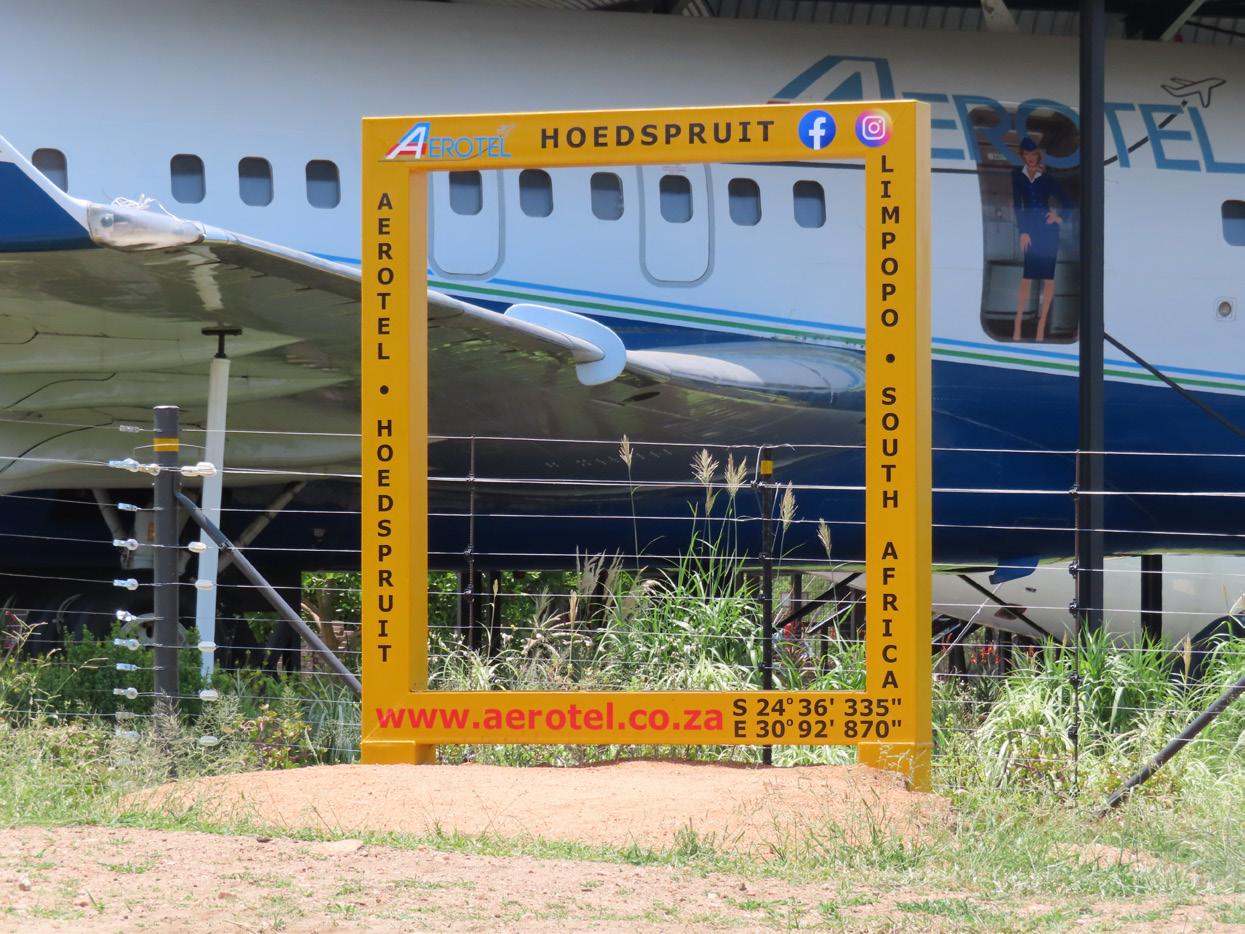
Aerotel: Call - 087 6556 737 or visit: https://www.aerotel.co.za/
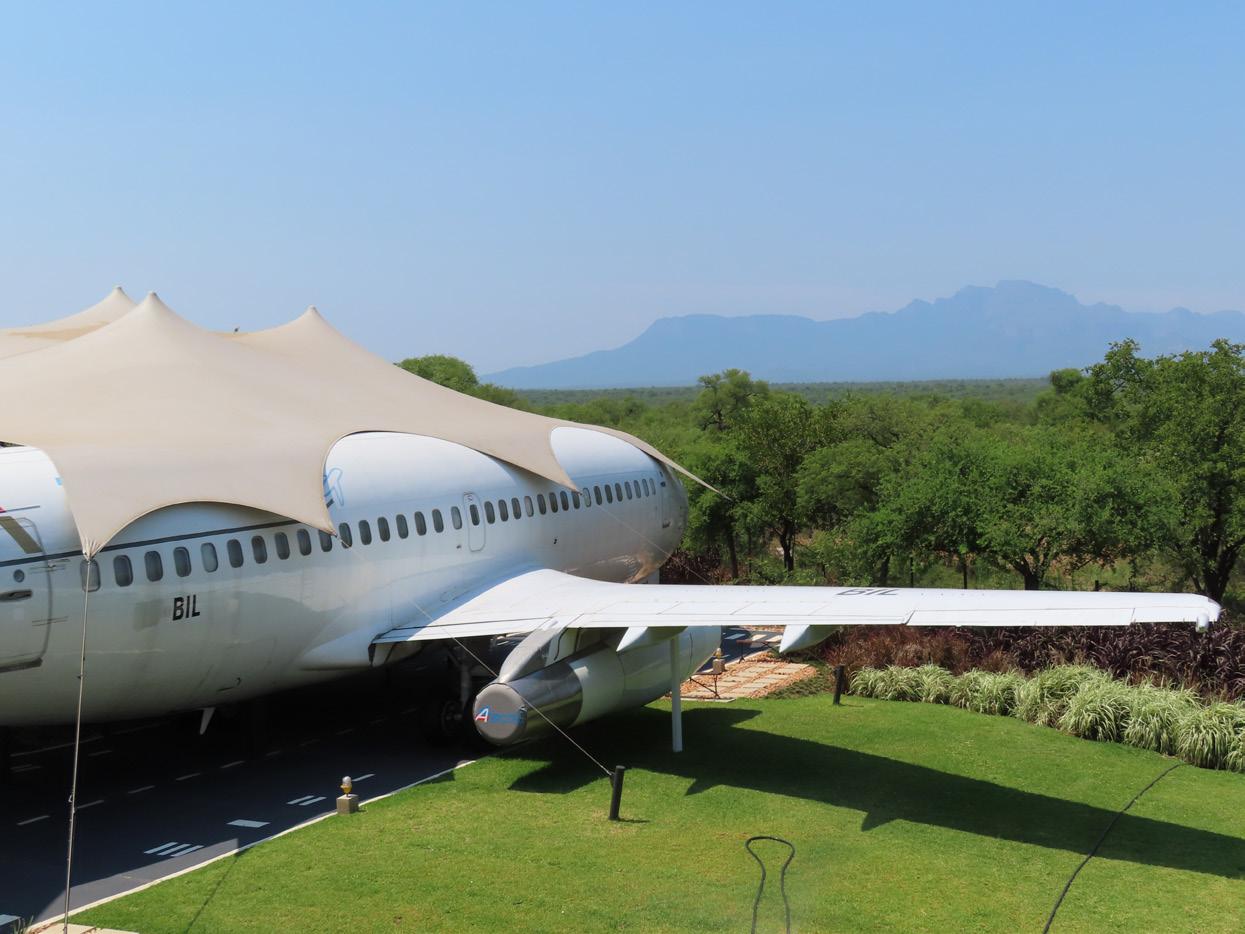
91 December 2022
The Boeings have a gloroius view of ther mountains.
The Aerotel has become a well known stopping point for photos on the road to Hoedspruit.
j
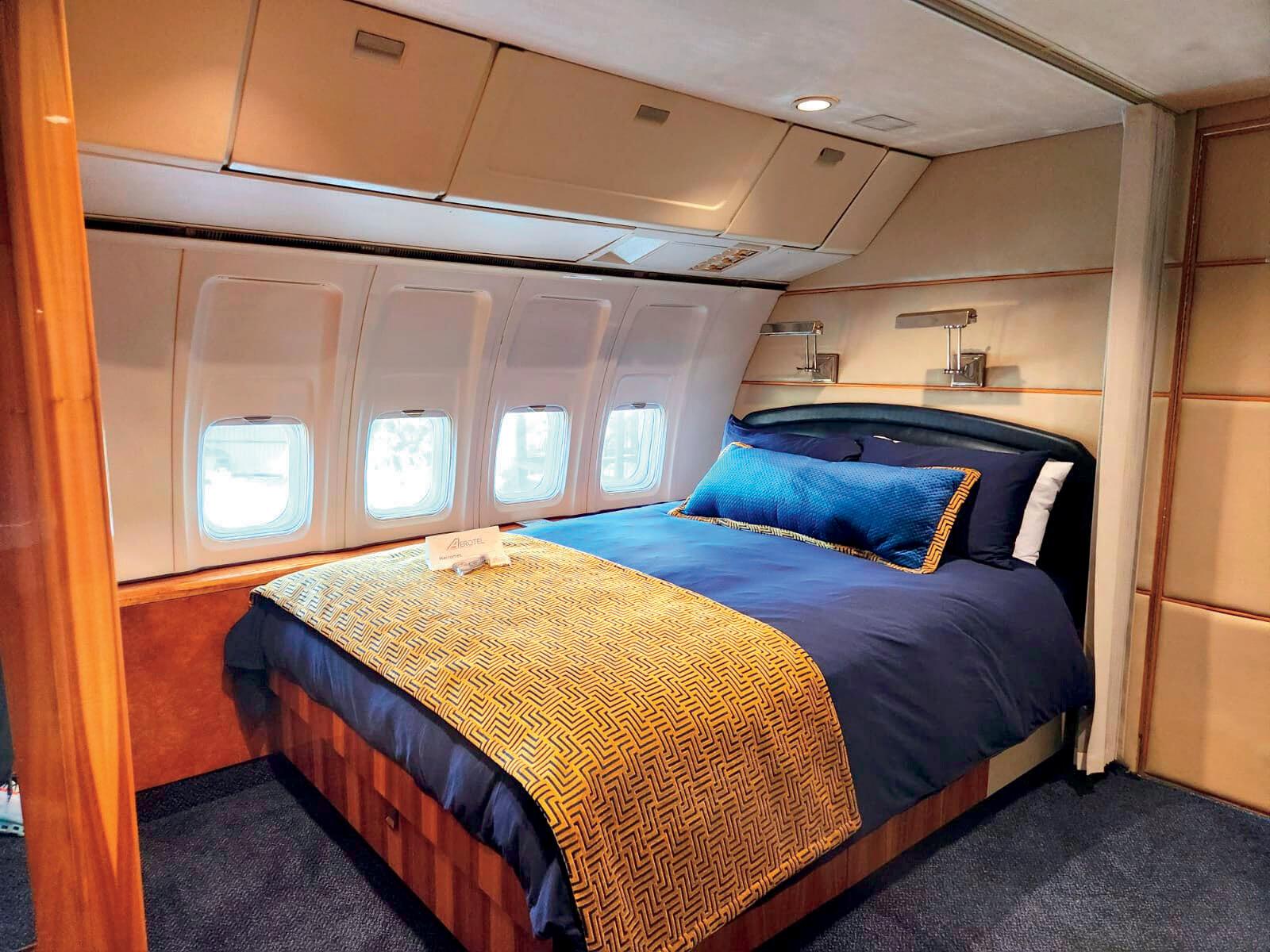

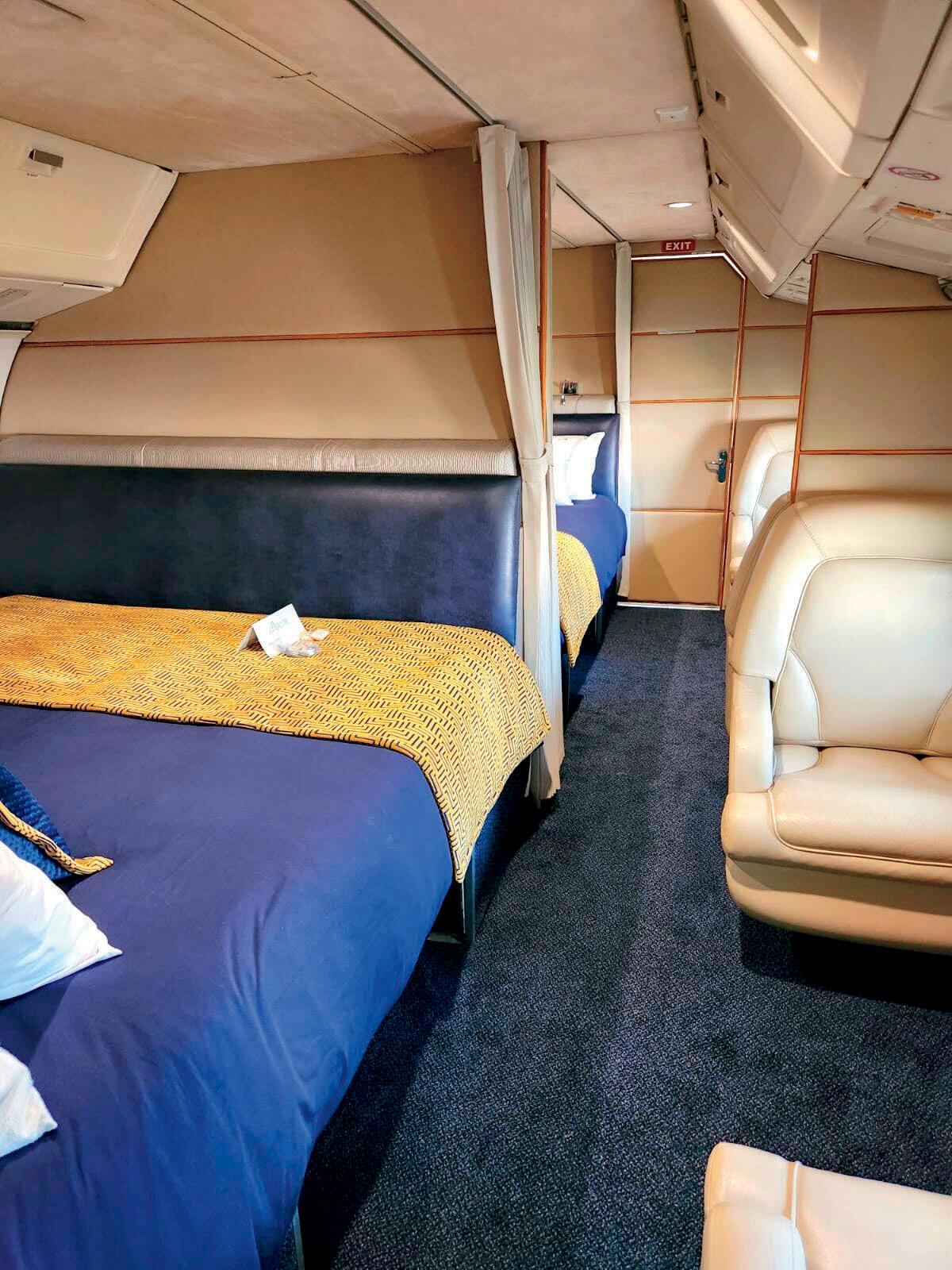


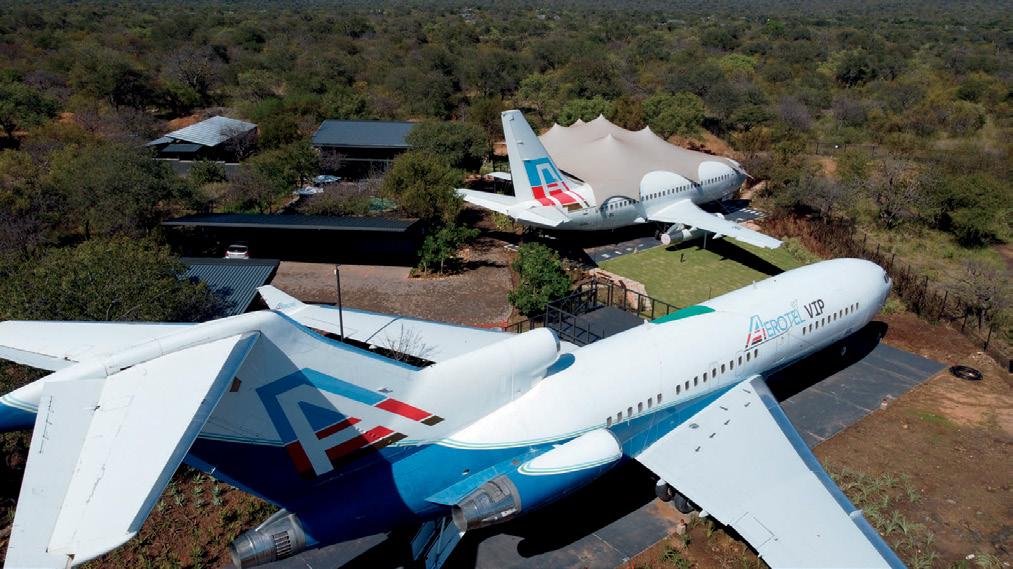
92 December 2022 Luxury 3 Bedroom, 2 Bathroom Aero Villa Private Deck Swimming Pool Restaurant | Aircon Wifi | Private Bar Private Plane Boeing 727 Luxury, Private Aero Villa VIP www.aerotel.co.za 087 6556 737 | reservations@aerotel.co.za “Better than First Class at a fraction of the cost” Wishing all our clients a happy festive season!



93 December 2022 www.dja-aviation.co.za Call 0800 FLYING An authorised FSP – Nr 15808 Insure now with DJA Aviation AIR RESCUE DJA LEARN MORE Your aviation broking specialist Defining the Right Approach to Aviation Insurance
Beaufort West
Fuel
Fuel Prices as at 28/10/2022
Prices include VAT but exclude any service fees
Airfield
Airfield
Avgas Jet A1
Avgas Jet A1
Fuel Prices as at 29/11/2022
Prices include VAT but exclude any service fees

Airfield
Airfield
Avgas Jet A1
Avgas Jet A1

Beaufort West
R33,05 R26,30
R33,05 R26,30
Bethlehem R31,00 R 23,50
Bloemfontein
Beaufort West
R33,05 R26,30
Bethlehem R31,00 R 23,50
R30,75 R21,60 Bloemfontein R30,90 R21,75 Brakpan R32,00 Brakpan R34,00 Brits R29,90 Brits R31,85
Beaufort West R33,05 R26,30 Bethlehem R31,00 R 23,50 Bethlehem R31,00 R 23,50 Bloemfontein R30,75 R21,60 Bloemfontein R30,90 R21,75 Brakpan R32,00 Brakpan R34,00
Brits R29,90 Brits R31,85
Cape Town R36,28 R21,10 Cape Town R35,48 R20,48
Cape Town R36,28 R21,10 Cape Town R35,48 R20,48
Cape Winelands R30,50
Cape Winelands R30,50
Eagles Creek R31,00
Eagles Creek R31,00
Cape Winelands R30,00
Cape Winelands R30,00
Eagles Creek R31,50
Eagles Creek R31,50
East London R32,65 R21,60 Ermelo R32,66 R25,99 Ermelo R32,66 R25,99
East London R32,65 R21,94
East London R32,65 R21,94 East London R32,65 R21,60 Ermelo R32,66 R25,99 Ermelo R32,66 R25,99
Gariep Dam R34,00 R24,00 Gariep Dam R43,00 R23,00
Gariep Dam R34,00 R24,00 Gariep Dam R43,00 R23,00
George R32,30 R22,77 George R33,10 R21,90 Grand Central R32,26 R24,21 Grand Central R33,98 R27,36 Heidelberg R30,50 Heidelberg R30,50
George R32,30 R22,77 George R33,10 R21,90
Grand Central R32,26 R24,21
Heidelberg R30,50
Grand Central R33,98 R27,36
Heidelberg R30,50
Hoedspruit POA
Hoedspruit POA Kimberley R30,81 R21,67 Kimberley R30,97 R21,80 Kitty Hawk R34,20 Kitty Hawk R35,40
Hoedspruit POA Kimberley R30,81 R21,67 Kimberley R30,97 R21,80 Kitty Hawk R34,20
Hoedspruit POA
Kitty Hawk R35,40
Klerksdorp R34,39 R23,92 Klerksdorp R34,39 R24,15 Kroonstad R32,12 Kroonstad R32,12
Klerksdorp R34,39 R23,92 Klerksdorp R34,39 R24,15 Kroonstad R32,12 Kroonstad R32,12
Kruger Intl Nelspruit R31,02 R24,60 Kruger Intl Nelspruit
Kruger Intl Nelspruit R31,02 R24,60 Kruger Intl Nelspruit R32,88 R26,38
R32,88 R26,38
Krugersdorp R29,00 Krugersdorp R30,50 Lanseria R31,05 R23,81 Lanseria R33,12 R24,50 Margate No Fuel Margate No Fuel
Krugersdorp R29,00 Krugersdorp R30,50 Lanseria R31,05 R23,81 Lanseria R33,12 R24,50 Margate No Fuel Margate No Fuel

Middelburg
Middelburg
R33,01 R24,15 Morningstar R32,25 Morningstar R30,95 Mosselbay R31,50 R26,50 Mosselbay R36,00 R26,00 Nelspruit R32,88 R22,30 Nelspruit R33,50 R27,03 Oudtshoorn R33,16 R23,55 Oudtshoorn R33,16 R23,10
R33,01 R24,15 Middelburg R33,01 R24,15 Morningstar R32,25 Morningstar R30,95 Mosselbay R31,50 R26,50 Mosselbay R36,00 R26,00
R33,01 R24,15 Middelburg
Parys POA POA Parys POA POA
Nelspruit R32,88 R22,30 Nelspruit R33,50 R27,03 Oudtshoorn R33,16 R23,55 Oudtshoorn R33,16 R23,10 Parys POA POA Parys POA POA
Pietermaritzburg
Pietermaritzburg
Pietersburg Civil R30,25 R24,95 Pietersburg Civil R32,15 R24,70
R30,80 R25,70 Pietermaritzburg R30,80 R27,50 Pietersburg Civil R30,25 R24,95 Pietersburg Civil R32,15 R24,70
R30,80 R25,70 Pietermaritzburg R30,80 R27,50

Plettenberg Bay R34,50 R25,00 Plettenberg Bay R34,50 R25,00
Plettenberg Bay R34,50 R25,00 Plettenberg Bay R34,50 R25,00
Port Alfred R33,50
Port Alfred R33,50
Port Alfred R33,50
Port Alfred R33,50
Port Elizabeth R31,97 R23,72 Port Elizabeth R31,97 R20,47
Potchefstroom POA POA
Potchefstroom POA POA Rand R30,38 R25,09 Rand R31,67 R24,96 Robertson R32,00 Robertson R31,75 Rustenberg R31,00 R23,95 Rustenberg R31,00 R23,95 Secunda R30,48 R25,88 Secunda R31,33 R25,88
Port Elizabeth R31,97 R23,72 Port Elizabeth R31,97 R20,47 Potchefstroom POA POA Potchefstroom POA POA Rand R30,38 R25,09 Rand R31,67 R24,96 Robertson R32,00 Robertson R31,75 Rustenberg R31,00 R23,95 Rustenberg R31,00 R23,95 Secunda R30,48 R25,88 Secunda R31,33 R25,88
Skeerpoort *** Customer to collect POA POA
Skeerpoort *** Customer to collect POA POA
Springbok POA POA
Skeerpoort *** Customer to collect POA POA
Springbok POA POA Springs R29,20 Springs R32,30
Stellenbosch R34,25 Stellenbosch R36,00 Swellendam R32,60 R24,60 Swellendam R32,60 R24,30
Skeerpoort *** Customer to collect POA POA Springbok POA POA Springbok POA POA Springs R29,20 Springs R32,30 Stellenbosch R34,25 Stellenbosch R36,00 Swellendam R32,60 R24,60 Swellendam R32,60 R24,30
Tempe R32,12 R24,93 Tempe R32,12 R25,59
Tempe R32,12 R24,93 Tempe R32,12 R25,59
Thabazimbe POA POA
Upington R31,68 R22,54 Upington R32,15 R22,68
Thabazimbe POA POA Thabazimbe POA POA Upington R31,68 R22,54 Upington R32,15 R22,68
Thabazimbe POA POA
Virginia R30,48 R24,15 Virginia R33,58 R23,93
Vryburg POA POA Vryburg POA POA
Virginia R33,58 R23,93 Vryburg POA POA Vryburg POA POA
Virginia R30,48 R24,15
Warmbaths R32,00
Warmbaths R32,00
Welkom R32,12 R24,93 Welkom R32,12 R25,59
Wings Park EL R32,75
Warmbaths R32,00 Welkom R32,12 R24,93 Welkom R32,12 R25,59 Wings Park EL R32,75
Warmbaths R32,00
Wings Park EL R31,75 Witbank R31,50 Witbank R32,20
Wings Park EL R31,75 Witbank R31,50 Witbank R32,20
Wonderboom POA POA
Wonderboom
Wonderboom POA POA Worcester R33,34 Worcester R33,34
Wonderboom POA POA Worcester R33,34 Worcester R33,34
POA POA
94 December 2022 FUEL TABLE
+27 10 446 9666
+27 82 553 9611
+27 82 924 3015 GPS Co-ordinates: S25°50’37 E27°41’28 Import/Export no. 21343829 SA Flyer 2022|12
www.sv1.co.za Tel:
Danielle:
Email: aviation@sv1.co.za Marina:
Prices
at
include VAT but exclude any service fees
as
28/10/2022 Prices
Fuel Prices as at 29/11/2022
VAT but exclude any service
Prices include
fees

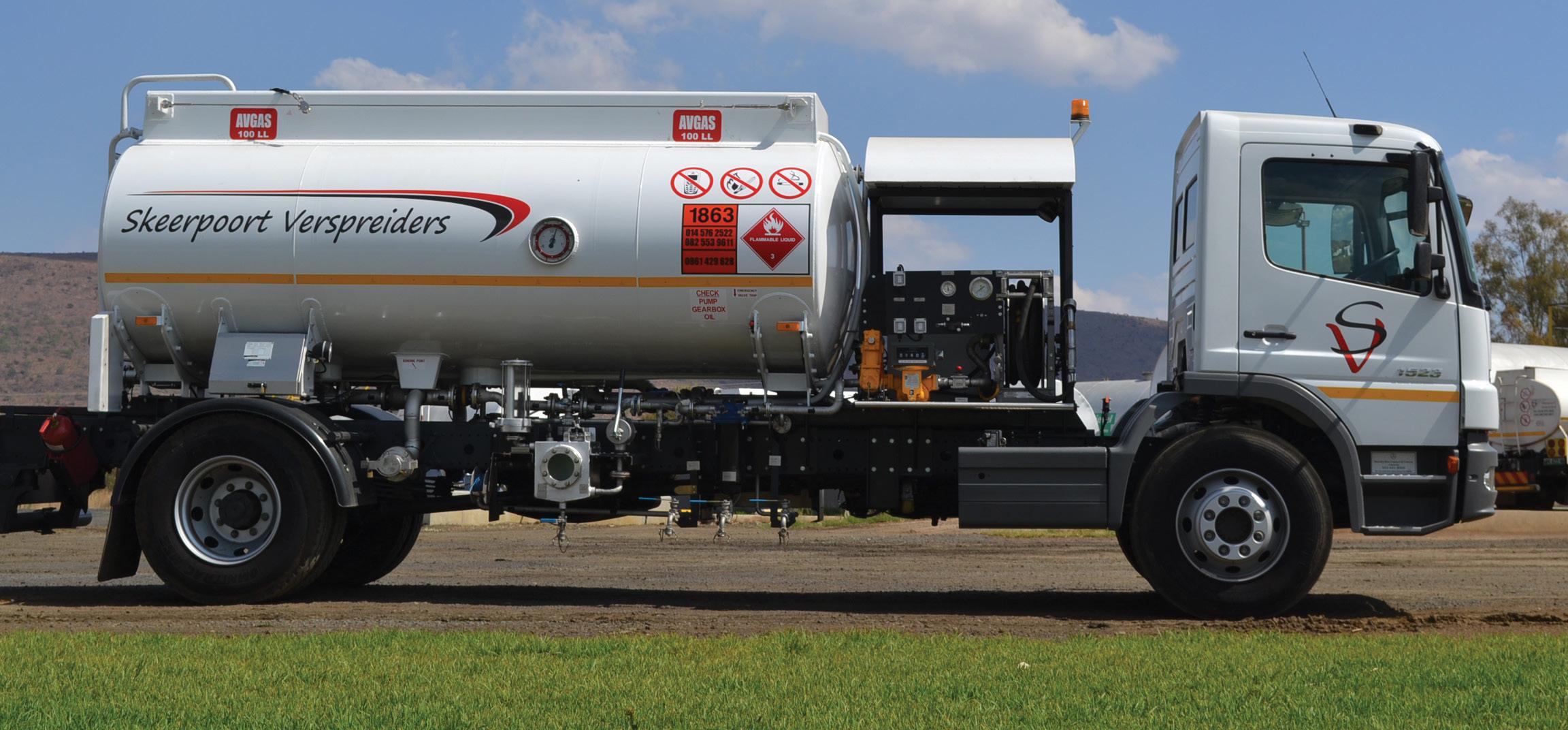

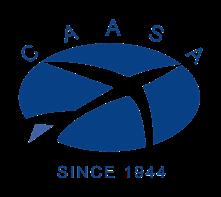

95 December 2022 WE ALSO HAVE AN ON-SITE HELI-PAD FOR CONVENIENT REFUELING. CALL US FOR A QUOTE OR VISIT OUR WEBSITE FOR MORE INFORMATION. SEALED 200L AVGAS DRUMS • SEALED 200L JET A1 DRUMS • AVGAS 100LL • JET A1 • PETROL • ILLUMINATING PARAFFIN • DIESEL • LUBRICANTS • HOEDSPRUIT • PARYS AIRFIELD • POTCHEFSTROOM AIRPORT • SKEERPOORT • THABAZIMBI • WONDERBOOM Tel: +27 10 446 9666 Danielle: +27 82 553 9611 Email: aviation@sv1.co.za Marina: +27 82 924 3015 WISHING ALL OUR CLIENTS A HAPPY FESTIVE SEASON!
THE WORLD RALLY FLYING CHAMPIONSHIPS – A GREAT RETURN
THE LAST TIME THIS COMPETITION was held in South Africa was more than a decade ago. The World Championship was meant to happen in Stellenbosch in 2020 and then in 2021, but was cancelled when the world went mad and all countries shut their borders.
Rob Jonkers left his position as chairman at SAPFA to accept the gargantuan task of competition director and began by delegating functions to various volunteers, who like Rob, innocently accepted the roles under the spell of ignorance.
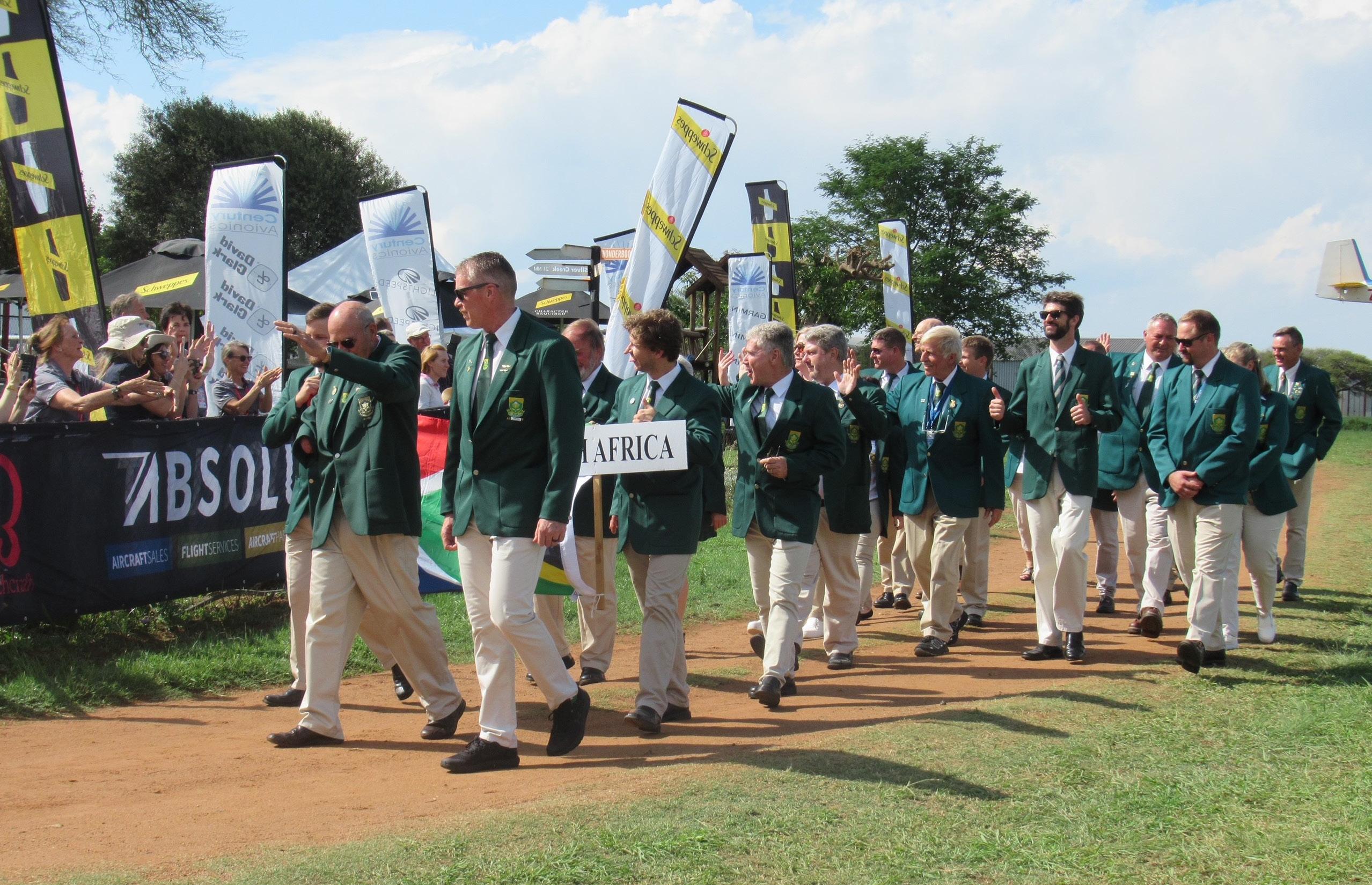
96 December 2022 RALLY CHAMPS
Ron Stirk and team captain Nigel Hopkins lead out the team.
The preparations for the 22nd World Rally Flying Competition began in earnest shortly after the qualifying rounds held at Brits in June 2022.
Words and Pictures: Laura McDermid
The event was to be held at Brits Airfield, and the members of the Brits Flying Club got stuck in revamping everything from resurfacing the runway to the renovation of the clubhouse. A new weathervane was erected by Roel Jansen made from a Van’s RV-7 that had been condemned, after some lunatic took an angle grinder to it. It turned out to be remarkably accurate, it’s prop impotently windmilling into the wind.
I accepted the role of chief scrutineer which meant that I was responsible for making sure that all aircraft that were participating were compliant with the regulations as set out by the FAI (World air sports federation).
Essentially no electronic equipment was allowed, which meant any form of EFIS, GPS, and hand-held device was banned. Being a navigation rally, the point is to plot a route on a paper map which is then flown according to compass headings and ground features.
The key components are of course aeroplanes and participants. Sourcing of the former was the responsibility of Martin Meyer, who sacrificed his participation in the rally to assist with the logistics.
The rallies are held annually in different countries. Most of them happen in Europe which simplifies the logistics as most of the participants fly in their own aircraft.

This of course was not a viable option for the 54 international entrants from 10 countries. It was thus Martin’s job to find a fleet of suitable planes. It had to be a plane that offers good visibility, is simple to fly, and can be flown consistently at a slow speed.
With that in mind, Martin set out to find Cessna C172s for the international teams but soon realised that this was not going to be as easy as he first thought.
97 December 2022
The cosmopolitan Brits clubhouse.
not going to be as easy as he first thought
He contacted almost every flight school in the country, and they all had the same story: their income is derived from training, and every school said that they were inundated with students and could not relinquish any planes.
In the end, Martin managed to secure two C-150s and 12 C-172s, three of which had diesel engines. With only 14 planes, it meant that each hired aircraft would have to fly twice. Martin’s next task was to allocate teams to the planes. Four of the five Polish teams insisted on flying the C-150s.
The opening ceremony against a backdrop of leaden skies.

With the planes allocated, Martin’s next hurdle was obtaining a 28-day validation of Foreign Pilots License from the CAA for 27 pilots.
This request had to be submitted 60 days prior to their arrival together with a letter confirming their date of arrival and departure and details of the aircraft they would be using.
the lag in the turbo was a huge disadvantage
The rest of the participants all got the C-172s, with the Germans being allocated the diesels. The reason for this was a bit vague but since one of the German team members flies a diesel, it was decided that all four German teams would want to fly them. The irony is that the team member that caused this decision did not even attend.
This ‘favour’ turned out to be a bane for the Germans, who found the lag in the turbo to be a huge disadvantage when attempting accurate spot landings.
Fortunately, the head of validations at the CAA, Johan Niemand, and his team was very willing to assist. Mikhal Rosenberg turned out to be the star of the show as he competently ploughed through all the paperwork. To begin with, the SACAA needed to get verification from the relevant foreign governing body of each participating country.
Before the pilots could be issued with a license, they had to carry out a competency check with a local flight instructor or DFE, and only once they had that endorsement in their logbooks could the local license be issued!
The teams began arriving a week prior to the
98 December 2022
start of the competition, hoping to get some practice in. However, due to unseasonal rains, Gauteng was blanketed by steel grey clouds, which dumped their contents relentlessly for days on end, turning Brits Airfield into a swamp.

The rain ceased briefly on Wednesday afternoon, affording eight pilots the chance to complete their check rides. Martin only managed to submit the necessary documents to the CAA after 17h00, but within a few hours, the everintrepid Mikhal had secured all the licenses. Despite it being a weekend, Mikhal issued the last license at 20h30 that evening, less than a day before the opening ceremony.
The remainder of the pilots managed to snatch opportunities between the bouts of rain, with the last check-ride being carried out on Saturday afternoon by local competitor Steve van der Merwe, who is also an instructor. Steve and a Cypriot pilot were still busy with circuits when the skies rent apart once again.
As though that wasn’t stressful enough, it transpired that one of the diesel aircraft had gotten water in the fuel and had to be replaced at short notice, adding another line to Martin’s increasingly furrowed brow.
Whilst all of this was going on, Shane Somerville and Marc Robinson from Century Avionics were assisting with the technical aspect of scrutineering. Their job was to remove or disable any piece of electronic equipment that could possibly be perceived as a navigation aid.

99 December 2022
Nigel Hopkins and Jason Beamish show off their skill in the Extras.
The cellphone was permanently attached to Martin Meyer’s ear.
Glass cockpits are the scourge of this sport. In They are one of the biggest impediments to experiencing the full joy of recreational flying. Technology has made reading and plotting a map redundant. I’m not suggesting that navigational aids should be forgone, but I can speak for myself when I say that rally flying has increased my situational awareness by teaching me how to fly at slow speeds in all sorts of wind conditions while staying on track and maintaining heading by looking out the window.
Sunday’s opening ceremony was against a backdrop of leaden skies in the southeast. This didn’t stop Nigel Hopkins and Jason Beamish from putting on a spectacular aerobatic display.
Each country was announced in alphabetical order and marched through the red mud in time to their national anthems, flags snapping in the brisk wind. South Africa was the last team to be announced and was led out by stalwart Ron Stirk as the stand-in team manager after the self-appointed manager resigned from his position a mere two months before the opening. Despite the first manager’s good intentions, it transpired that managing a bunch of competitive Type A personalities was too much for him.
With the manager gone, the team rallied together, and with extra tasks delegated amongst the participants and the volunteers, work continued unabated.
The first day of the competition dawned to reveal hints of azure between a carpet of white clouds. Considering the preceding two weeks of solid rain, the aviation gods must have taken pity on us, for no rain was forecast over the next four days.
The fields where the aircraft were parked were waterlogged and getting to the hangar where the briefing and quarantine took place literally meant having to walk the planks.
Despite not having practiced much because of the inclement weather, the teams were ebullient.
A frisson of excitement ran through me as I listened to the first briefing delivered by the Chief Judge, Ralf Grunwald from Germany.
There were a total of nine international jury and judges, plus five local judges, who as it transpired, would be embroiled in many disputes over the next four days (more about that in Part II).
Nigel Musgrave and his team of air traffic controllers, Marelise and Karen, took over the airwaves, ensuring that all participating aircraft were well managed over the duration of the event. A team of volunteers braved the African sun and sat at the threshold of the runway, observing the spot landings which were an integral part of the competition.
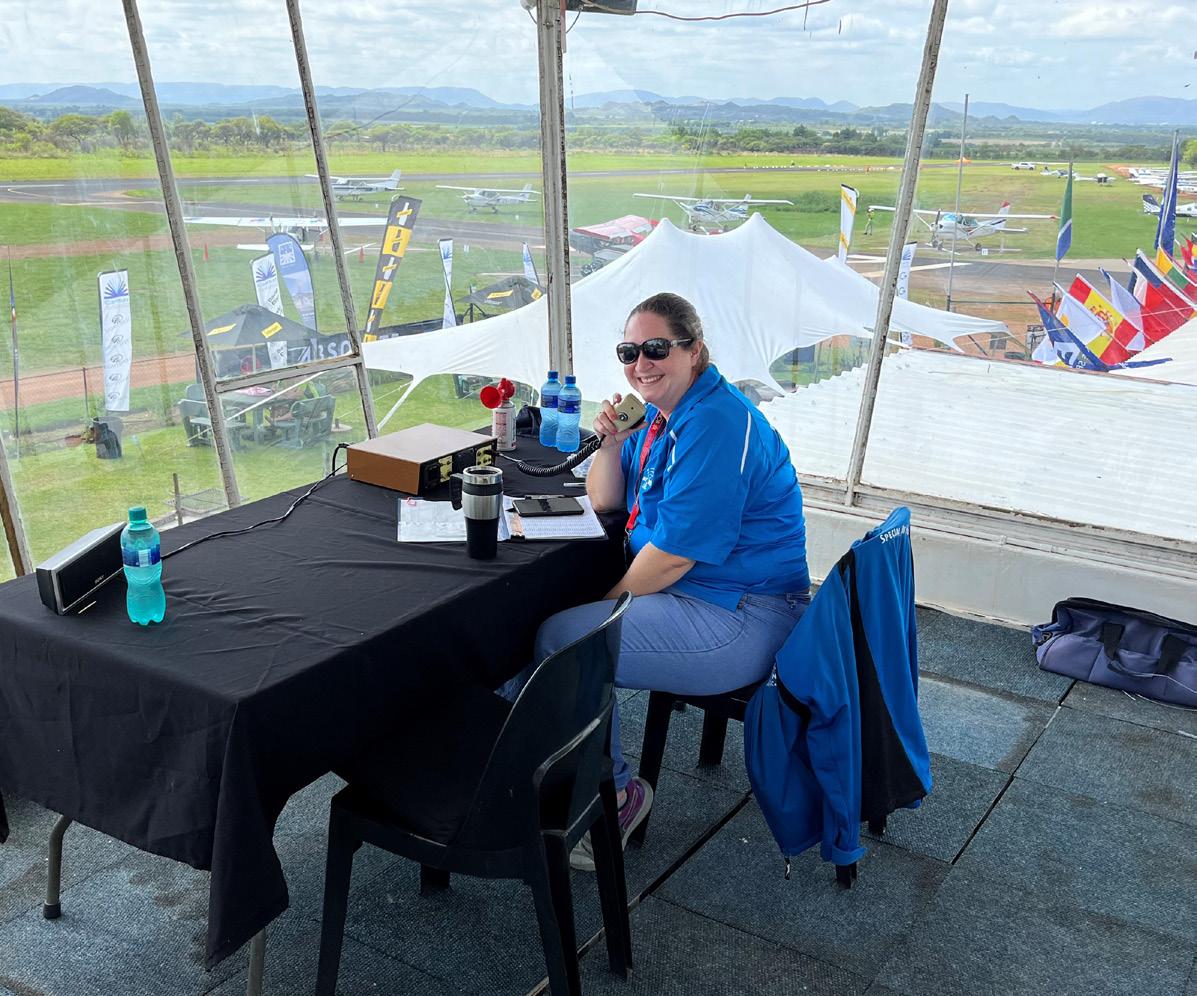
There were marshals whose job it was to hand race packs to the teams at the start, and collect them at the end. This all had to be managed in a tight time frame as any delay had the potential to incur penalties for the teams.
Piet from the CAA ensured that all aspects of the competition were monitored in line with the high standards expected from an international aviation event and at any given time the airfield was teeming with lime green and neon orange day-glo shirts.
Back at the clubhouse, Yolandie and Christina
100 December 2022
ATNS Marelise Scheepers in the tower.
kept everyone fed and lubricated, not skipping a beat even when Eskom switched the lights off.
My husband Stuart volunteered to manage the live tracking system. Part of our job was to allocate trackers to each plane. These had to be turned on just before the first teams were handed their papers and switched off between flights to preserve their batteries.
Each unit had to be enabled so that the plane’s track could be watched virtually by clicking on a link from anywhere in the world.
Stuart had set up a TV screen in the Brits clubhouse which afforded the visitors and workers an opportunity to watch the competitors tackle the challenging routes that Frank and Cally Eckard had spent months compiling.
Ironically the trackers were instrumental in ensuring that firm favourites, pilot Nigel Hopkins and navigator Mary de Klerk, would hold onto first place on the second day, when all three of their loggers had issues, resulting in no clear record of their flight. Frank managed to ‘stitch’ the information together which resulted in a 5-second delay at each turn point.
Mary was adamant that they bingoed the start, however it was her word against the information gleaned from the faulty loggers. Incidentally, the trackers also record the flights, but the information cannot be used because the device is not certified for that purpose.
It did however confirm that the standard software stitching of the logger files had introduced a timing error and that a detailed manual process was required to obtain a more accurate record of the flight, thus affirming the team’s viewpoint.
These live trackers have the potential to transform rally flying into a spectator sport, and with increased viewership comes the opportunity for sponsorship, and a much-needed boost for a dwindling sport.
Due to a technicality, Mary and Nigel were
unfortunately robbed of their chance to bring home the trophy, which saw Poland take first and second place.
The dynamic South African duo took the bronze medal at the closing ceremony, which was held at Fatherland in Brits. The function was the perfect ending to a memorable event. Hans Schwebel, President of the General Aviation Commission (GAC), officially closed the event and Rob gratefully handed the FAI flag to Phillipe Muller, the appointed Competition Director for the 23rd WRFC, which is to be held in France next year.
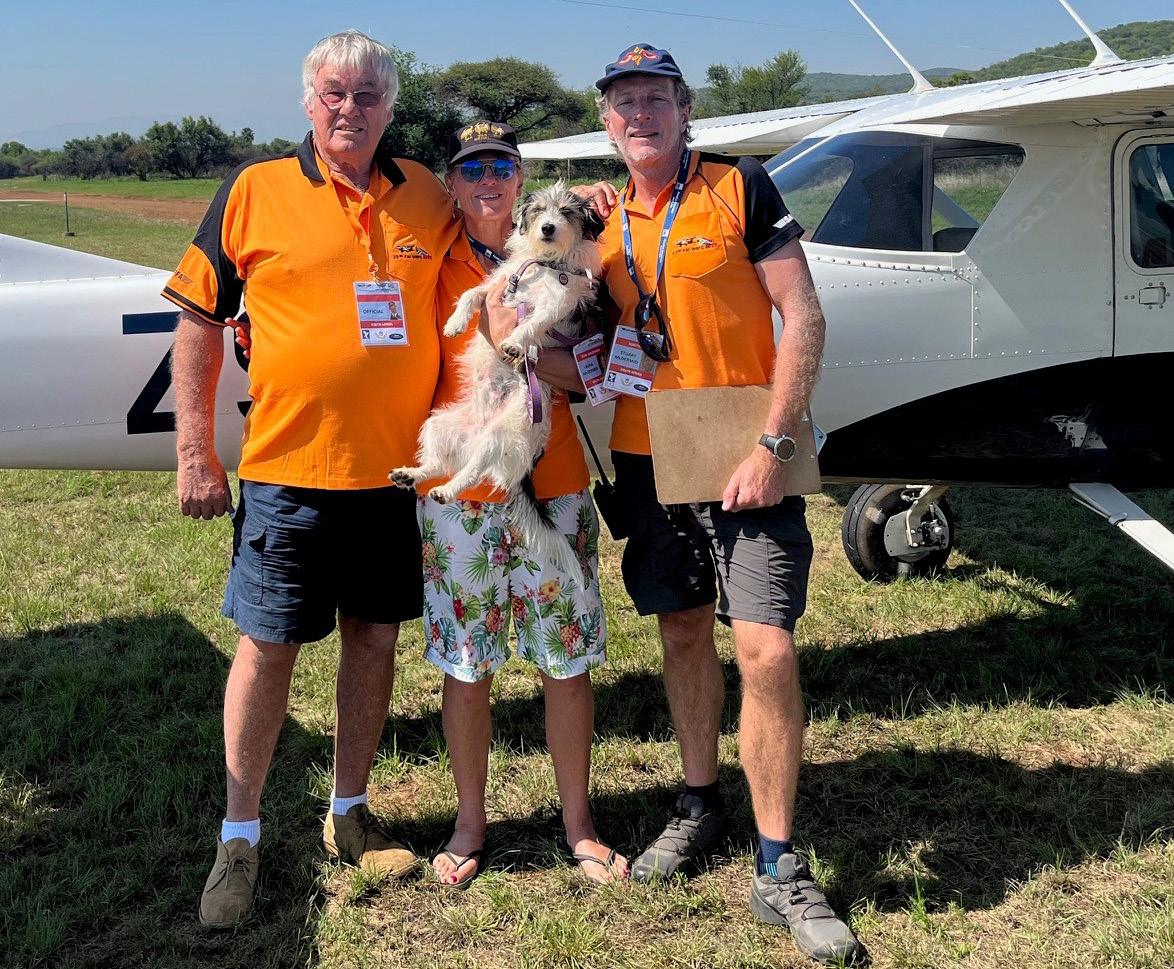
When I asked Rob and Martin if they would do it again, they both gave me a loaded look, which I interpreted as ‘No ******* way’; both were adamant that it shaved years off their lives. It was for this reason that I chose to write about the unsung heroes who were pivotal to the success of this event.
Most involved accepted their roles with alacrity. There were endless hurdles and many of the organisers worked around the clock and got very little sleep.
This was an international event that rivalled any other, with the exception that the beauty of Africa captured many hearts, and what better way to experience this amazing country than from the air?
101 December 2022
Derek Hopkins, Laura & Stuart McDermid and Seamus the sniffer dog.
j
AZRIEL CELEBRATES A NEW PARTNERSHIP WITH GUARDRISK INSURANCE CO. LTD.
WELL RESPECTED
specialist aviation
Underwriting Manager, Azriel Aviation Africa Underwriting Agency (Pty) Ltd celebrated its new partnership with Guardrisk Insurance Company Limited and CIB (Pty) Ltd at a glamorous function on 3 November at Wonderboom Airport.
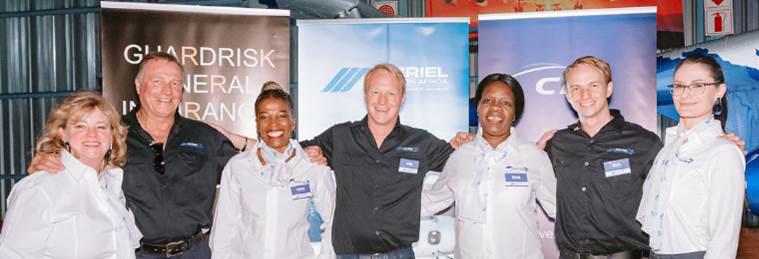
Under the leadership of founder and CEO Jan Coetzee, who has 34 years’ experience in aviation insurance, Azriel Aviation Africa has a stellar reputation for ethical business providing client-focused and innovative insurance for jets, turbo-props, all fixed-wing and rotor-wing aircraft as well as Hot Air Balloons. They also offer cover in respect of Airport Operators & Owners Liability, Deductible Buy-Down insurance, Hangarkeeper’s and Repairer’s Liability insurance as well Personal Accident Insurance.
The relationship-centric ethic of the business has its roots in a strong family focus with four
Coetzee family members being key people in Azriel.
All of Azriel’s policies are now underwritten by Guardrisk Insurance Company Limited, a licensed non-life insurer and authorized Financial Services provider #75.
Azriel Aviation Africa has been in business for over 12 years and have various clients in Africa and ones based on the Indian Ocean Islands. After 2 years of negotiation, we have successfully finalized a strategic partnership with a licensed Insurer based in Botswana to cater for their aviation clients.
For more information, or a competitive quote, ask your broker to contact Jan Coetzee on Tel: +27 82 604 5127 or at jan@azrielaviation.co.za. j
102 December 2022
NEWS
The Azriel team strike a pose at their function.
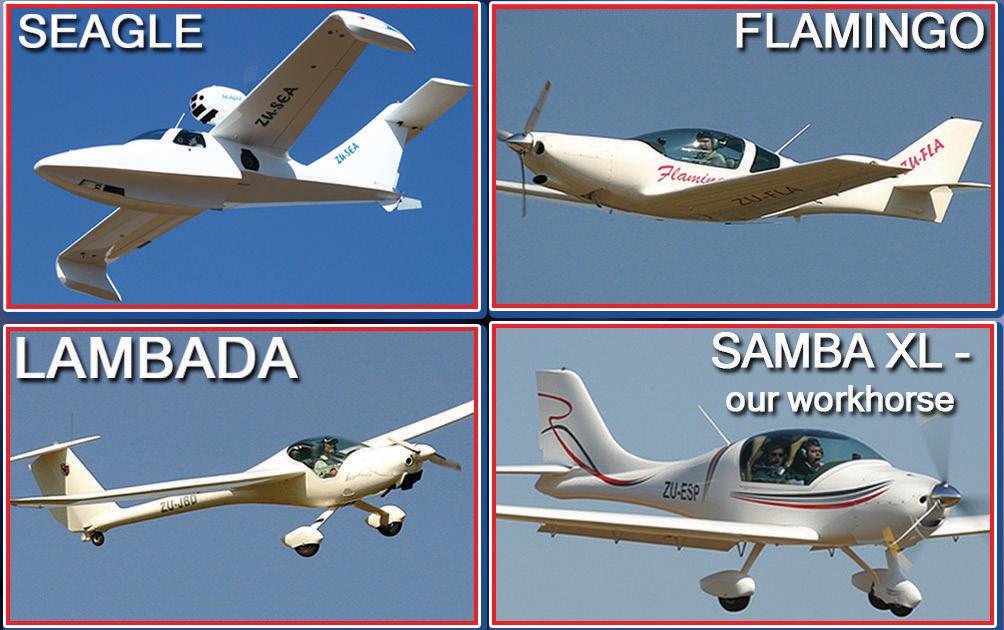


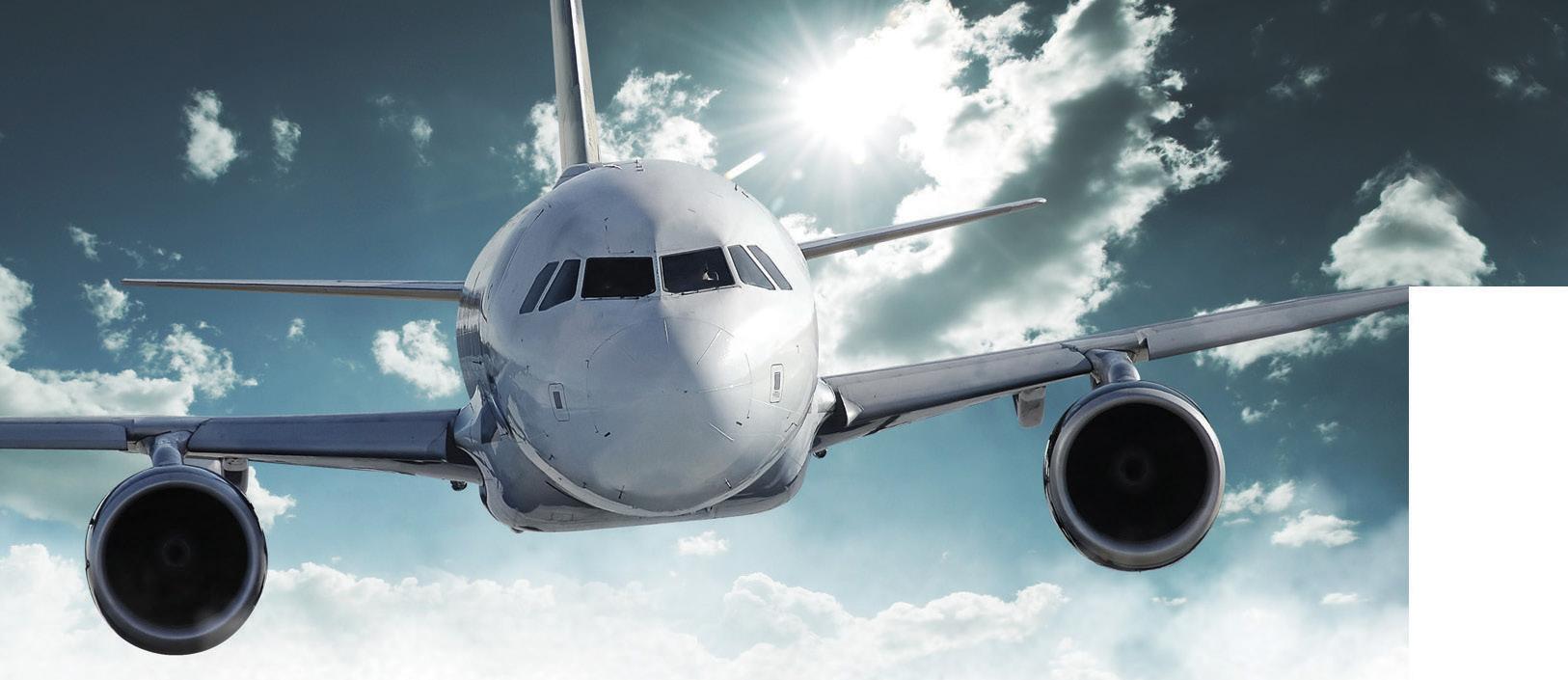
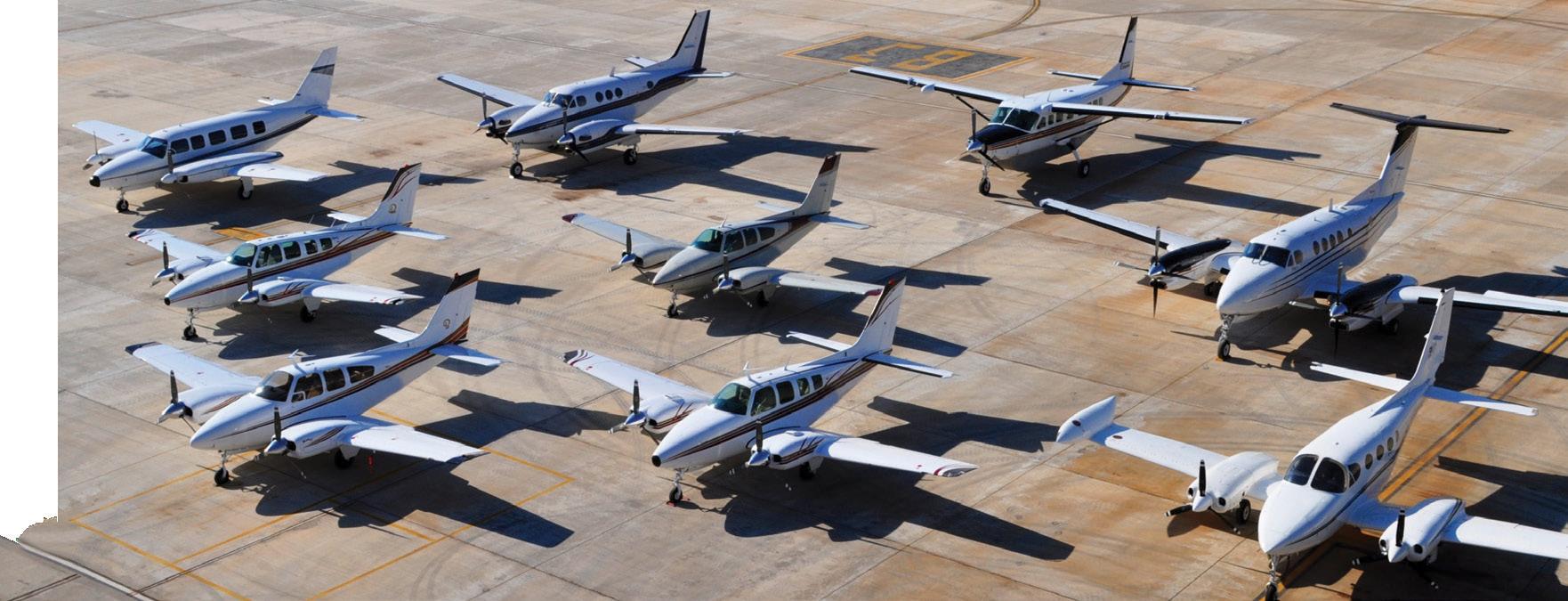
103 December 2022 Wings ‘n Tracks (PTY)Ltd Enhance your lifestyle Rainer Frieboese +27 82 873 7273, Barbara Frieboese +27 82 713 1016 wingtrack@iafrica.com www.wingsandtracks.co.za PLEASE FEEL WELCOME TO CONTACT US FOR MORE DETAILS OR A DEMO FLIGHT. Enhance your lifestyle Enhance your lifestyle Have a wonderful festive season! An Authorised Financial Services Provider FSP No. 43029 AVIATION AFRICA Your Asset – Our Highest Priority Azriel Aviation Africa, specialist Aviation Underwriting Managers, in partnership with Constantia Insurance Group, forms a powerhouse in the Aviation, Short-Term and Life Insurance markets. Client-focused solutions provide innovative insurance for jets, turboprops, all fixed-wing and rotor-wing aircraft, as well as hot air balloons and all related aviation liabilities. We’ll put you in touch with one of our specialist brokers. Contact 082 jan@azrielaviation.co.za www.azrielaviation.co.za Lesoba 18798 Season’s greetings and Happy New Year! Merry Christmas and a Very Prosperous 2023 www.azrielaviation.co.za Authorized FSP: 43029 Underwritten by Guardrisk Insurance Company Limited, a licensed non-life insurer and authorised FSP: 75
BILL HARROP’S CELEBRATES MONTGOLFIER DAY

TWO FRENCH BROTHERS, Jacques-Étienne Montgolfier and Joseph-Michel Montgolfier developed a hot air balloon in France’s Annonay region. It was demonstrated to the public, making a flight that lasted for 10 minutes.
To celebrate this historic achievement the home of Bill Harrop’s Original Balloon Safaris was
awash with colour on a balmy Saturday evening in November.
The standard hot air balloon consists of an envelope to contain the hot air and a wicker basket, where passengers and a means of creating hot air are housed. But that being said, the ballooning community are not always happy
104 December 2022 BALLOONING
An assorment of 14 historic balloons were re-inflated for the celebration.
The hot air balloon is the oldest form of flight used for carrying humans, following the first manned flight in 1783.
to be conformists. This was very evident on Saturday evening when some iconic balloons were unpacked for the first time in many years. Many of these balloons had been grounded as they were created for liquor advertising that many years ago was banned in South Africa. Ohers had just reached the end of their safety life.
Dale de Klerk is the CEO and Tracy Robb Chief Pilot of Bill Harrop’s Balloon Safaris. They decided to look through the storage area and came across iconic balloons that had been forgotten about. They decided to use Montgolfier Day to showcase these masterpieces under the banner of the Great Dinosaur Balloon Derby.
Sadly, founder Bill and his wife Mary Harrop had been taken from us by Covid-19 in 2020. I’m sure they would have loved to witness this spectacle.
Many off the balloons had been designed and built by Terry Adams, regarded as the father of hot air ballooning in South Africa. Terry first began ballooning in England in 1972, emigrated to South Africa in 1976 and started Flamboyant Balloons. He got ballooning off the ground in South Africa has built over 50 balloons. Amongst his most memorable achievements was launching his balloon from the Ark Royal – a British Navy aircraft carrier – and landing in Malta in the mid-1970s. Terry has ballooned the length and breadth of South Africa and is a legend in international ballooning circles.
Balloon pilots from as far back as the ‘80s were invited to join the celebrations and of course Terry was there. The pride on his face was evident as balloons were inflated for the first time in some cases over thirty years.
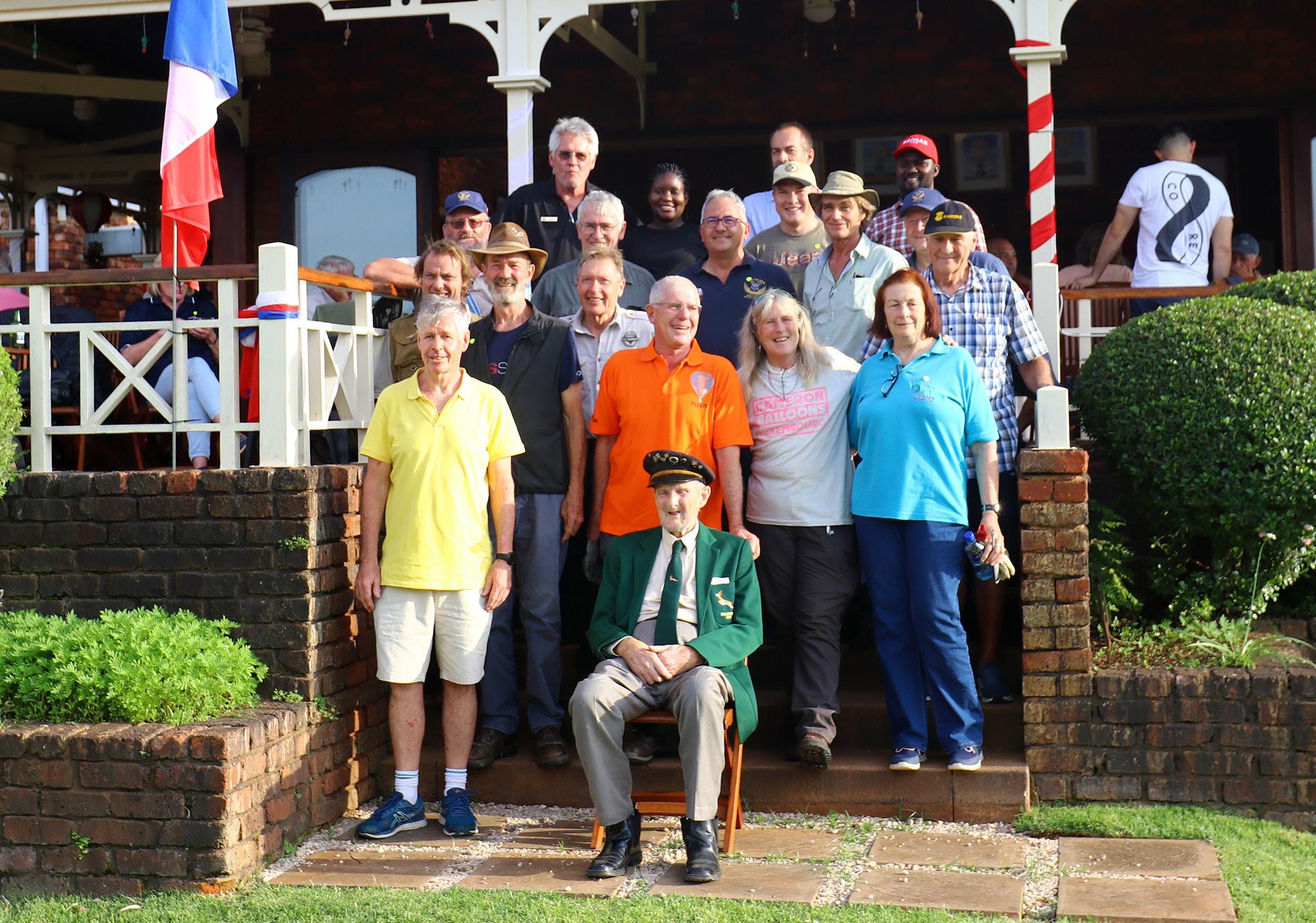
105 December 2022
Balloon pilots - past and present with Terry Adams in blazer in front.
inflated for the first time in over thirty years
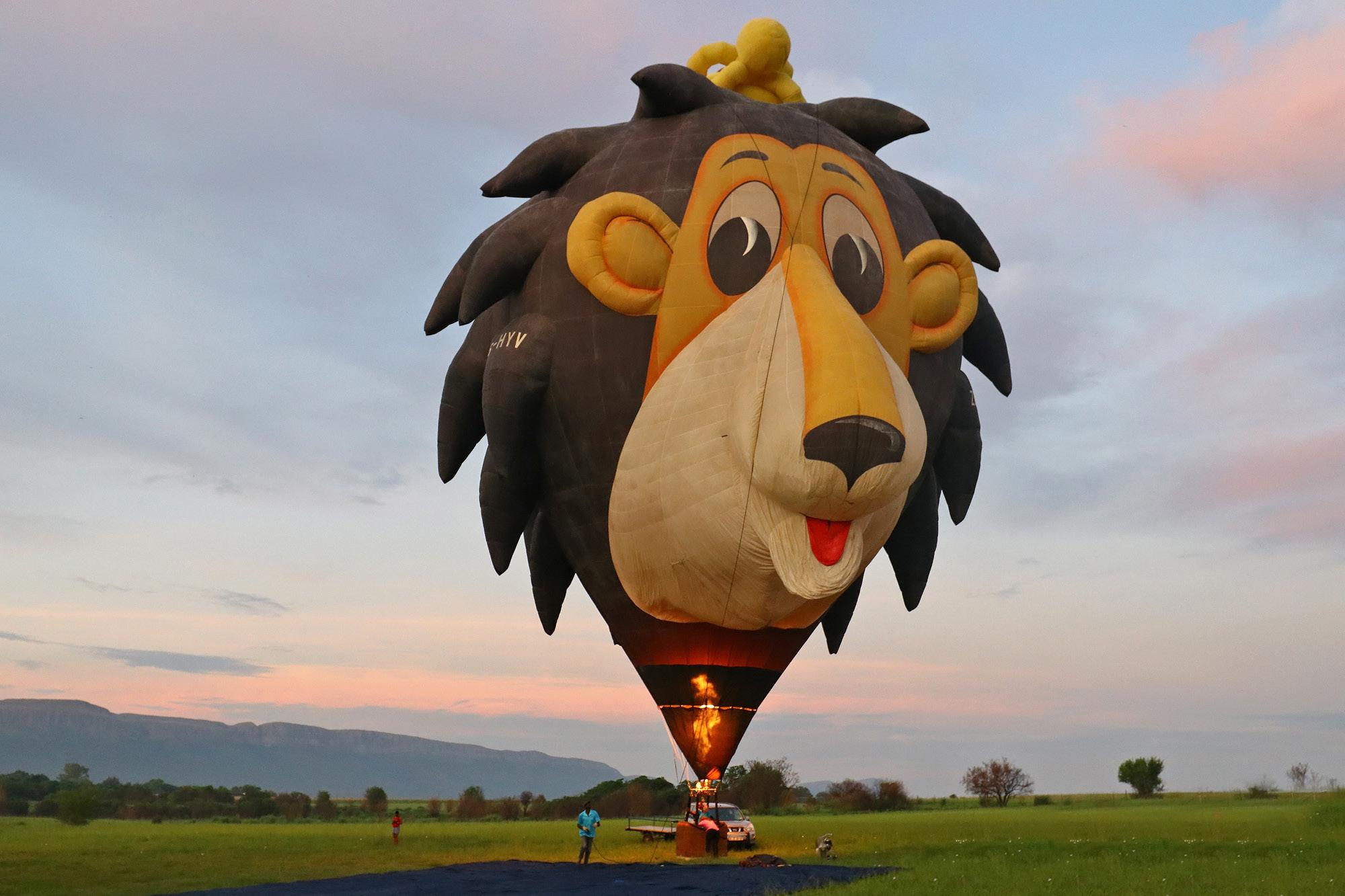

106 December 2022
Simba - one of the iconic old balloons.
Nightglow from the huge hot air balloons with burners on.
Tracy Robb, who is by far the most experienced balloon pilot in South Africa with well over 4000 hours, decided to try out one of the treasures found in the storeroom. The contraption is known as a Hopper and is a single person balloon where the pilot is strapped to the gas cylinder and burner by a harness that would be at home in a WWII fighter aircraft.
The pride on his face
Once the small balloon had been inflated Tracy slowly drifted off the ground, although she was tethered as the balloon is no longer classed as airworthy. Once she landed a few other brave
pilots took the opportunity to fly this small piece of ballooning history.
Before the sun set on the tranquil Skeerpoort Valley all the guests were treated to a delicious dinner, testament once again to the wonderful catering offered at Bill Harrops Balloon Safaris. Guest that visit for a morning flight will get a taste of the after their exhilarating aerial experience.
Once night fell the real visual treat started with the fourteen balloons all fully inflated and tied down treated the visitors to a night demonstration that will not be rivalled for many years. Terry stood on the balcony staring at all the balloons with pride, proudly wearing his green and gold “Springbok” colours that he achieved many times over during his amazing career.

107 December 2022
Tracy Robb getting airborne in the Hopper.
was evident
j

– SEVENTH EDITION
HELI OLYMPICS
TEXT AND IMAGES GARTH CALITZ Helivate Helicopter Services have hosted a Heli Olympics for the past seven years and the pilots must love the challenge as they always return for more.
Pilot Gary Marais in an R44.
THE HELI OLYMPICS concept was designed to take pilots out their comfort zones and into an area that very few pilots actually get to operate in normal conditions. Haley and her team from Helivate always try and make the tasks as fun as possible and this year was no exception.
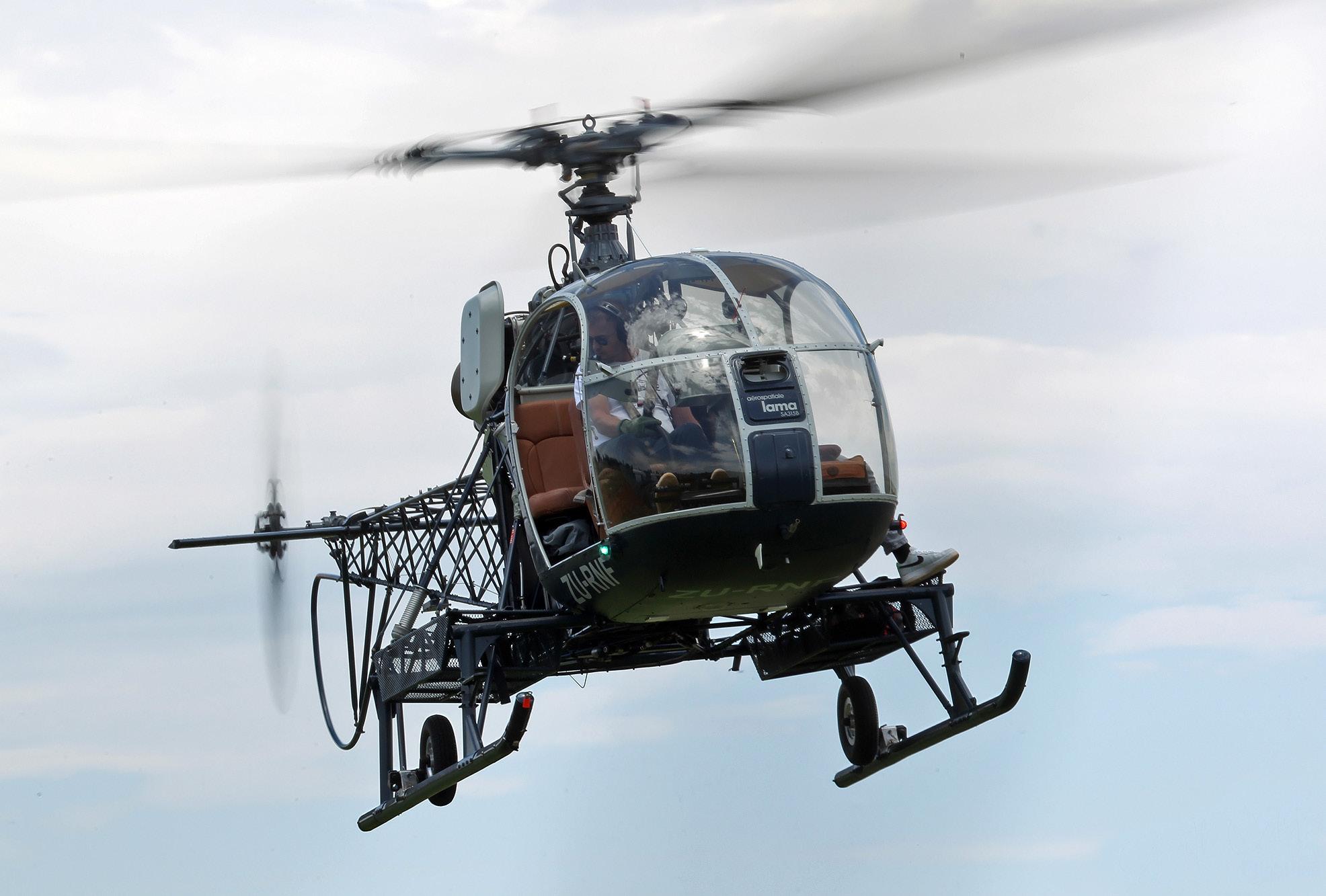
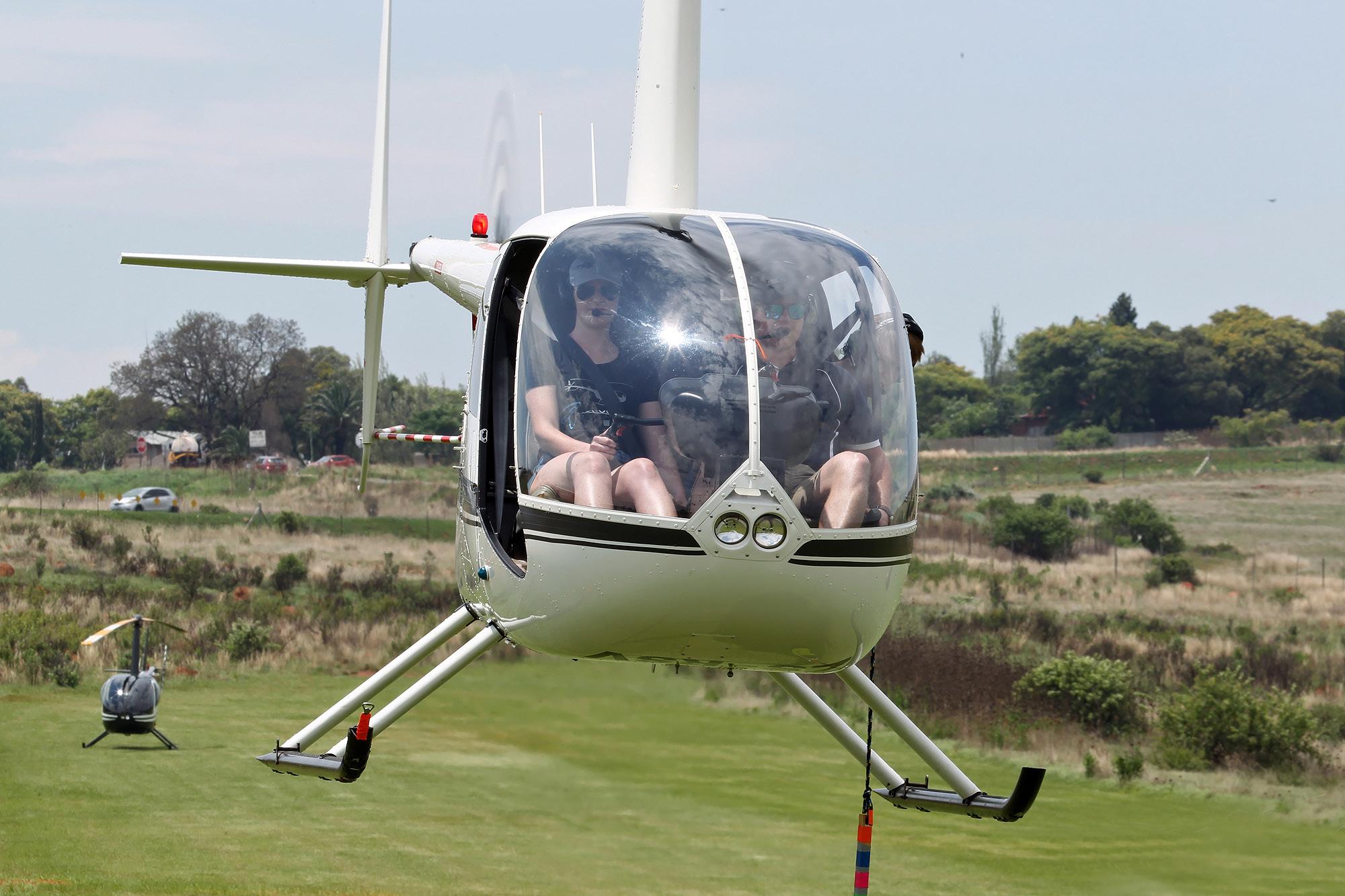
open a beer bottle with the skid

The morning started with a serious threat of rain, which did eventually come but was very short lived. By the scheduled start time the conditions were perfect – well as perfect as Krugersdorp Airfield could deliver, which means the customary wind was everpresent.
Student pilots were first to get airborne, which was a good thing as conditions were expected to deteriorate through the morning.
Three tasks were designed to test the pilot and navigator’s communication skills as well as the pilot’s flying skill. The first task was named “Grappling Sling.” In this task four colour coded buckets are filled with water and placed on a barrel. The navigator has to direct the pilot to the barrel, hook one of the buckets with grappling hook on the end of a rope then direct the pilot through the corresponding
109 December 2022
“Beer O’clock” using a Lama to open the bottle.
Genevieve King and Luke Jacobs.
The powerful Lama in action.
coloured obstacle. Once the obstacle has been successfully negotiated the bucket has to be placed on another barrel without spilling the contents or allowing the bucket to touch the ground. This sounds simple but one must remember the pilot cannot see the bucket as the navigator is positioned on the opposite side of the helicopter.
The task is repeated as many times as possible before the judges call the allotted time over then they have to drop what they doing and move to the next obstacle.
The second obstacle was named “Brick Bash.” The navigator is required to direct the pilot to a bucket placed on a barrel then drop a brick, which is attached to a rope, into the bucket. Once the brick is in the bucket the pilot has to move backwards and perform a 180° hover turn without the bucket being pulled off the barrel or a weight on the rope touching the ground.
The final test is one that has been in every Heli Olympics since its inception. “Beer O’clock” has become one of the main draw-cards for the Heli Olympics as the pilots keep coming back to test themselves. The idea is to open a beer bottle with the skid of a helicopter in the shortest time. In this test the pilot is on his own as she or he has clear line of sight to the bottle opener taped to the skid of the helicopter. All the navigator can do is offer moral support, but with the times dropping to a few seconds, they didn’t get much chance to do that.
Fourteen teams entered this year’s event, three
of them in the student category and the rest taking part in the PPL category. Each team was encouraged to come up with a name for the team, so some of them were rather comical.
Once all the students had completed their assigned tasks it was time for the PPLs to give it a go. The quality of flying has increased notably since the first Heli Olympics. For the first time this year a live scoring screen was added and the jury is still out as to whether it was a good or bad thing. The pilots could follow each other’s progress in almost real time but it did take away from the announcement of the winners as that information was already out there.
THE FINAL SCORES WERE AS FOLLOWS:
Student category:
In third place was Team “Blackhawk” made up of pilot Storm Haupt and navigator Eddie Soares managing a total of 22 points. Second place was “Squirrel B2”, Pilot Gary Klare and navigator Haydon Heres. Team “Rotorkop” made up of the pilot Eddie Soares, who has now taken the record for the youngest pilot to ever have taken part in the Heli Olympics. At 15 years young, he was assisted by navigator Storm Haupt, who is only 17. All the students competed in the same Robinson R44.
Private Pilots category:

Third place was taken by Team “Lama Lama Lama” – in a Lama. It was piloted Rudi Marx assisted by his son Nathan. The “Goosberries” took second by only four points with Gary Marais in the pilot’s seat and his sons operating as spotter and navigator. The laurels however went to pilot Genevieve King and navigator Luke Jacobs.
Next year something will have to be done to make the “Beer O’clock” more challenging as the record for the fastest completion has just got too low. Martin managed to pop the cap in just six seconds, with Dieter not far behind at nine seconds.
110 December 2022
The Robinson R44 was used by the student pilots. j
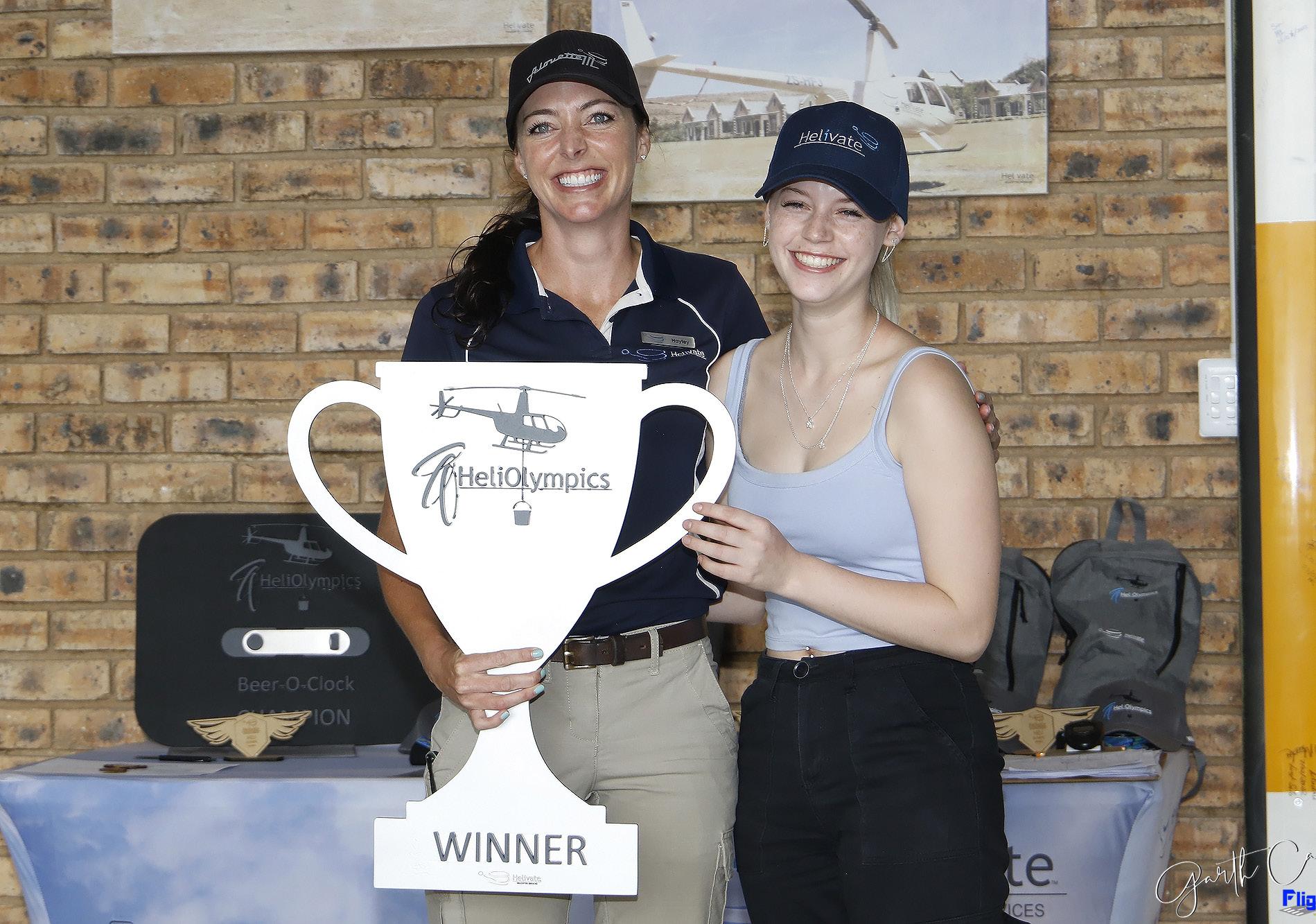

111 December 2022
Winning Navigator Storm Haupt. Her pilot Eddie Soares was not present.
Genevieve King and navigator Luke Jacobs.
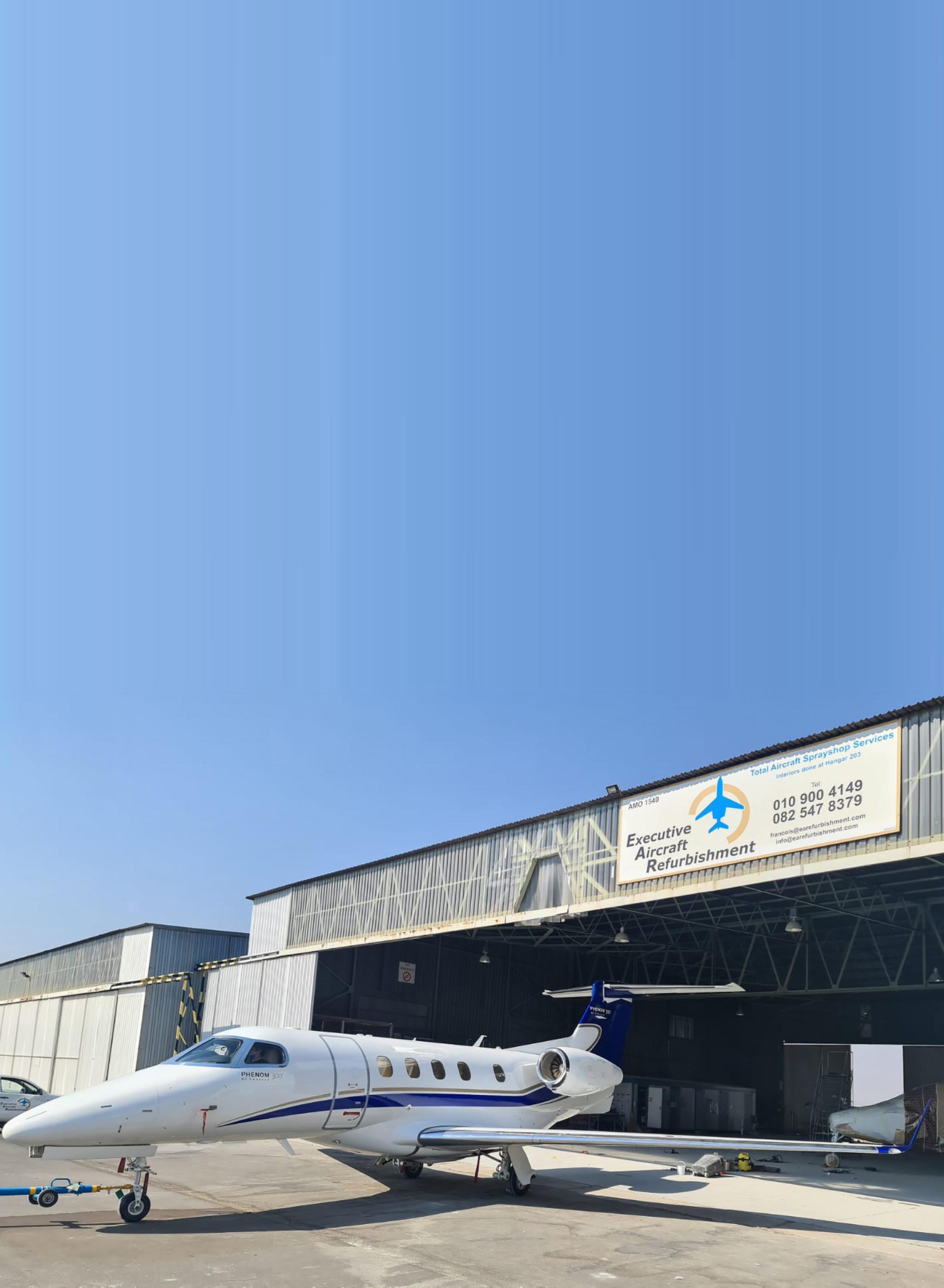
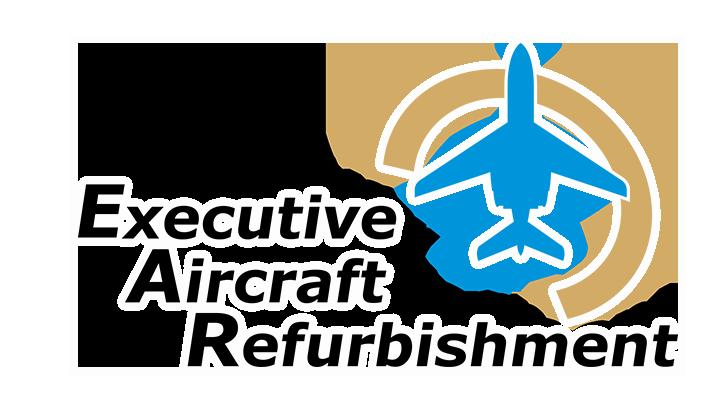


112 December 2022 Tel: +27 (0)10 900 4149 | Mobile: +27 (0)82 547 8379 Info@earefurbishment.com | Francois@earefurbishment.com Hangar 24 (Interior Shop) and Hangar 31 (Paint Shop). Lanseria International Airport, South Africa, Gate 5 North Side. EVENTS CALENDAR MEBAA SHOW 6 – 8 December Dubai Contact: www.mebaa.aero INTERNATIONAL CIVIL AVIATION DAY (ICAD) 7 December Contact: SACAA www.caa.co.za AFRAA’S 54TH ANNUAL GENERAL ASSEMBLY 11 – 13 December Senegal Contact: www.afraa.org CAPE ST FRANCIS FLY-IN 28 – 29 December Brits Contact: Barry Culligan 083 611 3333 E-mail: barry@otto.co.za Compliments of the Season and best wishes for the New Year! SAC ACE OF BASE 3 – 4 December Location: TBC Contact: Annie Boon 082 902 8614 E-mail: chunge@mweb.co.za

FlightCm Afr ican Commercial Aviation Edition 168 | December / January 2022/23 Getting shot in Somalia Why do we need Fighters? SAA John Lamola – is SAA making money? SANSA - Space weather and aviation
John Bassi – Limpopo’s Human Hyenas SACAA Poppy Khoza – onto the world stage
Cover: SANSA
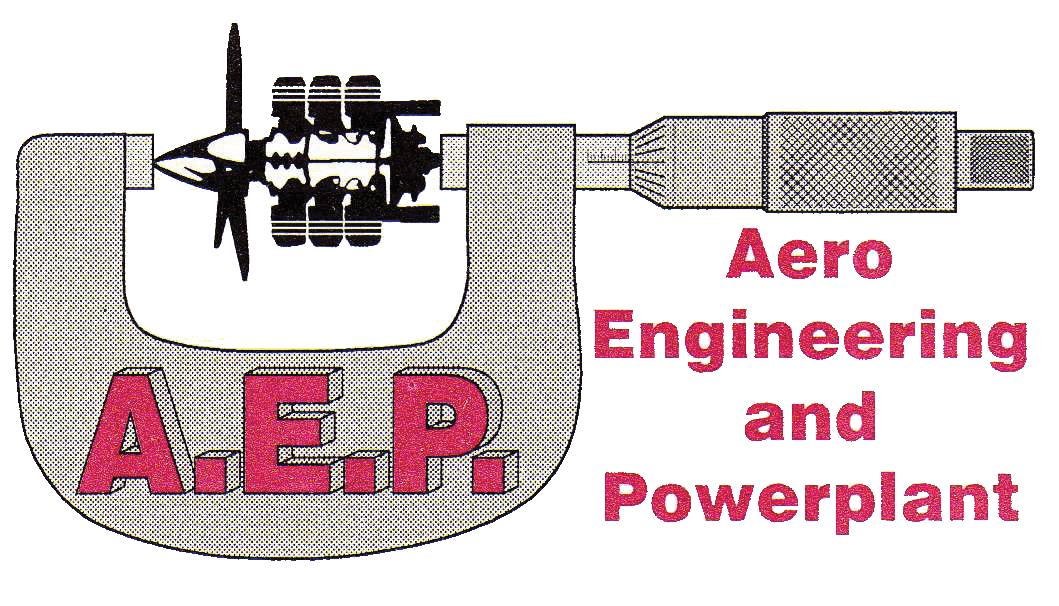

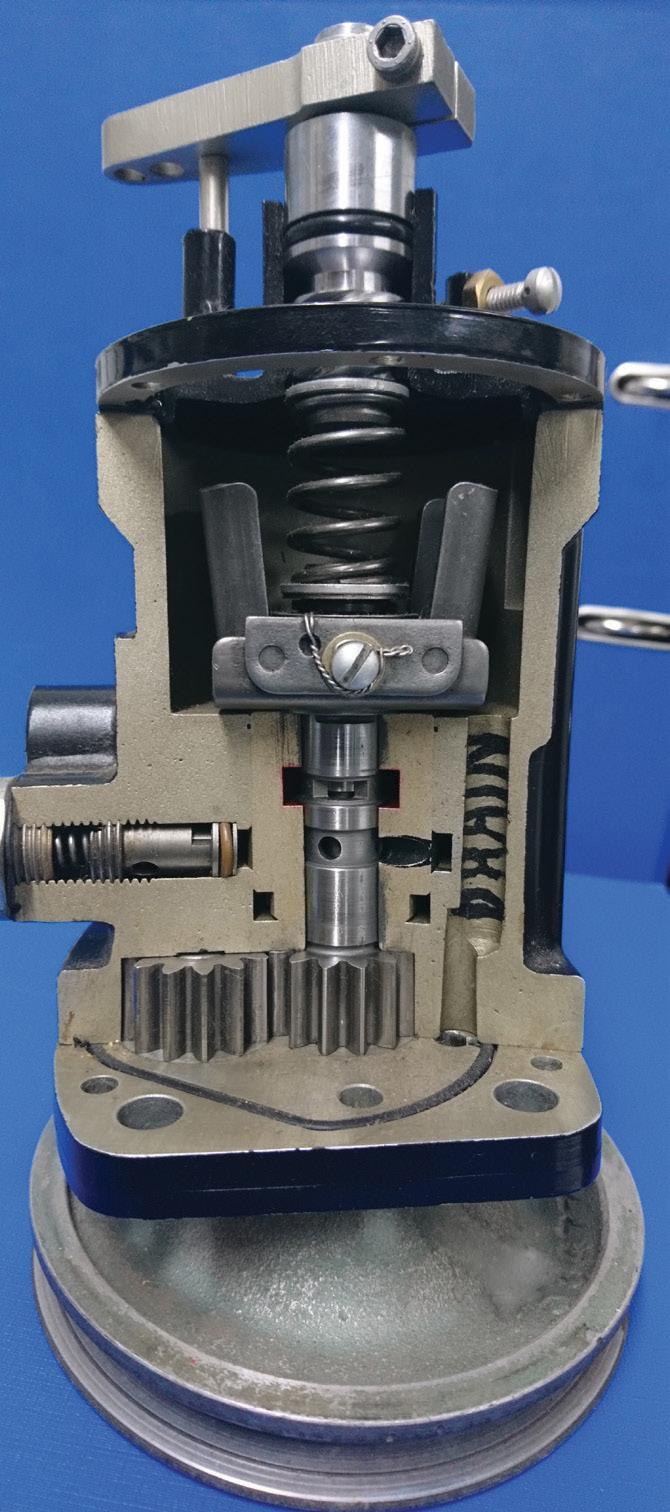
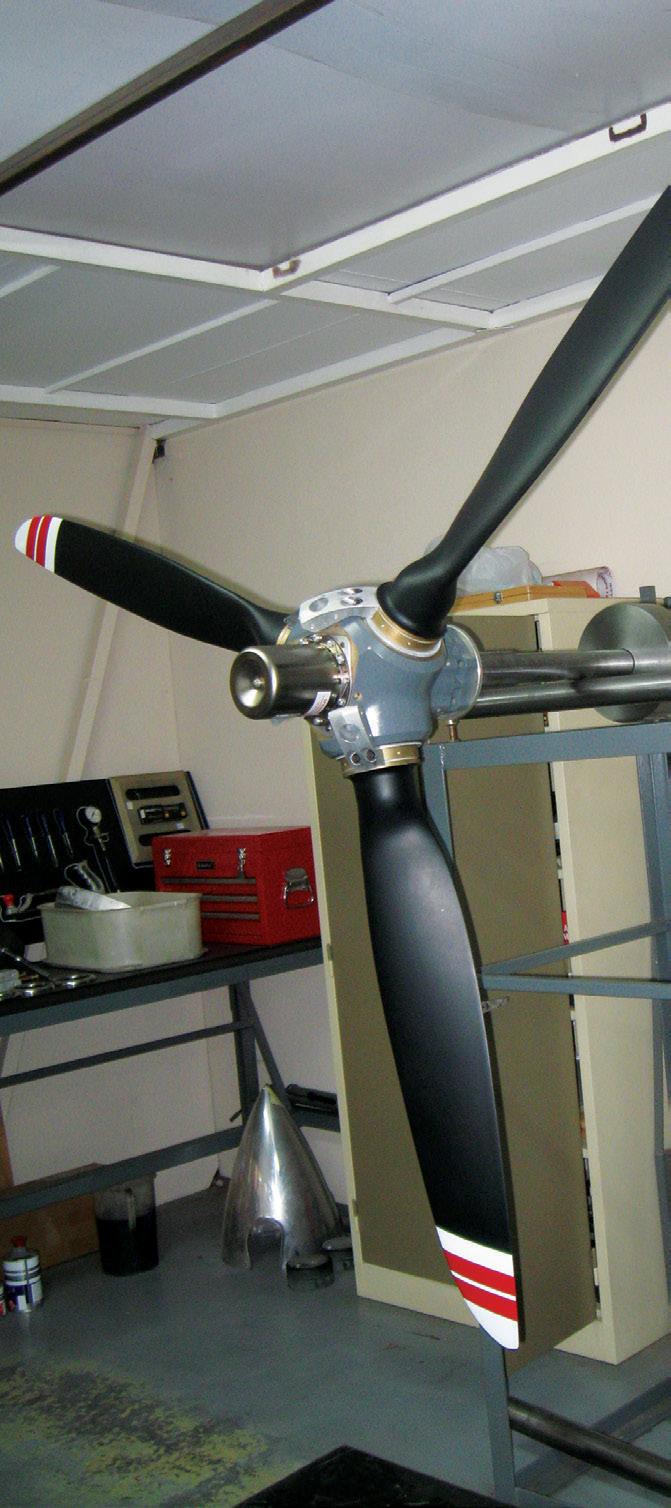
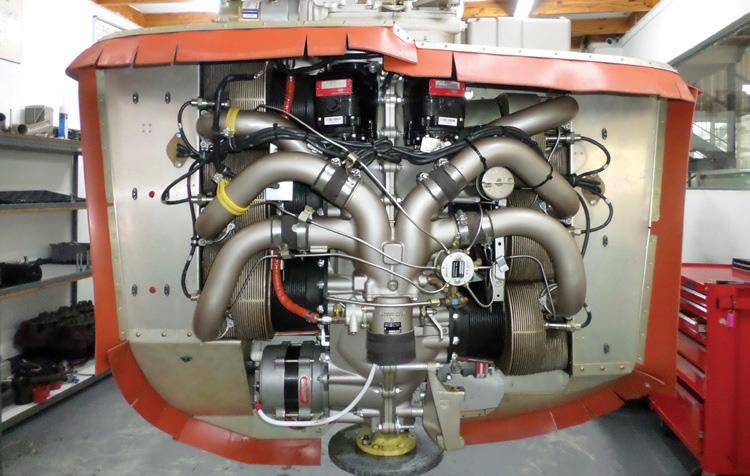

Overhaul / Shockload / Repair of Continental and Lycoming Aircraft engines Overhaul Engine Components Overhaul and supply of Hartzell / McCauley and Fix pitch Propellers FLIGHT SAFETY THROUGH MAINTENANCE Hangar no 4, Wonderboom Airport, Pretoria PO Box 17699, Pretoria North, 0116 Tel: (012) 543 0948/51, Fax: (012) 543 9447, email: aeroeng@iafrica.com SA Flyer 202 2 | 1 2 AMO 227 SEASON’S GREETINGS! AND BEST WISHES FOR THE NEW YEAR.

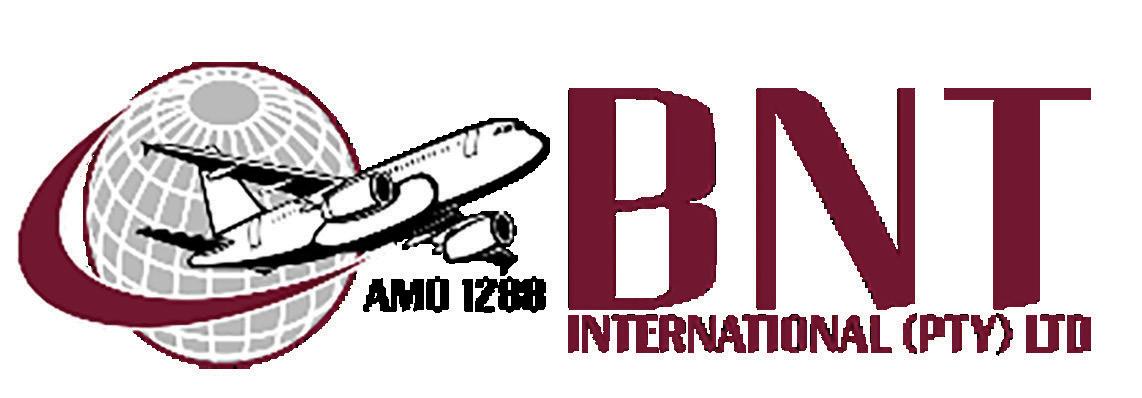



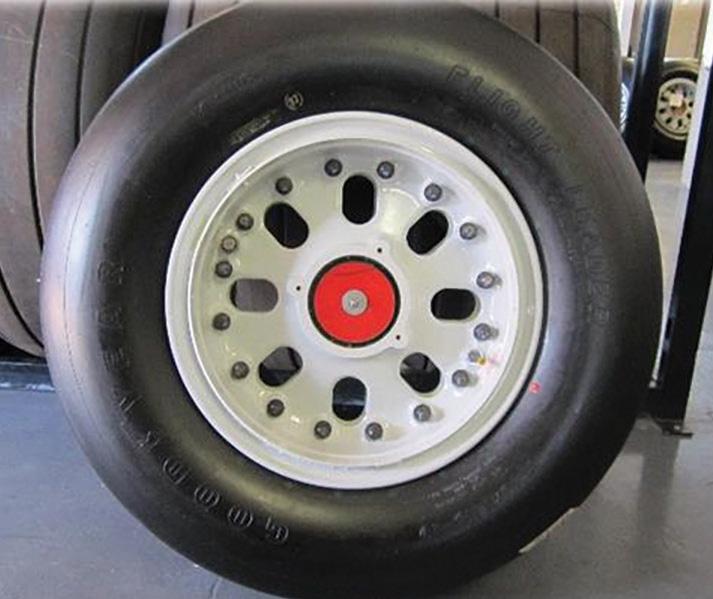

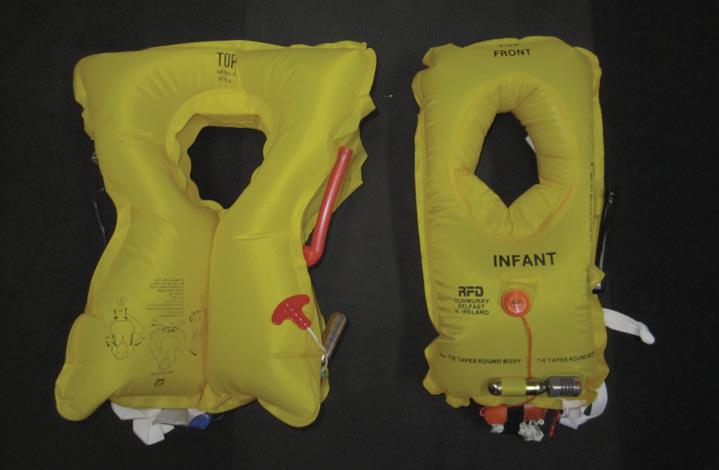
Your one-stop-shop for repairs and overhauls of aviation rotables and special processes. ü Quality ü Safety ü Service Excellence ü Honest pricing Aviation Services § Wheel overhaul and Repair Services § Brake Overhaul and Repair Services § Non-Destructive Testing on Aircraft § Hydro Static Testing on Pressure Vessels § Oxygen Cylinders and Fire Extinguishers § Safety Equipment § Ground Support Equipment § Composite Repairs § Aircraft Weighing - Aircrafts up to 60 000kg Contact us: Tel: +27 11 395 1677 / +27 10 110 7230 Website: www.bnt-int.co.za Physical Address: Denel North Entrance, Building D3, 131 Atlas Road, Bonaero Park, 1619 Satellite Facility: Hangar 3, Safair Precinct, 1 Northern Perimeter Road, Bonaero Park, 1619 Postal Address: PO Box 7300, Bonaero Park, 1622 AMO 1288 SA Flyer 2022|12


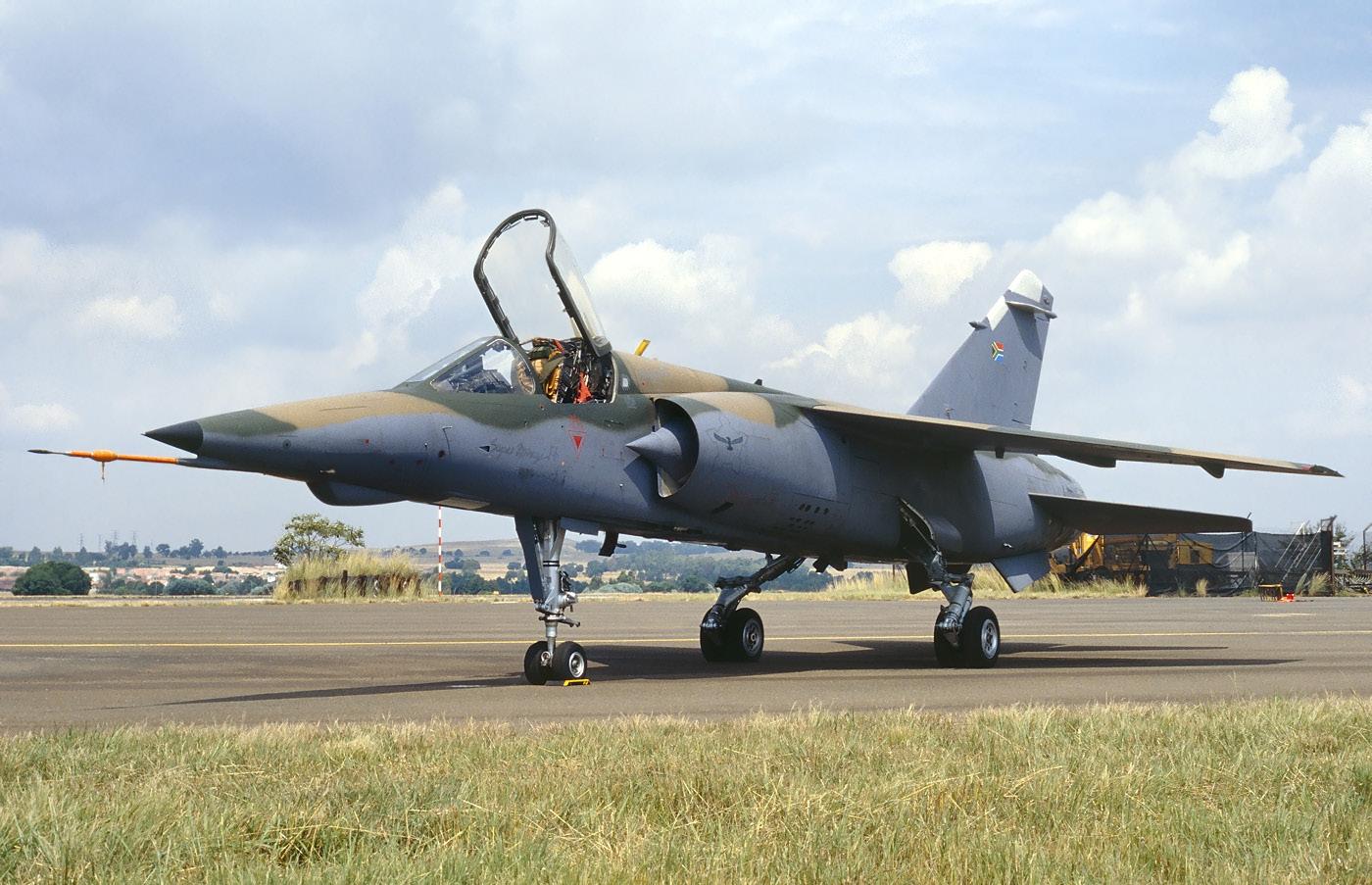
DECEMBER 2022 EDITION 168 TABLE OF CONTENTS +27 (0)83 607 2335 +27 (0)81 039 0595 +27 (0)15 793 0708 ACCOUNTS: ADMIN: TRAFFIC: Publisher Flyer and Aviation Publications cc Managing Editor Guy Leitch guy@flightcommag.com Advertising Sales Wayne Wilson wayne@saflyermag.co.za Layout & Design Patrick Tillman: Imagenuity cc © FlightCom 2021. All rights reserved worldwide. No part of this publication may be reproduced, stored in a retrieval system, or transmitted by any means, electronically, mechani cally, photocopied, recorded or otherwise without the express permission of the copyright holders. 06 10 12 16 22 26 32 36 42 43 44 46 AME Directory COVID Adventure - John Bassi Bush Pilot - Hugh Pryor Alpi Aviation SA: Flight School Directory Merchant West Charter Directory AVES Technics AMO Listing Backpage Directory FACE to FACE - Ms Poppy Khoza Defence - Darren Olivier Pilots - Laura McDermid FACE to FACE - Mr John Lamola SANSA launches Space Weather Centre
A NOTE FROM THE EDITOR:
AS INTERNATIONAL AIRLINE TRAVEL bounces back more strongly than expected from Covid, Africa has once again been left behind.
The African aviation industry has struggled to compete on the world stage with its share of airline traffic having fallen from around 2% to currently 1.8%despite having 20% of the world’s population. This is despite ICAO’s “No Country Left Behind” policy.
In an interview carried in this edition with the SACAA Director Ms Poppy Khoza, she explains what the No Country left Behind (NCLB) policy does. Ms Khoza says, “The concept is based on the principle that those countries that have consistently maintained critical safety or security elements ratings of above 80% must assist those who are struggling to be compliant within their respective regions or on the continent.”
Khoza points out that, “South Africa plays an integral role in assisting our neighbouring States. Some years ago, SACAA developed a Regional Cooperation Strategy, according to which technical assistance was offered to many countries in the SADC region. We are collaborating successfully with countries whose level of effective implementation is below the global average, and this collaboration is greatly recognised by these Member States and ICAO.
“There are many African countries who are performing very well, and, in this regard, I would also like to recognise the election of Nigeria and Egypt in Part II of the Governing Council, because of their contributions to the provision of facilities for international civil air navigation,” she says.
“Far more significant is that Equatorial Guinea, Ghana, Ethiopia, and Zimbabwe were elected to Part III of the ICAO Council, as States ensuring geographic representation. These were significant achievements for the countries, their respective regions, and the continent, as we all look at improving air connectivity, enhancing aviation safety and security, and also at contributing significantly to the socio-economic benefits for the Continent.”
Reacting to a question as to whether her appointment as President of the ICAO General Assembly was not in response to the NCLB policy, Ms Khoza pointed out that “Leadership and competence constitute the first priority in terms of determining who will be elected to Chair such strategic and important conferences and meetings. The complexity of issues requires more than the notion of the “no country left behind” as a measure to determine who will be elected.”
It is thus reassuring to note that many African countries and aviation leaders are rising to meet the challenge of the highest aviation standards. But there is still a huge gap to be bridged if Africa is to grow its miserable 1.8% share of the international airline market. Airlines must be set free from government control and allowed to compete in a liberalised Open Skies environment.
May I take this opportunity to wish all our readers and online followers a very happy and restive festive season and all the best for 2023.
there is still a huge gap to be bridged
PART
THE FOLLOWING MORNING we went out to the airport again. The aircraft was sitting forlornly with its cowlings off and engine exposed. It was the first time I had been able to examine an aero-engine at close quarters. It looked a bit like a Volkswagen unit to me. How they expected a Volkswagen engine to pull us up all the way over those mountains was anyone’s guess, but it seemed to confirm beyond all reasonable doubt that this would definitely be the vessel which would, probably very violently, convey me across the Styx.
The pilot seemed to work as hard on the plane as the engineer and had acquired a similar set of grease stains. He didn’t fit my image of the dashing debonair Don Giovanni who had saved the world with a flick of a white silk scarf and a twist of his handlebar moustache during the Second World War. This pilot had dirt under his fingernails and sweat dripped from his short gingery hair over the freckles on the bridge of a nose which had obviously seen action on the rugby field. His forearms looked as though they had been tempered at a blacksmith’s forge.
As I sat and watched him work, I felt that I would prefer to meet my maker in the company of this tough nut rather than at the hands of some dilettante Deb’s Delight.
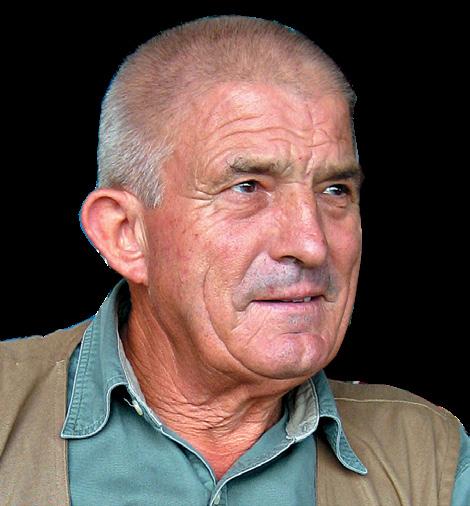
Time for our trip was running out and with it, the faint glimmer of a stay of execution began to grow in my mind. Then my appointment with the Reaper returned to the original schedule.
we skimmed a wing through the petticoats
“Soon be ready,” the pilot said, as he helped the engineer put the cowlings back in place. He reached up and flipped open a small hatch in the top of the cowling. Pulling out the dip stick, he checked the quantity and replaced it. “She’s right,” he muttered and swung himself into the cockpit. “I’ll just give her a run to make sure.”
The door closed and the word “CLEAR!” came through the open window. The engineer stuck a thumb in the air and the propeller kicked round. Black smoke coughed out of the exhaust stack and was whipped away under the belly as the prop blurred and the engine
6 FlightCom: December 2022
BUSH PILOT HUGH PRYOR
In Part 1 Hugh described how he had been convinced he would die in a plane crash on his first flight. Now, as a young man in New Guinea, he had had a stay of execution when the Cessna 185 would not start. The next day they tried again to fly up into the remote cloud-shrouded mountains.
HUGH’S FIRST FLIGHT – EVER 2
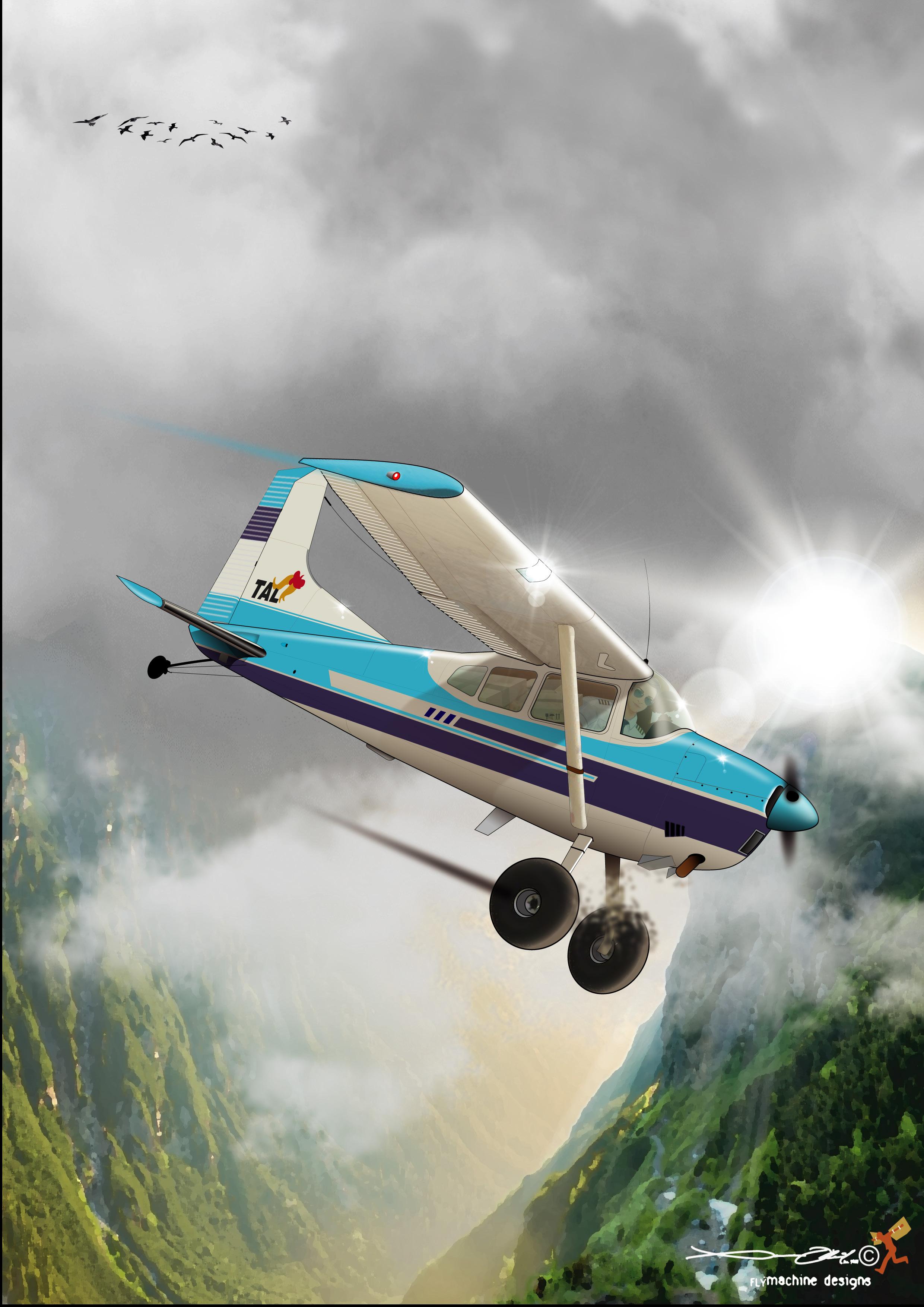
growled into life. Then silence returned, the propeller blades clacked to a stop and the aircraft door opened. The pilot jumped to the ground and glanced at his watch. “Hmm,” he said. “Going to be a bit tight. I’d better run over and do the flight plan. We know what the weather’s going to be doing!”
So saying, he strode over to the control tower. In a couple of minutes he came jogging back, holding a pink sheet of paper. “Let’s go, Mate. You ready?”
“Yes.” I said, “I’m ready. Where’s Mrs Kibikibi?”
“Dunno, mate. Must’ve chickened out.”
“Oh,” I said, wondering if I should have done the same. No, I decided. I must have my appointment with Destiny, and walked towards the Cessna where the pilot was holding the right hand door open for me. I knew the feeling of the condemned man walking to the gallows. I was shaking as I climbed awkwardly into the co-pilot’s seat. Yesterday’s boxes filled the back of the cabin, secured under a cargo net. The pilot showed me how to don the full harness.
finishing the ritual by hauling the flattened steering wheel back and twisting it, so that the one on my side banged into my chest. “Beg pardon.” He grinned and pushed it forward again. Then he reached down and pulled up a lever between the seats, while pressing the button in at its end. I assumed that he was testing the hand brake.
“Flaps,” he said, indicating that I should look out of my window. The back of the wing slid out and down. “We’ll be using those to get us in the air quicker on takeoff.”
He turned a key in the instrument panel and pressed a button. A propeller blade flopped past the windscreen, almost immediately followed by another and another, until, with a rattling shudder the propeller blades disappeared and the engine settled into a smooth rumble.
naked figures running and pointing
“There,” he said, patting the release buckle. “That should keep you out of trouble.” I was now trussed for my trip to look beyond the horizon of life. “If you want to release it, you just twist the buckle here.” He demonstrated and the webbing fell away. “Okay, let’s see if you can put it back together again.” I retrussed myself and faced the wall of strange-looking instruments.
He jumped into the pilot’s seat and strapped himself in. He then put his headset on and handed me the other one. “You have to eat the mike, otherwise I can’t hear you,” he said, pushing the little microphone against my mouth. “Press the INT button if you want to talk to me and the PTT button if you want to talk to the rest of the world, which you don’t.”
He ran his fingers expertly over the various controls,
The pilot switched on the radio and called the tower. The tower came back with taxi instructions and a garble of letters and words that made the pilot fiddle with the altimeter. We moved out of the parking area and stopped short of the beginning of the runway. I was trying to work out how he had steered the thing without moving the steering wheel. He applied the real parking brake this time, by pressing the pedals with his toes and hauling on a lever below the dashboard. Then he went through a well-practiced litany of engine checks and I was duly impressed by his smooth familiarity and expertise.
He talked briefly to the controller and we moved confidently into position on the runway. He didn’t seem to be aware of the ravens of death fluttering around the periphery. Maybe he didn’t know that this was to be the first and last time that I would leave the surface of Mother Earth.
The pilot gently pushed the large knobs, like organ stops, into the lower panel and the engine note rose to a trembling crescendo. Suddenly, with a lurch, I was forced into the back of my seat and we roared down the runway. There was obviously something a
8 FlightCom: December 2022
bit bigger than a little Volkswagen engine under the bonnet of this beast!
Before I realised what was happening, the ground dropped away and a palm fringed coastline rose into view. We turned inland and the houses of Madang sped past under us. I tried unsuccessfully to identify streets and buildings but dense forests soon blotted out any evidence of human influence on the flat countryside which moved under our aircraft.
A mighty and untamed river suddenly swelled against the forest below us and high tufts of cloud began to jostle together, forcing us to dodge and weave between their grey entrails. It was fascinating and intimidating at the same time. Our little craft bucked as we skimmed a wing through the petticoats of one particularly impressive column of white cauliflower.
My stomach muscles tensed in reaction to the sheer mindless power of the weather. I was rapidly coming to realise that this flying game was not really a game at all. Or if it was, then it was completely one-sided. Pitting a pathetic little aluminium craft against the majestic grandeur of these steaming giants seemed to be the height of folly.
Soon I noticed that the ground was no longer flat. It rose on either side of us until it touched the clouds. We were entering a wide valley dotted with tiny dwellings roofed with pandanus palm leaves and surrounded by banana trees and high palisades of split timber. The clouds had formed into a solid and threatening overcast.
“Do you know which one is the Simbai valley?”
The pilot looked at me as if asking for advice. He pointed out of the windscreen and I could make out the entrances to a number of deeply forested valleys up ahead of us. Their steep sides disappeared into rain heavy clouds. A cold shiver of realisation crept into my bowels.
“Haven’t you been here before?”
“Once,” he said with a grin. “And you?”
“Never.” I replied. “I’ve never even been in an aeroplane before.”
“You’re joking?”
“No. This is the first time.”
“The blind leading the blind!”
We were becoming quite intimate with the local population now, forced into this relationship by the low altitude of the clouds. I could see almost naked figures running and pointing as we flashed by. These were the ones who would pick through the pathetic remains after my demise. A furious pig charged at a fence in an effort to attack us. Then the jaws of a valley opened up on our right and, looking through into its gullet, I could vaguely make out the yellow stain where a large portion of the valley wall had fallen into the river, which wriggled like a live snake around the obstruction. A landslide. This must be the Simbai Valley.
“I believe that could be the Simbai Valley,” I said, pointing tentatively out of the right side of the windscreen. “Con Hatters told me they’d had a big landslide in the Simbai Valley, a couple of days ago. Quite a lot of people killed and missing. That looks like a landslide to me.”
“Yeah, I heard about it. But are you sure that’s the one?”
“No, I can’t be sure. I’ve never been here before.”
“Well, you know what’s going to happen if it’s the wrong one, don’t you?”
FlightCom: December 2022 9
the sheer mindless power of the weather
“Yes, I am all too well aware.”
“Okay, well just so long as you’re happy. Here we go!”
And, so saying, he swung the little plane into the dark mouth with its writhing river. This was it. My whole body tensed in preparation for the final debacle.
We seemed to stick unpleasantly close to the wall of rain forest which reached out for us on my side of the plane. The pilot, noticing my apprehension, grinned and said, “We stick to the sides of the valley. It’ll give us a better chance to turn around if this is the wrong one.”
I wondered how that first impact would feel. The tearing of limbs. The crack of a skull going through the instrument panel. Maybe, hopefully, I would lose consciousness as we hit the trees. Then, suddenly we swerved around a hill and the ordered lines of a grass runway appeared above the cowling.
“There she is!” shouted the pilot, and before I had time to prepare myself, he hauled on the big floor lever, played with the organ stops and we were on the ground.
It was raining. I had survived. The weather closed in and a rumble of thunder echoed around the cloud-shrouded peaks as if they were infuriated at having been cheated out of another wreck. The pilot would spend the night in Simbai, rather than provoke the implacable wrath of the mountains. For some unknown reason, Fate had decided that I was still alive.
It wasn’t until after the third glass of a delicious Yalumba Port that evening, by a fire, in the relaxed luxury of the Patrol Officer’s house that the pilot owned up. He had been landing at Simbai twice a week for over a year now!
AME Doctors Listing
Van Der Merwe Johann Stellenbosch 021 887 0305 johann.vdmerwe@medicross.co.za ✗ ✗

10 FlightCom: December 2022 Regular Class 2, 3, 4 Senior Class 1, 2, 3, 4 On site Specialist tests Off-site Specialist tests FAA registered EASA registered Other countries SURNAME FIRST NAME LOCATION TEL NO E-MAIL Britz Rudi Wonderboom Airport 083 422 9882 rudiavmed@gmail.com ✗ ✗ ✗ ✗ Church Belinda Valhalla 079 636 9860 churchbs@live.com ✗ ✗ Du Plessis Alexander Athlone Park 031 904 7460 dex.duplessis@intercare.co.za ✗ ✗ ✗ Erasmus Philip Benoni 011 849 6512 pdceras-ass@mweb.co.za ✗ ✗ Govender Deena Umhlanga Rocks 031 566 2066/7 deena@drdg.co.za ✗ ✗ Ingham Kenneth Midrand 011 315 5817 kaingham@hotmail.com ✗ ✗ ✗ ✗ Marais Eugene Mossel Bay 044 693 1470 eugene.marais@medicross.co.za ✗ ✗ Opperman Chris Pretoria Lynnwood 012 368 8800 chris.opperman@intercare.co.za ✗ ✗ ✗ Tenzer Stan Rand Airport & JHB CBD 083 679 0777 stant@global.co.za ✗ ✗ ✗ Toerien Hendrik White River, Nelspruit
013 751 3848 hctoerien@viamediswitch.co.za ✗ ✗ ✗
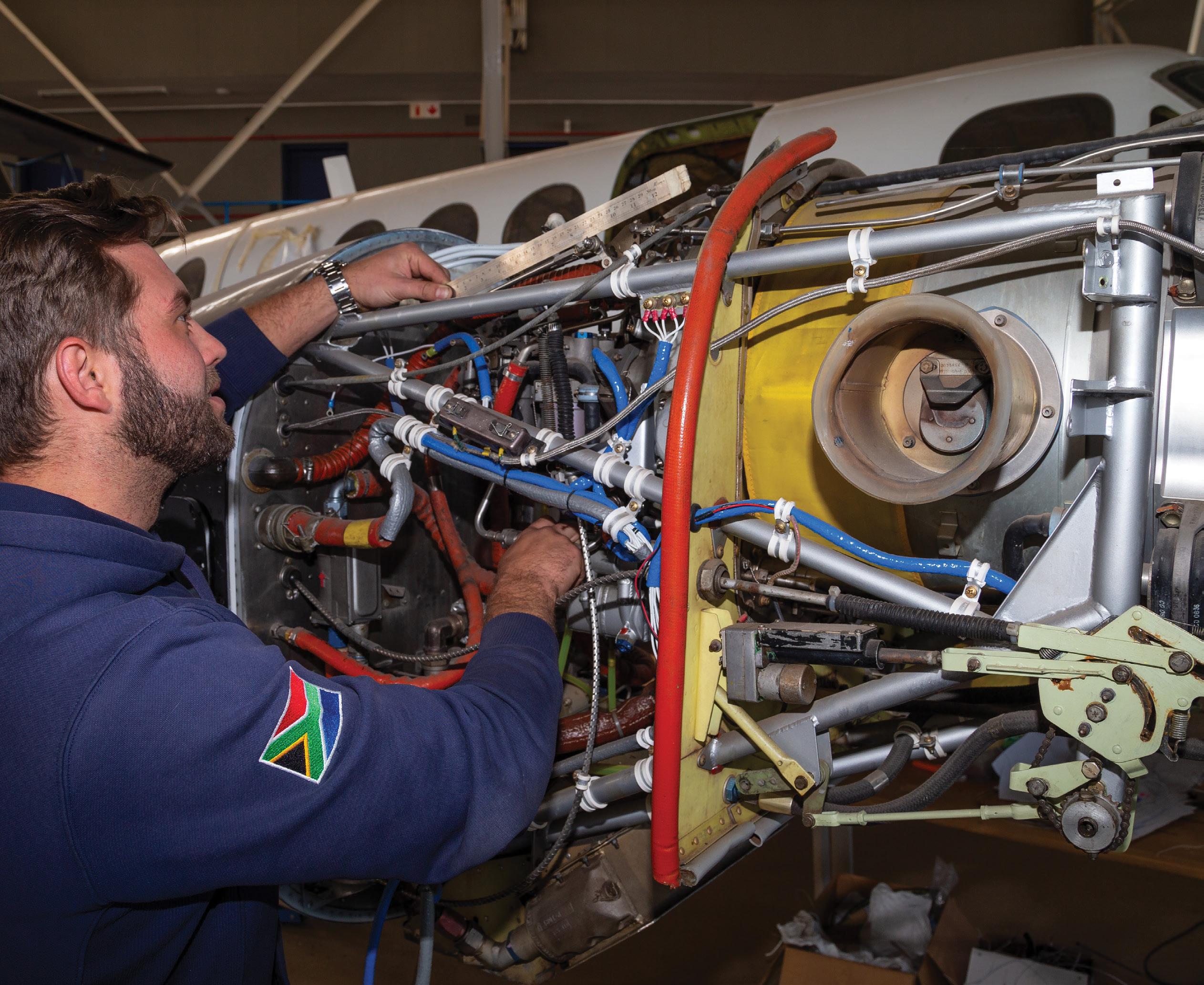


FlightCom: December 2022 11 CALL US NOW FOR ALL OF YOUR AVIATION NEEDS! AIRCRAFT MAINTAINENANCE AND REFURBISHMENT QUALITY IS OUR PASSION Skysource International SA, Hangar 203, Lanseria International Airport South Africa SOUTH AFRICA Aircraft Maintenance based at Lanseria International Airport South Africa. FAA USA Worldwide Aviation Resources Aircraft Sales, Purchasing, Maintenance and Consulting. AMO 1427 info@skysourcesa.com +27 10 900 4300 • +27 72 036 3433 WE SPECIALIZE IN: Beechcraft 90 Series Beechcraft 200 Series Beechcraft 350 Series Beechcraft 1900D Series Cessna Caravan C208 Series Aircraft With Full Aircraft Maintenance and Refurbishment, Paint, Upholstery, Defect rectification, Pre-purchase Inspection Capabilities. Decades of experience! Sheet Metal + Avionics Maintenance + Installation SA Flyer 2022|12 www.skysourcesa.com PTY Best wishes for the Holiday season and the coming New Year!
WHY DO WE NEED FIGHTER AIRCRAFT?
PART 1 SHOWED HOW defence of the country’s airspace requires fighter aircraft. There is no alternative.
While ground-based air defence systems can provide some level of protection, South Africa’s territory is so vast that an impossibly large number of theatre-scale air defence systems, essentially in the same class as the Patriot, SAMP/T, or S-300/S-400, would be needed all over the country.
And given that those systems cost about US$400 million per battery and US$2-6 million per missile, they’re substantially costlier than one or two squadrons of fighters.
being done for corrupt reasons
average seven years to train up new fighter pilots to just a basic level of competence, re-establishing this capability once lost would realistically take no less than ten years and probably around fifteen for full proficiency. That’s far too slow to respond to any looming threat. Preserving the capability on an ongoing basis is also not that costly in relative terms, and certainly cheaper than the potential damage that could be caused by needing the capability and not having it.
It was also clear that a fighter aircraft capability could not be abandoned and then established only when absolutely needed, because it takes years and years and immense expense to build one from scratch. With an average lead time of three to five years to deliver fighter aircraft from the date they’re ordered and it taking on
Therefore fighter aircraft were listed as a basic requirement in all of the four options proposed to policy makers, each of which had a different balance of cost, capabilities, and numbers. Some proposed both light fighters and medium fighters (such as Typhoons or Rafales), and in fact the option eventually chosen by Cabinet specified 16 light fighters and 32 twin-engined medium fighters (with subsequent budget cuts however a compromise was made to abandon the medium fighter procurement
12 FlightCom: December 2022
DEFENCE
Part 1 this column addressed the process behind determining what sort of defence capability was need in terms of South Africa’s constitution and in terms of the likely war scenarios it may face.
DARREN OLIVIER
2
PART
and instead look for more capable single engined light fighters).
These justifications and findings were summarised in the 1998 Defence Review as the following, for support to land forces, for air defence, and for support to naval forces:
“Fighters are the main means of ensuring a favourable air situation over an area of operations, thereby preventing enemy air operations and enabling aerial support to own ground forces. Their employment in air defence thus has important benefits in landward defence. Direct fighter support includes fire support, interdiction of the battlefield and enemy rear lines of communication. Both medium and light fighters are included in Option 1 (32 and 16 aircraft respectively). Light fighters can, however, only be used in a relatively benign air defence environment.
“The active component of defensive counter air measures include the early detection and warning of enemy air activity, ground- or shipboard-defence by means of gun or missile systems, and the use of
fighter aircraft to intercept enemy aircraft. The passive component comprises the hardening of potential targets, the dispersion of assets, camouflage, damage repair capabilities, and so forth. Offensive counter air measures consist of direct attacks on enemy air assets including bases, aircraft, air defence systems, radars and command and control centres to neutralise enemy air capabilities. As detailed in Chapter 2, offensive action at an operational level in response to an enemy attack would not violate South Africa’s primarily defensive posture. Offensive counter air measures are thus not excluded from the range of possible air defence actions.
“Obsolescence and defence cutbacks have led to a reduction in medium fighter numbers from 89 in 1989 to 51 aircraft. The F1s are to be phased out in 1999 subject to annual review, while the Cheetah C will stay in service until 2012. The Option 1 requirement is for 32 medium multi-role fighters.”
Fighters provide rapid reaction to a naval threat and can substantially complement naval fire power, thereby compounding the self-defence problem of the
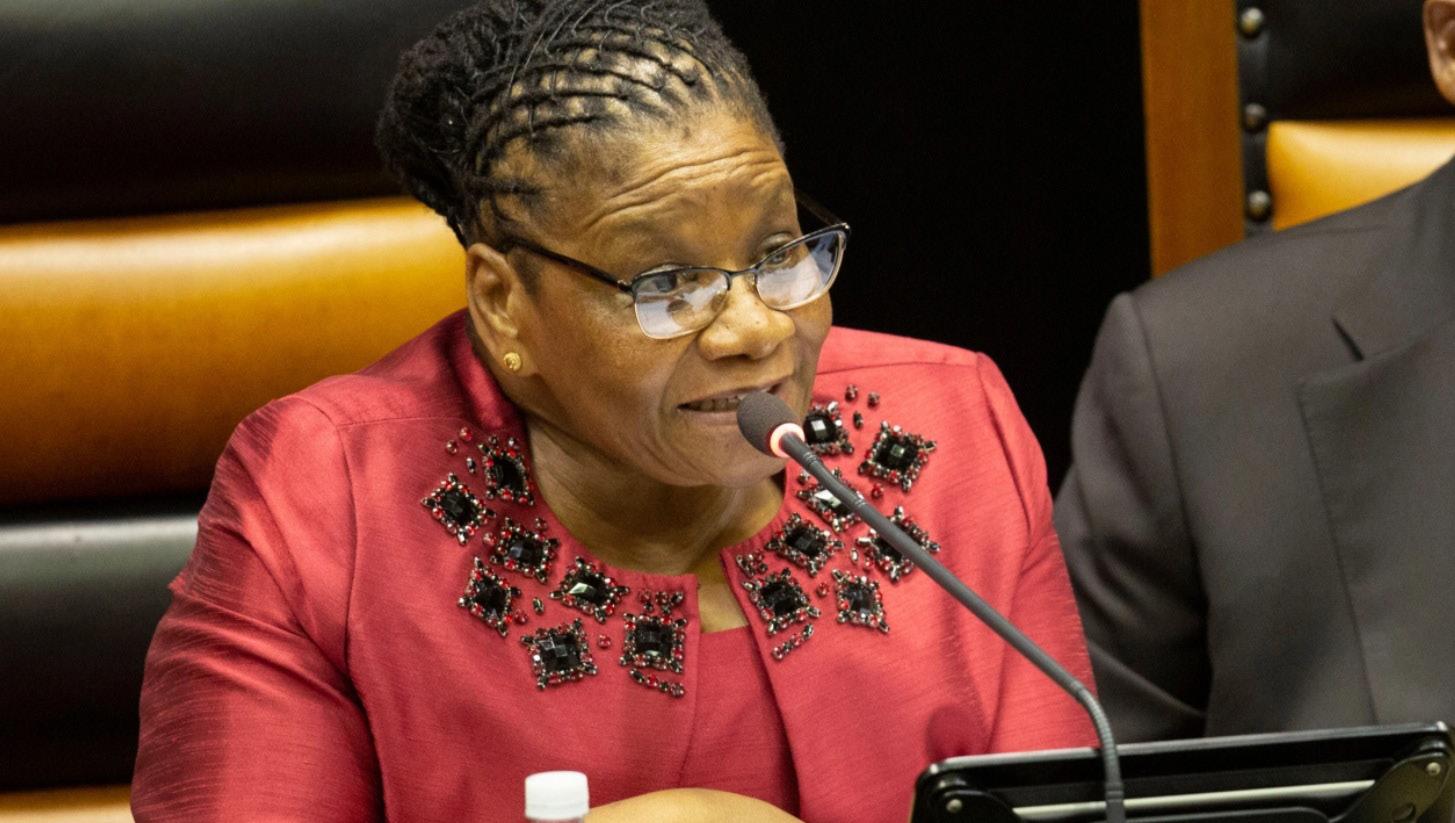
FlightCom: December 2022 13
South Africa's Minister of Defence Thandi Modise is struggling to keep any jet fighters in the air.
enemy. While Option 1 makes no special provision for this role, multi-role fighters dedicated primarily to air and landward defence can be employed in this capacity.
When South Africa’s Cabinet at the time formally adopted both the 1996 White Paper and the 1998 Defence Review, it formally authorised the defence force to preserve a fighter capability and to move forward with an acquisition programme to replace the Cheetah C and D then in service in order to ensure that the country had a viable fighter capability into the future. That’s the basis on which the South African Air Force established its fighter acquisition programmes (first Project Kambro, then Project Ukhozi) and went on to acquire 26 Gripen Cs and Ds in the 1999 Strategic Defence Procurement Package, aka the ‘Arms Deal’.
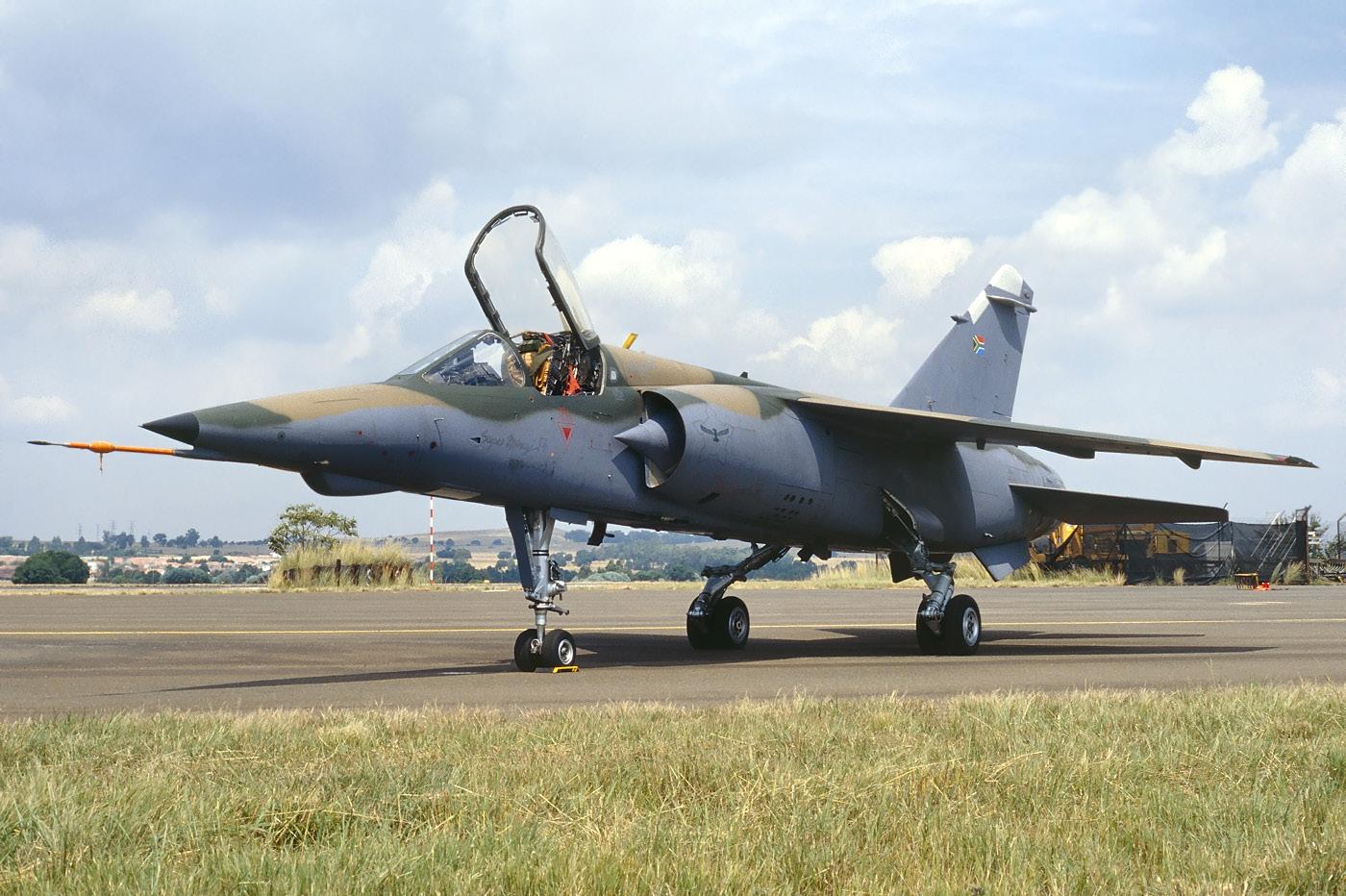
impossible to operate any combat aircraft
So rather than being something decided on a whim, or being done for corrupt reasons, South Africa’s fighter capability exists because of an extremely thorough and serious military analysis that was later repeated and confirmed for the 2015 Defence Review. In fact, as climate change, geopolitical instability and other factors have begun having a greater impact, the need for fighter aircraft has become even more urgent.
The basic need was also shown extremely clearly in March 2013, when four Gripens were hurriedly dispatched to Kinshasa to provide air support for lightly armed South African troops in Bangui who had come under severe attack by a much larger group of rebel forces.
No other support platform, not even the two Rooivalks dispatched as well, was able to be nearby and available as quickly as the Gripens. While difficult to know for
14 FlightCom: December 2022
DEFENCE
The Mirage F1 was to be phased out in 1999, leaving just the Cheetah C & D until the Gripens became operational.
certain, there are some indications that the presence of the aircraft dissuaded the rebel forces from further attacks, saving lives. If we still had an aerial refuelling capability that deployment could have been even faster, too.
topics like this to become more serious
It’s time for the quality of the public defence debate in South Africa on topics like this to become more serious, more aware of the analyses and planning that has led to this point, and more willing to accept that any defence planning inherently requires compromises between cost and capabilities.
South Africa came extremely close to losing its fighter capability over the past year, with the Gripens
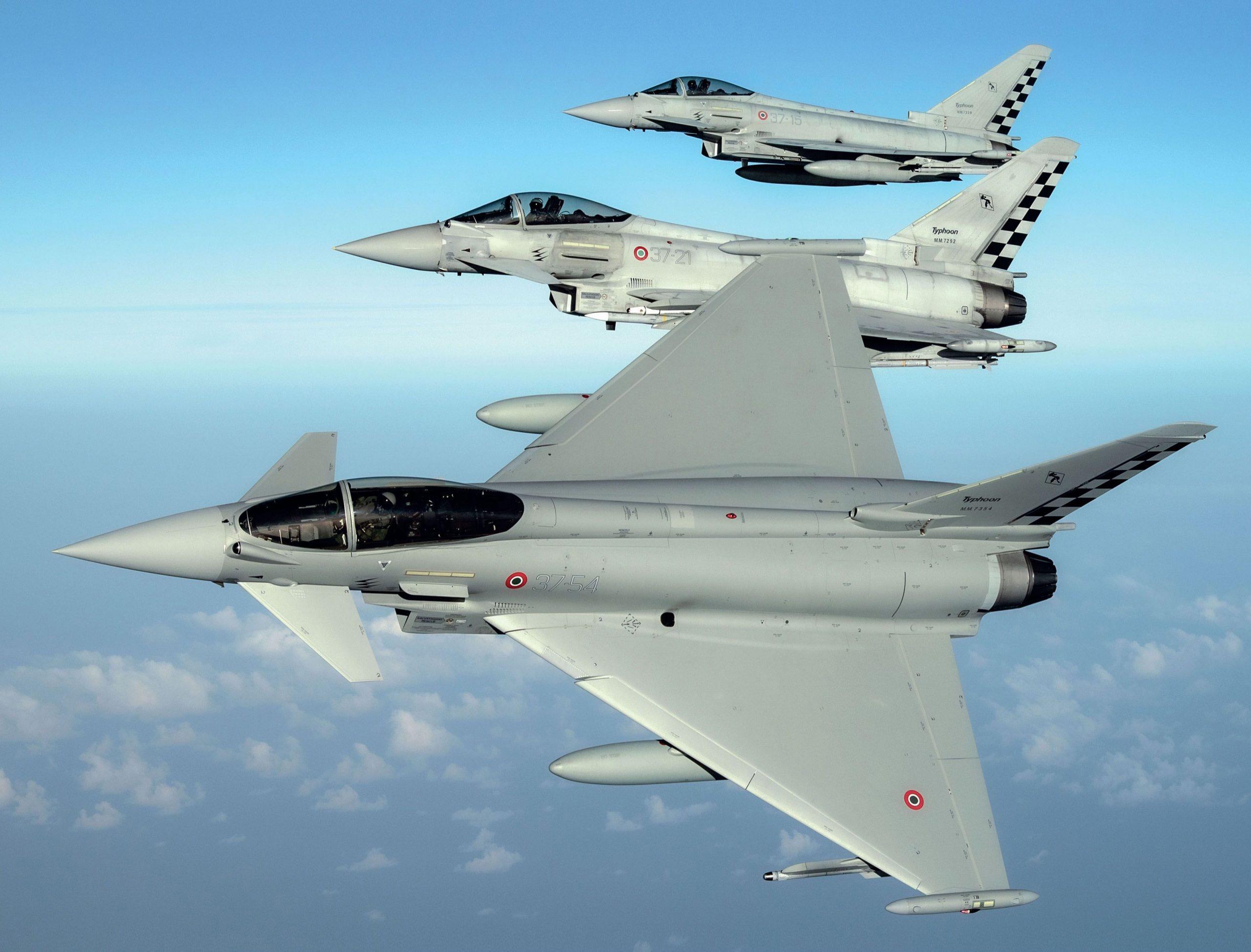
grounded, but it’s not out of the woods yet. National Treasury still allocates a woefully insufficient budget for the Air Force’s combat aircraft capability and if nothing changes it will become impossible to operate any combat aircraft at all within the next five to ten years. This should be provoking serious alarm from the public, civil society, media, and opposition, and top level interventions to prevent it from occurring. But so badly has the situation deteriorated, that none of that is happening.
South Africa is sleepwalking into a collapse of its strategic capabilities and sovereignty.
FlightCom: December 2022 15
South Africa initially planned on 32 twin engine fighters such as the Typhoon.
GETTING SHOT AT IN SOMALIA PART
McDermid continues her stories of Iris McCallum’s flying exploits.
ASLAM KHAN WAS the financial director of Aircraft Leasing Services (ALS). He had built up his vast network of contacts whilst in the Kenyan Air Force and had decided to start the family business after identifying a huge gap in the Miraa Khat transport business.
Aslam is also a well-known and highly respected East African rally driver. He started rallying at the tender age of 21 and has won the Kenya National Rally Championships three times. The combination of his fearless nature and sharp business acumen made him the ideal candidate to run an operation that was highly competitive and fraught with risks.
not to grow them, thousands of Kenyans depended on the trade of this plant for their livelihood. In the early 1990s many businesses sprang up in Kenya to service the ever-expanding and seemingly endless demand for this herbaceous stimulant.
I had been flying Miraa for some time now and I got to know many of the Somalis who were involved in selling the product. They had nicknamed me Halima, an Arabic word which meant ‘forbearing, gentle, mild-mannered and generous.’
Thanks to the healthy demand for Miraa Khat in Somalia, where it was legal to chew the leaves – but
The synergy between ALS and myself was good; I bought my Somali contacts to them to charter their aeroplanes, and in return, I got to fly the Miraa to Somalia and get paid handsomely in U$D.
16 FlightCom: December 2022
Laura
PILOTS LAURA MCDERMID
“Iris, Ashraf mentioned that you may be interested in flying for us; we need pilots with your experience. My brother regards you as part of the family, so it would be great to have you on board.”
There was complete anarchy in Somalia
1
Flying out of Wilson Airport into a bordering country meant always filing a flight plan. We entered Mogadishu as the destination, however, we would in fact fly 60 miles northwest of the capital to a disused military airstrip called Baledogle located in the district of Wanlaweyn. Due to its remoteness, we could land, unload the aircraft and be airborne within an hour, without being harassed by officials looking for bribes.
For the sake of my license renewals, I had to log a legitimate airfield. My Instrument rating had to be renewed every 13 months; this was to ensure that the flights occurred over all seasons and in different weather conditions.
On 10 April 1992 I was scheduled to fly 5Y-AYY, one of ALS’s three Cessna T310Rs, whilst Gulu, Ashraf’s brother-in-law, was assigned to 5Y-BAF and another pilot to 5Y-TNT.
There was complete anarchy in Somalia in those days, and the only law that was upheld was amongst the clans. It was therefore safer to fly in a group whenever possible.
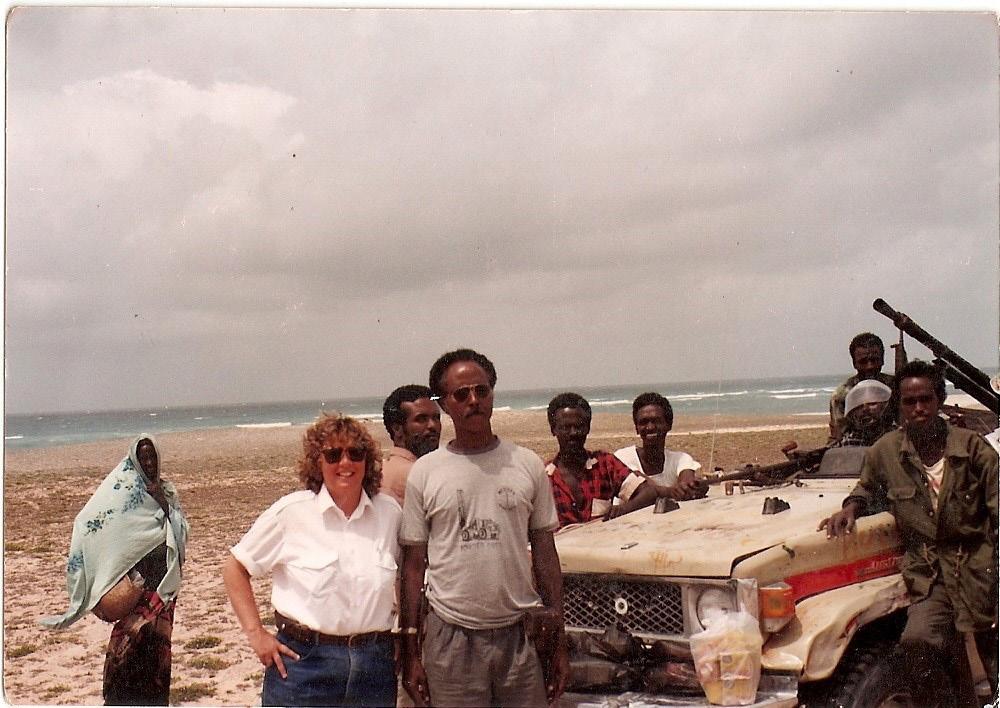
We had to trust ‘our’ Somali traders completely, who in turn relied on their contacts in Somalia to keep us, the aircraft, and most importantly the Miraa safe from marauding bandits (shufti’s).
To keep my CFII current, I travelled to the USA, my last check having recently been done at an airfield in Houston, Texas.
I was at the hangar before dawn, my hands running over the familiar airframe, never tiring of the 310’s
FlightCom: December 2022 17
Captain Cuddles with some of the Somali traders.
“I KILL YOU!” Ahmed screamed at me.
sleek curves. Checks done, I taxied to the fuel bay, filling the main and wing tip tanks with Avgas, but only half-filling the auxiliary tanks to be able to carry more Miraa.
I heard the familiar rumble of the Land Cruisers as they began arriving from their long journeys from Nanyuki and Meru. The pickups were heavily laden with Miraa that had been picked through the night on the slopes of the highland mountains by the local women. The drivers left at around 02h00; chewing the herb they transported to keep them awake.
“Inshallah Hussein. Alpha-Yankee-Yankee is ready to load.”
To maximise the packing space, the rear passenger seats from the Cessna T310R had been removed. The aircraft had a big nose baggage compartment that could hold a lot of luggage, as well as wing lockers on both sides. We would fill the nose first, the wing lockers next and the body cavity last.
My Somali trader, Hussein, joined me at the plane. “As Salam Alaykom Iris, we have a big load today. We may need to do two runs”.
The weight of the herb changed according to the season. In the dry season, the bales weighed 5-6 kg, whereas in the wet season they could weigh as much as 8 kg.
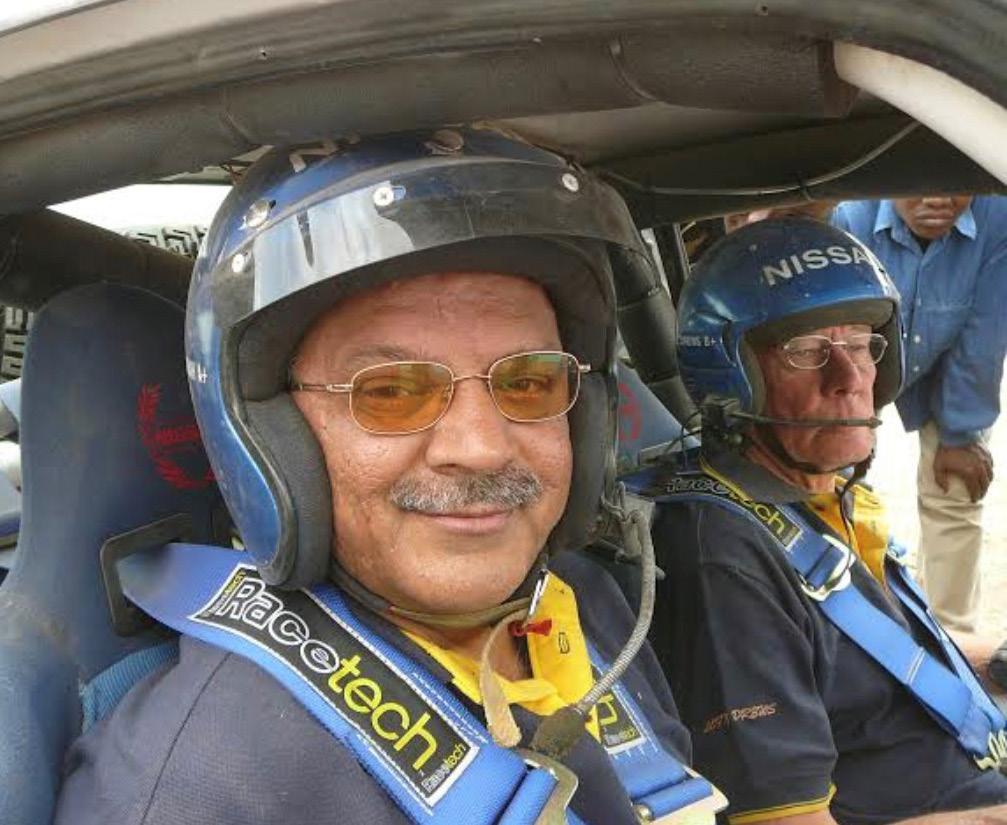
18 FlightCom: December 2022
PILOTS
Aslam Khan, owner of Aircraft Leasing Services with brother Arshad during the East African Safari Classic Rally.
The maximum takeoff weight of the aircraft is 2500kg, but we would typically push the load 15% above that.
“Naseem, I know you put an extra bale in,” I admonished one of the packers. He shrunk back from my glare, holding up the palms of his hands in supplication.
too far aft. The long nose of the C310R made it ideally suited for this purpose.
“Sorry Halima, me I was not thinking.”
Though I may have been patient and mild-mannered, everyone knew that I was no pushover. I rarely lost my temper, but when I did it was epic.
The sellers wanted to squeeze as much of the product as they could into every available square inch. They didn’t understand (and generally didn’t care) about MTOW and how it affected the performance of the plane.
we would push the load 15% above MAUW.
Thanks to turbochargers, each engine was producing 285 horsepower; this mean that the 310 had a better power to weight ratio than many larger twin-engine aircraft, such as the very popular C402, and when fully laden, the Vref landing speed was critical to within 4 knots.
The distribution of the weight was critical, and I never allowed the plane to be packed without overseeing the process. I inevitably had to manipulate the weight to optimise the centre of gravity, ensuring that it was not
We took off from Wilson Airport just as the first blush of red smeared the eastern horizon. I have lifted my
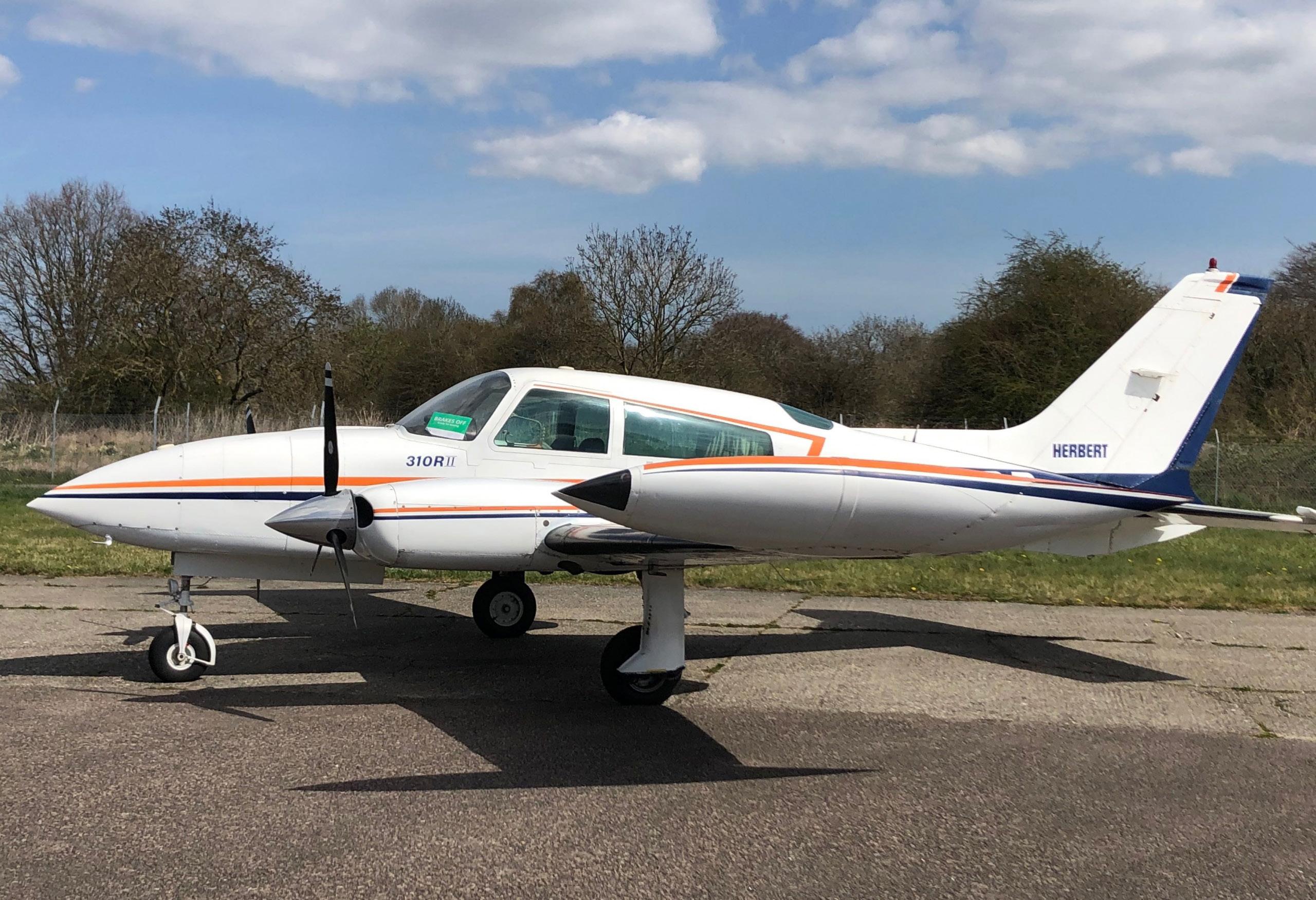
FlightCom: December 2022 19
The sleek Cessna 310R with its long nose was great for carrying miraa.
plane from Wilson airport for thousands of flights and I have never felt her wheels glide from the earth into the air without knowing the uncertainty and the exhilaration of first-born adventure.
“I KILL YOU!” Ahmed screamed at me.
I exchanged a meaningful look with Hussein, and then addressed Ahmed. “I will take you back, but first you need to sit down and calm down.”
Three hours later we were overhead Baledogle. I flew the length of the strip, making sure it was clear of goats and donkeys.
I Landed and taxied to where my contacts were waiting for me on the northern end of the strip. As the Miraa was being offloaded, Ali, who manned the hand-pumped bowser, topped the C310R up with 200 litres of Avgas.
I had a plan in mind and was counting on Ahmed’s ignorance of aviation for it to work.
I started the plane and taxied to the parking outside the immigration area, turning the plane around so that the tail was facing the building.
Whilst this was going on, Hussein would disappear, reappearing 30 minutes later with whatever passengers required a lift to Kenya. They were mostly refugees who were fleeing their war-torn country in search of greener pastures. This process went off without a hitch most of the time, but there was one occasion when the Kenyan authorities refused entrance to a particular young man whom I will call Ahmed.
After landing at Wilson, Hussein went off to customs with Ahmed’s passport, only to return ten minutes later informing him that there appeared to be a problem and that he was to go with him to the authorities.
Ahmed refused and demanded that I take him back to Somalia immediately. A heated exchange ensued in Arabic between the two men, resulting in Ahmed becoming hysterical.
I proceeded with my run-ups, blasting dust and debris through the office entrance. Within seconds an indignant security guard came running out to see who was being an idiot.
When the guard was close enough, I shouted to him in Swahili, telling him that the passenger had threatened to kill me.
During the commotion, Hussein had opened the door, and three security guards swarmed in with guns trained at Ahmed. They promptly hand-cuffed him, manhandling him out of the aircraft.
I later heard that Ahmed had been detained for three days. This appeared to have tempered him. Gulu had the task of flying him back to Somalia and gleefully reported that Ahmed was as meek as a lamb.
20 FlightCom: December 2022
PILOTS
They promptly handcuffed him, manhandling him out of the aircraft.
ETHIOPIAN AIRLINES EXPANDS
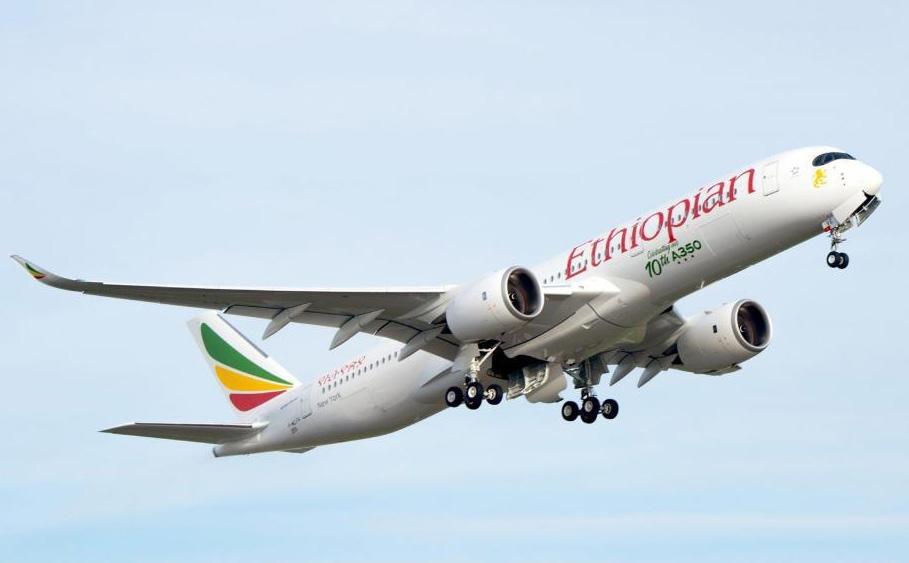
THE AIRLINE ALREADY operates the largest fleet and destination network in Africa. “In vision 2035, we have aimed to nearly double the number of destinations that we will be flying by increasing the number of destinations from 131 today to 207 and to cover this expansion, we have planned again to double the number of aircraft in our fleet from 140 to 271,” Ethiopian Airlines Group
CEO, Mesfin Tasew, who took up the role in March 2022, told state media, Ethiopian News Agency (ENA).
The airline also seeks to carry 65 million passengers, three million tons of cargo and generate $25 billion dollars in revenue by 2035, Tasew added.
Ethiopian Airlines has ambitious growth goals for 2035.
FlightCom: December 2022 21 NEWS
Ethiopian Airlines aims to double its fleet and destination network with its ambitious ‘Vision 2035’ strategy. largest fleet
HYENAS OF THE LIMPOPO
FARMERS ALONG THE BORDER
with Zimbabwe were fed up with the increase of criminal activity that impacted them and had called on me to do some patrolling of their game reserve fences.
Members of the South African National Defence Force (SANDF) and the South African Police Service (SAPS) had been instructed to stop co-operating with AfriForum’s border security structures in Musina, Limpopo. “It is very clear that political interference is once again derailing successful efforts by committed citizens to work together with the SAPS and military to curb crime,” said the head of a private Limpopo security firm.
are) being stolen and breached to move rustled cattle, stolen in Zimbabwe, herded at night over the river, through game farms and getting their throats cut, slaughtered and carcasses loaded into vehicles for sale in townships. Their heads, skins and offal are the only grizzly reminders.
my friends in the force
Cigarette smugglers were coming through the farms in gangs of 50 and dumping all the packaging next to pick up points, littering the bush with hangars full of rubbish. Copper cables were being pulled out of the ground and transformers destroyed and gangs of pirates lurked to rob the robbers and smugglers.
It’s never a good thing to have a game reserve with buffalo, lions, elephant and other game, no longer safely contained within electrified game fences. The iron droppers supporting game fences were (and still
A hyena is the name given to a person, who having gathered a required number of undocumented travellers, goods or other contraband, would head for any one of their chosen points along the river to take them across. The hyena man is also known in his community for executing a ‘cleansing practice’, fisi,
22 FlightCom: December 2022
BY JOHN BASSI
will let me go
The Covid lockdown had opened a whole new can of worms and the curfew was undoubtedly benefitting criminals.
PART 2
THE COVID ADVENTURE CONTINUES –
in which he is invited and rewarded by adults to sleep with new widows, barren women, women who just had an abortion or with young girls undergoing rites of passage to adulthood.
hyenas are needed and respected, concerning the burial of the dead. The belief is that whoever touches a corpse risks defilement. Only known hyenas can execute the task of handing over a dead person from the living to their ancestors.
The hyena sleeps with such women (and girls) as a way of driving away bad luck or potential calamity believed to hang over the community. Adolescent girls are routinely rounded up into a camp every year, where they are taught their pending duties as wives, not least how to please men sexually. ‘Sexual cleansing’ with the hyena represents the final stage of the ritual, which is arranged willingly by the parents. (see: https:// en.wikipedia.org/wiki/Sexual_rites_of_passage )
The hyena sleeps with such women
During non-Covid times, and in the present, private transporters, or umalayitsha, are Zimbabweans who use their own cars, small trucks and minibus vans to transport people, goods, money and various kinds of contraband along the Johannesburg–Bulawayo motorway. The Johannesburg–Bulawayo motorway is a 900-kilometre road transportation corridor connecting South Africa to the interior through south-western Zimbabwe.
In some African cultures the extended services of
It is well documented that at the Beitbridge border,
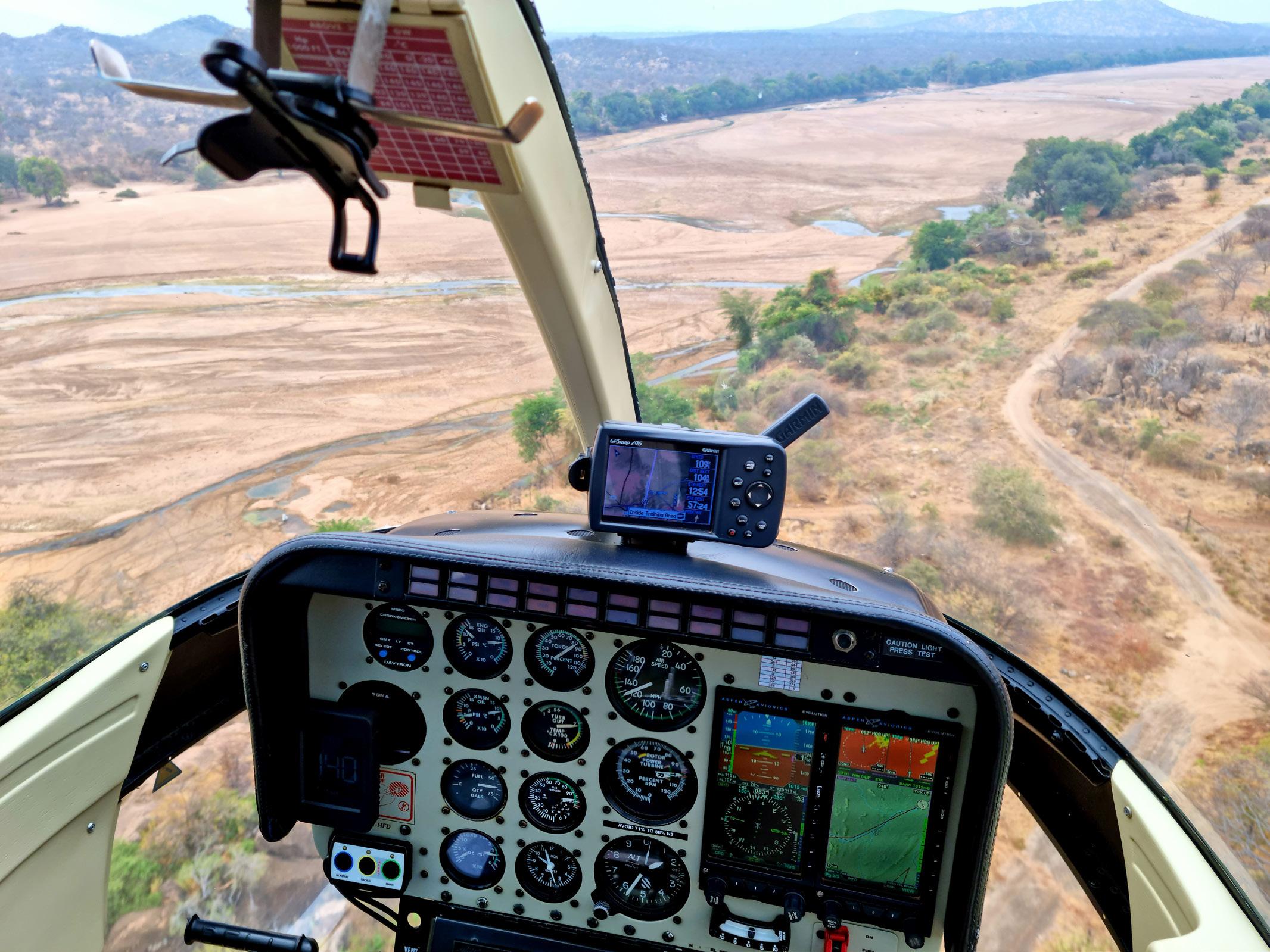
FlightCom: December 2022 23
View over the Limpopo. The servitude road running parallel to the river in many places allows for very easy pick up and drop offs.
immigration, customs, police and officers working in the labour ministry and other relevant government departments act in ways that deliberately seek to cultivate or sustain such a system. Promising to expedite the border crossing process, these practices have encouraged lucrative social economies in which hyenas participate actively in assisting people and their goods to cross, and from which they derive a variety of benefits.
come to expect that my friends in the force will let me go as long as my colleagues outside can guarantee that they are working something out.”
After learning so much regarding the level and depth of all the corruption, I seriously doubted how my presence would help, and in fact worried about my own safety. This was highlighted to me in an almost –but not quite – amusing incident.
The scale of the problem defies imagination - in just two months of the lockdown; April and May, more than 5,500 undocumented people were apprehended along the borders with Zimbabwe and Mozambique. In addition, drugs, firearms, livestock and other contraband were confiscated. In one incident, 50kg of copper was confiscated. And that was the tip of the iceberg.
We had taken off from our safe haven base and were flying along the Limpopo River looking for the tracks of stolen vehicles in the river bed. In the near distance
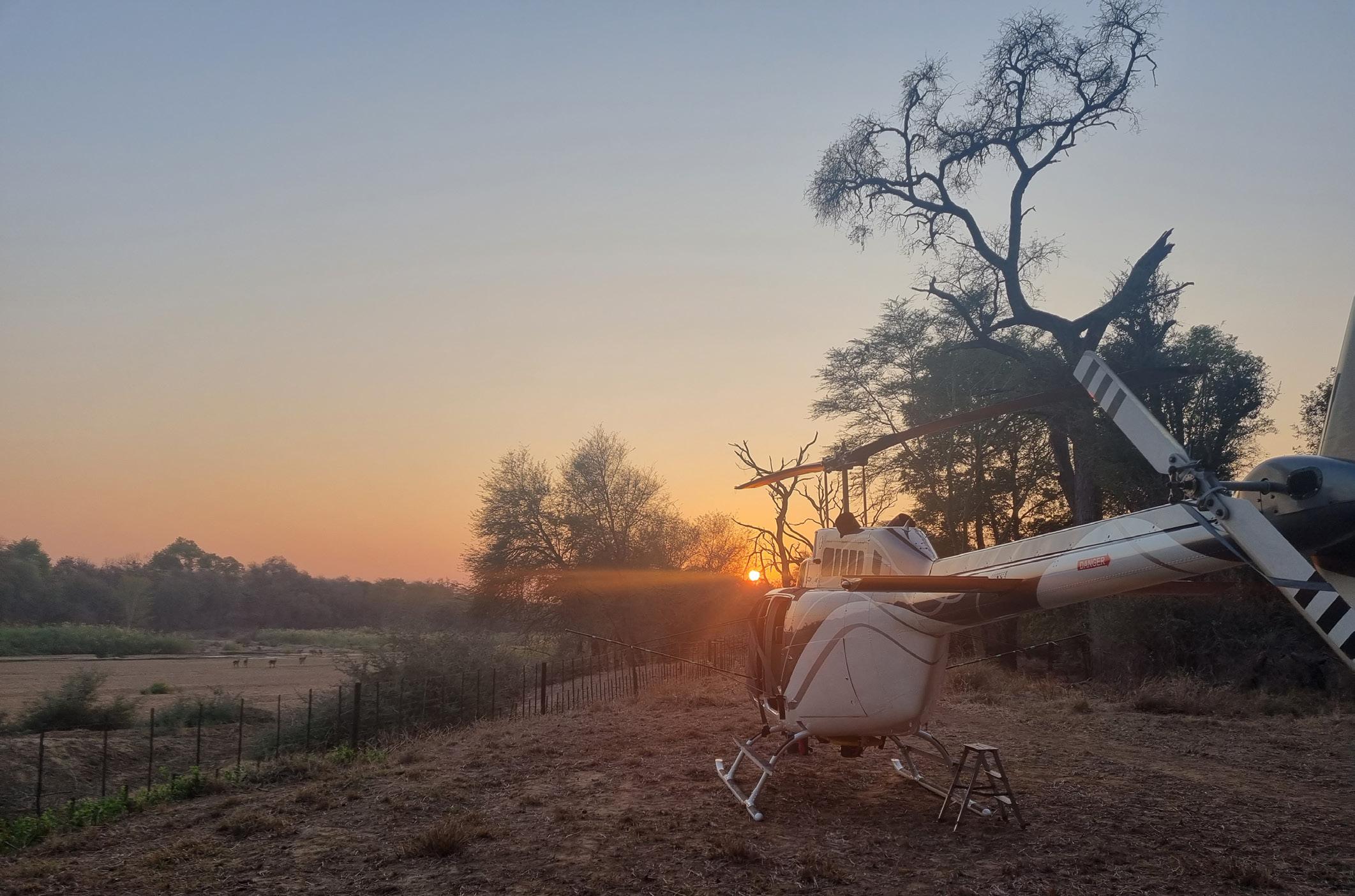
One of the people we captured who was involved with night time smuggling, had this to say: “Because of my many arrests, while I am at the police station, I have
I noticed a wisp of smoke rising between the tall trees on the Zimbabwe side of the river. As we got closer it became evident that this was a large smuggling camp, set up with a couple of tents, a covered cooking area, three huge piles of unknown goods covered well under black plastic sheeting, a couple of minibus taxis and a handful of well-dressed people.
24 FlightCom: December 2022
The early morning tranquillity defies the chaos happening at night.
But what caught my eyes most, was the silver-grey double cab bakkie stuck in the middle of the river.

doors off for better visibility and as a means of air conditioning, not having that luxury, all the while thinking that surely the sudden presence of a helicopter, having discovered such obvious signs of smuggling, would in the very least invoke some form of panic from those below. But no.

My ego was immediately shattered when three men casually walked out into the open below us, two of them wielding AK47’s slung over their shoulders, and all three casually looked up at us and in a very relaxed manner, proceeded to take pictures of us with their cell phones. I smiled, pulled away and we all wondered which government official was going to receive some pretty pictures of us, no doubt with a message along the lines of, “We are paying you for protection, so what is this helicopter doing?”
I admit that for quite a while I also had thoughts that I could expect a call from someone with a warning. And I’m still wondering.
Criss-crossing the wide expanse of sand were countless tracks from both humans and donkey carts. On the SA side of the river was another small camp hidden between the trees, a couple of tents and a minibus. On the Zimbabwe side there was an old yellow bulldozer in a clearing and it was evident that the bulldozer had made a raised ford-way across the river, as well as a freshly bulldozed road through the bush, disappearing into the distance. I decided to hover above the camp on the Zimbabwe side to take some photos and to look for anything of interest. We are flying with the
FlightCom: December 2022 25
With the use of camera traps part of a gang of Zimbabwe cigarette smugglers is captured in the act cutting a game farmers fence entering SA.
The SANDF towing a stolen Bakkie that got stuck in the sand half way across the Limpopo. The bakkie was registered in Durban.
Guy Leitch
MS POPPY KHOZA FACE TO FACE
Guy Leitch chats to SACAA Director Ms Poppy Khoza on her election as President of the ICAO General Assembly and transformation in the CAA.
GL: Congratulations on your appointment as President of the ICAO General Assembly. How significant is this accomplishment? A) To you personally and B) For African aviation?
PK: Thank you very much. Personally, this was a humbling experience. The key nomination by the Czech Republic on behalf of the European countries was a huge honour and the unanimous election by all Member States is an experience I will never forget.
I must also acknowledge our government for driving the transformation programme with no apology, because had the government not been so progressive in gender equity initiatives, there would not have been a female DCA, and I would not have been recognised by ICAO and its Member States. I have no other option but to recognise God’s hand in all of it, and I am super grateful that He carried me through it all with distinction, and for that I am forever indebted to Him.
This election comes after I had served as one of the four Vice Presidents elected in the 40th Assembly of 2019. I must also add that prior to these responsibilities, I was elected, after being nominated by the USA and supported by all States, to chair the Facilitation Stream of the ICAO’s High-Level Conference on COVID-19 in October 2021. Prior to that I had also served for two
terms as the Chair of the Aviation Security Panel. All these responsibilities that I shouldered were building blocks towards this election.
Many people may not be aware of this, but the previous President of the ICAO Council was a Nigerian national, Dr Olumuyiwa Benard Aliu. Africa is making its voice heard and my appointment is just a step in the right direction for the Continent, and also speaks volumes regarding the talent and skills of Africans.
GL: Tell us about your background - when did you first imagine you could be A) The head of the SACAA? B) The President of the ICAO General Assembly?
It is common knowledge that I was born and bred in Sibongile, a location in Dundee on the north of KwaZulu-Natal. I was introduced to aviation whilst studying towards a qualification in Travel and Tourism at the Natal Technikon (now the Durban University of Technology).
My first job was with the South African flag carrier, South African Airways (SAA) as a customer service agent, where I eventually grew within the ranks
26 FlightCom: December 2022
FACE TO FACE
and left SAA at management level. I then joined the South African Civil Aviation Authority in senior management, where I progressed through the ranks and ended up to where I am today.
What attracted me to civil aviation, without knowing much about the industry, considering the history of our country, was the possibility to travel the world. Little did I know that civil aviation is, in fact, such a large, complex and multi-faceted field.
The global reach and impact of aviation activities exposed me to a brand-new world and honestly, the day the Board and Ministry approached me to temporarily head the SACAA, I was apprehensive. However, true to my nature, I had enough experience in the industry and I am not one to shy away from a challenge, and as they say, the rest is history.
The appointment to chair the single most critical global meeting where the future of global aviation is deliberated was intimidating at first, but I believed strongly that my career in the sector as well as the ICAO meetings I chaired as indicated earlier, prepared me for that moment. This particular meeting was so
GL: Is your appointment a recognition of what you have achieved with the SACAA?
I would like to believe that it is two-fold. Firstly, it is probably due to organisational successes, but also the role I have played in representing South Africa in the structures of ICAO over a number of years. I believe that ICAO and its Member States must have been convinced that I have the capacity to navigate complex discussions successfully, and with outcomes that are in the best interests of the organisation and the global aviation industry, striking the right balance on complex issues.
As an organisation, we have done a lot, considering the amazing milestones that the organisation has achieved over the years. Our international ratings on aviation safety and security with ICAO have increased significantly, which places South Africa among the best-performing countries in this regard. The SACAA
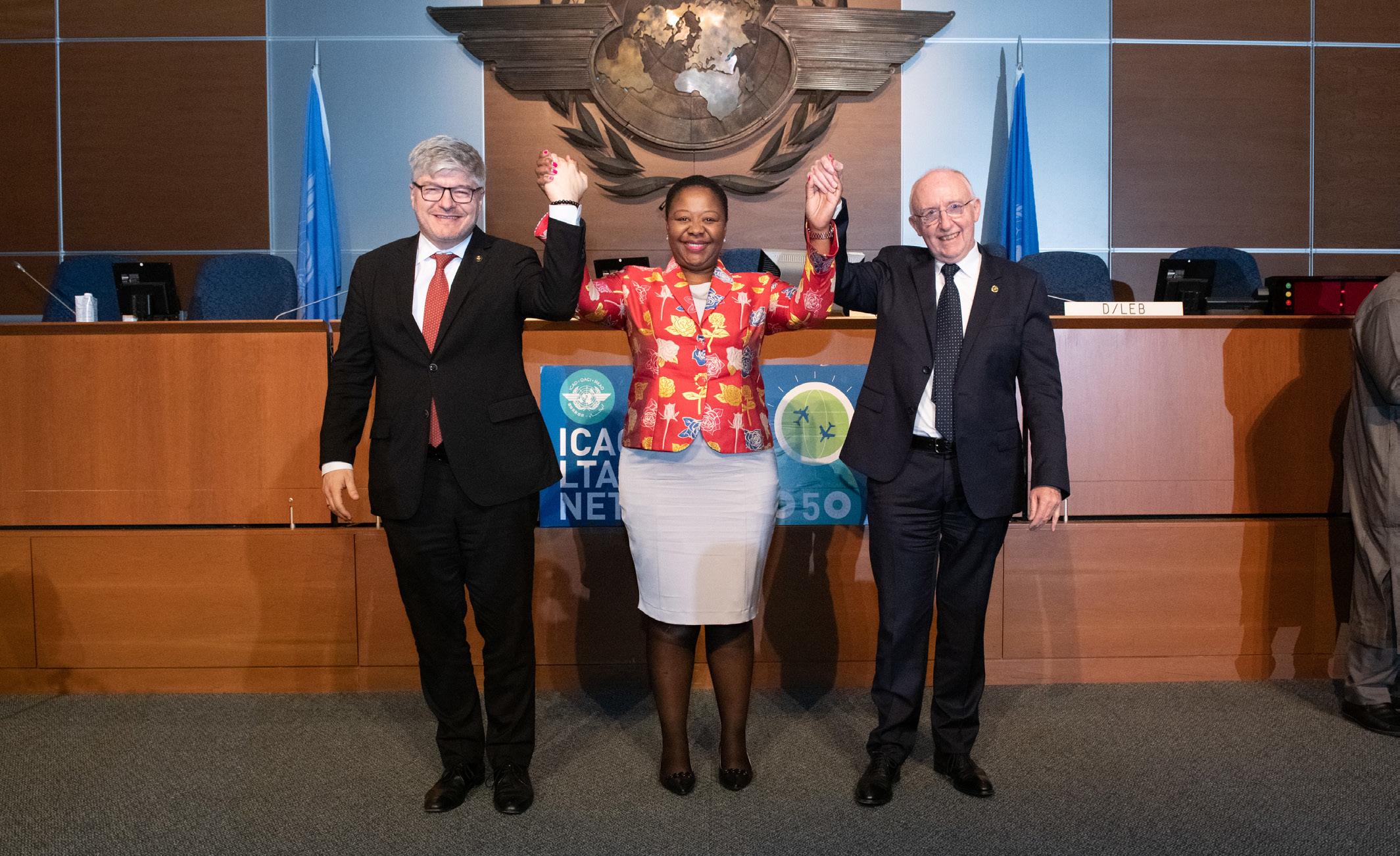
FlightCom: December 2022 27
much more significant because of the topical issues that were discussed and the objectives that were achieved
SACAA Director Ms Poppy Khoza at ICAO with Salvato Sciacchi and Juan Carlos Salazar. Image - ICAO
has reported nine clean audits in the last 10 years from the office of the Auditor-General. Just recently we retained our US-Federal Aviation Administration (FAA) Category 1 status.
Over the years, we have received many international recognitions for our role in aviation safety and security, but also regarding clean governance. South Africa has dedicated a lot of time and effort in ensuring effective participation in regional bodies and has collaborated with African countries to ensure that the voice of the African continent is well represented, especially by the countries who serve in the ICAO Council.
South Africa is supporting the AFCAC office by posting experts who will ensure the development of civil aviation within the continent. So, recognition of South Africa at an ICAO platform is a vote of confidence for Africa as a whole. I must emphasise that South Africa is held in high regard, and this is something worth noting and celebrating.
Country Left Behind. In fact, if this was the barometer, then competency, leadership and capability would not be key factors during the election at all.
Leadership and competence constitute the first priority in terms of determining who will be elected to chair such strategic and important conferences and meetings. The complexity of issues requires more than the notion of the “no country left behind (NCLB)” as a measure to determine who will be elected. In fact, the NCLB does not even arise here, because it was designed for something completely different and has nothing to do with who will be elected to navigate such complex and critical discussions.
female DCA
Presiding over a global meeting puts an individual at the centre of the entire process, their readiness, ability, and the wisdom to navigate critical global issues come into play. Therefore, the character of the individual is key and cannot simply be relegated to the performance of their State in ICAO rankings. I see both these aspects i.e., my appointment and the NCLB, as separate issues with equal importance.
GL: Africa has struggled to compete on the world stage with its share of airline traffic having fallen from 2.2% to currently around 1.8% - despite having 20% of the world’s population. Is your appointment due to ICAO’s “No Country Left Behind” policy which is ICAO's effort to assist states in implementing the ICAO SARPs?
PK: Maybe it’s important to bring context to the concept of the ‘No Country Left Behind’ campaign. The concept is based on the principle that countries that have consistently maintained critical safety or security elements ratings of above 80% must assist those who are struggling to be compliant within their respective regions or on the continent. This term cannot therefore be used loosely and stereotypically, to suggest that my appointment is on the basis of No
Back to what we do to give effect to the NCLB, South Africa plays an integral role in assisting our neighbouring States. Some years ago, SACAA developed a Regional Cooperation Strategy, according to which technical assistance was offered to many countries in the SADC region. We are collaborating successfully with countries whose level of effective implementation is below the global average, and this collaboration is greatly recognised by these Member States and ICAO.
I must point out that there are many African countries who are performing very well, and, in this regard, I would also like to recognise the election of Nigeria and Egypt in Part II of the Governing Council, because of their contributions to the provision of facilities for international civil air navigation.
28 FlightCom: December 2022
there would not have been a
Far more significant is that Equatorial Guinea, Ghana, Ethiopia, and Zimbabwe were elected to Part III of the ICAO Council, as States ensuring geographic representation. These were significant achievements for the countries, their respective regions, and the continent, as we all look at improving air connectivity, enhancing aviation safety and security but also at contributing significantly to the socio-economic benefits for the Continent.
GL: Under your leadership South Africa set a clear goal of re-election to the 36-country ICAO Governing Council, and you achieved this. How important is this?
PK: I honestly cannot take credit for this. I was merely part of the team under the Department of Transport that contributed to making sure this was achieved.
GL: How important is transformation of the SACAA for you? You have clearly accomplished much as the SACAA has 45% women senior managers, 51% women employees and 89% black employees. Do you aim to do more?
the concept of the ‘No Country Left Behind’ campaign
It is no secret that the aviation industry is still behind on transformation matters, particularly in South Africa. This requires our collective efforts to ensure an inclusive industry that embraces gender equity and racial inclusivity. It is the right thing to do. No child should ever feel left out because the system is not embracing diversity. In fact, diversity is good for our democracy, and it is good for sustainability and progress.
One of the initiatives that we have implemented is the Outreach Programme, aimed at demystifying aviation, predominantly to previously disadvantaged communities. The aim is to build an interest in and awareness of aviation and its associated industries among learners, graduates, and the public.
The SACAA does not simply pay lip service to transformation and several of our programmes support the transformation of the industry, including a bursary scheme, learnerships, trainee programmes and enterprise development programmes. We are mindful that we have a long way to go, but we will persistently take it one step at a time.
The re-election is important because it gives South Africa a voice on global aviation matters as part of the 36 member states elected to the Governing Council. This means that South Africa (along with other elected African member states) will have a role in providing direction to the work of the ICAO, especially as they implement the resolutions of the Assembly over a three-year period. It also means that during each decision taken, South Africa will advance the interests of the country and will also be part of the African States in the Council representing the interests of the Continent.
GL: Aviation is a traditionally male-dominated industry – what does your appointment mean for women in aviation?
PK: I hope that this achievement inspires women in the aviation sector globally, knowing that I also have a role to play in mentoring and coaching other women to challenge the status quo and to be fully empowered in our industry.
The fact that this election made me the first-ever woman to fill this role in the ICAO Assembly’s 78-year history was quite special on its own. What it says is that the world has turned the corner in recognising that women, irrespective of where they come from, can take up leadership positions, including in the highest decision structures of UN bodies.
FlightCom: December 2022 29
The status quo was indeed challenged, and I must commend the member states who looked beyond gender issues when electing me as the first woman President of the Assembly from the African Continent. Seventy-eight (78) years is a long time; seven decades of women being overlooked by the system.
But then again, as the voices of women become more prominent, it is becoming very difficult to ignore their voices and it takes progressive minds to recognise that women are equally competent and capable of taking the lead in very influential global structures that shape the global agenda. It is not a small feat and I remain humbled every day by this recognition, because it does not come by every day and also there are many other women who are equally capable and competent to lead such complex discussions. This gives permission to all women on the African Continent and the world to dream big and to aspire to contribute meaningfully at all levels and in all career fields of their choice. If anything, I hope that this achievement also inspires women in the aviation sector, knowing that I also have
a role to play in mentoring and coaching other women to challenge the status quo and be fully empowered in our industry.
I strongly believe that countries that have not prioritised women inclusion in the aviation industry, should do so as a matter of priority. There is an opportunity to change the landscape and the narrative on matters pertaining to gender inequality in the sector. I also challenge the African aviation industry to lead this process, change the narrative and to drive the ICAO’s Gender Equality Programme Promoting the Participation of Women in the Global Aviation Sector for the rest of the world to follow.
Having been the first State to host the Global Aviation Gender Summit in Cape Town in 2018, the world will be gathered in Spain for the second Summit, and we are looking forward to sharing with other States programmes that will bring about meaningful change in the fight towards gender equality within the sector.
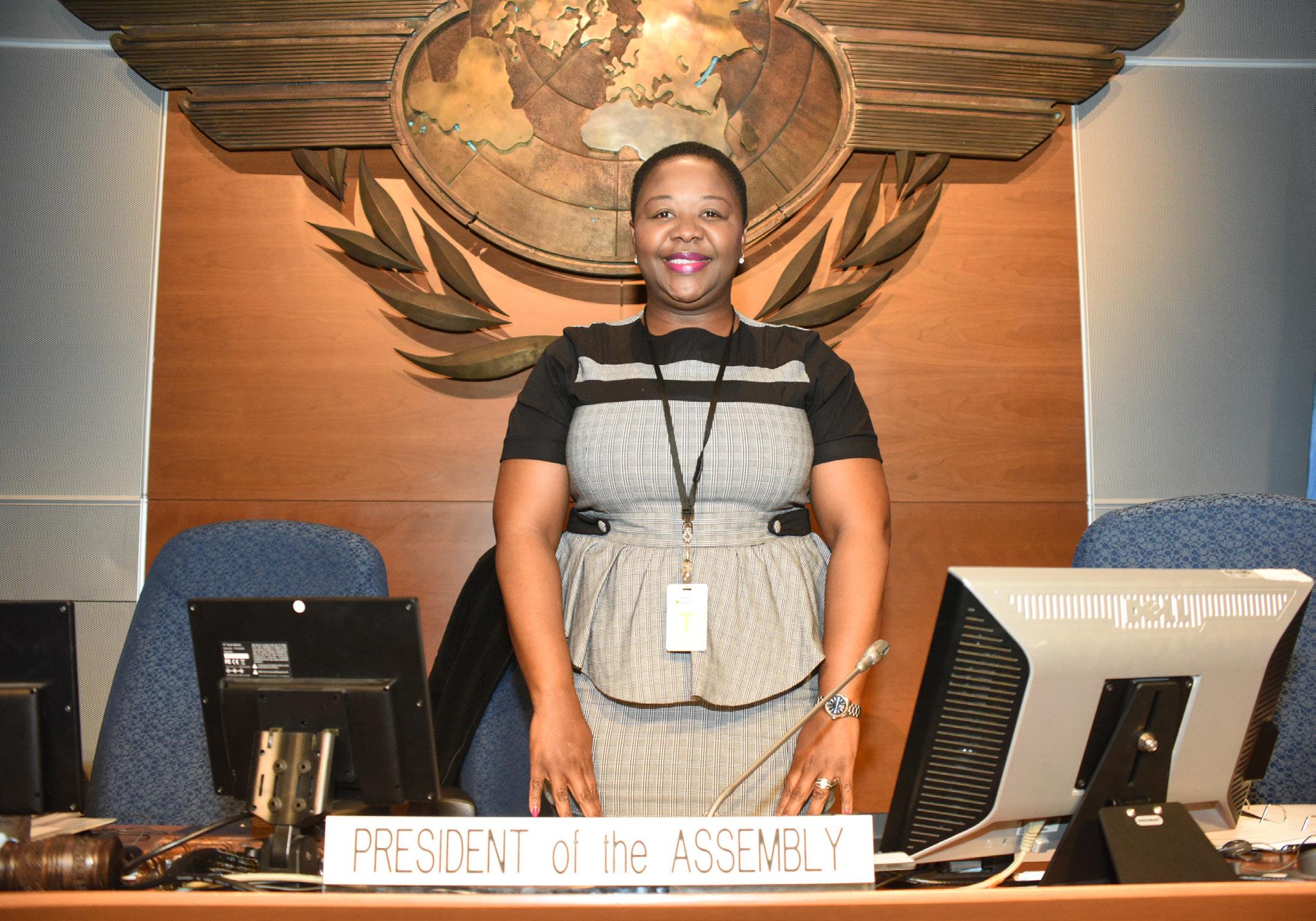
30 FlightCom: December 2022
Ms Poppy Khoza as the President of the 41st ICAO General Assembly.
Our continent, like the rest of the world, is still behind on matters relating to the promotion of women leaders in the sector. We have reasons to celebrate the progress our government is making in bringing about transformation in our country, with other aviation entities under the Department of Transport being headed by women. I am also inspired when I see the work done and the direction taken by my fellow Chief Executives, Ms Mpumi Mpofu of Airports Company South Africa, and Ms Nozipho Mdawe of Air Traffic Navigation Systems.
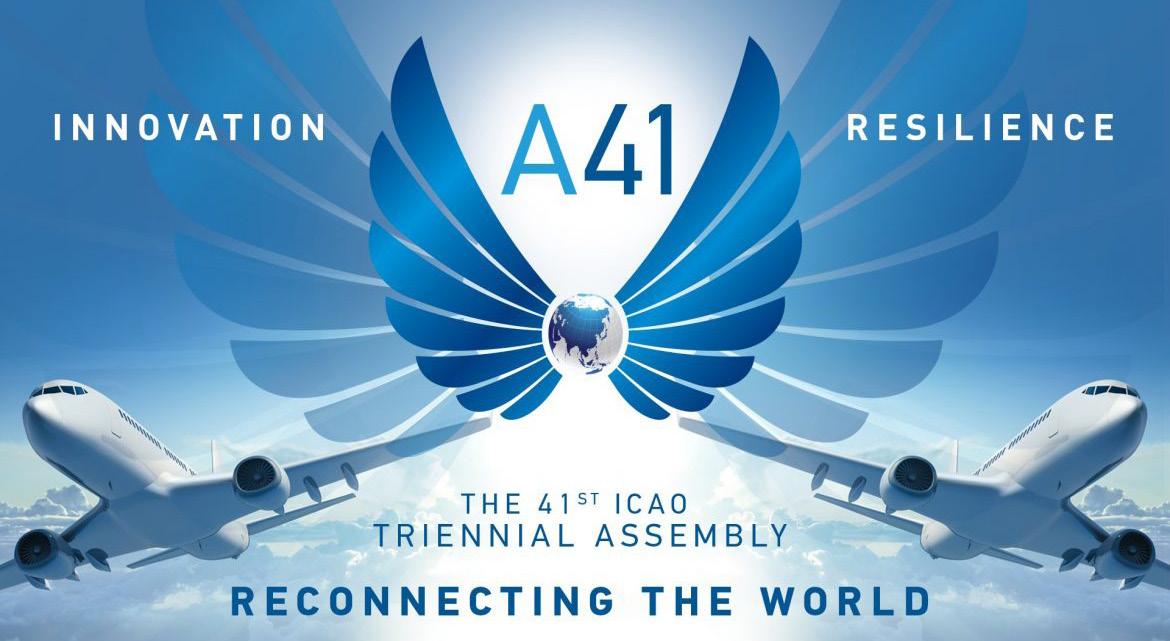
feeling of being heard and considered. That was my intention when I accepted this nomination, and I will let history tell the story of how that went.
I am indeed a proud African and South African and I bring unique offerings, motivated by many experiences I have had as an individual, which I believe many who had faith in me were drawn to. I will never denounce nor be bothered by my identity as an African and my gender to feed a narrative that this was a chance appointment. It was an appropriate appointment that was long overdue, because many women in civil aviation are capable of performing it.
GL: Does the focus on your being an African woman bother you? – Would you not prefer to be judged just as a person?
PK: On the contrary, I did not feel at all that I was judged by Member States as being an African woman. I am certain that if it bothered them, I would not have been elected.
What was celebrated is the appreciation for the leadership of the President of the Assembly, for the successful outcomes of the Assembly.
There was a broad consensus that this global meeting was cited as the most difficult, with the most contentious matters. In the end, the parties walked away with the
GL: And finally, does your appointment mean that you will be spending more time in Montreal and less time on SACAA business? How does your family feel about this? How do you juggle your very demanding work schedule and family?
The President of the Assembly position is only valid for the duration of each Assembly and is not a fulltime appointment that will require me to spend more time in Montreal. It is different to the President of the Council, who gets appointed for a three-year term. I will be based in South Africa and continue with my duties at home.
FlightCom: December 2022 31
SAA EXECUTIVE CHAIRMAN - JOHN LAMOLA FACE TO FACE
Guy Leitch chats to Prof John Lamola on SAA’s fleet plans, financial recovery and new long-haul routes.
While you have been grounded the other airlines have moved into your markets – particularly the regional and long-haul routes. Furthermore, it has been said that SAA cannot make money on longhaul flying east of Dubai. Are these some of the reasons you have been very cautious about getting back into long-haul flying?
The market has changed drastically post-Covid. As you know, this industry goes in global cycles and we are in a downturn and it will take years to start rising again. Right now longhaul is very risky. We will however be restarting longhaul in the first quarter of next year with our first carefully selected route.
the lessors are approaching us
An executive decision has been made to dispose of the A340 and replace it with equipment specifically chosen to best service longhaul routes. Our plan next year is to quickly ramp up to a total of 12 aircraft. And within that 12 we will have 9 A320s and 3 A330s. There’s currently some debate within the company as to whether to go with A330-200 or 300. Perhaps we will do an A350-900, depending on which the next longhaul route we choose to operate is. Perth will require an A350.
Let’s talk about your fleet – and whether it is fit for purpose. You only have two widebody longhaul aircraft left, an uncompetitive A340-600, and an A330-300. Is that sufficient to resume a longhaul flying?
You have been good at getting your old A320s back, even with their original SAA liveries and seating configurations. Is there any chance you can get any of the A350s back?
The team is looking at that but it's a bit difficult as those aircraft were leased and the lessors were prejudiced in the business recovery. But in terms of recovering our former aircraft, we are not going out to get them, the lessors are approaching us.
32 FlightCom: December 2022
FACE TO FACE
Guy Leitch
So despite the business rescue process, it looks as though the lessors are still quite keen to do business with SAA?
They are indeed and it has been encouraging. The widebody market has had a slow trajectory of recovery, but the narrow body has been buoyant. Do you have a clear fleet renewal strategy at this stage?
Our fleet renewal strategy goes beyond what we had expected. First of all, we are into existing fleet extension rather than purchasing new aircraft. New aircraft acquisition will be determined by how the transaction with the strategic equity partner (SEP) concludes as that transaction has a very robust business plan. If the SEP transaction gets delayed beyond which we as the board of SAA

believe is healthy, then we will start implementing that business plan ourselves. Moving on to your financial position - SAA is currently configured to be quite a lot bigger than it currently is in terms of your overhead structure and resources. Is it safe to assume that you are currently burning cash?
since June we have had a positive cash flow
No. I can tell you confidently that since June we have had a positive cash flow, and it's growing beyond our expectations. When SAA came out of business rescue the business plan provided for R2 billion worth of working capital. We have been flying since May last year so we have been running for 18 months. If we were really losing money, we could not have run for 18 months on R2 billion.
FlightCom: December 2022 33
John Lamola says SAA is running profitably and paying back debt.
The SEP is scheduled for completion by the end of March next year which would seem to be extremely unlikely. Can you survive at least until then?
We have done far more than was expected: the receivership provided for R3.5 million billion worth of a debt which we're supposed to pay back in three tranches. Government has not provided that money. But two of those tranches have already been serviced by the airline out of operating capital. So the airline is doing well. Partially due to the fact that we went on a very aggressive drive to mobilise lazy cash within the business. Amongst these were the blocked funds held in companies like Angola, Zimbabwe and Burundi. There was more than a R1 billion out there due to us, and we have got in more than R500 million of that so far.
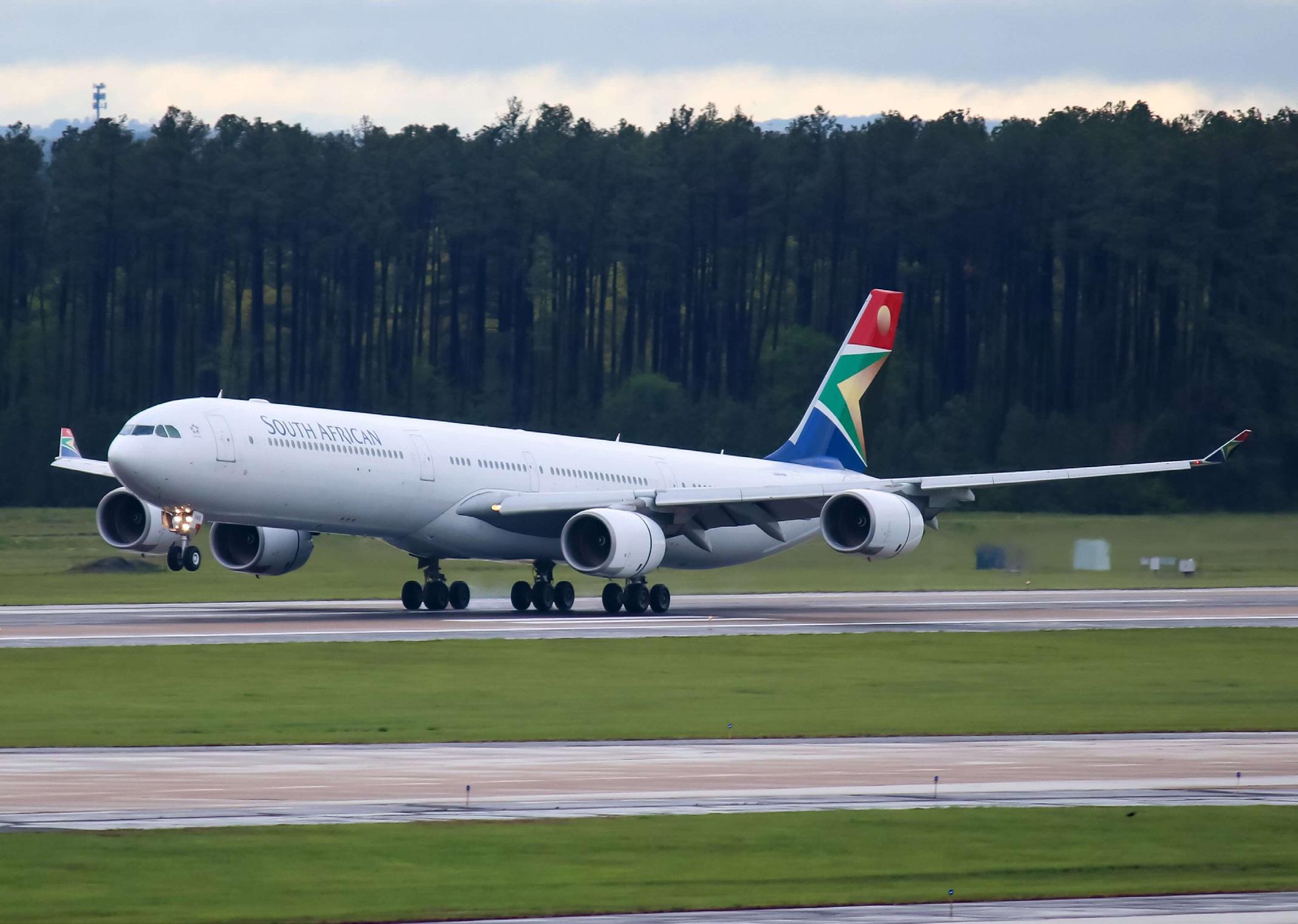
And finally, as the ‘flag carrier’ you still have to fulfil a development agenda. How do you balance that with the commercial imperative of being sustainable - if not profitable?
mobilise lazy cash within the busines
The two goals are really inseparable. SAA is a seedbed for those who would never otherwise have had a chance to become pilots or aviation managers. Of course, this comes with a price in that a lot of taxpayers’ money has had to be put into sustaining SAA. However, we are now in a different phase and we have learned much from the past. The challenge is now to balance the political and the commercial. There has been a major mind shift from the past to the current management of SAA.
34 FlightCom: December 2022
SAA has decided to sell its last A340.
AIR CARGO DEMAND SOFTENS
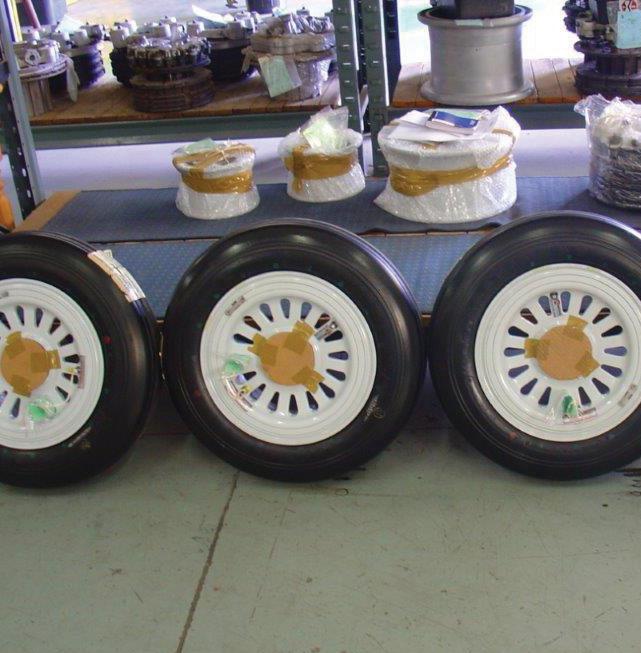
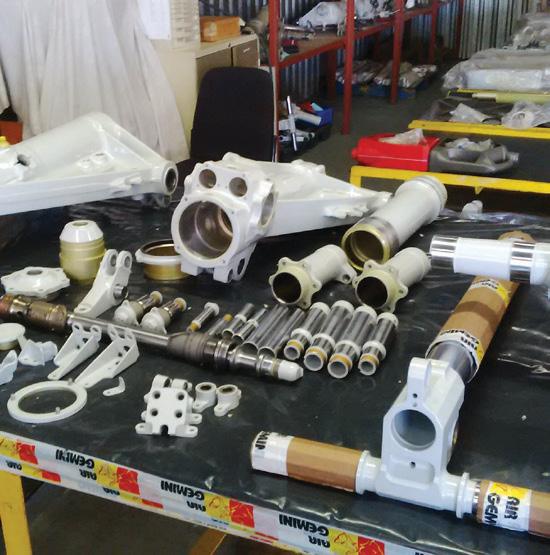

IATA data for September 2022 global air cargo markets shows that air cargo demand softened.
Global demand fell 10.6% compared to September 2021 (-10.6% also for international operations), but continued to track at near pre-pandemic levels (-3.6%). Capacity was 2.4% above September 2021 (+5.0% for international operations) but still 7.4% below September 2019 levels (-8.1% for international operations).
African airlines saw cargo volumes increase by 0.1% in September 2022 compared to September 2021.
This was a slight decrease in the growth recorded the previous month (1.0%). Capacity was 4.1% below September 2021 levels.
“While air cargo’s activity continues to track near to 2019 levels, volumes remain below 2021’s exceptional performance as the industry faces some headwinds. At the consumer level, with travel restrictions lifting postpandemic, people are likely to spend more on vacation travel and less on e-commerce,” said Willie Walsh, IATA’s Director General.

FlightCom: December 2022 35
Safair North Perimeter Road, OR Tambo International Airport, Bonaero Park, 1619 Tel: 081 755 2534 Fax: 011 395 1291 SA Flyer 2022|12
WE OFFER THE INDUSTRY INTEGRITY, RELIABILITY, EXPERIENCE AND A DEPTH OF KNOWLEDGE
Wishing you a joyous Holiday season and a happy and peaceful New Year.
NEWS
SANSA LAUNCHES SPACE WEATHER CENTRE
Space Weather has come to be an increasingly critical component of flight planning and dispatch.
Space weather refers to the conditions in space emanating from the sun, impacting on the performance and reliability of space-borne and ground-based technological systems such as communication, navigation and power grids. Industries such as aviation rely on communication and navigation capabilities to operate in a safe and compliant manner.
Early warnings and forecasts are crucial for protecting satellites, national power grids, communications and navigation systems from the harmful effects of solar storms and other space weather phenomena.
In November 2022 South Africa’s SANSA officially launched its huge investment in a key state of the art space weather facility.

36 FlightCom: December 2022
GUY LEITCH
BY
THE SOUTH AFRICAN National Space Agency (SANSA) has been operating a Space Weather Centre for the past 10 years in Hermanus in the Western Cape. It has worked on monitoring the sun and its activity, and providing space weather forecasts, warnings, alerts and environmental data on space weather conditions, all of which are critical to aviation safety.
Space weather can interfere with satellite electronics, communications and GPS signals, amongst other things. With the growing need to monitor space weather and its impact on communities and technology, SANSA has launched an operational 24/7 space weather capability and has been designated as a Regional Warning Centre for Africa.
What is SANSA?
SANSA has four strategic programmes – Space

Space weather effects on aviation.
Science, Space Operations, Space Engineering and Earth Observation.
The Space Agency’s mandate is to provide for the promotion and use of space and co-operation in spacerelated activities, foster research in space science, advance scientific engineering, develop human capabilities in space science, and support the creation of an environment conducive to industrial development. This has direct benefits. For example, during the 2022 floods in KwaZulu Natal and the Jagersfontein mine waste dam collapse, SANSA provided satellite imagery to support the disaster response and for understanding the level of damage.
SANSA and Aviation
SANSA’s much enhanced space weather capability has been developed in response to the International Civil Aviation Organisation (ICAO) 2021 selection of SANSA as one of two ICAO-designated Regional Space Weather Centers.
FlightCom: December 2022 37
The implications of this designation meant that a full operational capability that meets the ICAO requirements needed to be put in place by 2024 to provide advanced research capabilities in the space weather field. The regional centres provide space weather services, including solar storm forecasts and warnings to the global aviation sector.

SANSA also has a role in international space cooperation, for example, the Agency is negotiating with NASA for the establishment of a tracking and telemetry station in Matjiesfontein in support of future lunar exploration on the Moon.

Education and STEM Development
Science, technology, engineering and mathematics (STEM) are key developmental skills. To this end SANSA’s Science Centre in Hermanus hosts educator workshops to support STEM educators.
SANSA has also announced the establishment of the first SANSA Research Chair in Space Weather.
Space science is a global industry and SANSA has developed extensive partnerships with space agencies and organisations across the world through which it provides numerous opportunities for the local space industry and academia. SANSA partners with African countries to provide training in the application of space technologies and to create a network of scientific nodes for aligned research on the continent. The African Resource Management Constellation is one such initiative, which looks at African partners contributing a constellation of Earth observation satellites to allow Africa to manage more efficiently its natural resources and ensure food security while reducing costs and reliance on international satellite providers.
The space agency continues to implement activities targeting women in science and the previously disadvantaged youth. A key milestone in the Agency’s infrastructure development objectives is the establishment of a Space Infrastructure Hub (SIH). This hub will facilitate skills, capacity development, and job creation within the space industry;
SANSA is a key part of STEM education.
38 FlightCom: December 2022
Solar radiation has a direct effect on aircraft.
THE PROJECT
In 2019, the South African National Space Agency (SANSA) developed a business case for the establishment of an operational space weather services capability to forecast space weather on a 24/7 basis to mitigate the impact of space weather on technological systems.
The business case was approved and the establishment would take three years, building on the existing space weather research and development legacy in SANSA. This would include infrastructure development, instrumentation deployment, product and service development, and capability development through an investment in the required skills.
The project commenced in October 2019 and despite Covid, was completed on schedule and within budget by the end of September 2022.
The total investment in this capability amounts to ZAR 107.5 million over the three years which includes a ring-fenced establishment grant of ZAR 70.89 million received from the Department of Science and Innovation (DSI) plus R 36.6 million invested directly by SANSA in the Hermanus Facility and ICT infrastructure to ensure that the Space Weather Infrastructure could be supported on
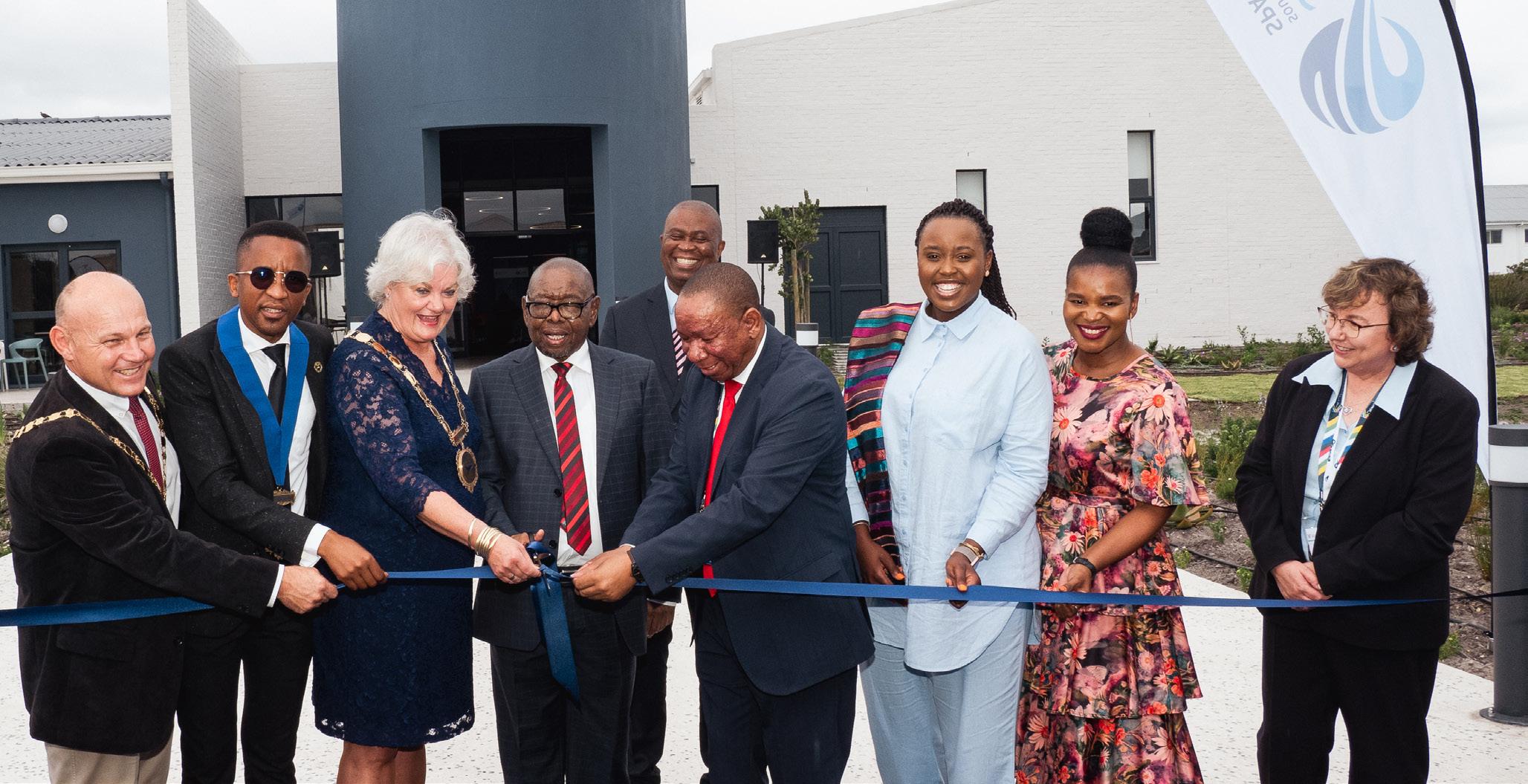
the existing SANSA campus. In addition, the DSI committed a SARCHI Research Chair in Space Weather to SANSA, which is assisting in filling expertise gaps.
SANSA says that, “The development of an Operational Space Weather Services Capability for the country is more than just the building of a new Space Weather Centre – it represents the value of science, technology, and innovation in building new applications and technologies, and in solving global challenges. The launch of this capability also provides SANSA and DSI with an opportunity to showcase the value of science, technology, and innovation within the country. This is an ideal example of the complete value chain of research to operations that can demonstrate economic and social benefits.
The launch of SANSA's new state of the art Space Weather Centre.
With the new facility, SANSA will be able to develop comprehensive expertise in space weather science and applications while providing cuttingedge services to commercial clients and development partners. This Centre is dedicated to growing the nation’s science, engineering, technology and innovation sectors, offering opportunities to develop scarce skills and increase national research output, while ensuring that usable products and services are generated for the safety of the nation and Africa at large.
FlightCom: December 2022 39
The launch of SANSA's new state of the art Space Weather Centre
INTERNATIONAL SPACE WEATHER CAMP
The International Space Weather Camp (ISWC) provides an exceptional opportunity for students from South Africa, the USA, and Germany to learn about space weather, a relatively new and exciting field involving the study of the Sun. Specifically, its influence on space and the Earth’s upper atmosphere as well as the impacts of solar events on space and ground-based technological systems that modern society relies on daily.
The ISWC consists of a series of lectures, hands-on projects and other activities. The subject matter covers Space Weather, comprising cosmic ray particle transport theory, plasma physics, solar physics, heliospheric
physics, computer simulations for modelling and understanding local Space Weather, and the impact on Earth’s atmosphere, satellites, and space.
The ISWC offers students a great platform to interact and engage with students and researchers from around the world. During the Camp students will also get an opportunity to learn about historic and current developments of space activities in South Africa, Germany, and the USA.

The ISWC will take place in two parts, with the first part taking place at the SANSA Hermanus facility from 24 June to 7 July 2023. The second part will be held in University of Alabama in Huntsville, USA from 8 to 23 July 2023. Successful applicants are expected to take part in both parts of the camp.
Details and applications for the camp can be found here: https://www.sansa.org.za/event/iswc/
40 FlightCom: December 2022
Students at a Space Weather Camp in Germany.
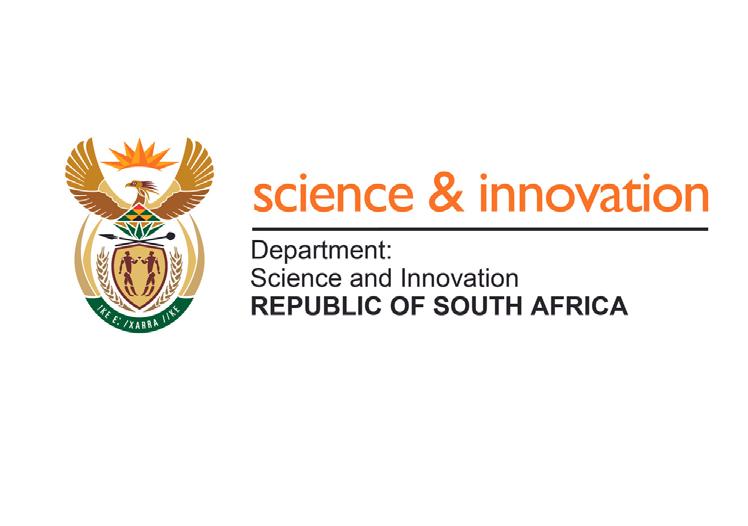
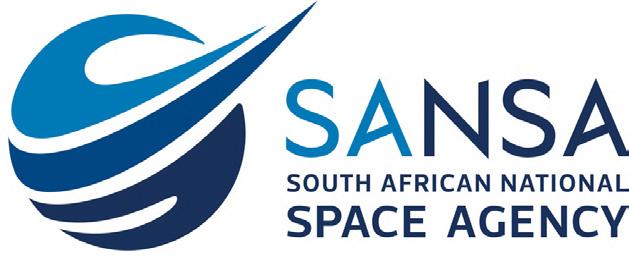
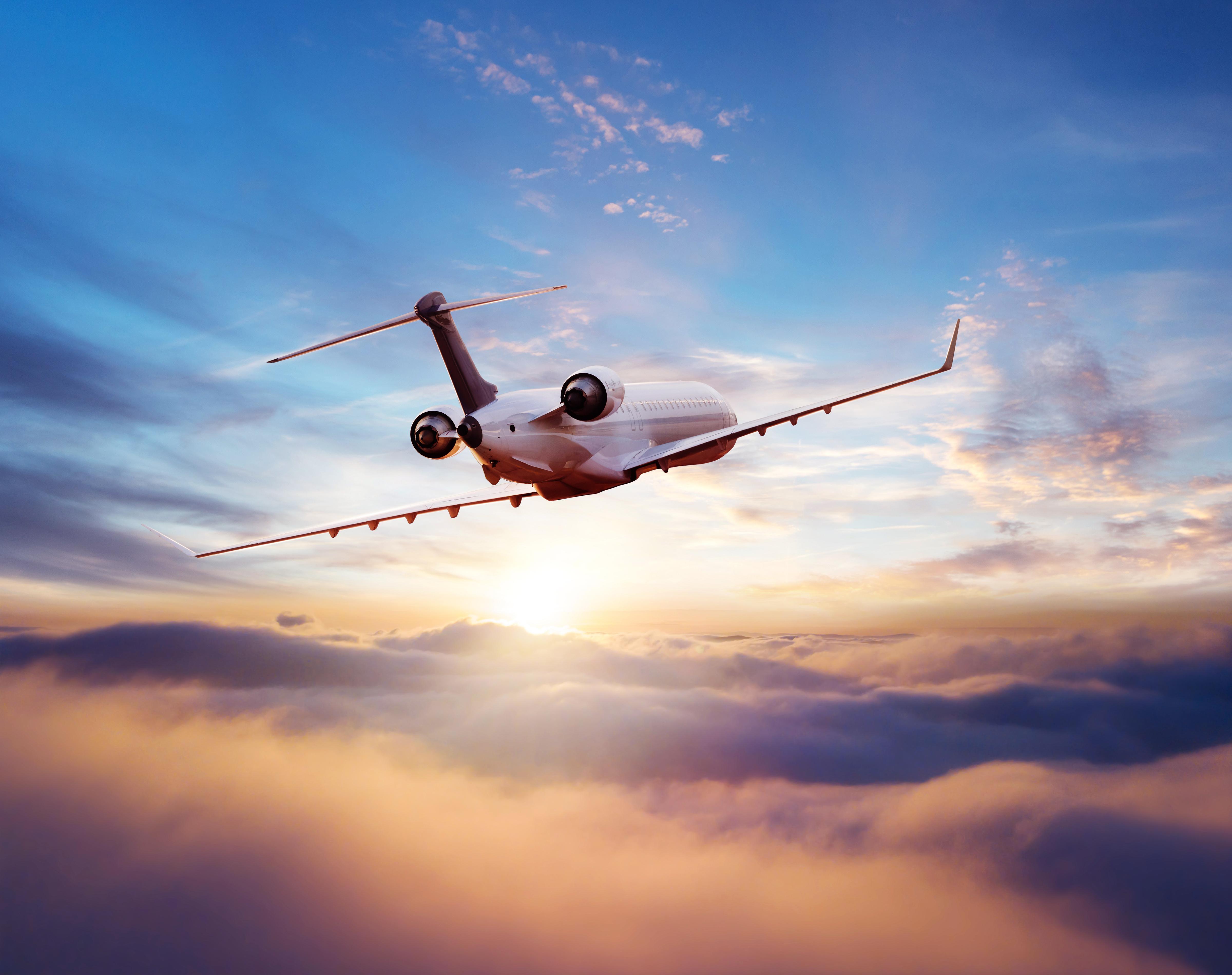


FlightCom: December 2022 41 Space Solutions for Aviation Unique magnetic technology facilities Compass calibration and maintenance Compass swing facilitation and training 24/7 space weather monitoring Space weather warnings, alets and training South African National Space Agency (SANSA) offers: www.sansa.org.za
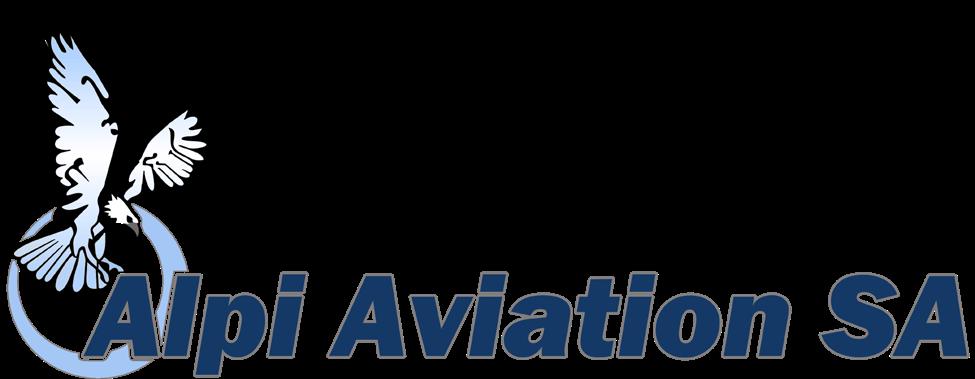
42 FlightCom: December 2022www.alpiaviation.co.za Dale de Klerk Cell: +27825563592 Fax: 0866058948 Skype: dale_de_klerk Email: dale@alpiaviation.co.za FROM NPL THROUGH TO CPL WE NOW OFFER TAILWHEEL TRAINING TurbineGS Training Ab-Initio Training Single Engined Multi Engine Night Rating IF Rating Instructors Rating Simulator Training Conversions CPL Theory CPL Practical Helicopter Training Tail Draggers Pilot Shop Conferences Hire and Fly Charters Aerobatic Training Beginners/Advanced Gyro-Copter Training Microlights & Ferry Flights Accommodadtion Aircraft/Heli Sales Club Facilities Drones NAME OF SCHOOL CODE TEL NO FAX NO BEAUFORT WEST AIFA (044) 272 5547 info@aifa.co.za j j j j j j j j j j j BETHLEHEM Paramount Aviation (058) 050 0493 info@flyparamount.co.za j j j j j j j j j j j j j j j BRAKPAN BENONI FABB Titanium Air (011) 914-5810 083-292-0978 j j j j CAPE TOWN Aviation Pilot Training (021) 935 0719 j j j j j j j j j j j j j j Era Flug (021) 934-7431 934-7435 j j j j j j j j j j j j j j j DURBAN Durban Aviation Centre (031) 573-2995 j j j j j j j j j j j j j j Starlite Aviation Training Academy (031) 571-6600 www.starliteaviation.com j j j j j j j j j j j j j j j j j j j j j j j EAST LONDON Border Aviation Club (043) 736-6181 086-516-8475 j j j j j j j j j j j j j j j GEORGE AIRPORT AIFA (044) 272 5547 info@aifa.co.za j j j j j j j j j j j Savannah Helicopter Training (044) 876-0096 j j j j j j j j j j j GRAND CENTRAL Flight Training Services (011) 805-9015/6 805-9018 j j j j j j j j j j j j j j j Superior Pilot Services (011) 805-0605 805-0604 j j j j j j j j j j j j j j j j j KRUGERSDORP Alpi Flight Academy (082) 556-3592 086-605-8948 j j j j j j j j j j j j j j j j j Aviatech Flight Academy (082) 303 1124 www.aviatech.co.za/ j j j j j j j j j j j j j LANSERIA AIRPORT / RANDBURG Aeronav Academy (011) 701-3862 701-3873 j j j j j j j j j j j j j j Skyhawk Aviation (011) 701-2622 701-2623 j j j j j j j j j j j j j j j j MOSSEL BAY Starlite Aviation Training Academy (044) 692-0006 www.starliteaviation.com j j j j j j j j j j j j j j j j j j j j j j j PANORAMA Johannesburg Flying Academy (064) 756 6356 j j j j j j j j j j j j j PORT ELIZABETH Algoa Flying Club (041) 581-3274 086-461-7067 j j j j j j j j j j j j j j j RAND AIRPORT Johannesburg School of Flying (011) 827 9827 info@jsf.co.za j j j j j j j j j j j j j j j U Fly Training Academy (011) 824-0680 390-1738 j j j j j j j j j j j j j j j RICHARDS BAY Richards Bay Air Carriers (035) 786-0146/7 786-0145 j j j j j j j j j j j j j RUSTENBURG Rustenburg Flying Club (082) 821 1690 082 619 8633 j j j j j j j j VEREENIGING AIRPORT Bird Aviation (016) 556-1007 info@birdaviation.co.za j j j j j j j j j j j j j j j j j WINDHOEK - EROS AIRPORT Desert Air (PTY) LTD +264 61 228101 +264 61 254 345 j j j j j j j j j j j WONDERBOOM AIRPORT / AEROPARK / RHINO PARK - PRETORIA Blue Chip Flight School (012) 543-3050 543-1826 j j j j j j j j j j j j j j j j j j j Loutzavia (012) 567-6775 543-1519 j j j j j j j j j j j j j j j j j j j Legend Sky (083) 860-5225 086-600-7285 j j j j j j j j j j j j j j j j j Powered Flight Training (078) 460-1231 086-666-2077 j j j j j j j j j j j j j j j j j Vortx Aviation Training (072) 480-0359 086-524-0949 j j j j j j j j j j j j j

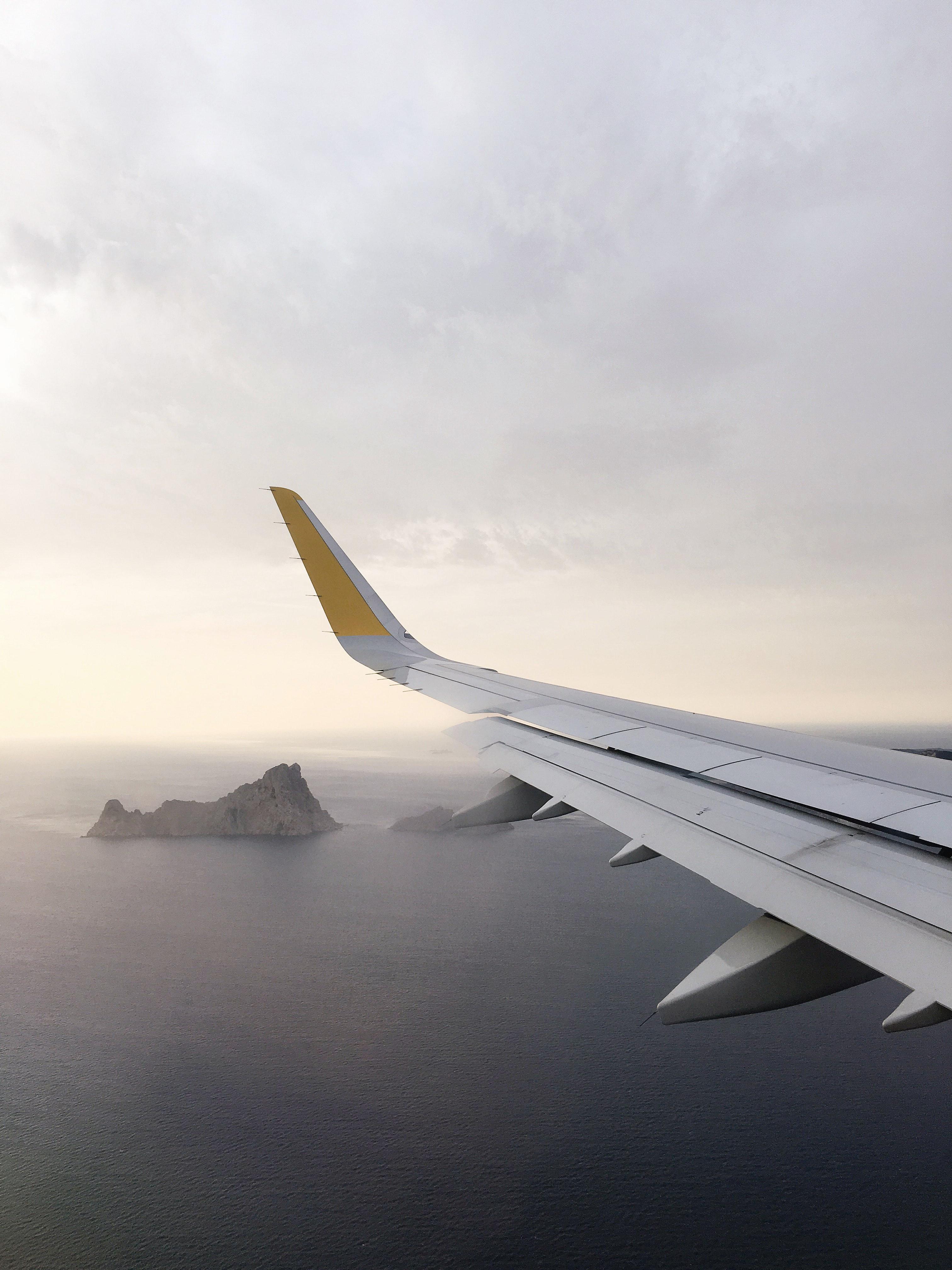

CHARTER DIRECTORY < 20 pax > 20 pax Biz-Jets V.I.P Long-Range Freight Helicopter Special Events Safari Charters Contracts Aircraft Sales Surveys Maintenance Aerial Photography Aircraft Leasing Security Based (armed) Line Inspections Lodge Transfers Export Docs & Clearing Hangarage Dangerous Goods NAME OF CHARTER CODE TEL NO FAX NO BRAKPAN FABB Titanium Air (011) 914 5810 083 292 0978 j j j j j CAPE TOWN ExecuJet South Africa (021) 934 5764 934 2087 j j j j j j j j j j j j j j j j Streamline Air Charter (011) 395 1195/8 j j j j j j j j DURBAN KZN Aviation (031) 564 6215 564 6222 j j j j j j j j j j j GRAND CENTRAL Pambele Aviation (011) 805-0652/82 805-0649 Dreams Treasury | Working Capital | Asset Management | Wealth
GRAND CENTRAL AIRPORT
KRUGERSDORP
LANSERIA
AIRPORT
ExecuJet South Africa (011) 516 2300 011 659 1071
CAPE WINELANDS AIRPORT
44 FlightCom: December 2022 Fixed Wing Helicopter Avionics Piston Engines Turbine Engines Propellers Weight / Balance Paint Interior Sheet Metal Rebuilds Overhauls Electrics NDT Testing Refurbishments Structural Repairs Inspections NTCA Aircraft Seat Belts Instruments
OF AMO CODE TEL NO FAX NO
NAME
j j j j j j j j
j j j j j j j j j j j j j j j
j j j j j j j j j j j j j j j j j j j j
CAPE TOWN Cape Aircraft Interiors (021) 934 9499 934 2022
ExecuJet South Africa (021) 934 5764 934 2087
Placo (079) 674 8351 076 901 6780
j j j j j j j j j j
j j j j j j j j j j
DURBAN BAC Aviation (035) 797 3610 797 5341
Greystones Aviation Components (031) 569 2614 569 2630
Electrical
j
j j j j j j j j j j j j j j j j j
Astwood Aircraft
(011) 315 9605 315 0094
Superior Rotorworx (076) 595 2120
j j j j j j j j j j j
Skyworx Aviation (082) 346 0150 086 697 9096
j j
j j j j
j j j j j
j
j j j j j j j j j j j j j j The Propeller Shop
j Tynay Aviation
j j j j j j j j
Diepkloof Aircraft Maintenance
j j j j j j j j j j j j NELSPRUIT Aircraft Maintenance International
0415 j j j j j j j j j j j j j Leading Edge Helicopters cc (013) 741 5582 741 8188 j j j j j j NEW TEMPE BLOEMFONTEIN Ferreira Aviation (051) 451 1682 451 1683 j j j j j j j j j j j Flightdeck Instrument Systems (073) 513 3205 j j Westline Aircraft Maintenance (051) 451 1717 451 1641 j j j j j j j j OR TAMBO INTERNATIONAL AIRPORT Aves Technics (011) 568 7677 j j j j j j j j j j j j j j Nevergreen Aircraft Industries (010) 003 3747 manager@nevergreen.co.za j j j Star Air Maintenance (011) 395 2201 973 4761 j j j j j j j j j PORT ALFRED 43 Air School (046) 604 3686 j j j j j j j j j j j j j j j j j j RAND AIRPORT1 AMKA Aviation Pty (Ltd) (084) 710 0864 j j Aerospace Electroplating (011) 827 7535 827 9896 j j j j j j j j Aviation Rebuilders CC (011) 827 2491 lyn@aviationrebuilders.com j j j j j Clifton Electronics (011) 383 2024 086 689 5645 j j j Dynamic Propellers (082) 445 4496 086 548 2651 j j AMO LISTING j SPONSORED BY Aves Technics - Qualified in Aircraft Maintenance, Airworthiness Management, Project Management, Quality and Safety Management.
j j
j j
Gem Air (082) 905 5760 011 701 2653 j j j j j j Integrated Avionic Solutions (082) 831 5032 012 567 7320 j j j Lanseria Aircraft Interiors (011) 659 1962 j j j j j j Plane Maintenance Facility (011) 659 2204 pmf@myconnection.co.za
j j j j j j j j j j j j SkySource International SA (011) 900 4300
(011) 701 3114 086 543 7988
(082) 088 6663 011 659 1157/8
(083) 454 6366
(013) 741 8221 082 787
RAND AIRPORT CONTINUED
Emperor Aviation (082) 497 1701
FLYONICS (Pty) Ltd (082) 686 2374 michael@flyonics.co.za
Heli-Afrique cc (011) 827 8632 086 503 1870
Placo (Pty) Ltd (011) 827 9301 827 3801
RICHARDS BAY
Alton Aero Engineering (035) 786 0146/7 786 0145

SPRINGS AIRFIELD
Legair Maintenance (083) 736 3969 086 508 6010
WONDERBOOM AIRPORT - PRETORIA
Aerocore (012) 110 4033 082 565 2330
Aircraft Maintenance @ Work Pty Ltd (012) 567 3443
Adventure Air (012) 543 3196 543 2323
Aerotric (087) 802 1347 aerotric@aol.com
Aero Engineering & Powerplant (012) 543 0948 543 9447
AviSys Aviation Systems (083) 442 5884 086 618 6996
APCO Pty Ltd (012) 543 0775 567 3630
AVIA Instruments (082) 464 7130 086 602 6171
Breytech Aviation cc (012) 567 3500 086 643 0122
FlightCom: December 2022
OF AMO CODE TEL NO FAX NO Fixed Wing Helicopter Avionics Piston Engines Turbine Engines Propellers Weight / Balance Paint Interior Sheet Metal Rebuilds Overhauls Electrics NDT Testing Refurbishments Structural Repairs Inspections NTCA Aircraft Seat Belts Instruments Composite Manufacturing
NAME
j j j j j j j j j j j j j j j
j j j
j j j j j j j j j j
j j j j j j j j j j j j j j j j j j j
j j j j j j j j j j j
j j j j j j j j j j j j j j j j j
j j j
j j j j j j j
j j j j j
j j j j j
j j
j j j j j
j j j
j j j j j j
j j j j j j j j j j j j j j NIGERIA - MURTALA MUHAMMED INTERNATIONAL AIRPORT ExecuJet Aviation Nigeria Ltd +2341 295 5110 j j j j j j j j j j j j JOHANNESBURG F Gomes Upholsters (011) 614 2471 614 9806 j j j j j PRETORIA Comporob CC (012) 940 4447 086 502 3689 j j j j j j M&N Acoustics Services Pty (Ltd) (012) 689 2007 086 211 469 j j j j j j j j j j j Our capabilities are: B737 Classic / B737- New Generation / Embraer 135/145/170/190 Airbus A320 family www.avesholding.com D3 Building Denel Aviation Campus 3-5 Atlas Road Bonaero Park 1619 We are qualified in Aircraft Maintenance, Airworthiness Management, Project Management, Quality and Safety Management. Aves Technics AMO 1541 2021 SPONSORED BY: 2022 AMO LISTING
BACKPAGE DIR ECT ORY
A1A Flight Examiner (Loutzavia)
Jannie Loutzis 012 567 6775 / 082 416 4069 jannie@loutzavia.co.za www.loutzavia.co.za
Adventure Air Lande Milne 012 543 3196 / Cell: 066 4727 848 l.milne@venture-sa.co.za www.ventureglobal.biz
AES (Cape Town) Erwin Erasmus 082 494 3722 erwin@aeroelectrical.co.za www.aeroelectrical.co.za
AES (Johannesburg)
Danie van Wyk 011 701 3200 office@aeroelectrical.co.za www.aeroelectrical.co.za
Aerocore Jacques Podde 082 565 2330 jacques@aerocore.co.za www.aerocore.co.za
Aero Engineering & PowerPlant Andre Labuschagne 012 543 0948 aeroeng@iafrica.com
Aero Services (Pty) Ltd Chris Scott 011 395 3587 chris@aeroservices.co.za www.aeroservices.co.za
Aeronav Academy Donald O’Connor 011 701 3862 info@aeronav.co.za www.aeronav.co.za
Aeronautical Aviation Clinton Carroll 011 659 1033 / 083 459 6279 clinton@aeronautical.co.za www.aeronautical.co.za
Aerotric (Pty) Ltd Richard Small 083 488 4535 aerotric@aol.com
Aircraft Assembly and Upholstery Centre Tony/Siggi Bailes 082 552 6467 anthony@rvaircraft.co.za www.rvaircraft.co.za
Aircraft Finance Corporation & Leasing Jaco Pietersen +27 [0]82 672 2262 jaco@airfincorp.co.za Jason Seymour +27 [0]82 326 0147 jason@airfincorp.co.za www.airfincorp.co.za
Aircraft General Spares Eric or Hayley 084 587 6414 or 067 154 2147 eric@acgs.co.za or hayley@acgs.co.za www.acgs.co.za
Aircraft Maintenance @ Work Opelo / Frik 012 567 3443 frik@aviationatwork.co.za_ opelonke@aviationatwork.co.za
Aircraft Maintenance International Pine Pienaar 083 305 0605 gm@aminternational.co.za
Aircraft Maintenance International Wonderboom Thomas Nel 082 444 7996 admin@aminternational.co.za
Air Line Pilots’ Association Sonia Ferreira 011 394 5310 alpagm@iafrica.com www.alpa.co.za
Airshift Aircraft Sales Eugene du Plessis 082 800 3094 eugene@airshift.co.za www.airshift.co.za
Airvan Africa Patrick Hanly 082 565 8864 airvan@border.co.za www.airvan.co.za
Algoa Flying Club Sharon Mugridge 041 581 3274 info@algoafc.co.za www.algoafc.co.za
Alpi Aviation SA Dale De Klerk 082 556 3592 dale@alpiaviation.co.za www.alpiaviation.co.za
Apco (Ptyd) Ltd Tony/Henk + 27 12 543 0775 apcosupport@mweb.co.za www.apcosa.co.za
Aref Avionics Hannes Roodt 082 462 2724 arefavionics@border.co.za
Atlas Aviation Lubricants Steve Cloete 011 917 4220 Fax: 011 917 2100 sales.aviation@atlasoil.co.za www.atlasaviation.co.za
ATNS Percy Morokane 011 607 1234 percymo@atns.co.za www.atns.com
Aviation Direct Andrea Antel 011 465 2669 info@aviationdirect.co.za www.aviationdirect.co.za
BAC Aviation AMO 115 Micky Joss 035 797 3610 monicad@bacmaintenance.co.za
Blackhawk Africa Cisca de Lange 083 514 8532 cisca@blackhawk.aero www.blackhawk.aero
Blue Chip Flight School Henk Kraaij 012 543 3050 bluechip@bluechip-avia.co.za www.bluechipflightschool.co.za
Border Aviation Club & Flight School Liz Gous 043 736 6181 admin@borderaviation.co.za www.borderaviation.co.za
Breytech Aviation cc 012 567 3139 Willie Breytenbach admin@breytech.co.za
Bundu Aviation Phillip Cronje 083 485 2427 info@bunduaviation.co.za www.bunduaviation.co.za
Celeste Sani Pak & Inflight Products
Steve Harris 011 452 2456 admin@chemline.co.za www.chemline.co.za
Cape Aircraft Interiors Sarel Schutte 021 934 9499 michael@wcaeromarine.co.za www.zscai.co.za
Cape Town Flying Club Beverley Combrink 021 934 0257 / 082 821 9013 info@capetownflyingclub.co.za www.@capetownflyingclub.co.za
Century Avionics cc Carin van Zyl 011 701 3244 sales@centuryavionics.co.za www.centuryavionics.co.za
Chemetall Wayne Claassens 011 914 2500 wayne.claassens@basf.com www.chemetall.com
Chem-Line Aviation & Celeste Products Steve Harris 011 452 2456 sales@chemline.co.za www.chemline.co.za
Comporob Composite Repair & Manufacture Felix Robertson 072 940 4447 083 265 3602 comporob@lantic.net www.comporob.co.za
Corporate-Aviators/Affordable Jet Sales Mike Helm 082 442 6239 corporate-aviators@iafrica.com www.corporate-aviators.com
C. W. Price & Co Kelvin L. Price 011 805 4720 cwp@cwprice.co.za www.cwprice.co.za
Dart Aeronautical Jaco Kelly 011 827 8204 dartaero@mweb.co.za
Dart Aircraft Electrical Mathew Joubert 011 827 0371 Dartaircraftelectrical@gmail.com www.dartaero.co.za
DJA Aviation Insurance 011 463 5550 0800Flying mail@dja-aviation.co.za www.dja-aviation.co.za
Dynamic Propellers Andries Visser 011 824 5057 082 445 4496 andries@dynamicpropeller.co.za www.dynamicpropellers.co.za
Eagle Aviation Helicopter Division Tamryn van Staden 082 657 6414 tamryn@eaglehelicopter.co.za www.eaglehelicopter.co.za
Eagle Flight Academy Mr D. J. Lubbe 082 557 6429 training@eagleflight.co.za www.eagleflight.co.za
Elite Aviation Academy Jacques Podde 082 565 2330 info@eliteaa.co.za www.eliteaa.co.za
Enstrom/MD Helicopters Andrew Widdall 011 397 6260 aerosa@safomar.co.za www.safomar.co.za
Era Flug Flight Training Pierre Le Riche 021 934 7431 info@era-flug.com www.era-flug.com
Execujet Africa 011 516 2300 enquiries@execujet.co.za www.execujet.com
Federal Air Rachel Muir 011 395 9000 shuttle@fedair.com www.fedair.com
Ferry Flights int.inc. Michael (Mick) Schittenhelm 082 442 6239 ferryflights@ferry-flights.com www.ferry-flights.com
Fireblade Aviation 010 595 3920 info@firebladeaviation.com www.firebladeaviation.com
Flight Training College Cornell Morton 044 876 9055 ftc@flighttrainning.co.za www.flighttraining.co.za
Flight Training Services
Amanda Pearce 011 805 9015/6 amanda@fts.co.za www.fts.co.za
Fly Jetstream Aviation Henk Kraaij 083 279 7853 charter@flyjetstream.co.za www.flyjetstream.co.za
Flying Frontiers Craig Lang 082 459 0760
CraigL@fairfield.co.za www.flyingfrontiers.com
Flying Unlimited Flight School (Pty) Ltd Riaan Struwig 082 653 7504 / 086 770 8376 riaan@ppg.co.za www.ppg.co.za
Foster Aero International Dudley Foster 011 659 2533 info@fosteraero.co.za www.fosteraero.co.za
Gemair Andries Venter 011 701 2653 / 082 905 5760 andries@gemair.co.za
GIB Aviation Insurance Brokers Richard Turner 011 483 1212 aviation@gib.co.za www.gib.co.za
Guardian Air 011 701 3011 082 521 2394 ops@guardianair.co.za www.guardianair.co.za
Heli-Afrique cc Tino Conceicao 083 458 2172 tino.conceicao@heli-afrique.co.za
Henley Air Andre Coetzee 011 827 5503 andre@henleyair.co.za www.henleyair.co.za
Hover Dynamics Phillip Cope 074 231 2964 info@hover.co.za www.hover.co.za
Indigo Helicopters Gerhard Kleynhans 082 927 4031 / 086 528 4234 veroeschka@indigohelicopters.co.za www.indigohelicopters.co.za
IndigoSat South Africa - Aircraft Tracking Gareth Willers 08600 22 121 sales@indigosat.co.za www.indigosat.co.za
Integrated Avionic Solutions Gert van Niekerk 082 831 5032 gert@iasafrica.co.za www.iasafrica.co.za
International Flight Clearances Steve Wright 076 983 1089 (24 Hrs) flightops@flyifc.co.za www.flyifc.co.za
Investment Aircraft Quinton Warne 082 806 5193 aviation@lantic.net www.investmentaircraft.com
Jabiru Aircraft Len Alford 044 876 9991 / 044 876 9993 info@jabiru.co.za www.jabiru.co.za
Jim Davis Books Jim Davis 072 188 6484 jim@border.co.za www.jimdavis.co.za
Joc Air T/A The Propeller Shop Aiden O’Mahony 011 701 3114 jocprop@iafrica.com
Kishugu Aviation +27 13 741 6400 comms@kishugu.com www.kishugu.com/kishugu-aviation
46 FlightCom: December 2022
Kit Planes for Africa
Stefan Coetzee 013 793 7013 info@saplanes.co.za www.saplanes.co.za
Kzn Aviation (Pty) Ltd Melanie Jordaan 031 564 6215 mel@kznaviation.co.za www.kznaviation.co.za
Lanseria Aircraft Interiors
Francois Denton 011 659 1962 / 076 810 9751 francois@aircraftcompletions.co.za
Lanseria International Airport Mike Christoph 011 367 0300 mikec@lanseria.co.za www.lanseria.co.za
Legend Sky 083 860 5225 / 086 600 7285 info@legendssky.co.za www.legendsky.co.za
Litson & Associates (Pty) Ltd OGP, BARS, Resources Auditing & Aviation Training karen.litson@litson.co.za Phone: 27 (0) 21 8517187 www.litson.co.za
Litson & Associates Risk Management Services (Pty) Ltd. eSMS-S/eTENDER/ eREPORT/Advisory Serviceskaren.litson@litson.co.za Phone: 27 (0) 8517187 www.litson.co.za
Loutzavia Aircraft Sales Henry Miles 082 966 0911 henry@loutzavia.co.za www.loutzavia.co.za
Loutzavia Flight Training Gerhardt Botha 012 567 6775 ops@loutzavia.co.za www.loutzavia.co.za
Loutzavia-Pilots and Planes Maria Loutzis 012 567 6775 maria@loutzavia.co.za www.pilotsnplanes.co.za
Loutzavia Rand Frans Pretorius 011 824 3804 rand@loutzavia.co.za www@loutzavia.co.za
Lowveld Aero Club Pugs Steyn 013 741 3636 Flynow@lac.co.za Marshall Eagle Les Lebenon 011 958 1567 les@marshalleagle.co.za www.marshalleagle.co.za
Maverick Air Charters Chad Clark 083 292 2270 Charters@maverickair.co.za www.maverickair.co.za
MCC Aviation Pty Ltd
Claude Oberholzer 011 701 2332 info@flymcc.co.za www.flymcc.co.za
MH Aviation Services (Pty) Ltd Marc Pienaar 011 609 0123 / 082 940 5437 customerrelations@mhaviation.co.za www.mhaviation.co.za
M and N Acoustic Services cc Martin de Beer 012 689 2007/8 calservice@mweb.co.za
Metropolitan Aviation (Pty) Ltd Gert Mouton 082 458 3736 herenbus@gmail.com
Money Aviation Angus Money 083 263 2934 angus@moneyaviation.co.za www.moneyaviation.co.za
MS Aviation Gary Templeton 082 563 9639 gary.templeton@msaviation.co.za www.msaviation.co.za
North East Avionics Keith Robertson +27 13 741 2986 keith@northeastavionics.co.za deborah@northeastavionics.co.za www.northeastavionics.co.za
Orsmond Aviation 058 303 5261 info@orsmondaviation.co.za www.orsmondaviation.co.za
Owenair (Pty) Ltd Clive Skinner 082 923 9580 clive.skinner@owenair.co.za www.owenwair.co.za
Pacair Wayne Bond 033 386 6027 pacair@telkomsa.net
PFERD-South Africa (Pty) Ltd Hannes Nortman 011 230 4000 hannes.nortman@pferd.co.za www.pferd.com
Pipistrel Kobus Nel 083 231 4296 kobus@pipistrelsa.co.za www.pipistrelsa.co.za
Plane Maintenance Facility Johan 083 300 3619 pmf@myconnection.co.za
Precision Aviation Services Marnix Hulleman 012 543 0371 marnix@pasaviation.co.za www.pasaviation.co.za
PSG Aviation Reon Wiese 0861 284 284 reon.wiese@psg.co.za www.psg aviation.co.za
Rainbow SkyReach (Pty) Ltd Mike Gill 011 817 2298 Mike@fly-skyreach.com www.fly-skyreach.com
Rand Airport Stuart Coetzee 011 827 8884 stuart@randairport.co.za www.randairport.co.za
Robin Coss Aviation Robin Coss 021 934 7498 info@cossaviation.com www.cossaviation.co.za
SAA Technical (SOC) Ltd SAAT Marketing 011 978 9993 satmarketing@flysaa.com www.flysaa.com/technical
SABRE Aircraft Richard Stubbs 083 655 0355 richardstubbs@mweb.co.za www.aircraftafrica.co.za
SA Mooney Patrick Hanly 082 565 8864 samooney@border.co.za www.samooney.co.za
Savannah Helicopters De 082Jager 444 1138 / 044 873 3288 dejager@savannahhelicopters.co.za www.savannahhelicopters.co.za
Scenic Air Christa van Wyk +264 612 492 68 windhoek@scenic-air.com www.scenic-air.com
Sheltam Aviation Durban Susan Ryan 083 505 4882 susanryan@sheltam.com www.sheltamaviation.com
Sheltam Aviation PE Brendan Booker 082 497 6565 brendanb@sheltam.com www.sheltamaviation.com
Sky-Tech Heinz Van Staden 082 720 5210 sky-tech@telkomsa.net www.sky-tech.za.com
Sling Aircraft Kim Bell-Cross 011 948 9898 sales@airplanefactory.co.za www.airplanefactory.co.za
Solenta Aviation (Pty Ltd) Paul Hurst 011 707 4000 info@solenta.com www.solenta.com
Southern Energy Company (Pty) Ltd Elke Bertram +264 8114 29958 johnnym@sec.com.na www.sec.com.na
Southern Rotorcraft cc Mr Reg Denysschen Tel no: 0219350980 sasales@rotors-r-us.com www.rotors-r-us.com
Starlite Aero Sales Klara Fouché +27 83 324 8530 / +27 31 571 6600 klaraf@starliteaviation.com www.starliteaviation.com
Starlite Aviation Operations Trisha Andhee +27 82 660 3018/ +27 31 571 6600 trishaa@starliteaviation.com www.starliteaviation.com
Starlite Aviation Training Academy Durban: +27 31 571 6600 Mossel Bay: +27 44 692 0006 train@starliteaviation.com www.starliteaviation.com
Status Aviation (Pty) Ltd Richard Donian 074 587 5978 / 086 673 5266 info@statusaviation.co.za www.statusaviation.co.za
Superior Pilot Services Liana Jansen van 0118050605/2247Rensburg info@superiorair.co.za www.superiorair.co.za
The Copter Shop Bill Olmsted 082 454 8555 execheli@iafrica.com www.execheli.wixsite.com/the-coptershop-sa
Titan Helicopter Group 044 878 0453 info@titanhelicopters.com www.titanhelicopters.com TPSC Dennis Byrne 011 701 3210 turboprop@wol.co.za
Trio Helicopters & Aviation cc CR Botha or FJ Grobbelaar 011 659 1022 stoffel@trioavi.co.za/frans@trioavi.co.za www.trioavi.co.za
Tshukudu Trailers Pieter Visser 083 512 2342 deb@tshukudutrailers.co.za www.tshukudutrailers.co.za
U Fly Training Academy Nikola Puhaca 011 824 0680 ufly@telkomsa.net www.uflyacademy.co.za
United Charter cc Jonathan Wolpe 083 270 8886 jonathan.wolpe@unitedcharter.co.za www.unitedcharter.co.za
United Flight Support
Clinton Moodley/Jonathan Wolpe 076 813 7754 / 011 788 0813 ops@unitedflightsupported.com www.unitedflightsupport.com
Unique Air Charter
Nico Pienaar 082 444 7994 nico@uniqueair.co.za www.uniqueair.co.za
Unique Flight Academy
Nico Pienaar 082 444 7994 nico@uniqueair.co.za www.uniqueair.co.za
Van Zyl Aviation Services Colette van Zyl 012 997 6714 admin@vanzylaviationco.za www.vanzylaviation.co.za
Vector Aerospace Jeff Poirier +902 888 1808 jeff.poirier@vectoraerospace.com www.vectoraerospace.com
Velocity Aviation Collin Pearson 011 659 2306 / 011 659 2334 collin@velocityaviation.co.za www.velocityaviation.co.za
Villa San Giovanni Luca Maiorana 012 111 8888 info@vsg.co.za www.vsg.co.za
Vortx Aviation Bredell Roux 072 480 0359 info@vortx.co.za www.vortxaviation.com
Wanafly Adrian Barry 082 493 9101 adrian@wanafly.net www.wanafly.co.za
Windhoek Flight Training Centre Thinus Dreyer 0026 40 811284 180 pilots@flywftc.com www.flywftc.com
Wings n Things Wendy Thatcher 011 701 3209 wendy@wingsnthings.co.za www.wingsnthings.co.za
Witbank Flight School Andre De Villiers 083 604 1718 andredv@lantic.net www.waaflyingclub.co.za
Wonderboom Airport Peet van Rensburg 012 567 1188/9 peet@wonderboomairport.co.za www.wonderboomairport.co.za
Zandspruit Bush & Aero Estate Martin Den Dunnen 082 449 8895 martin@zandspruit.co.za www.zandspruit.co.za
Zebula Golf Estate & SPA Reservations 014 734 7700 reception@zebula.co.za www.zebula.co.za
FlightCom: December 2022 47



















































































































































































































































































































































